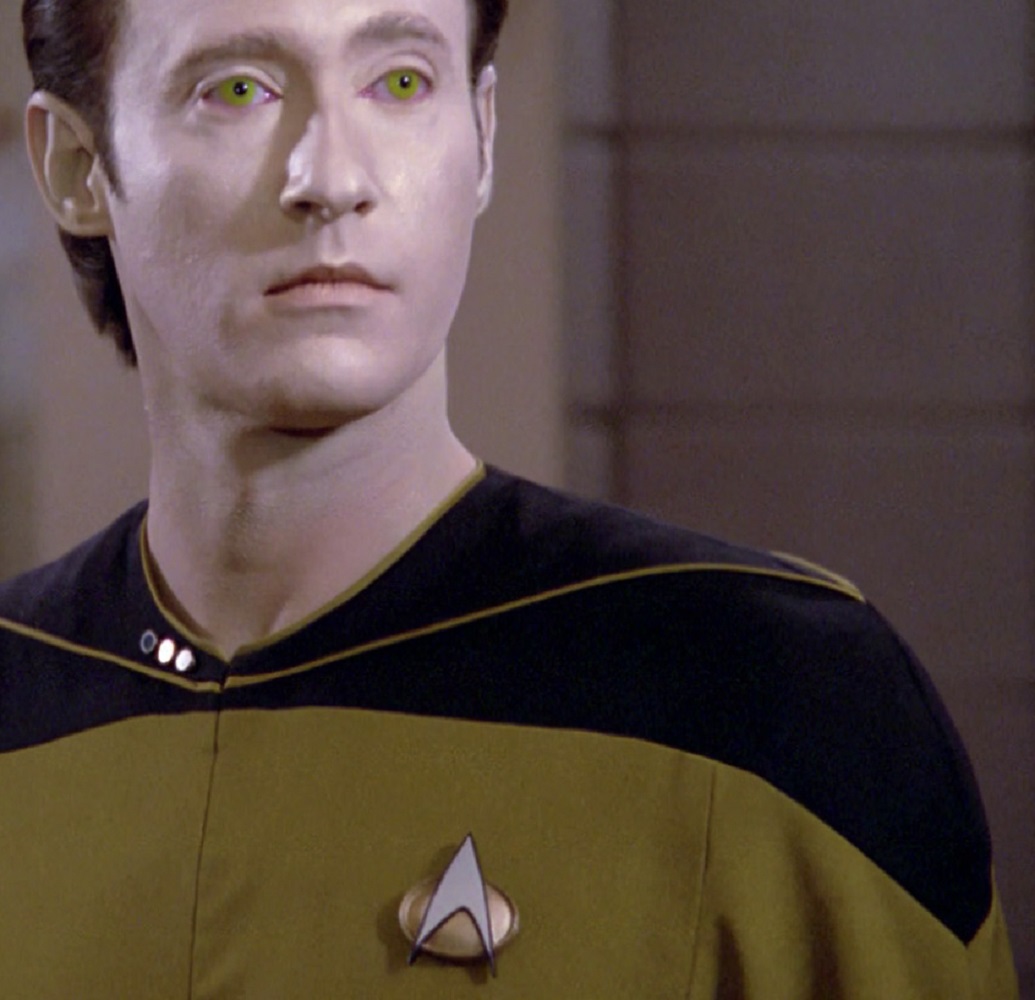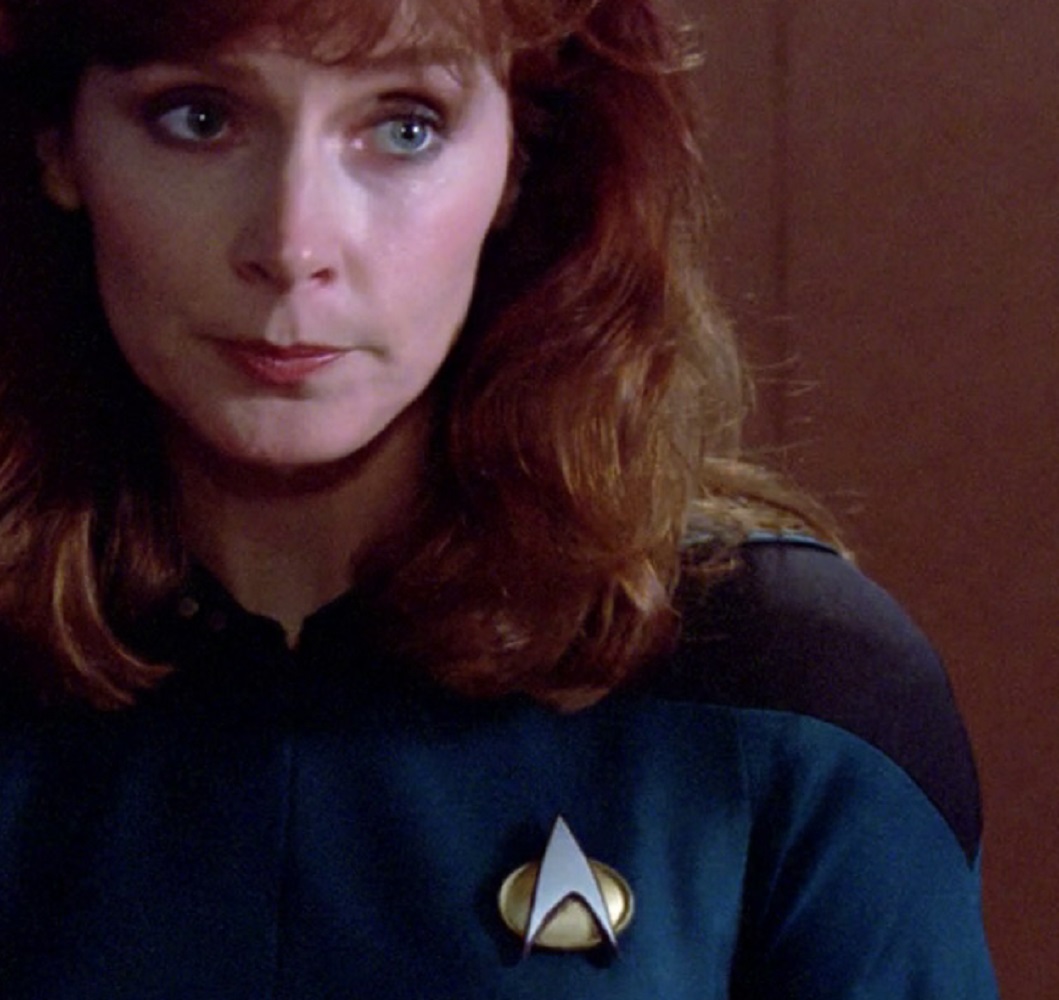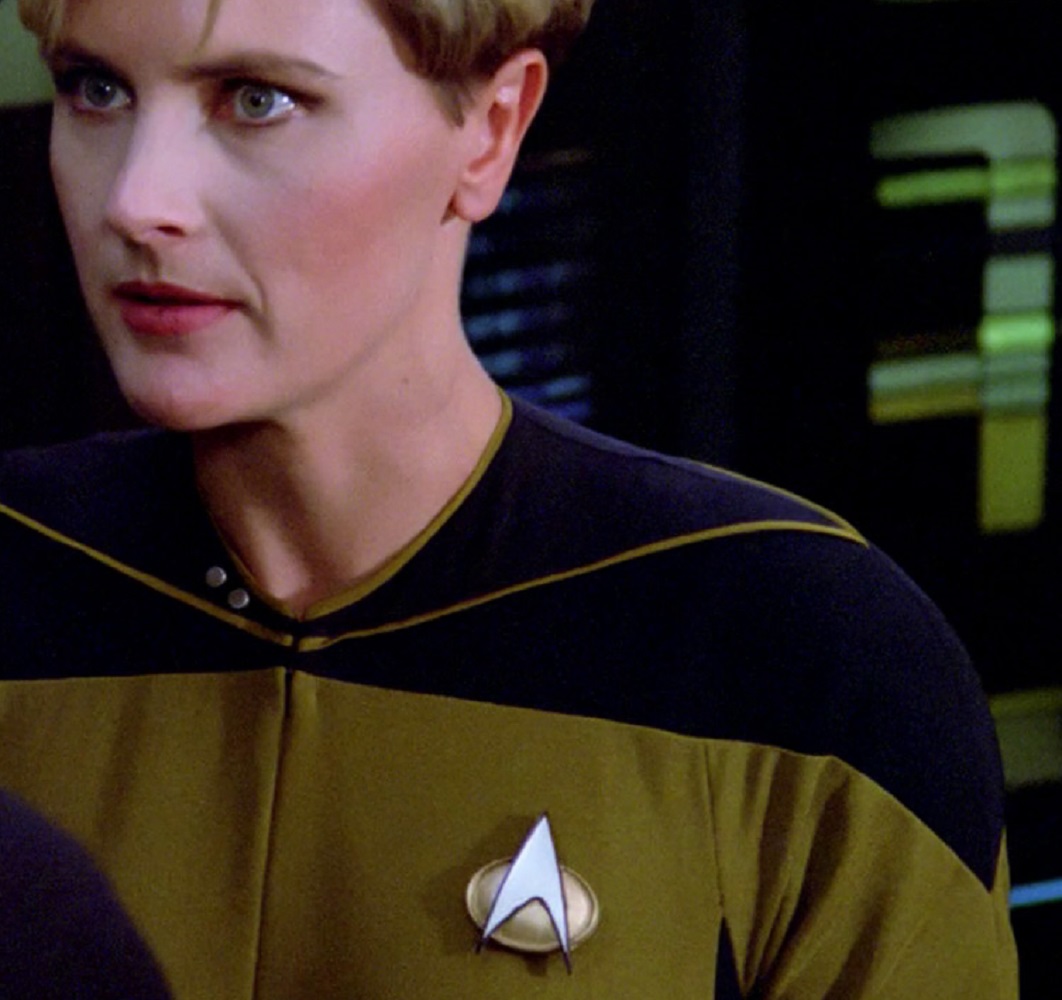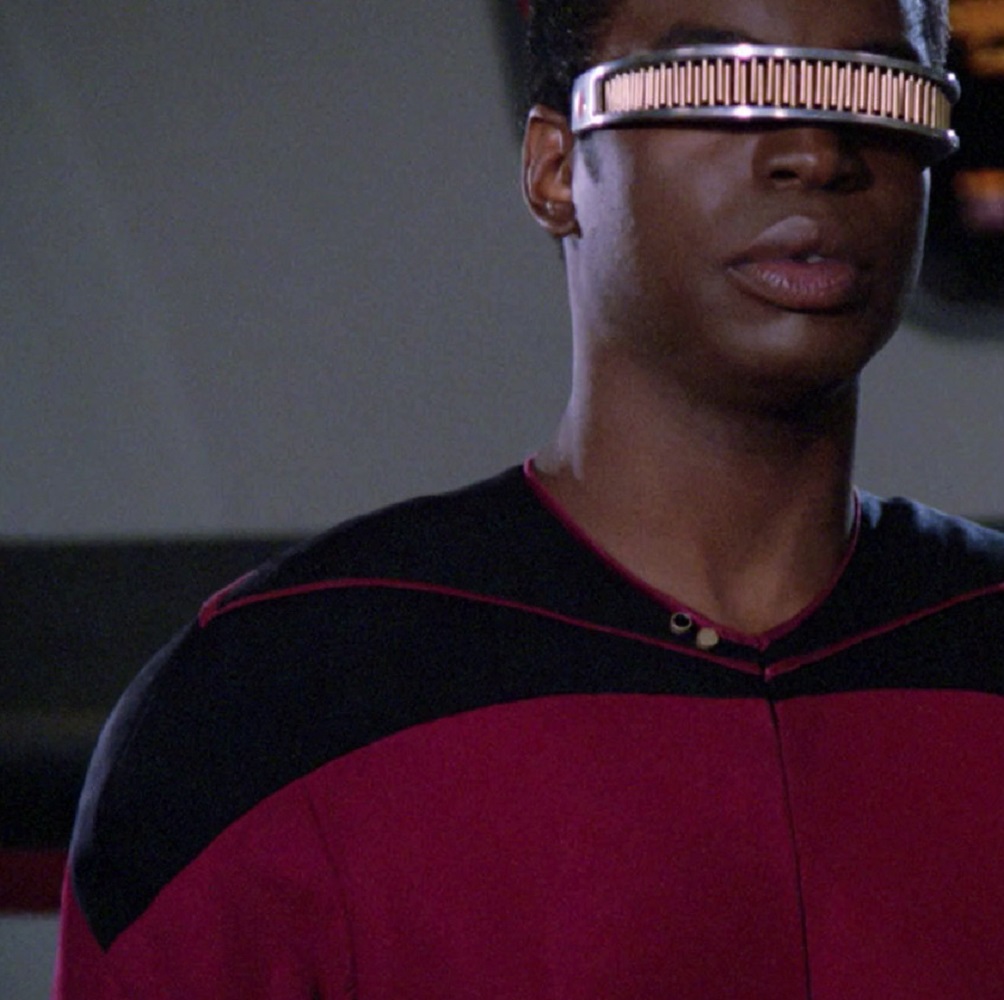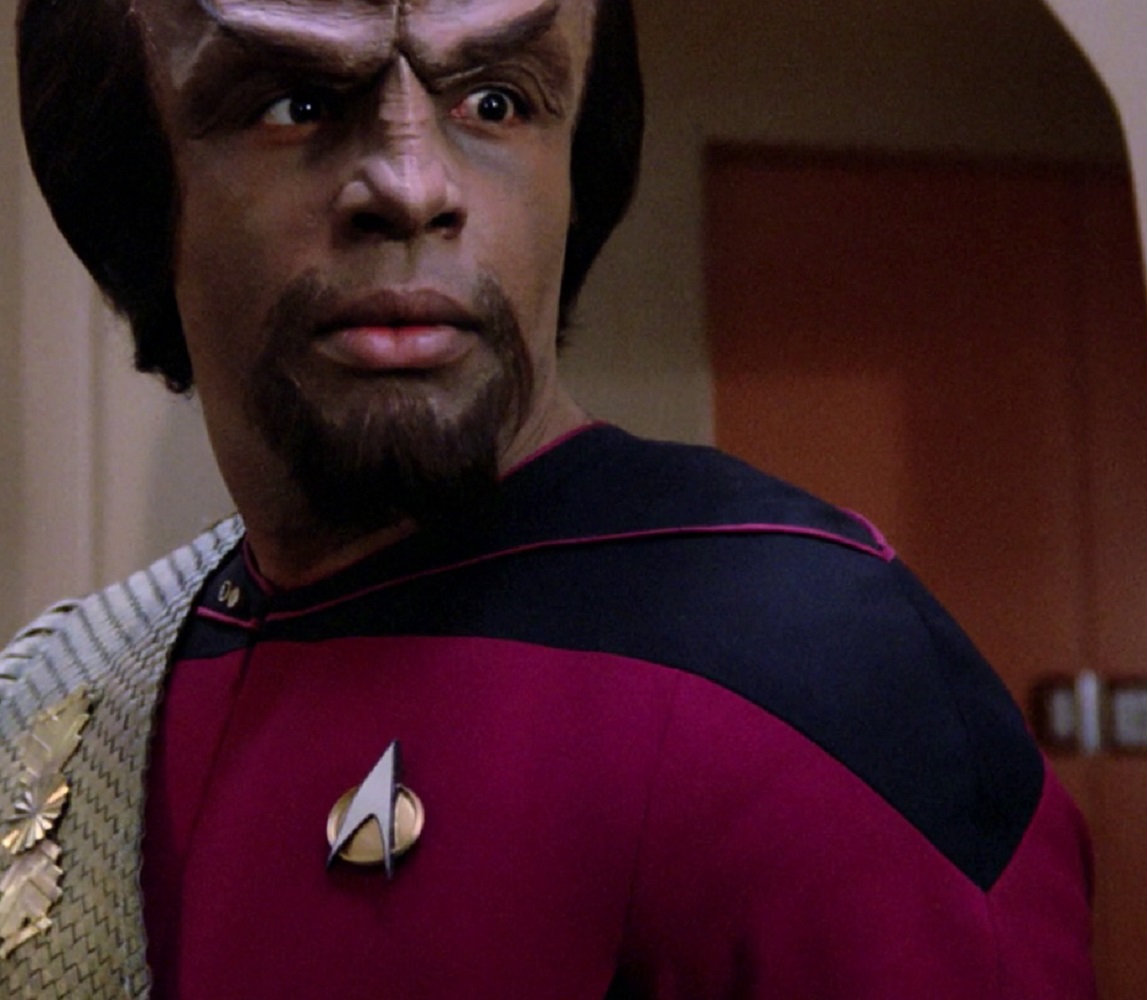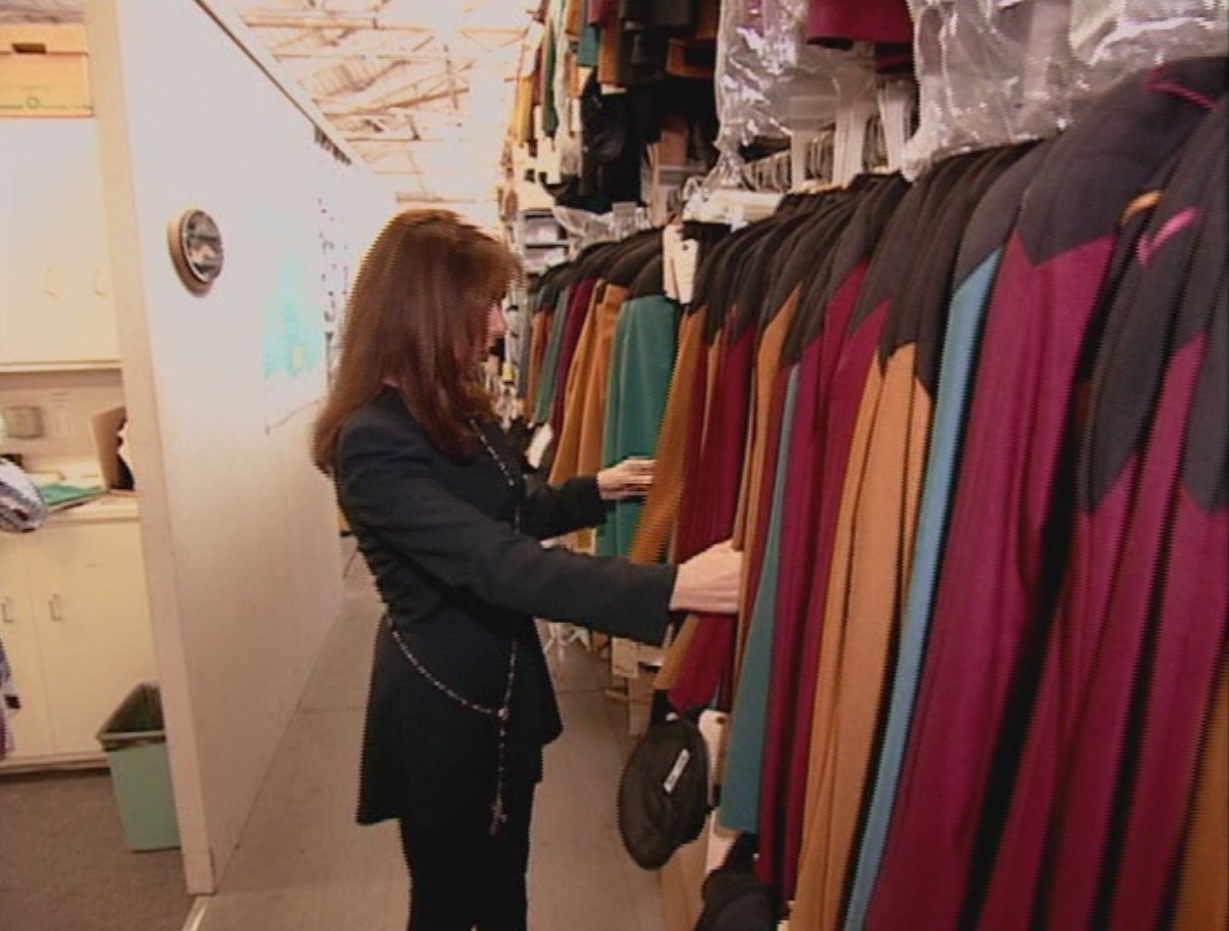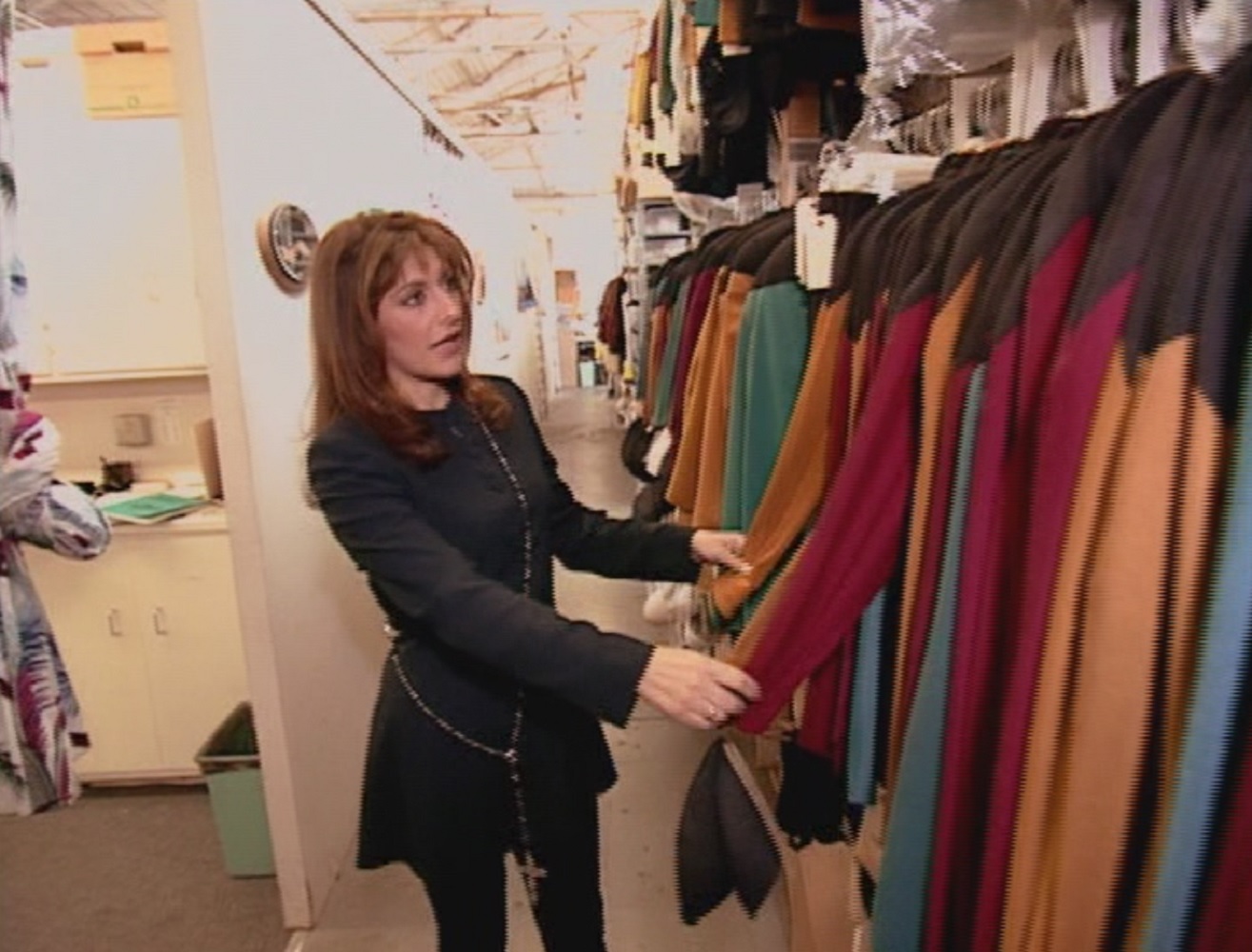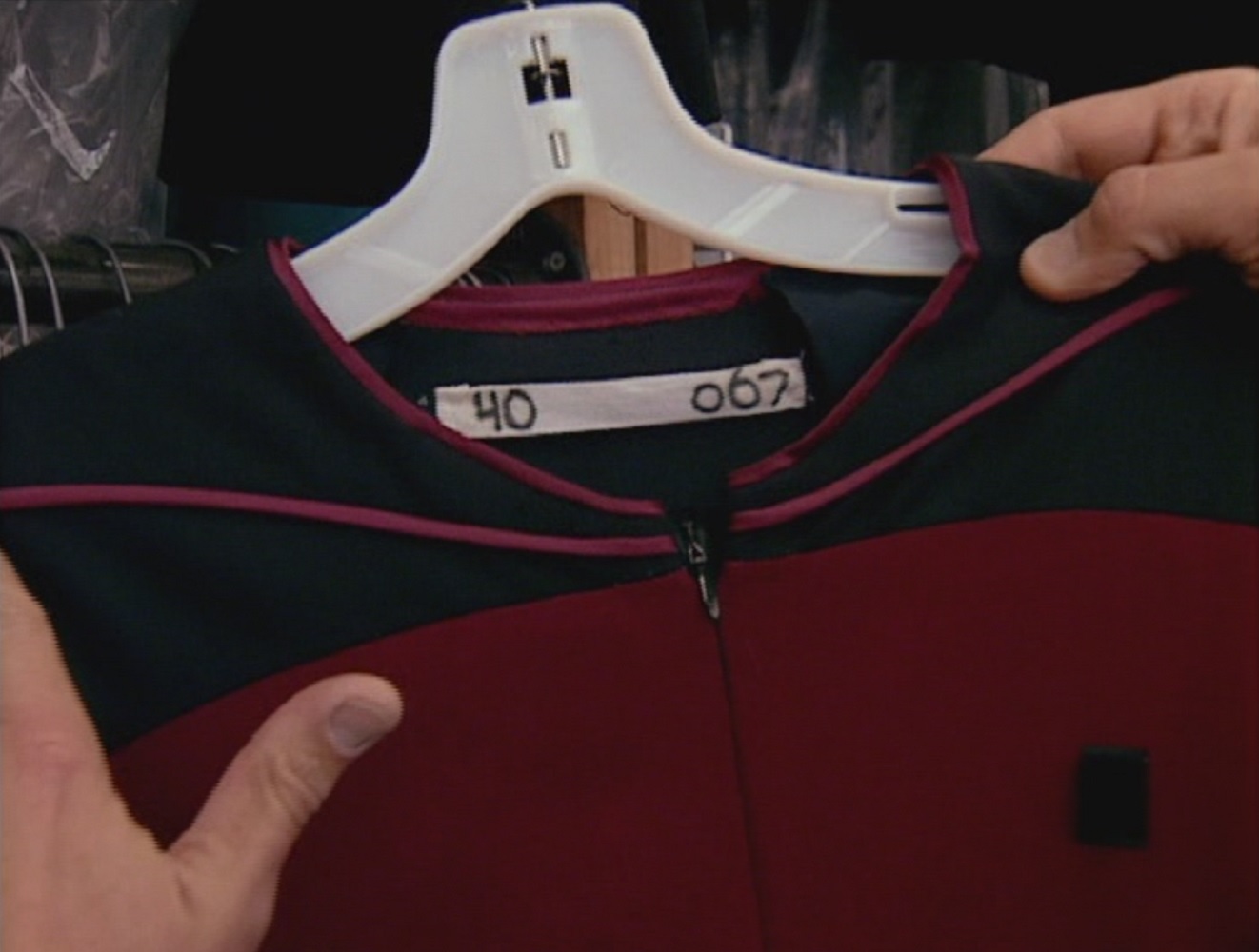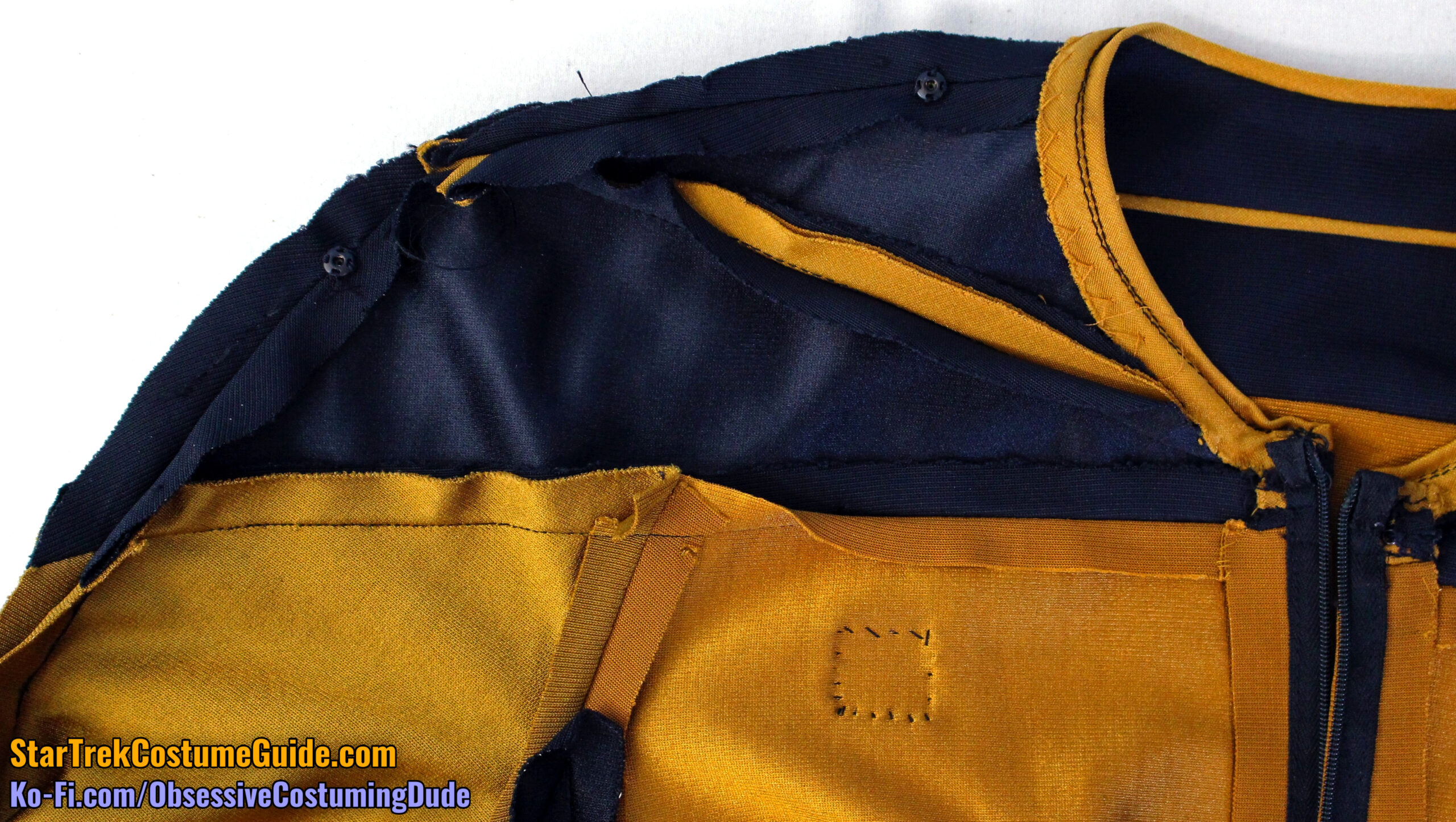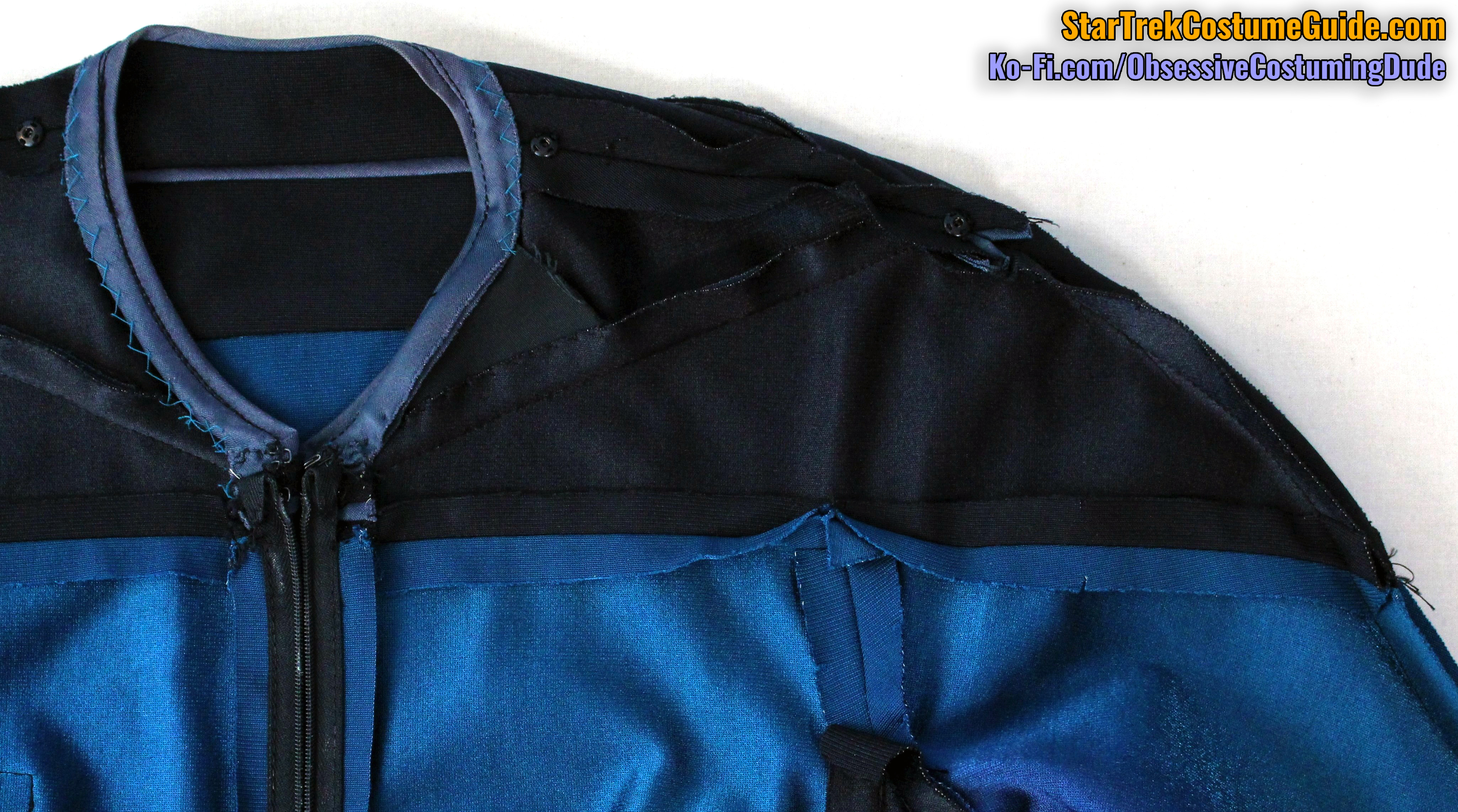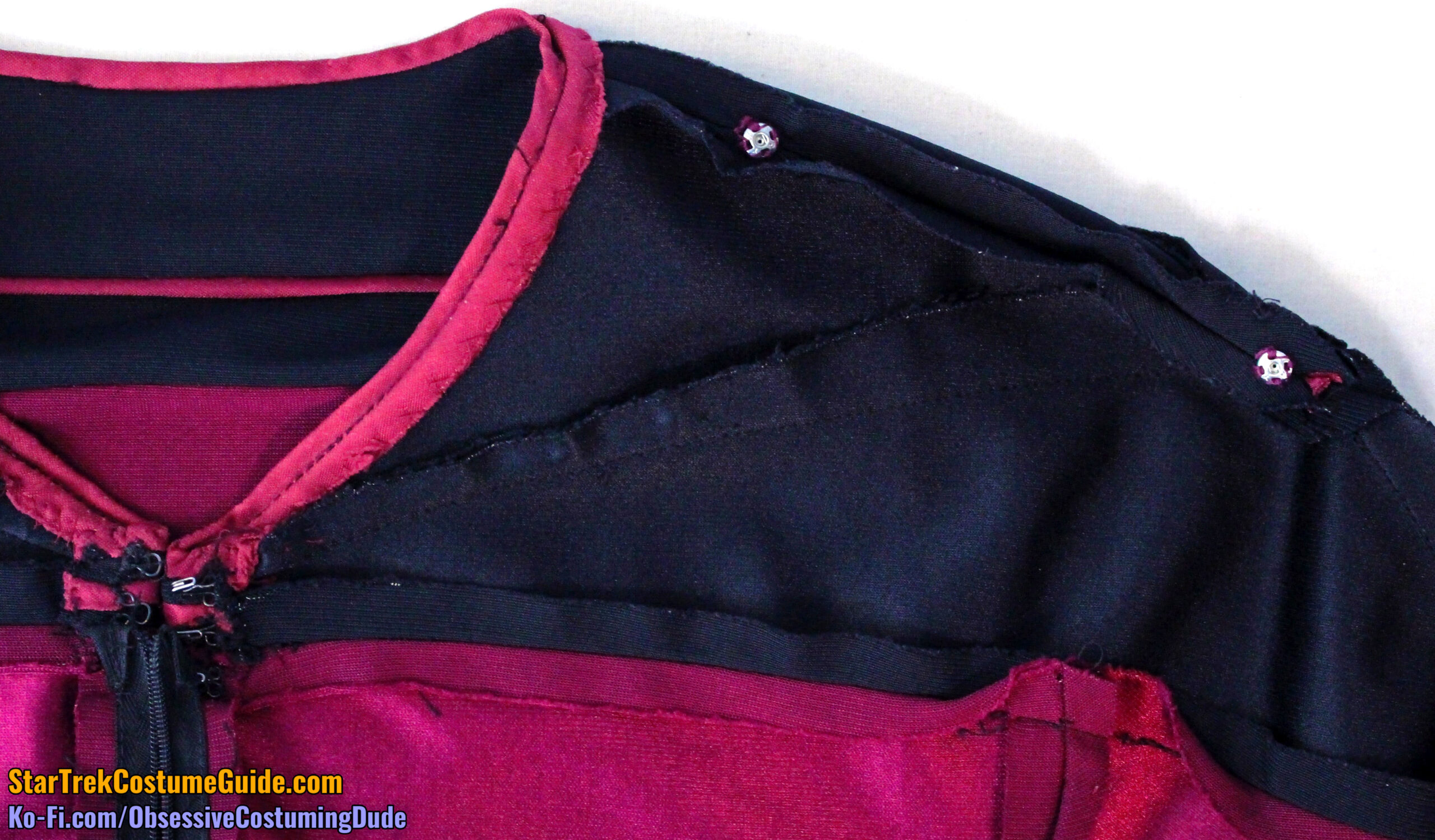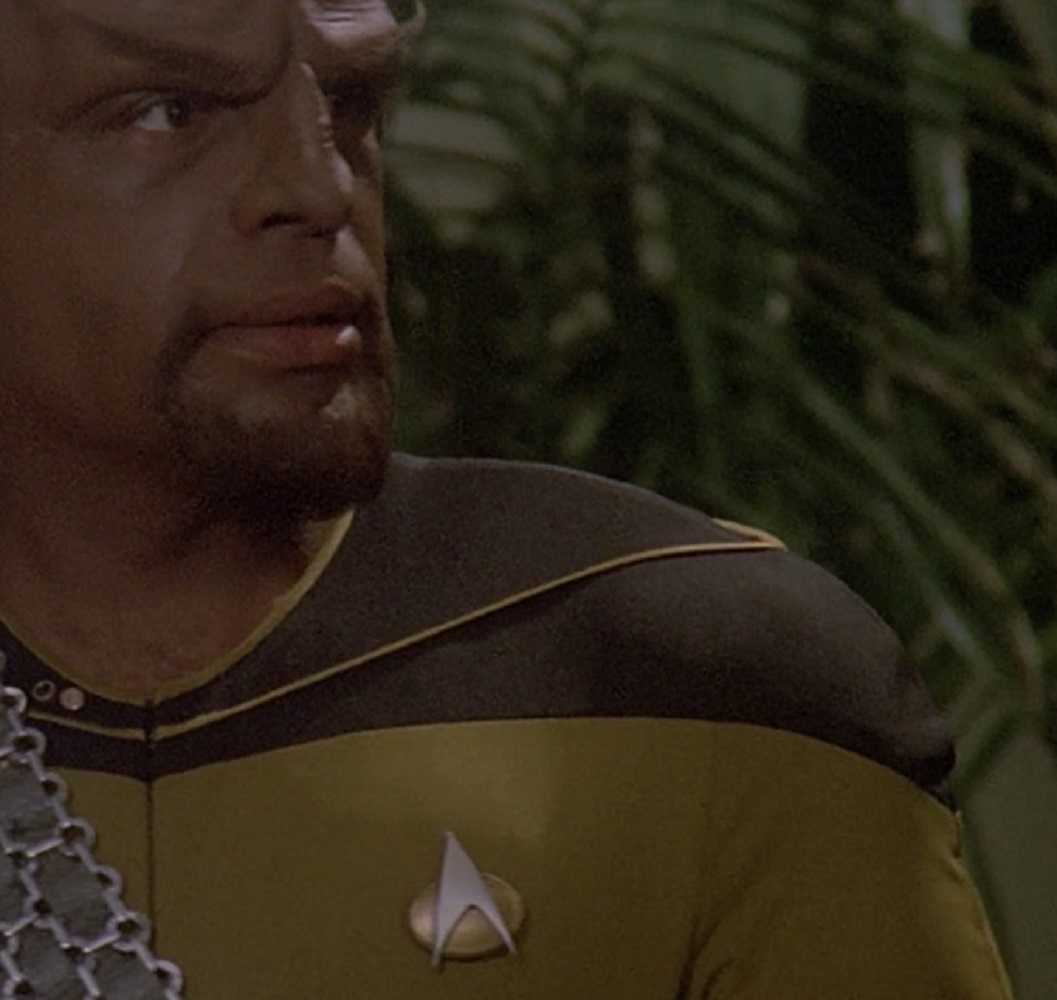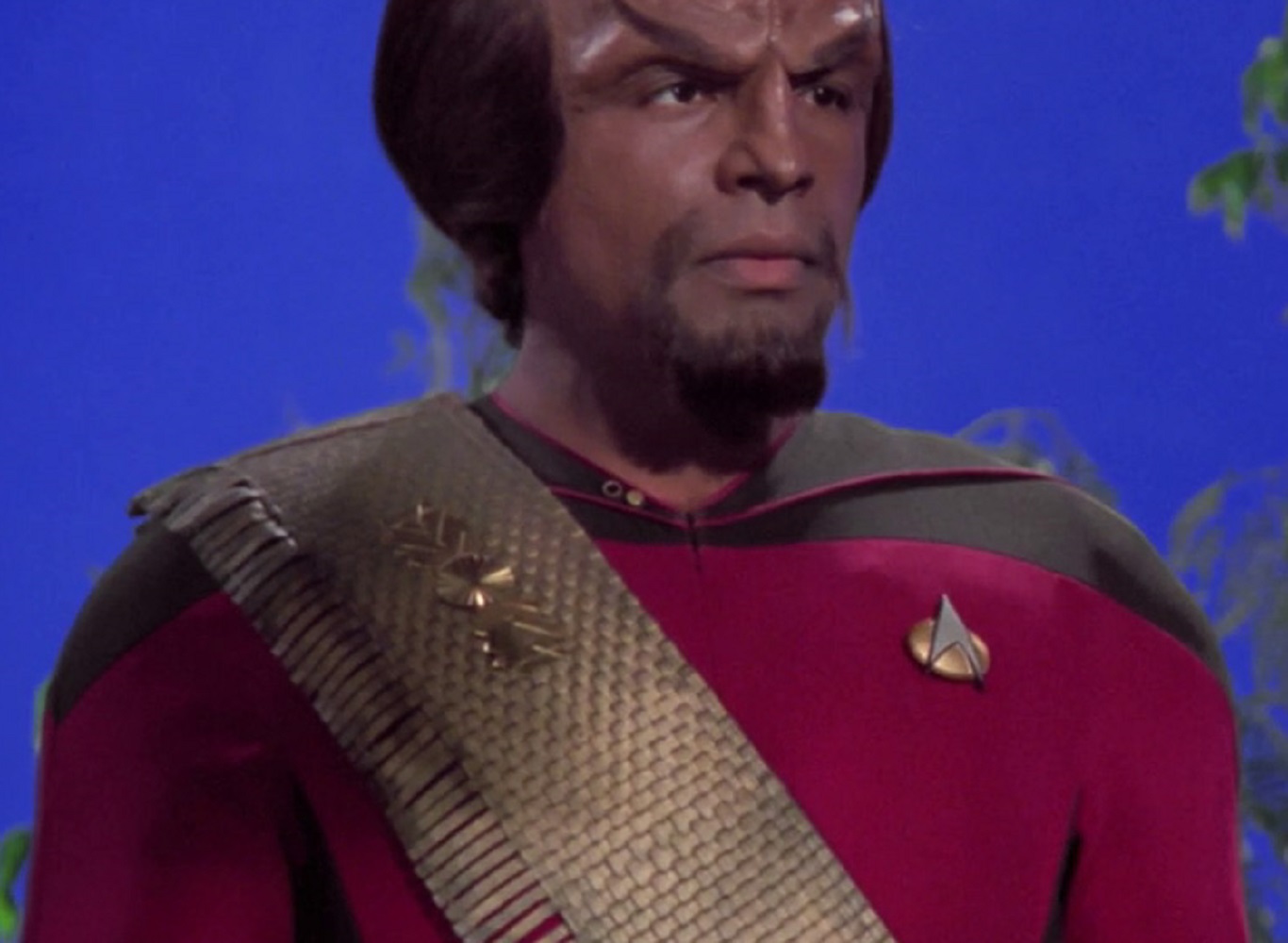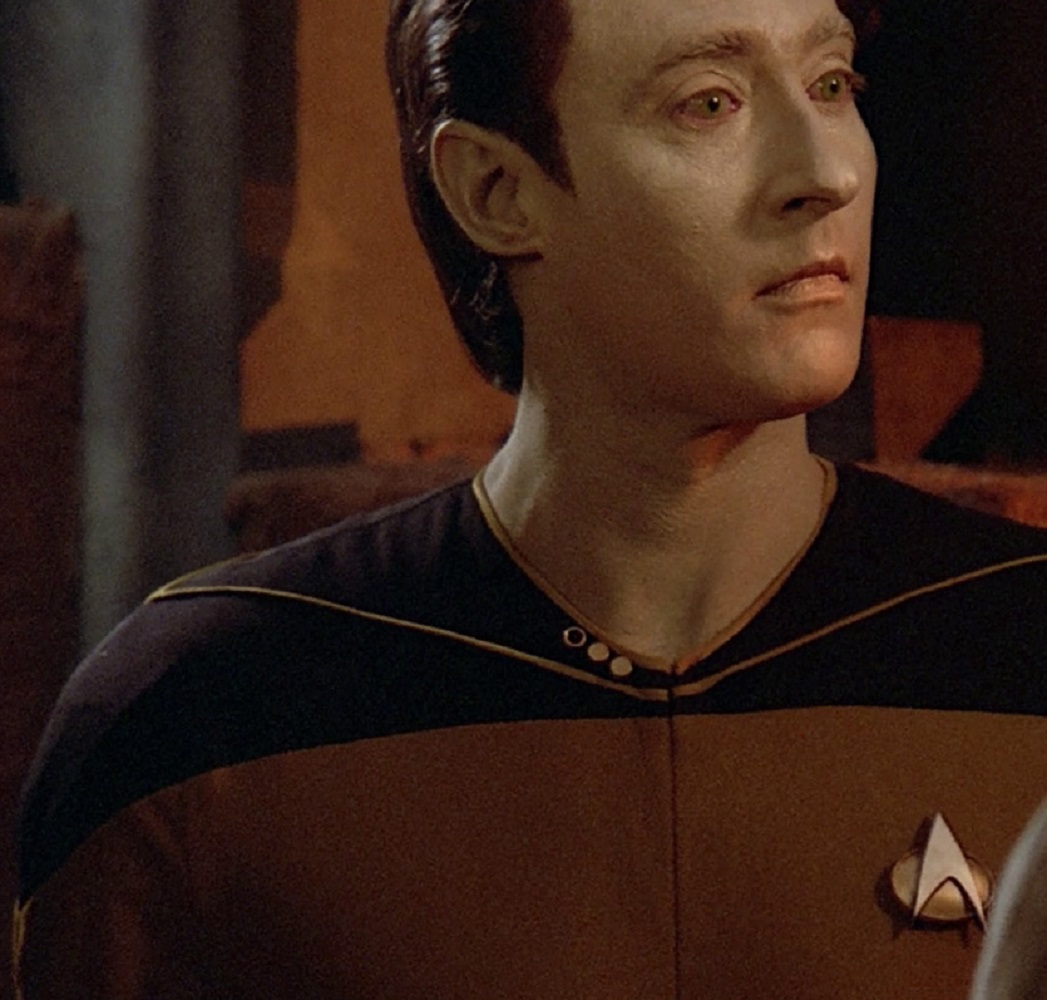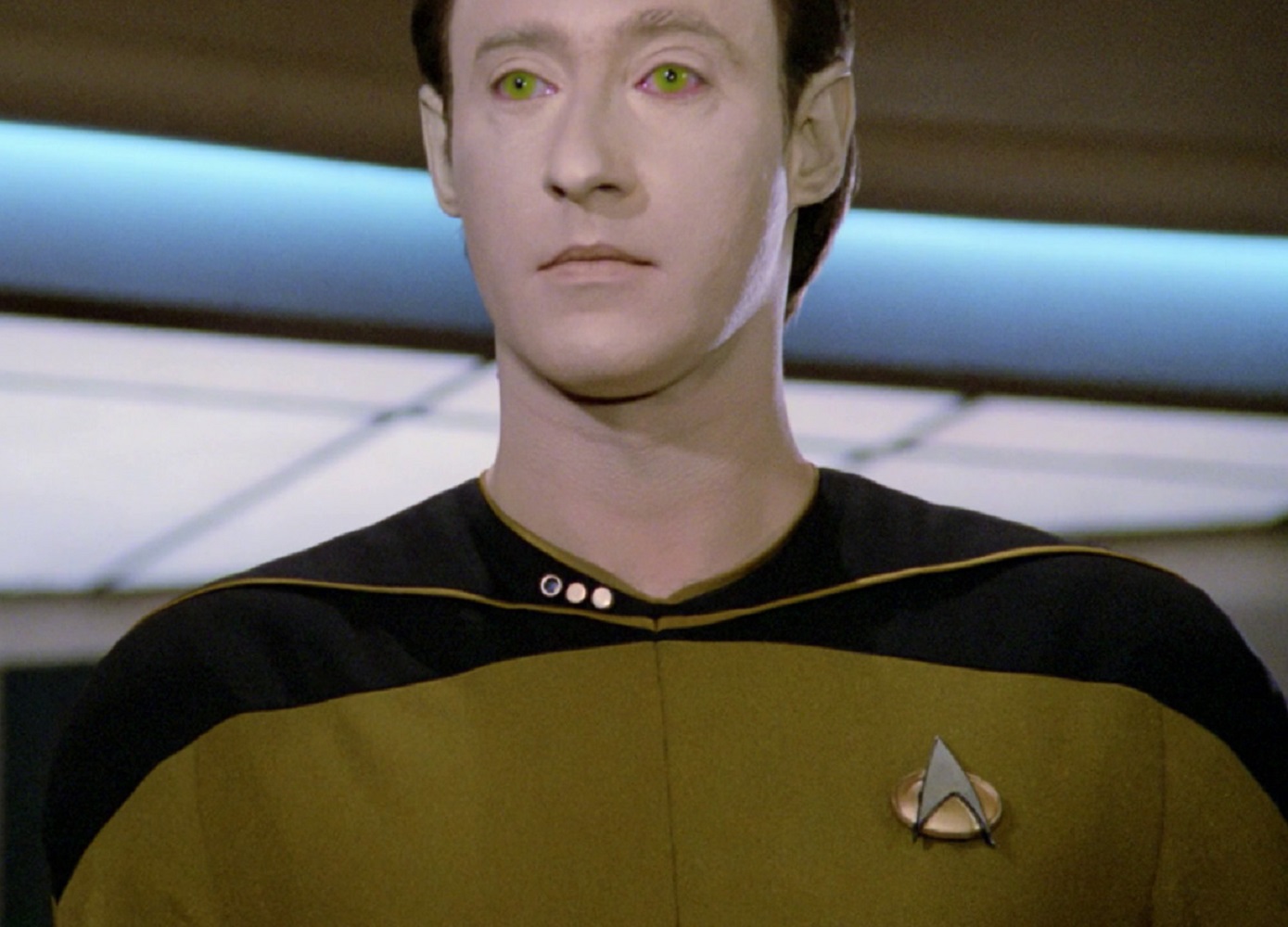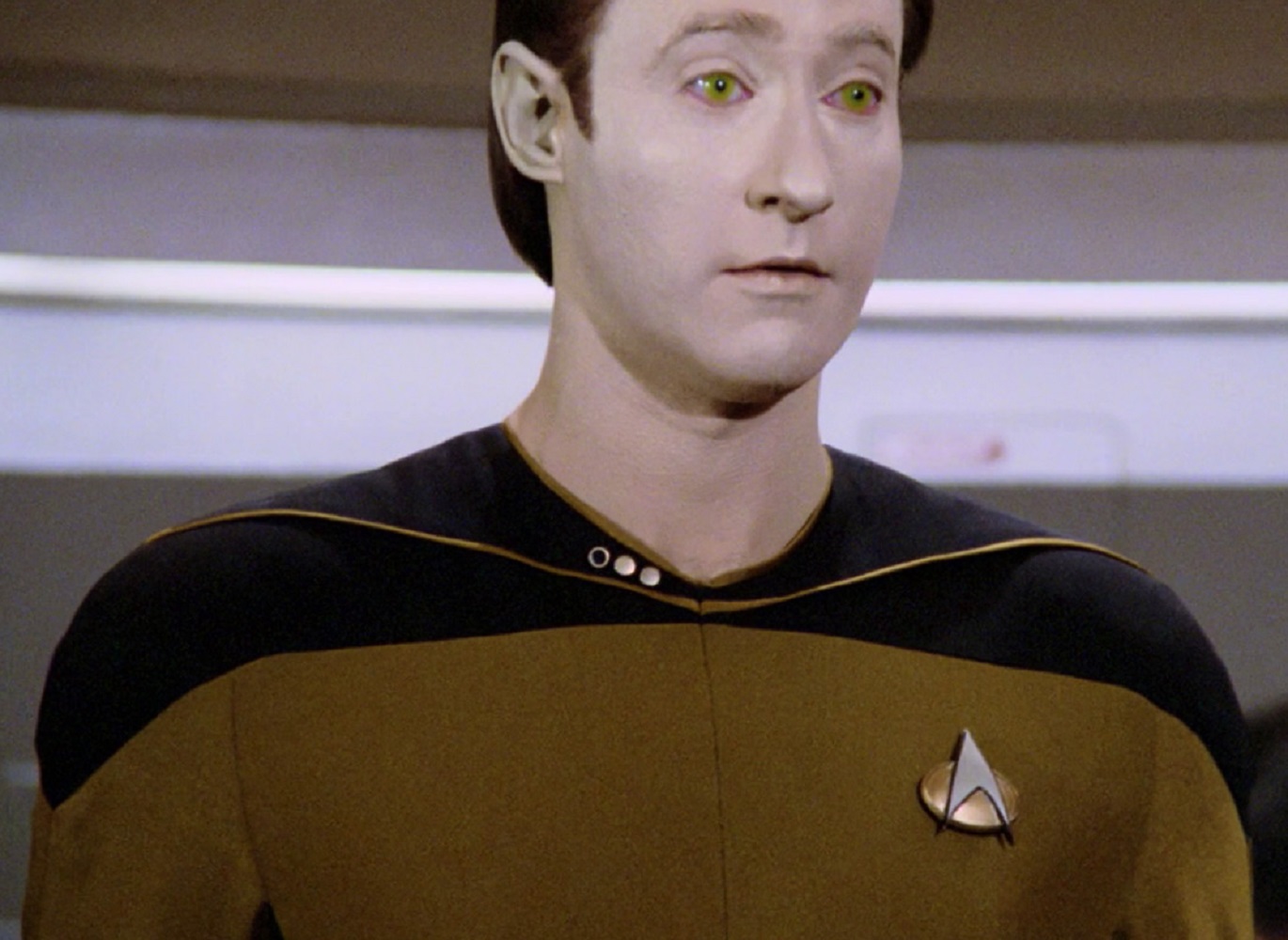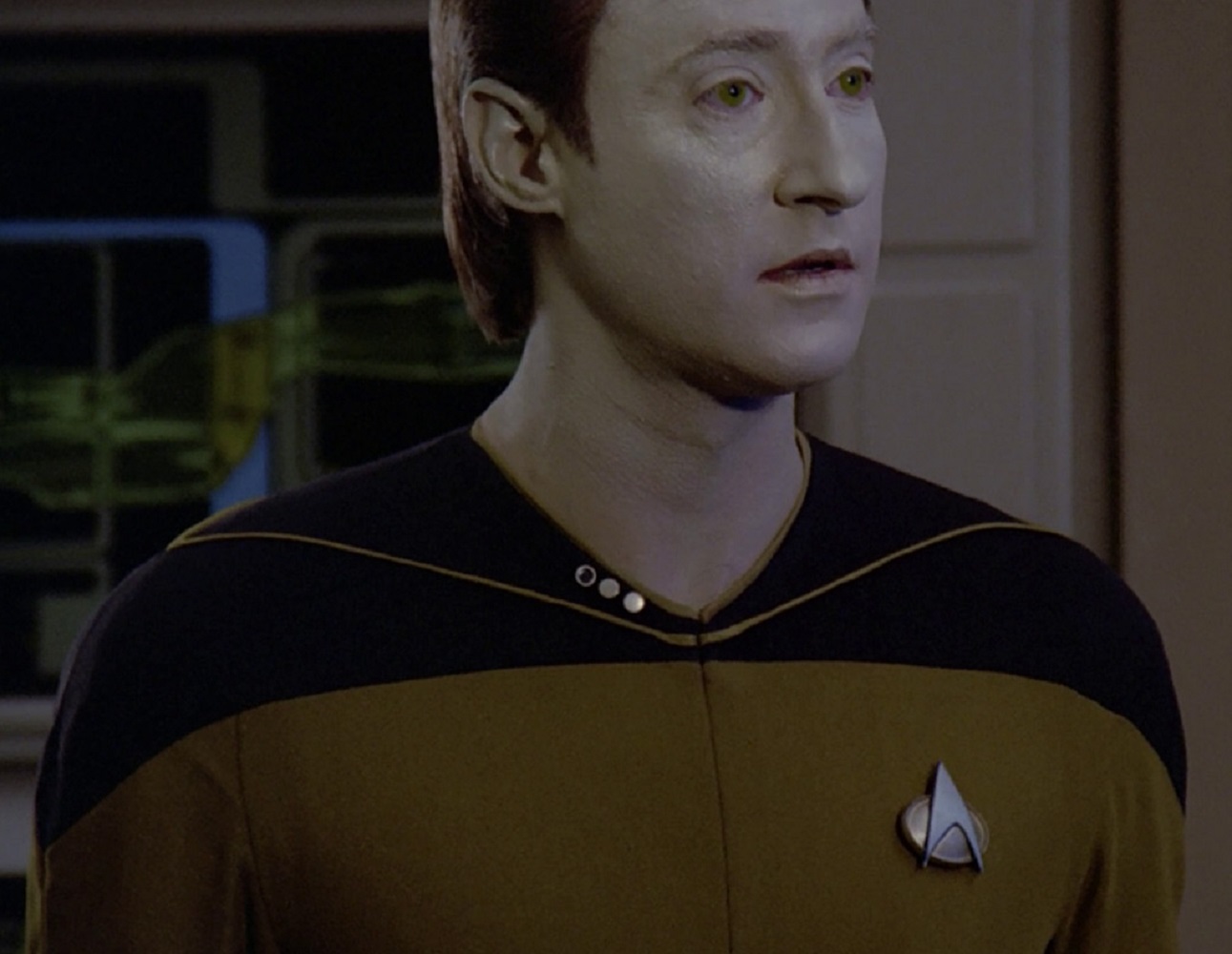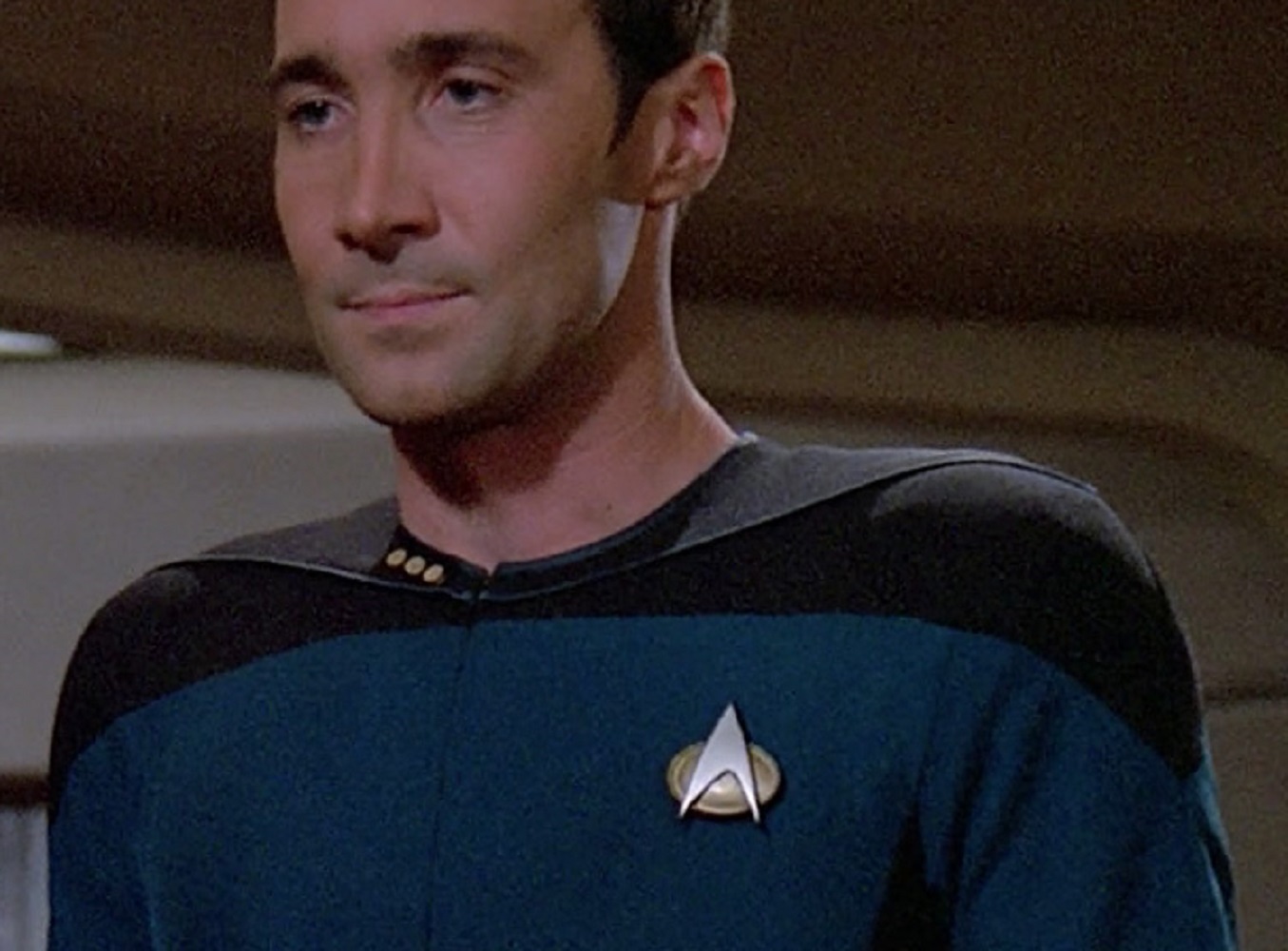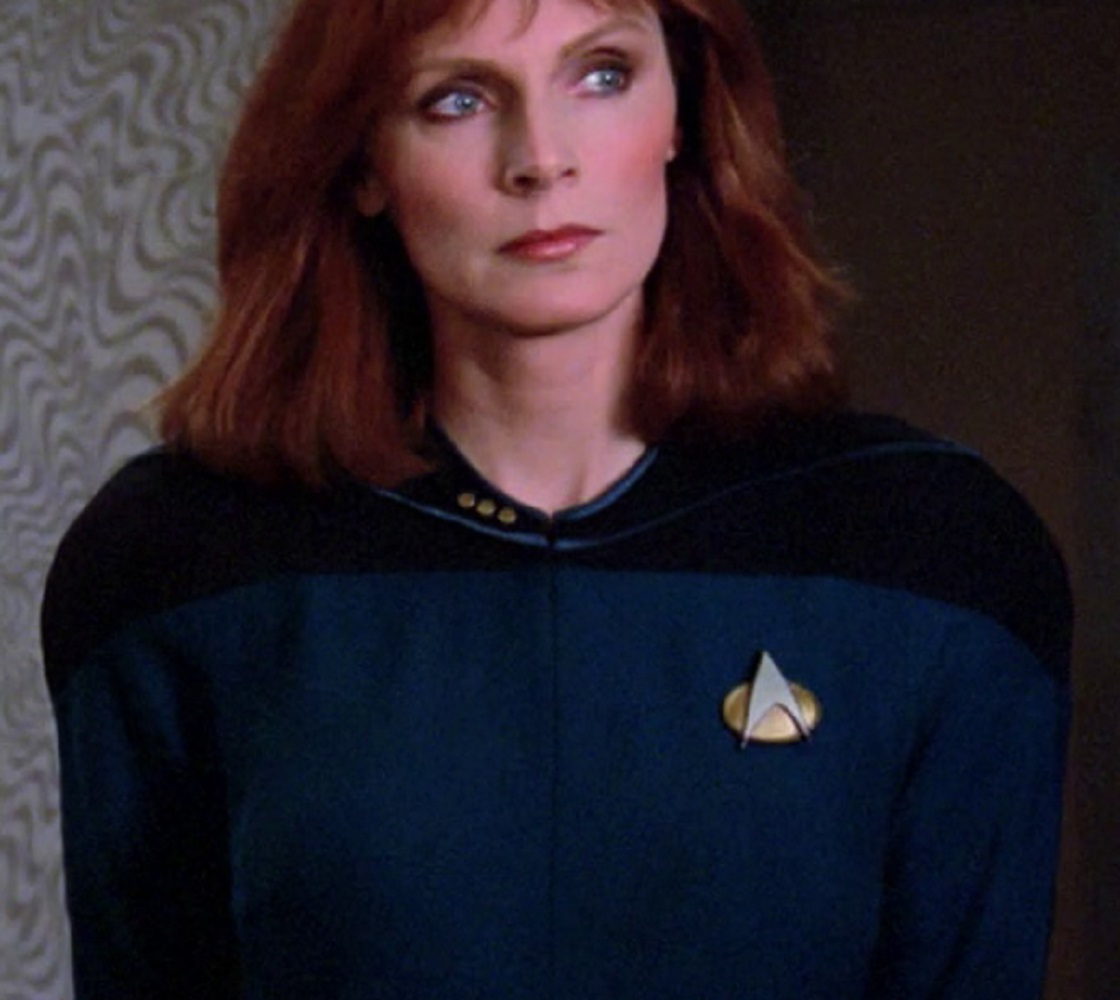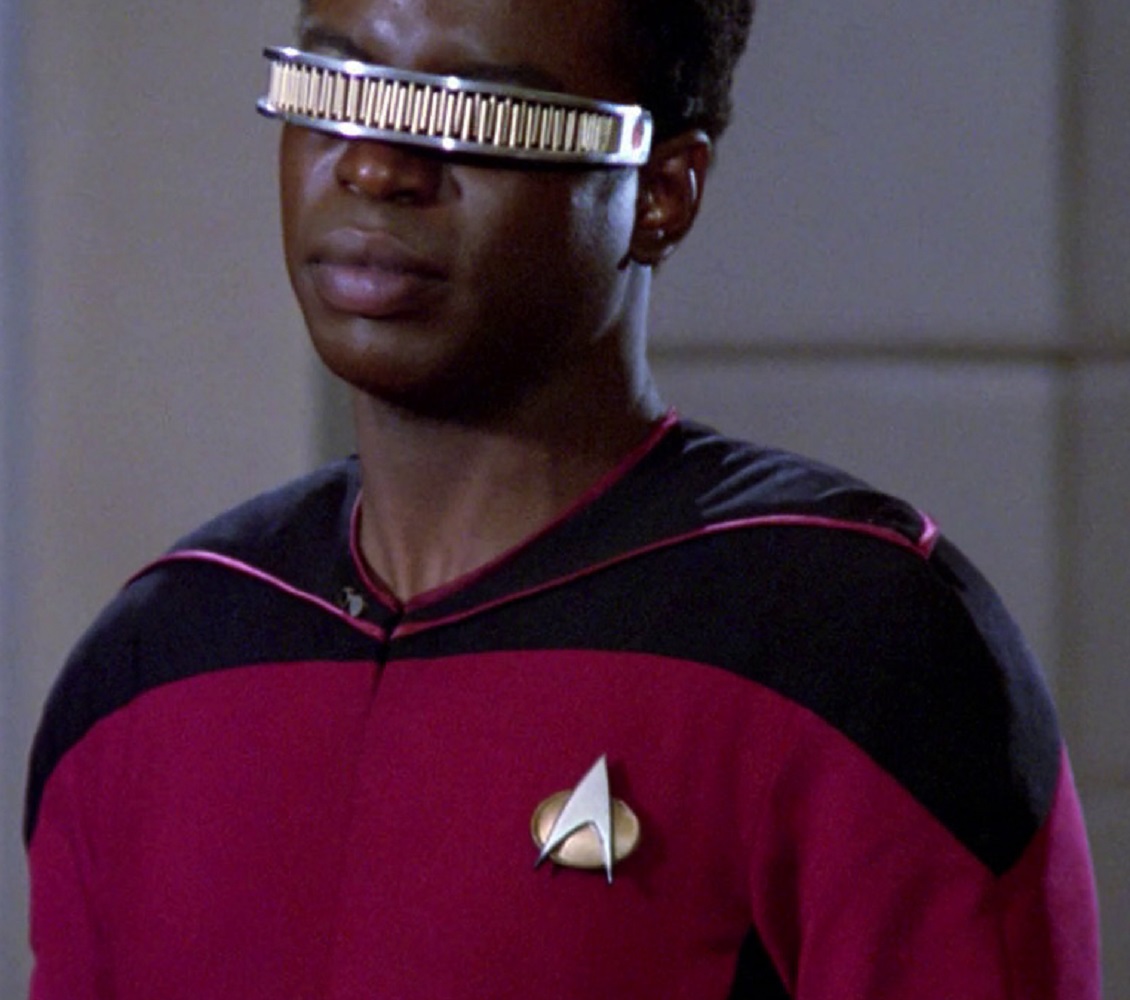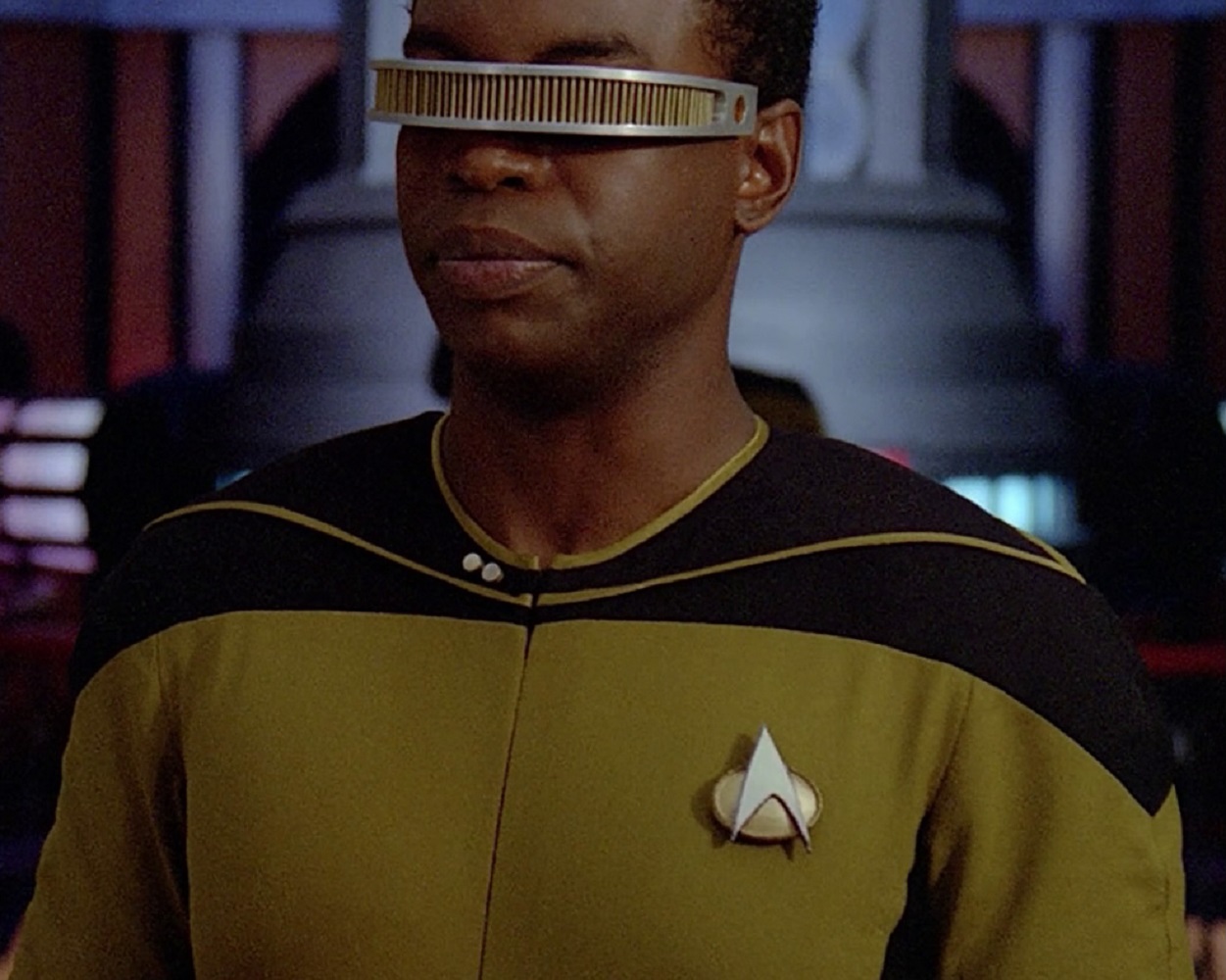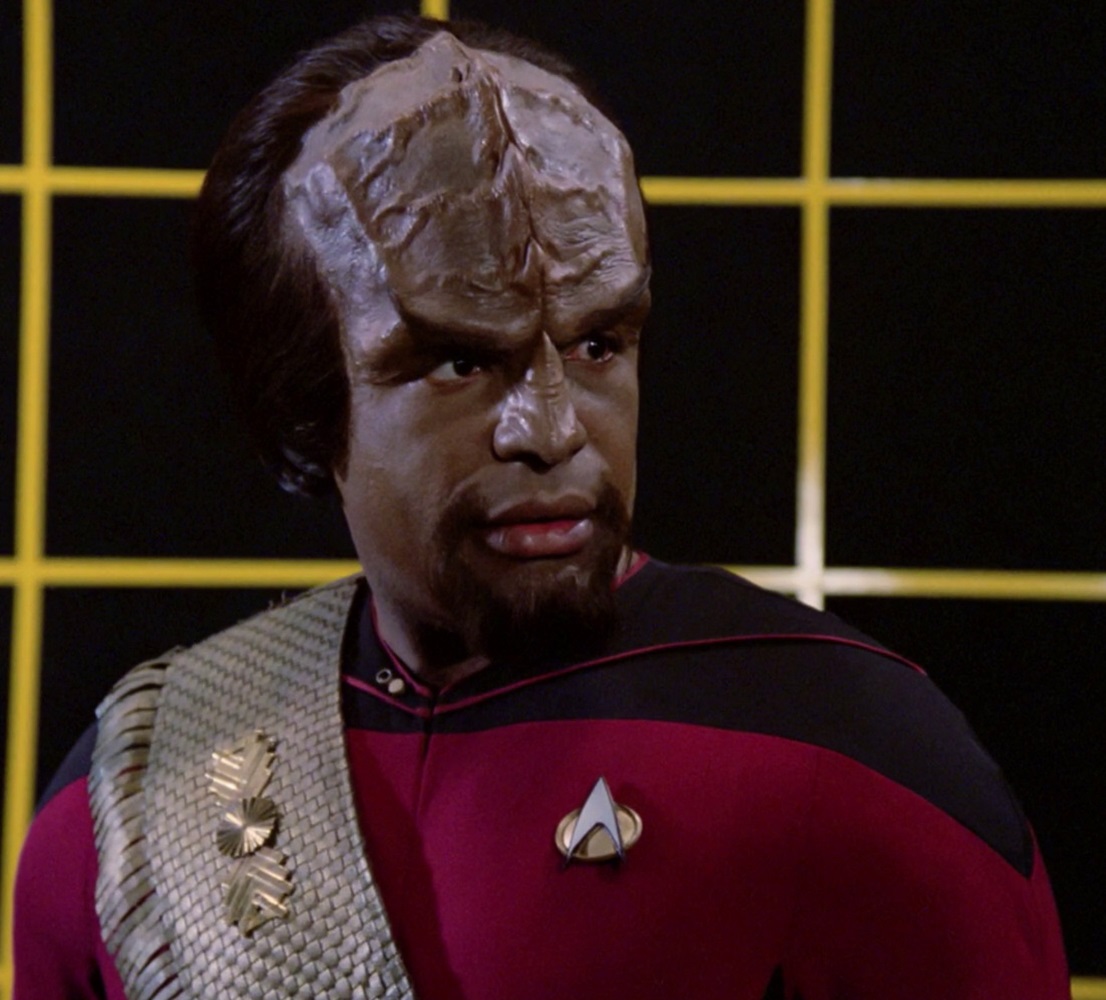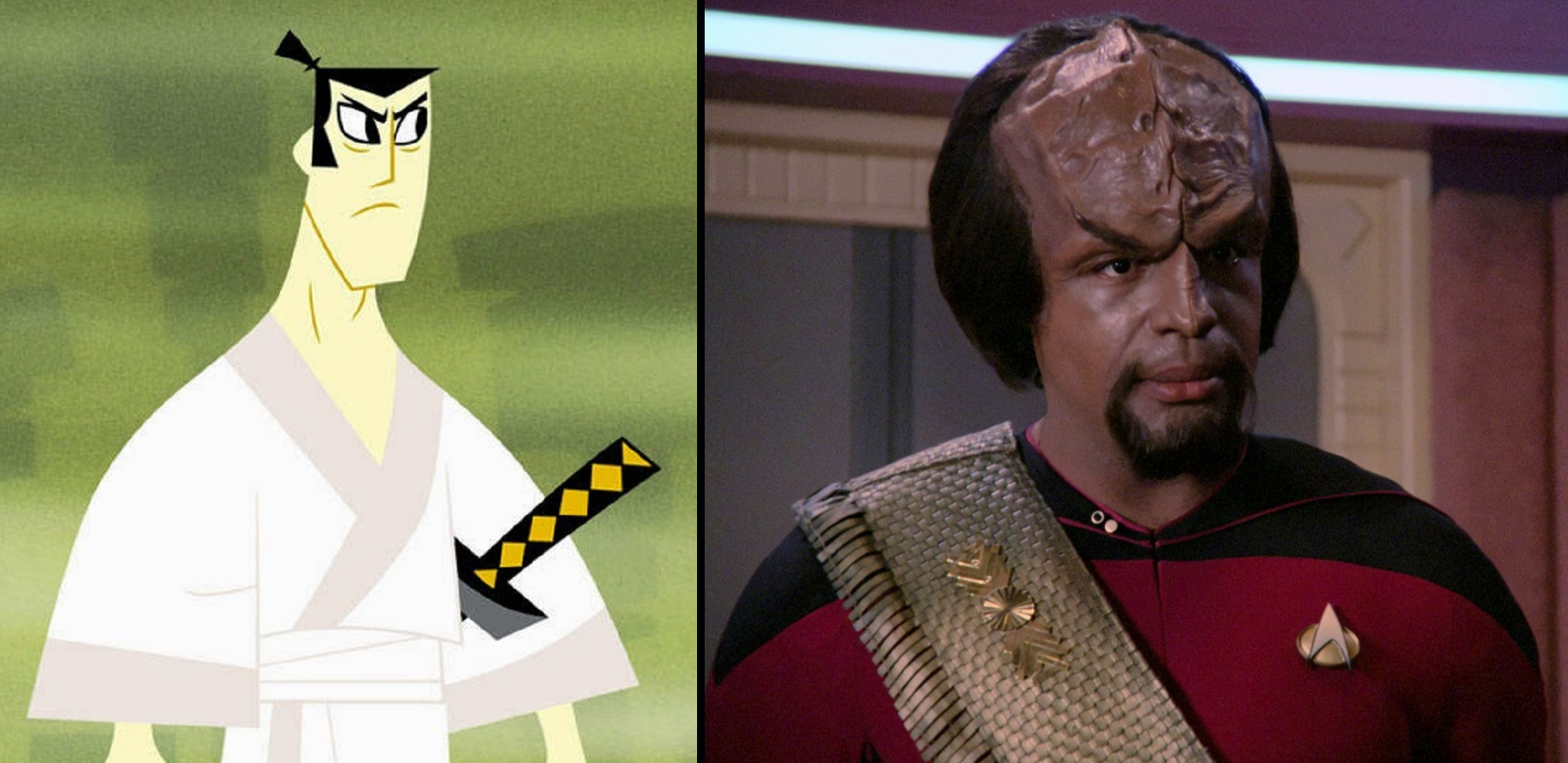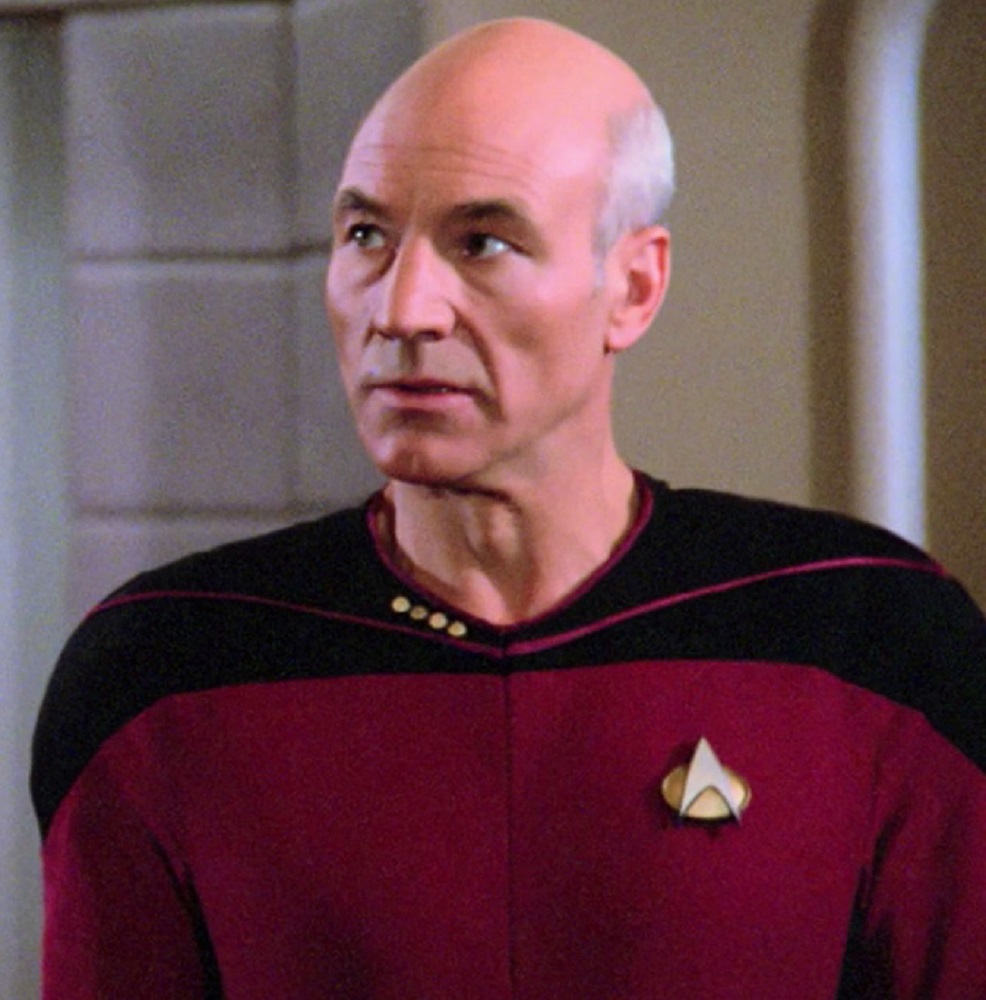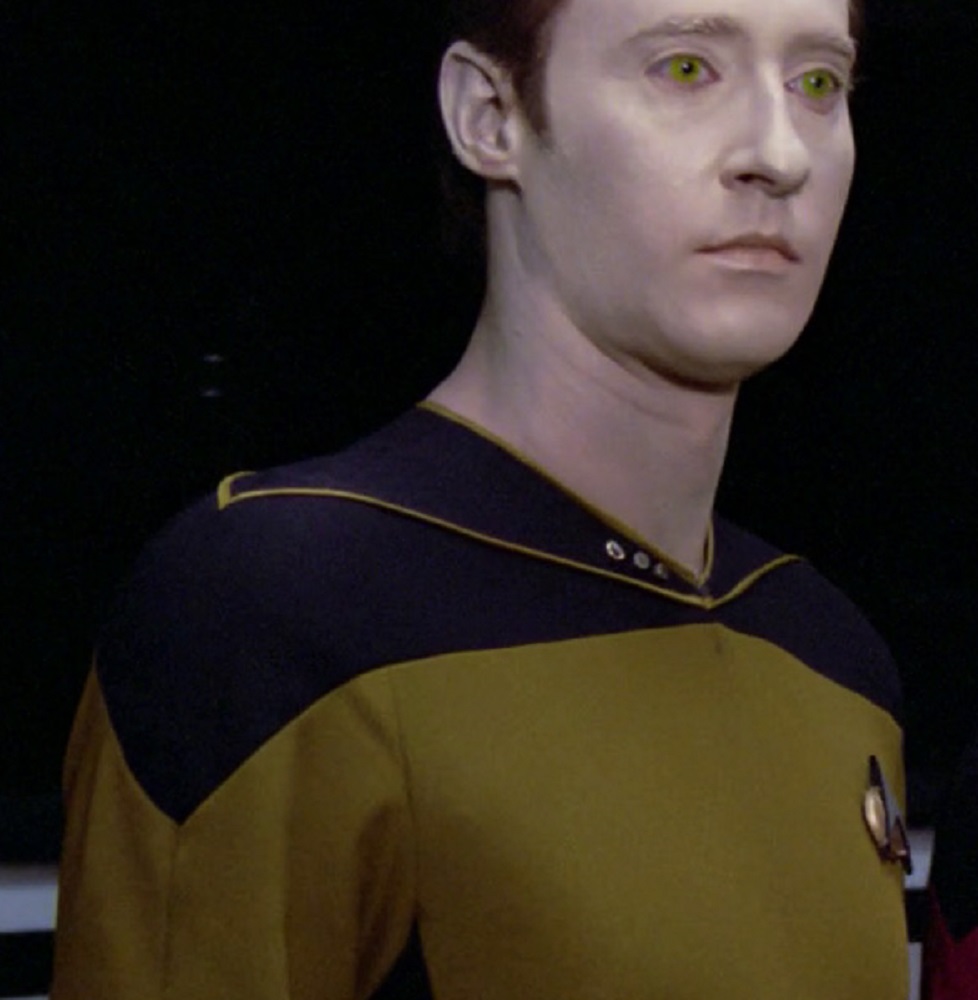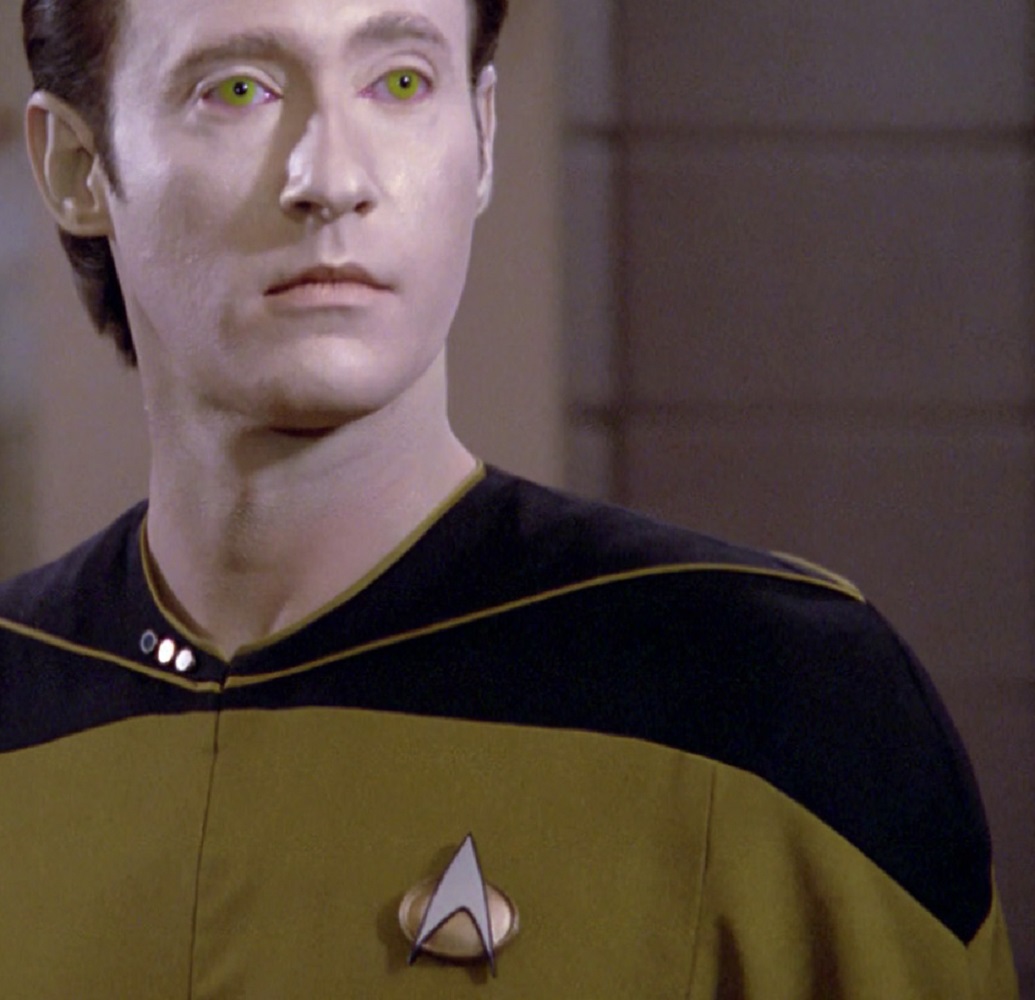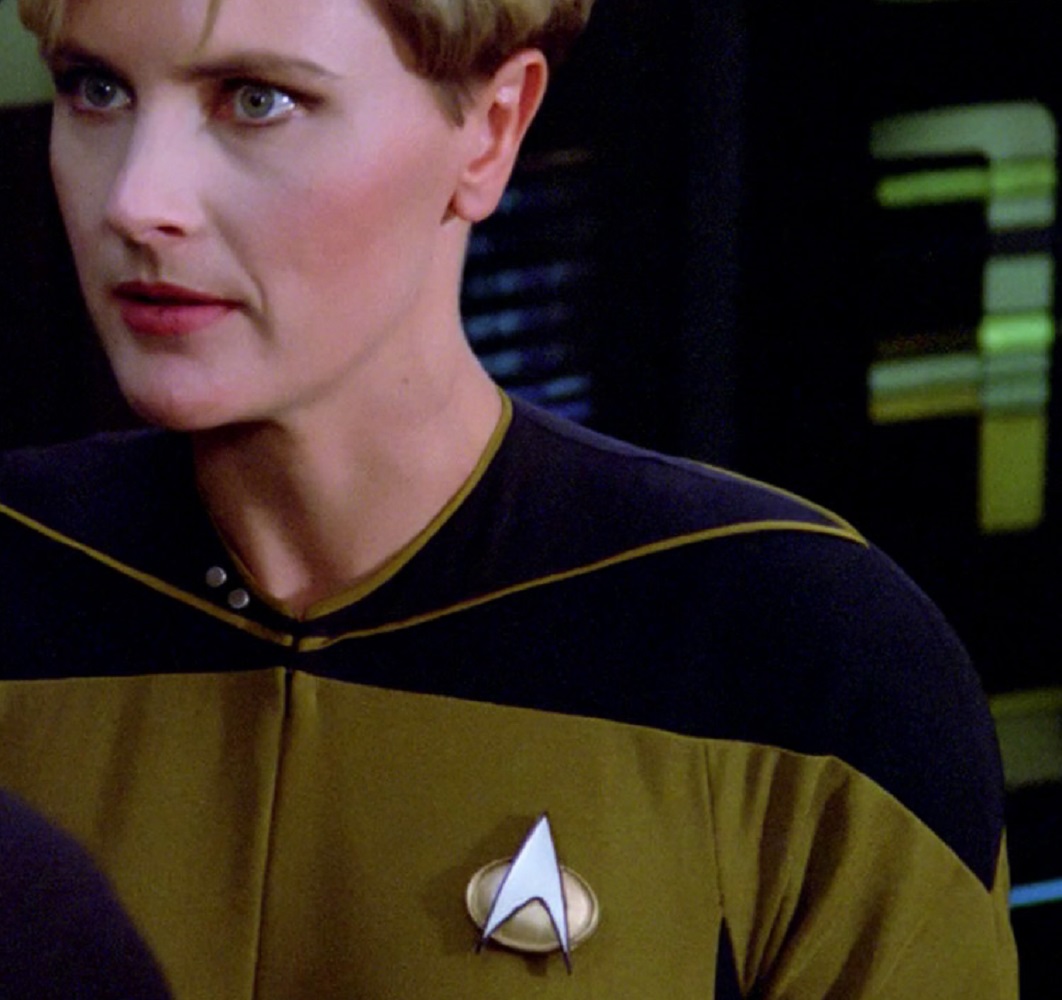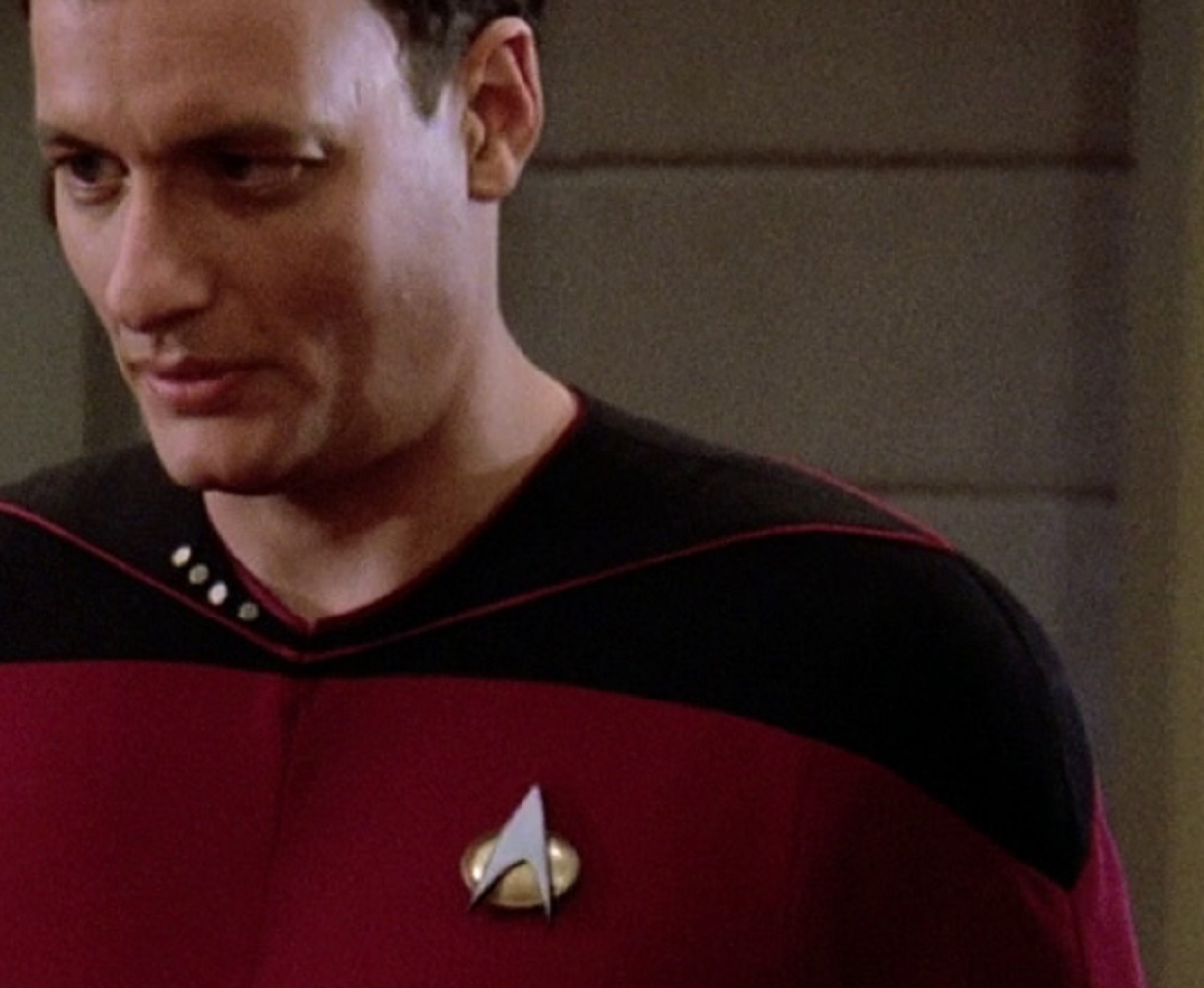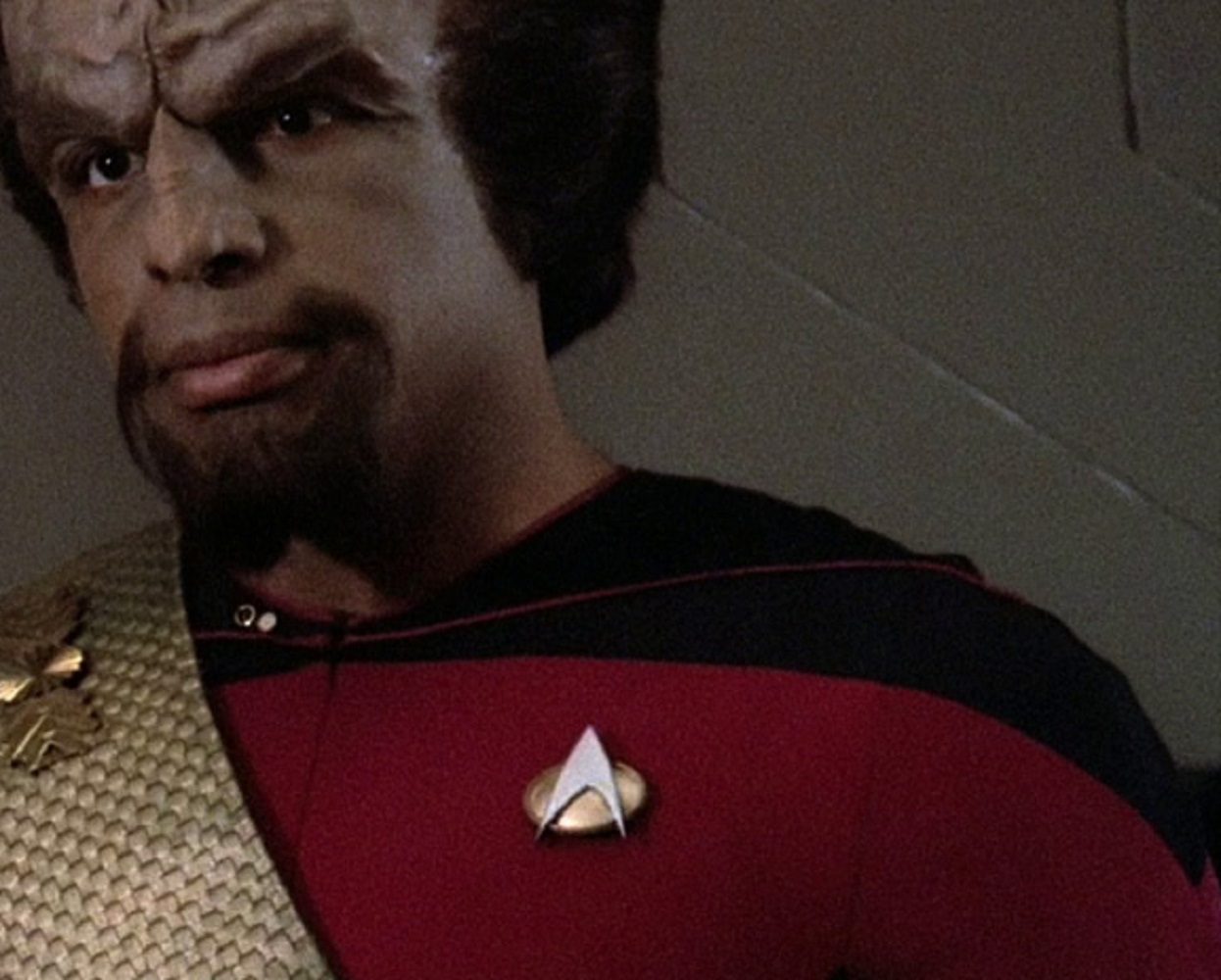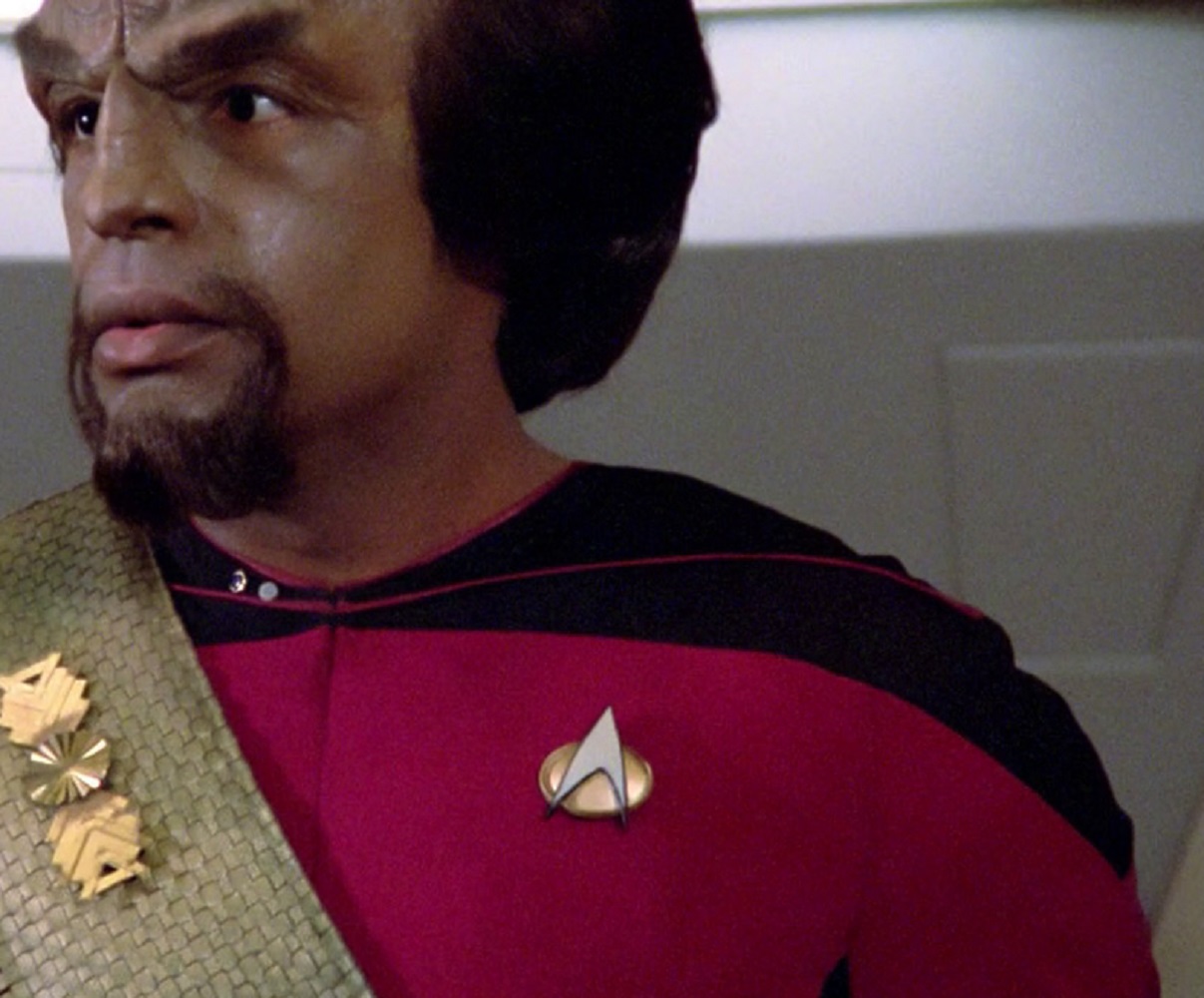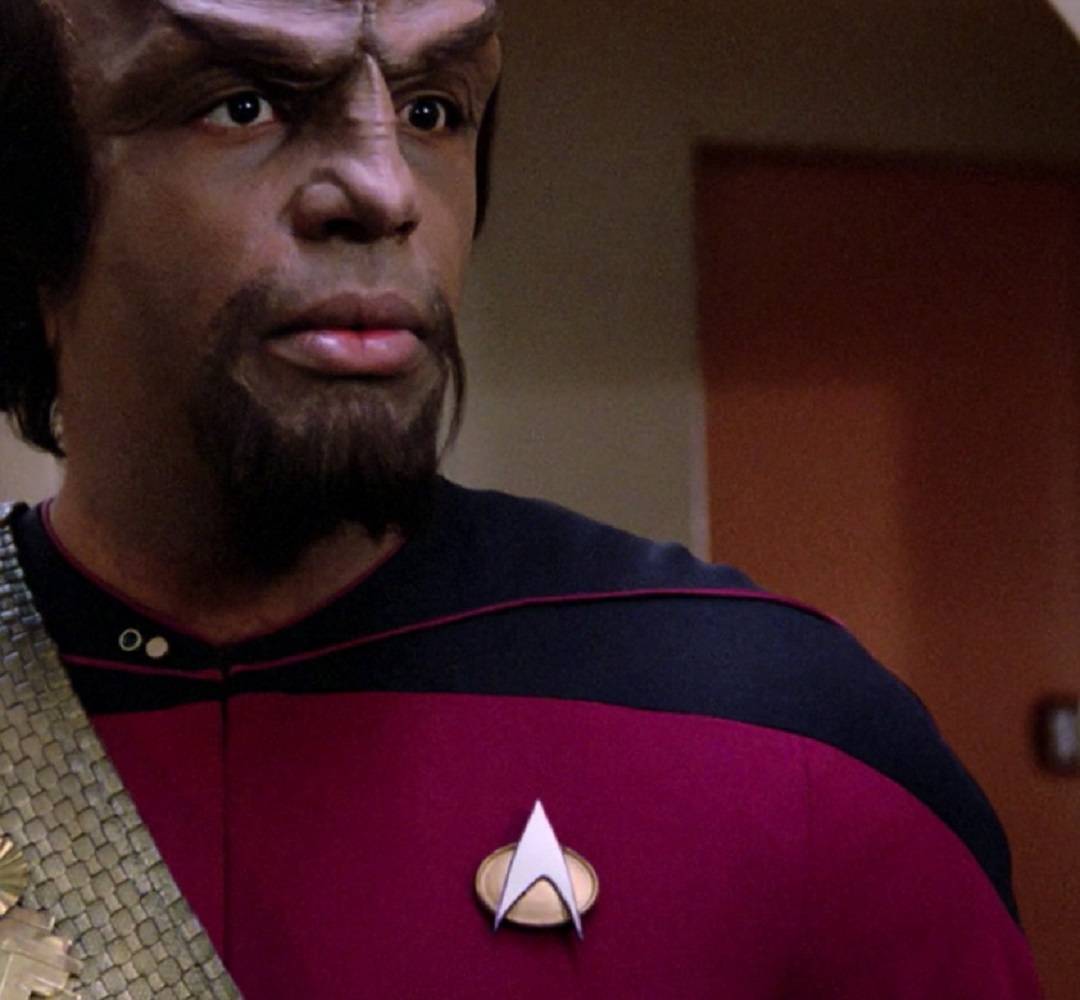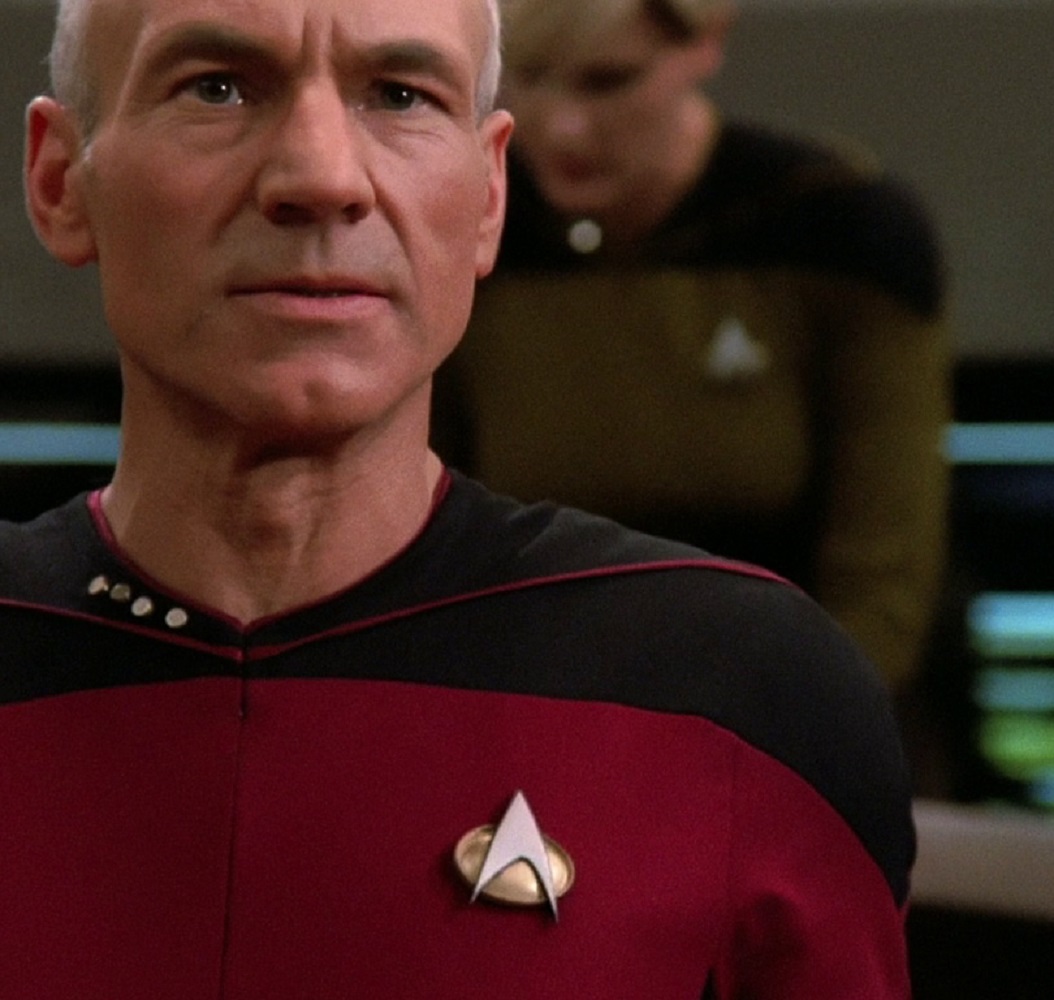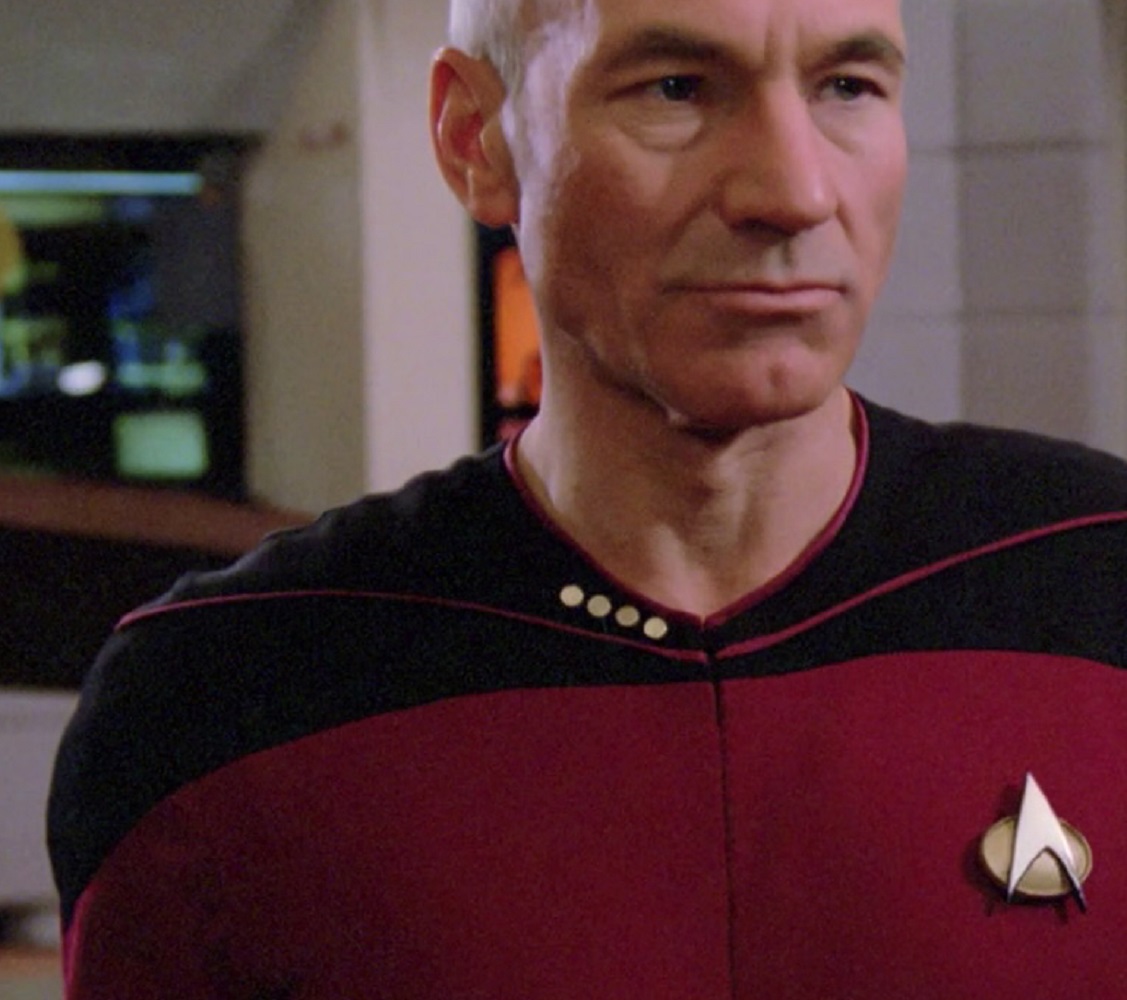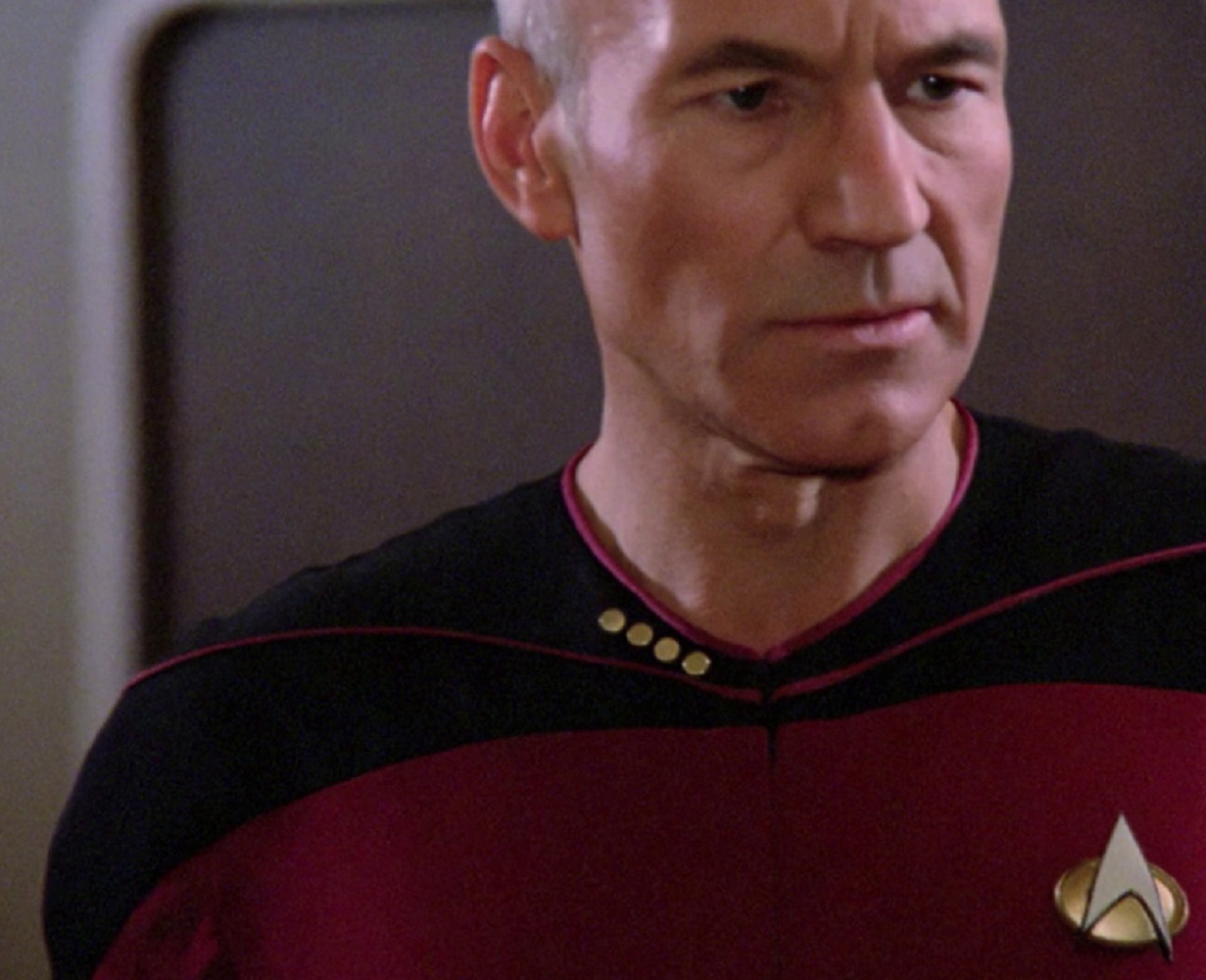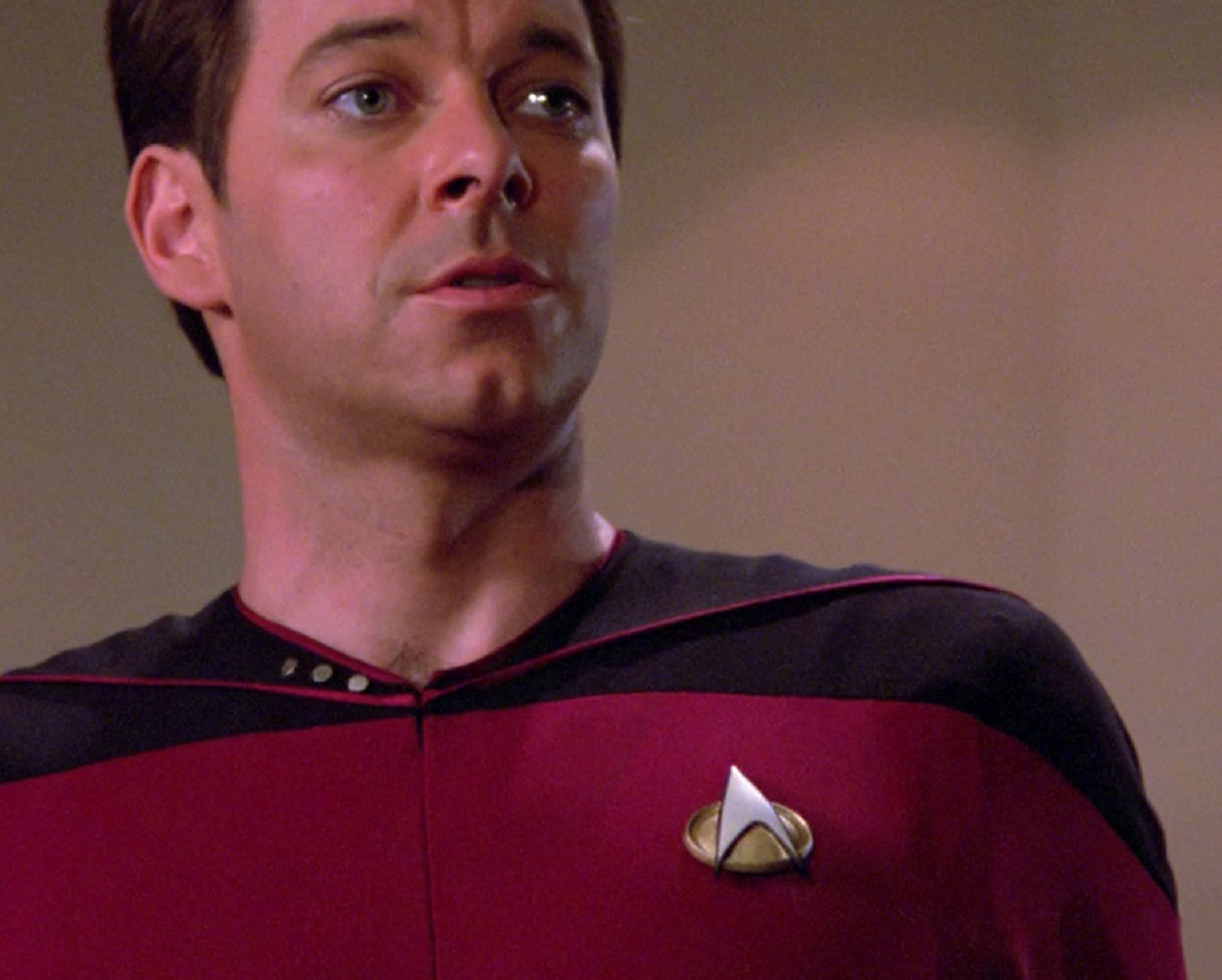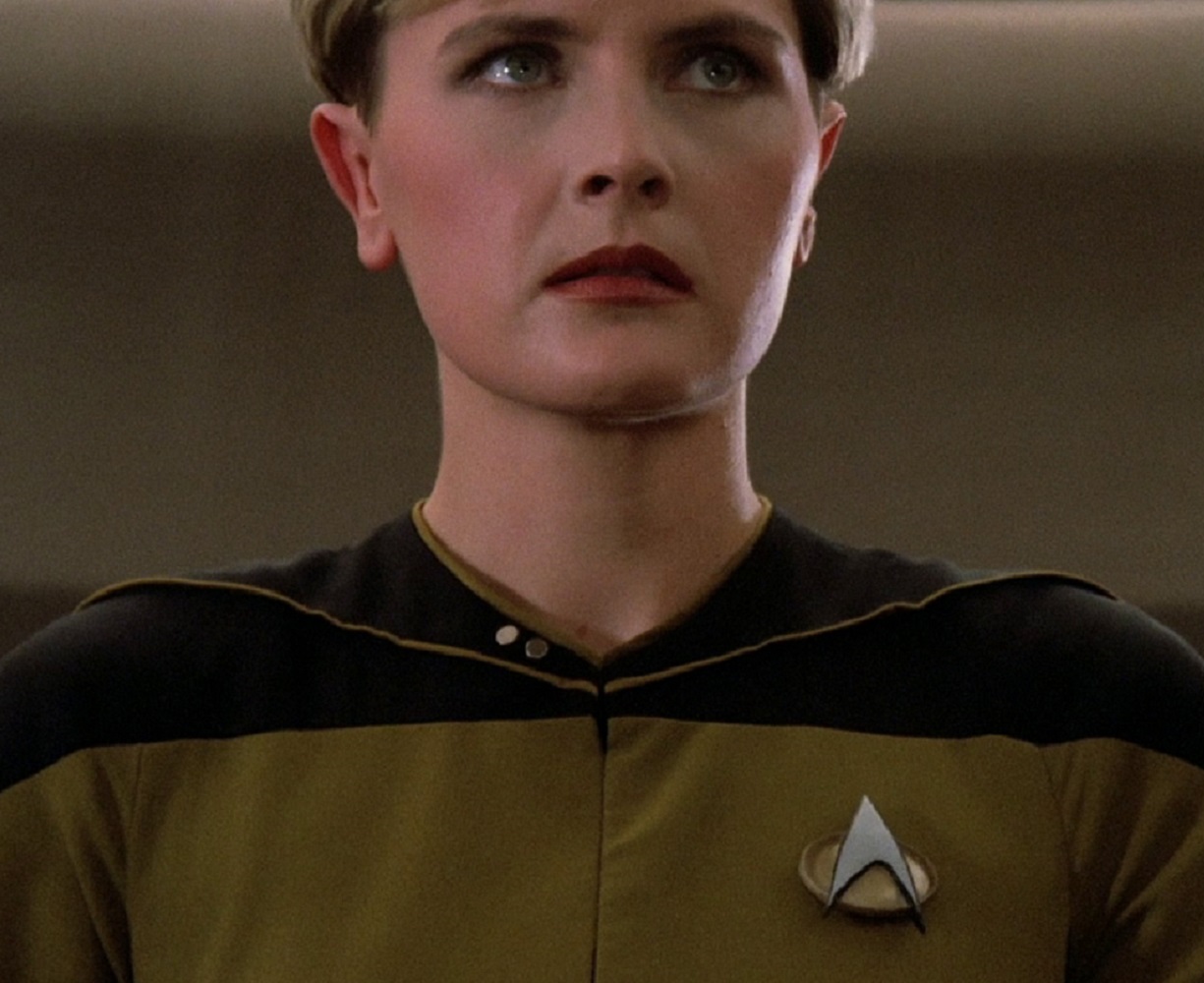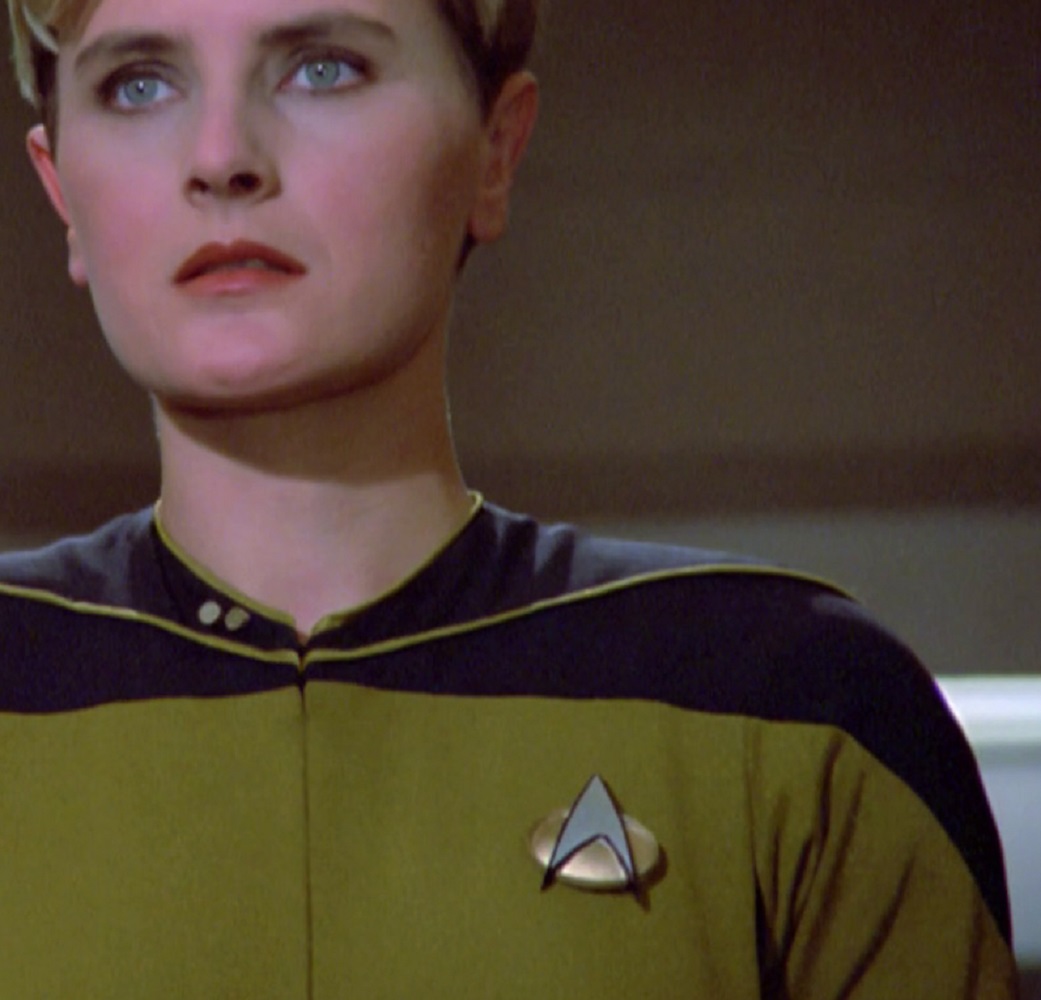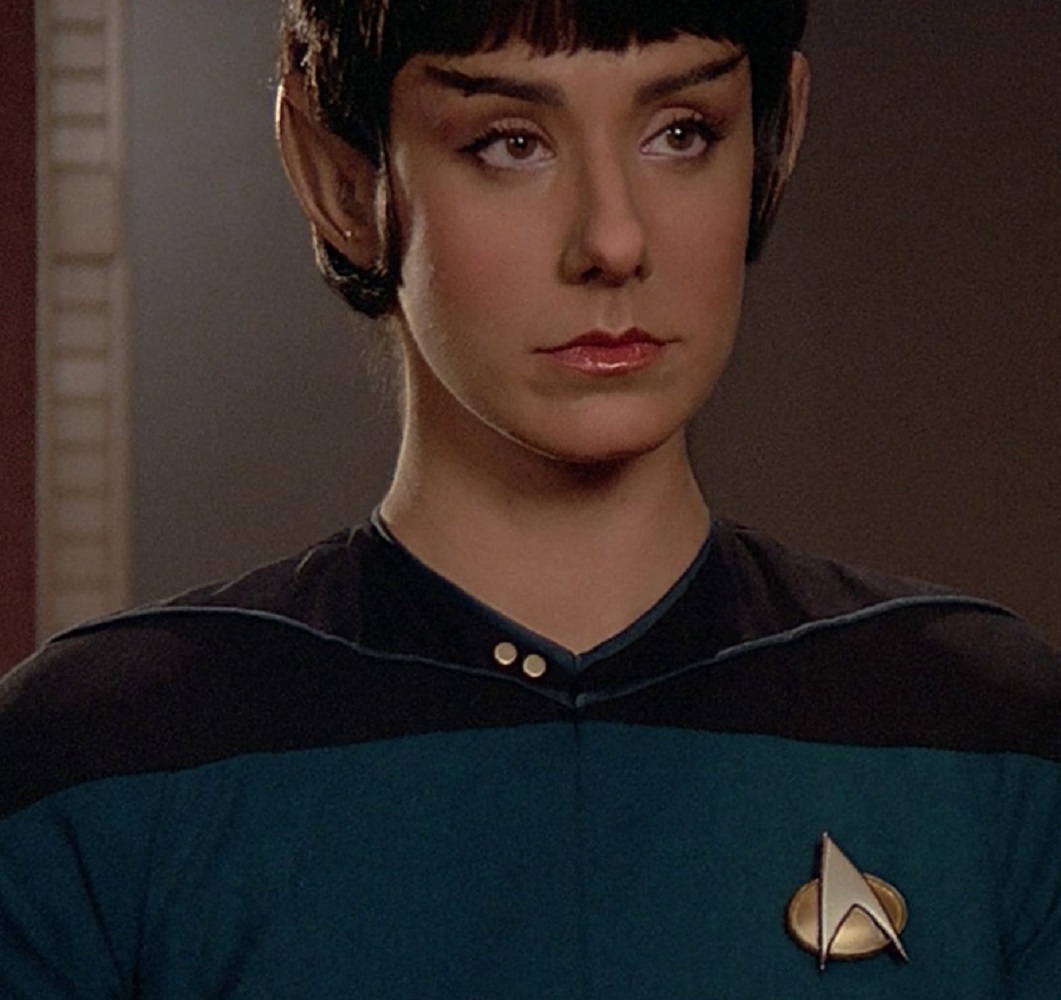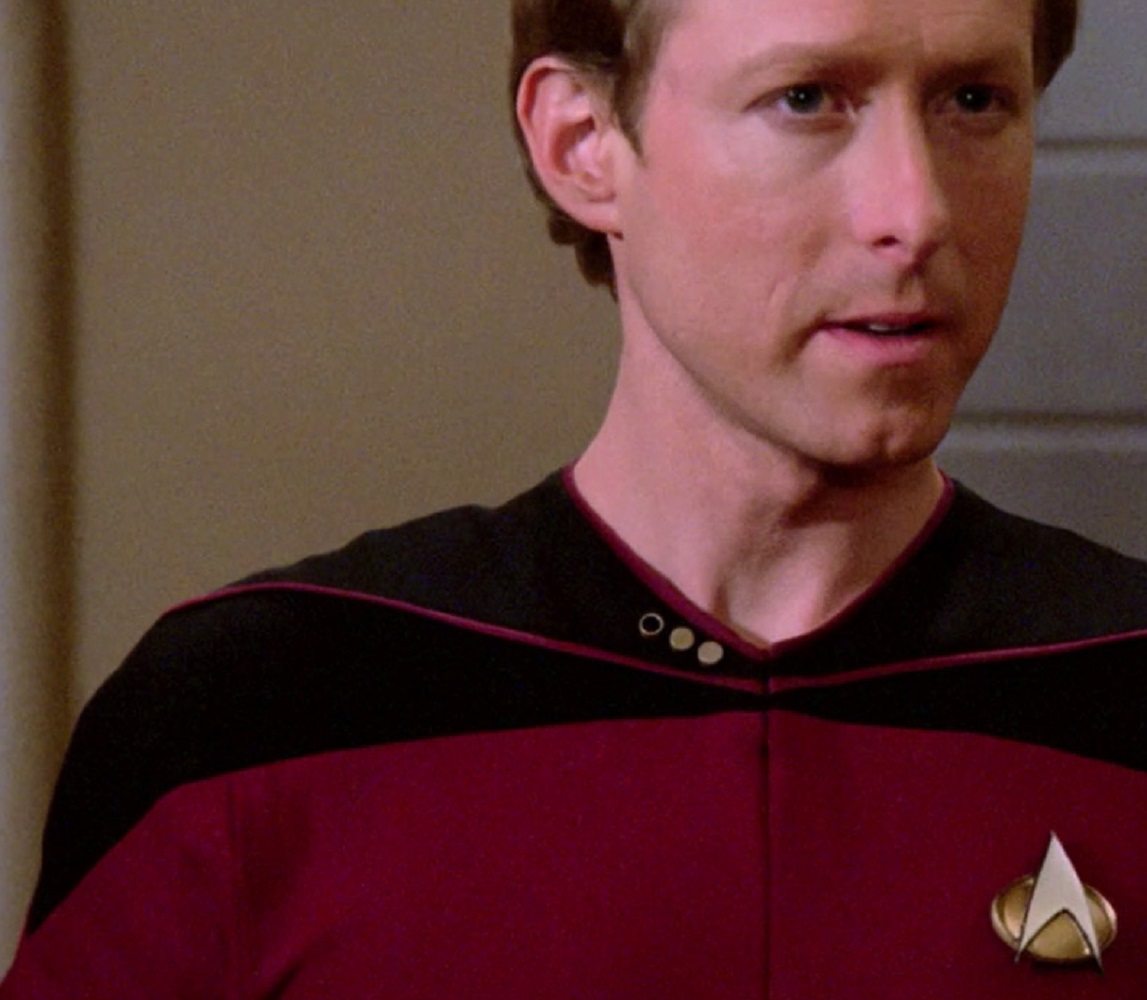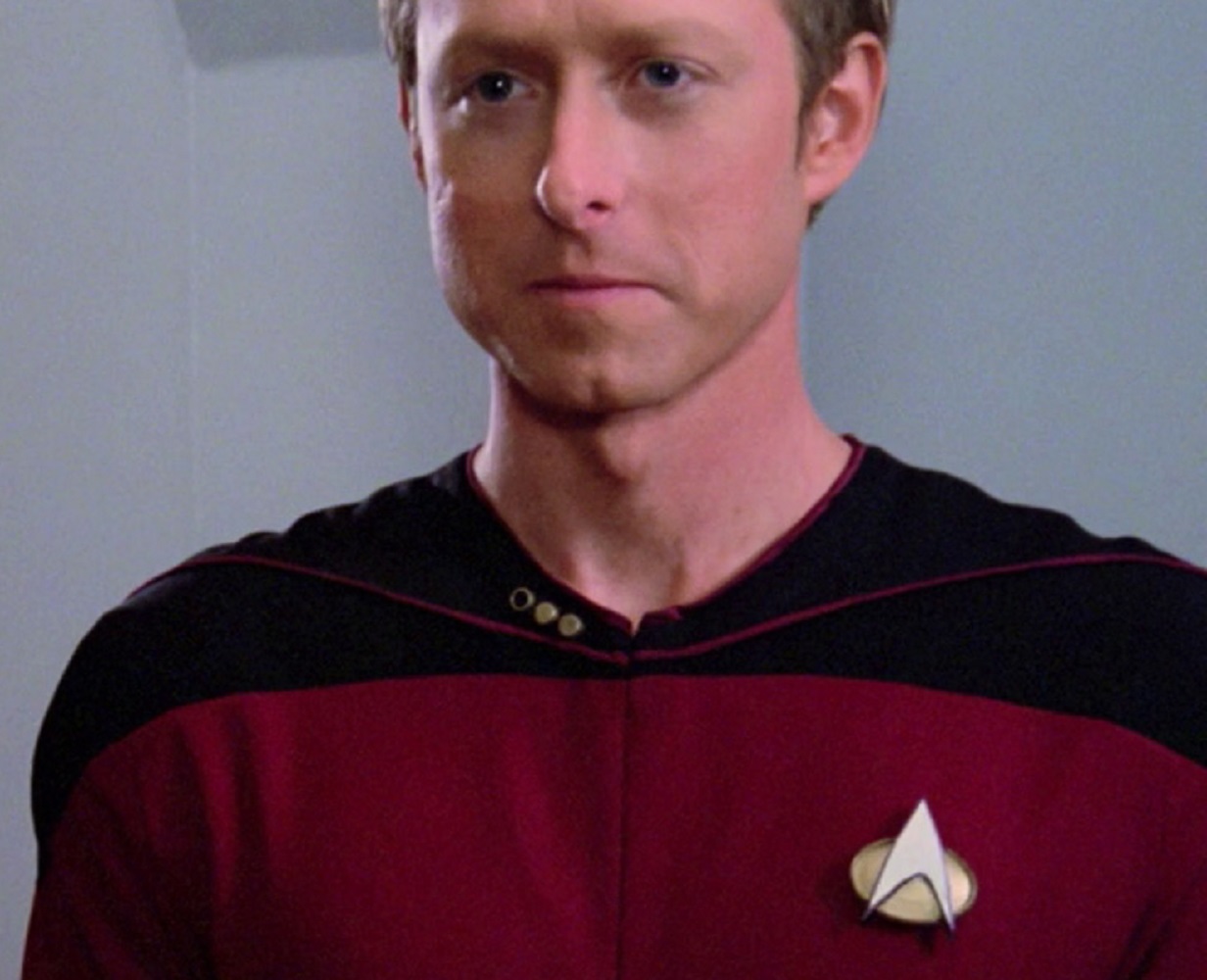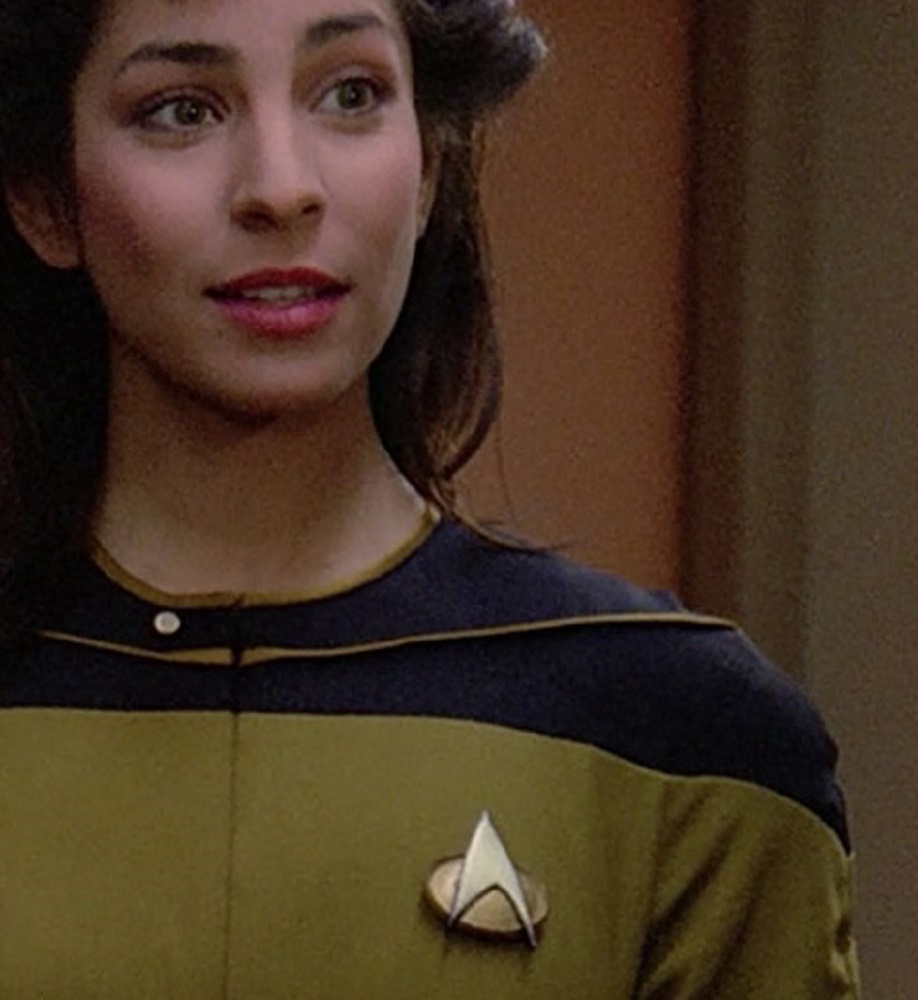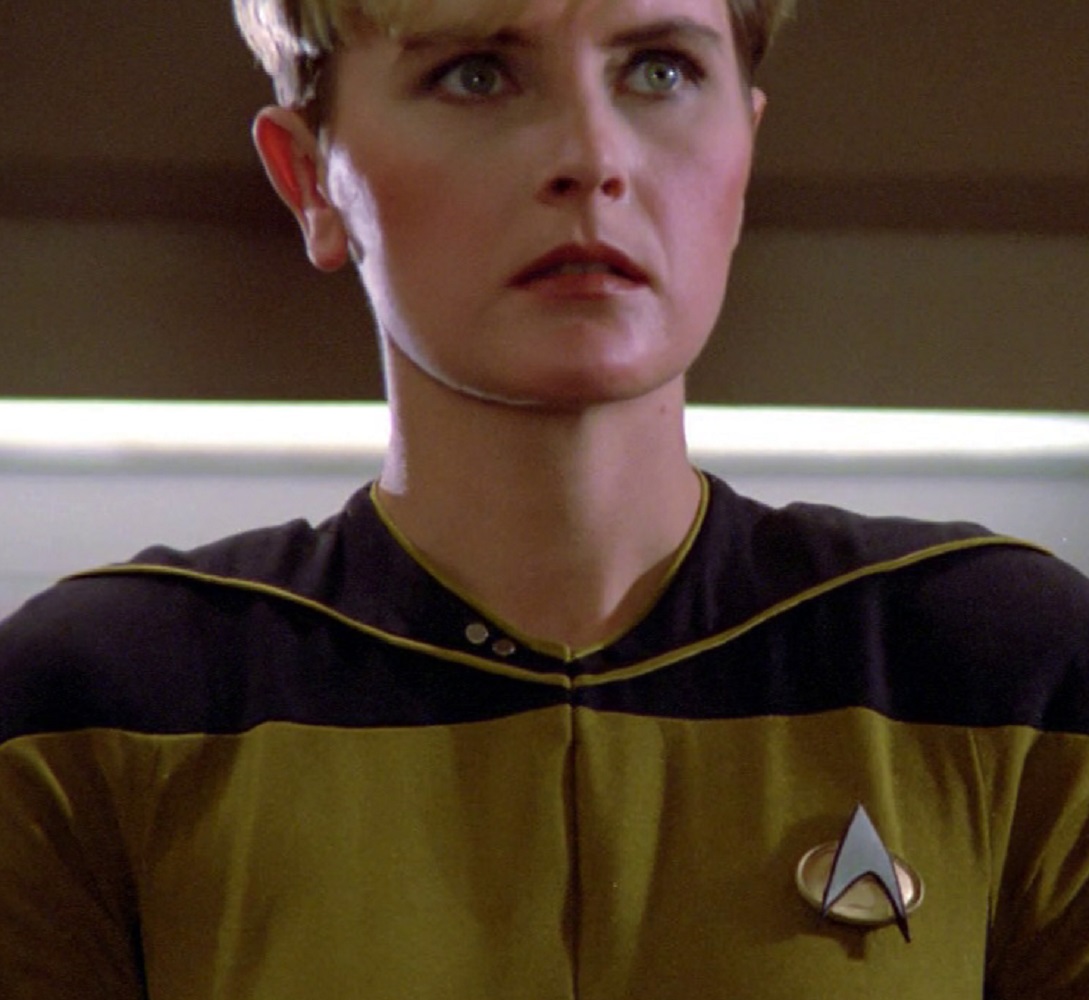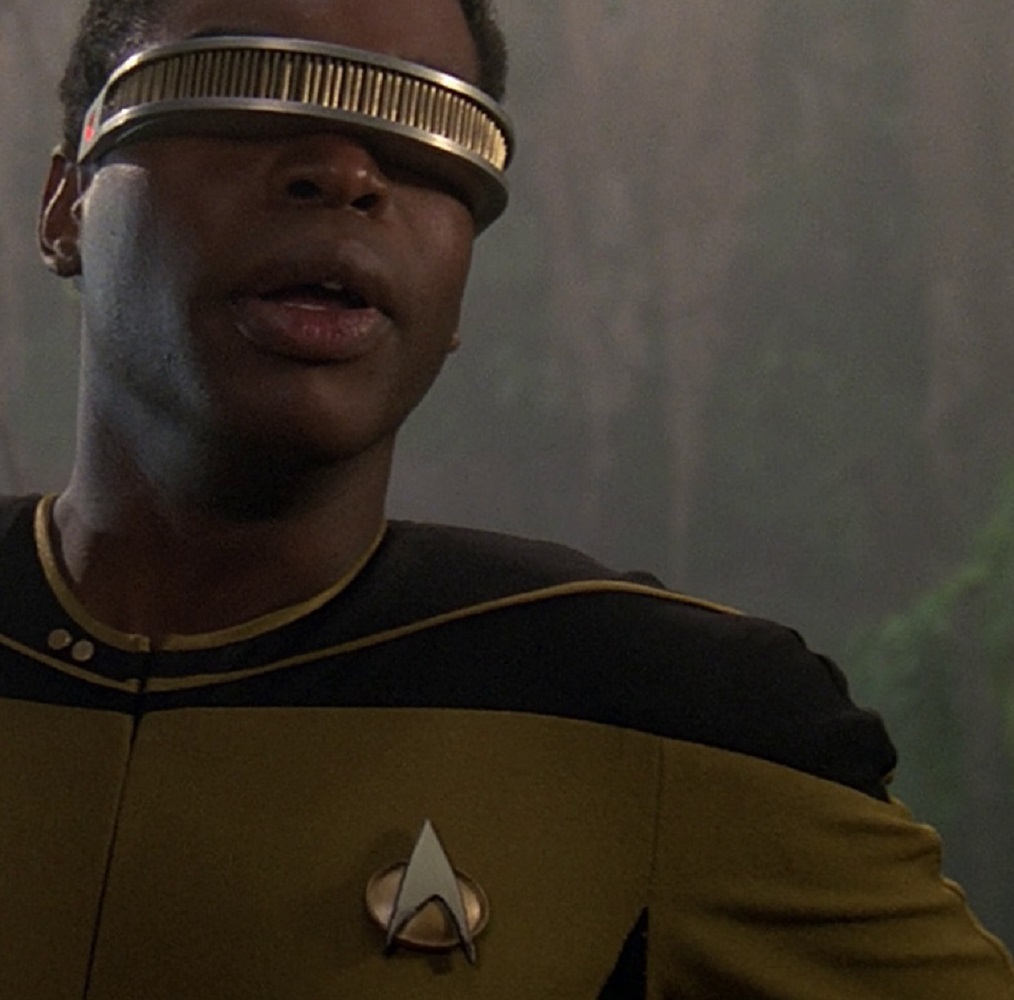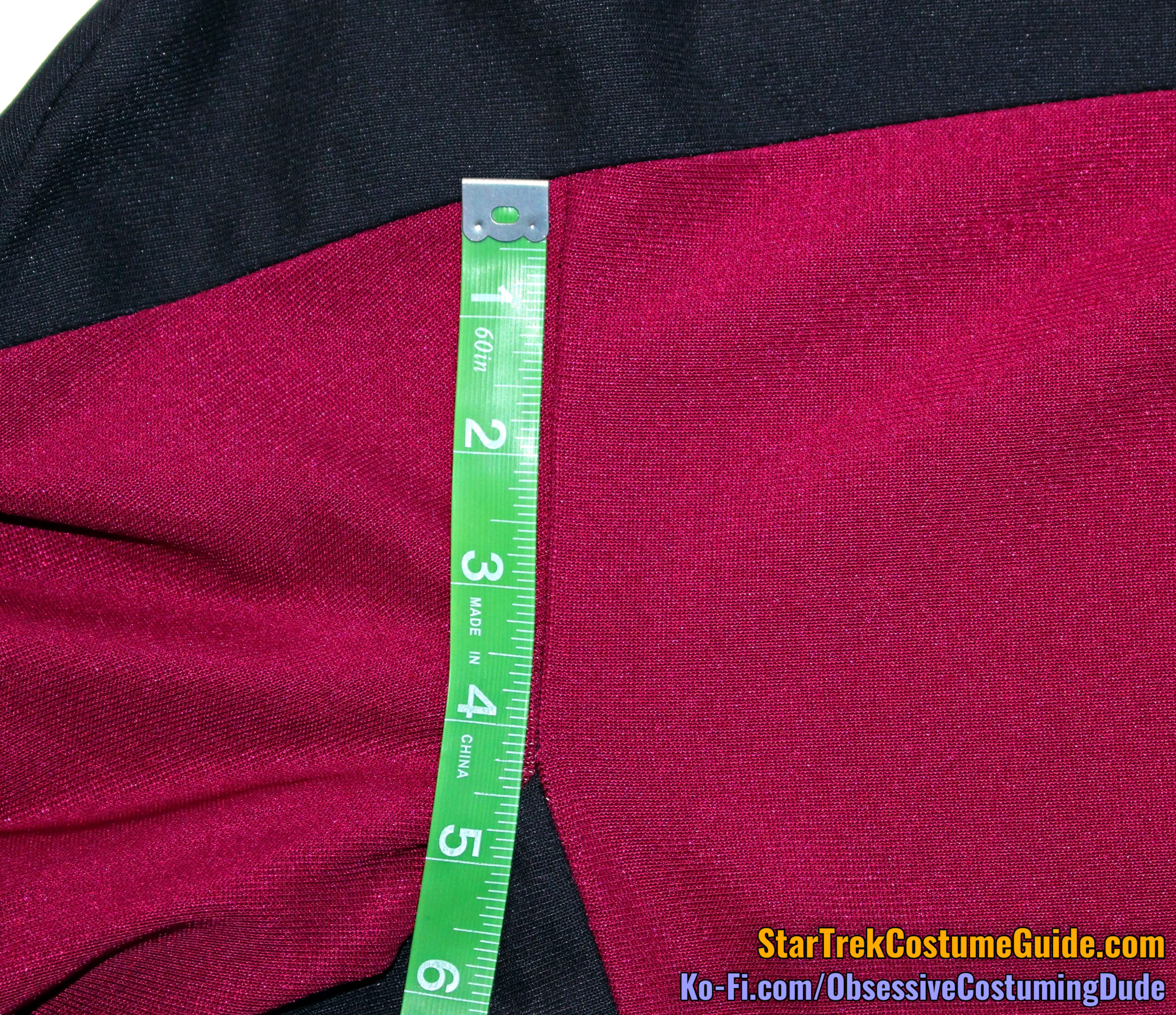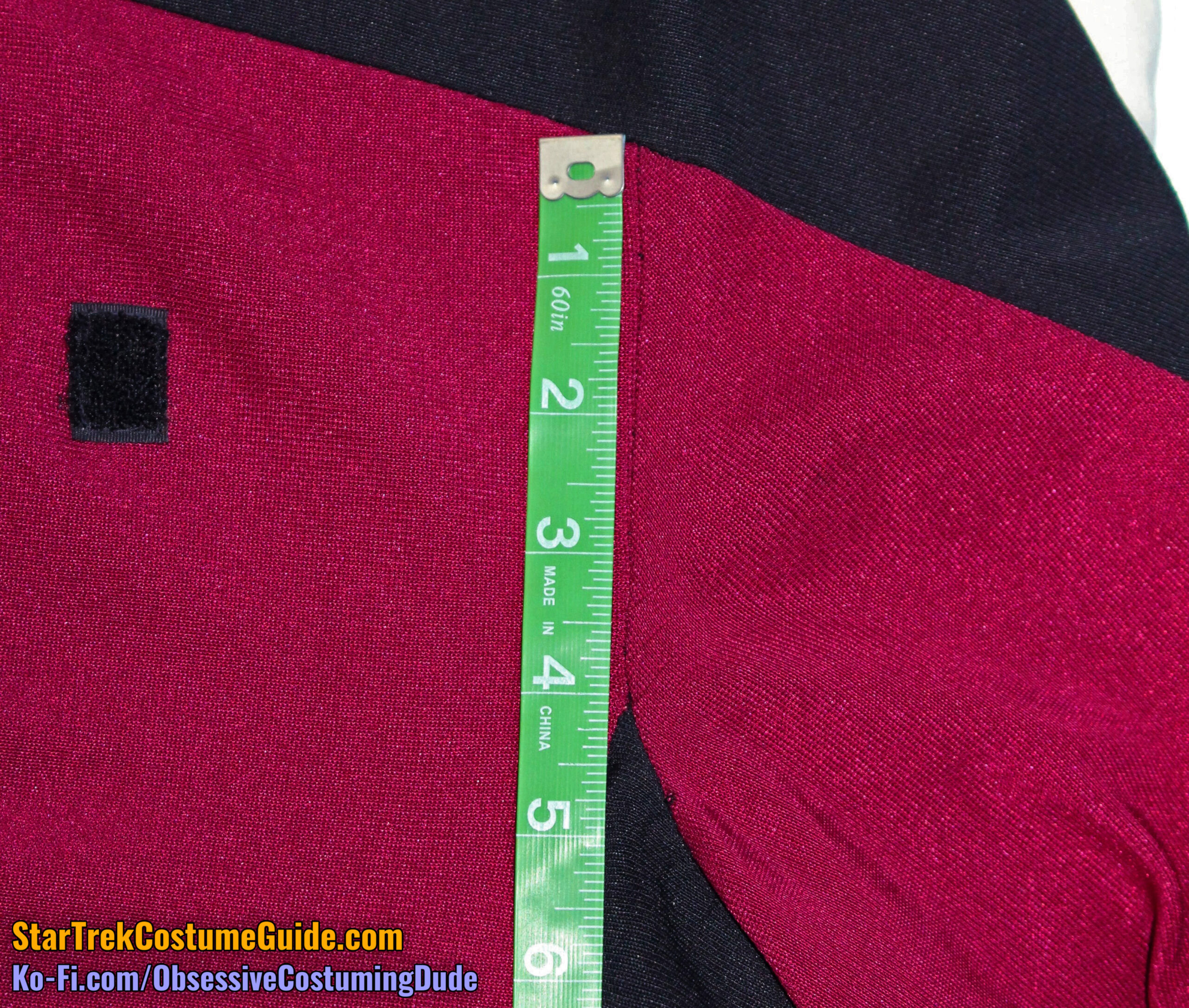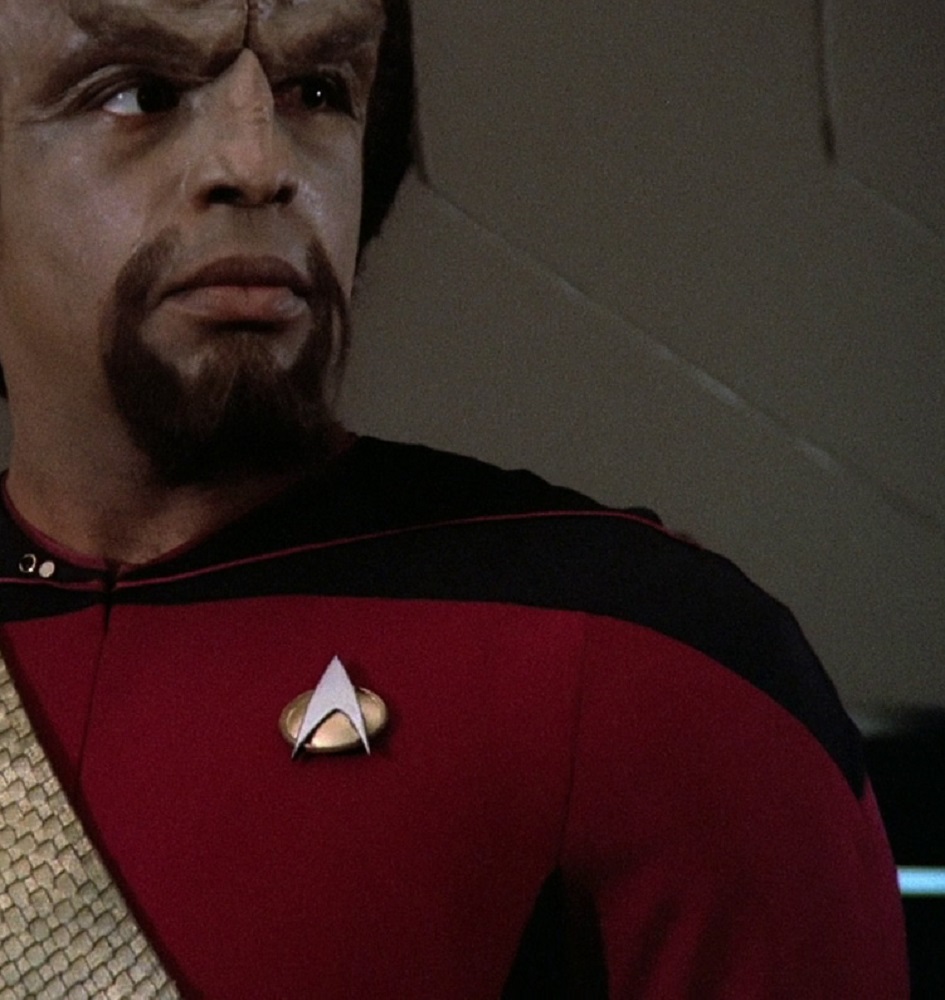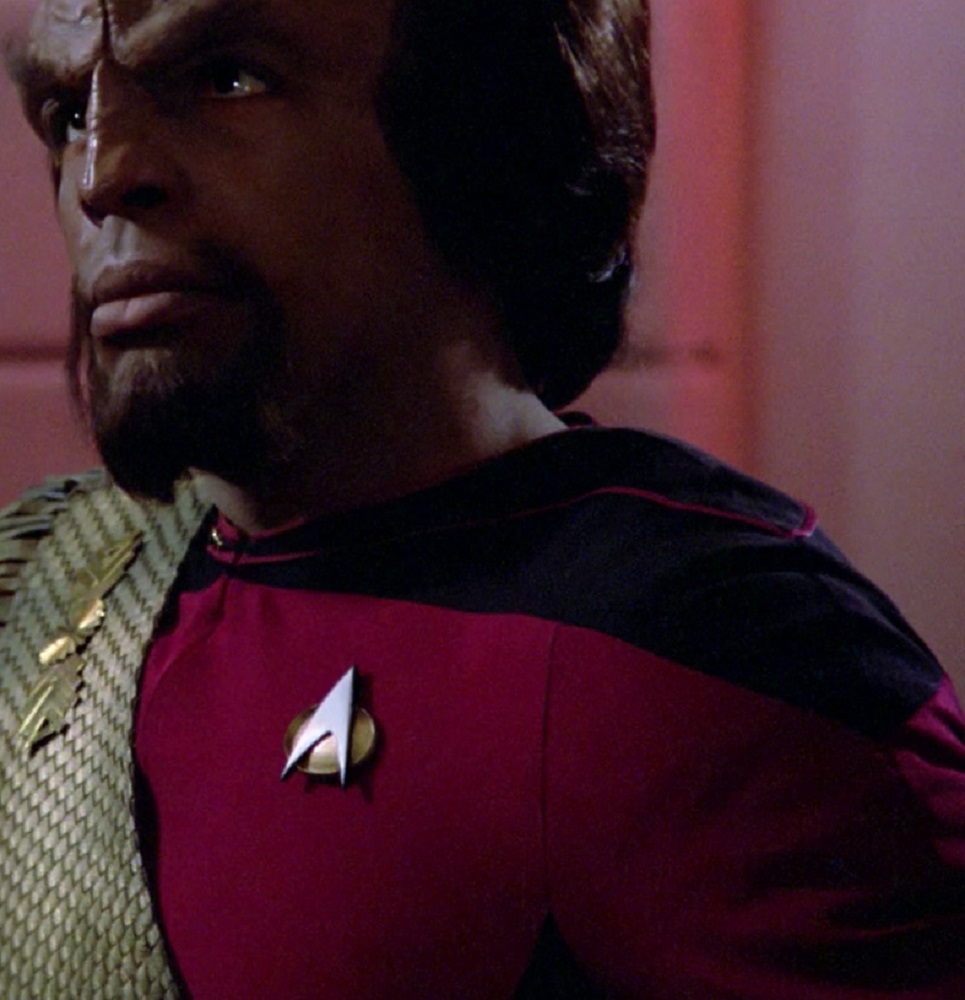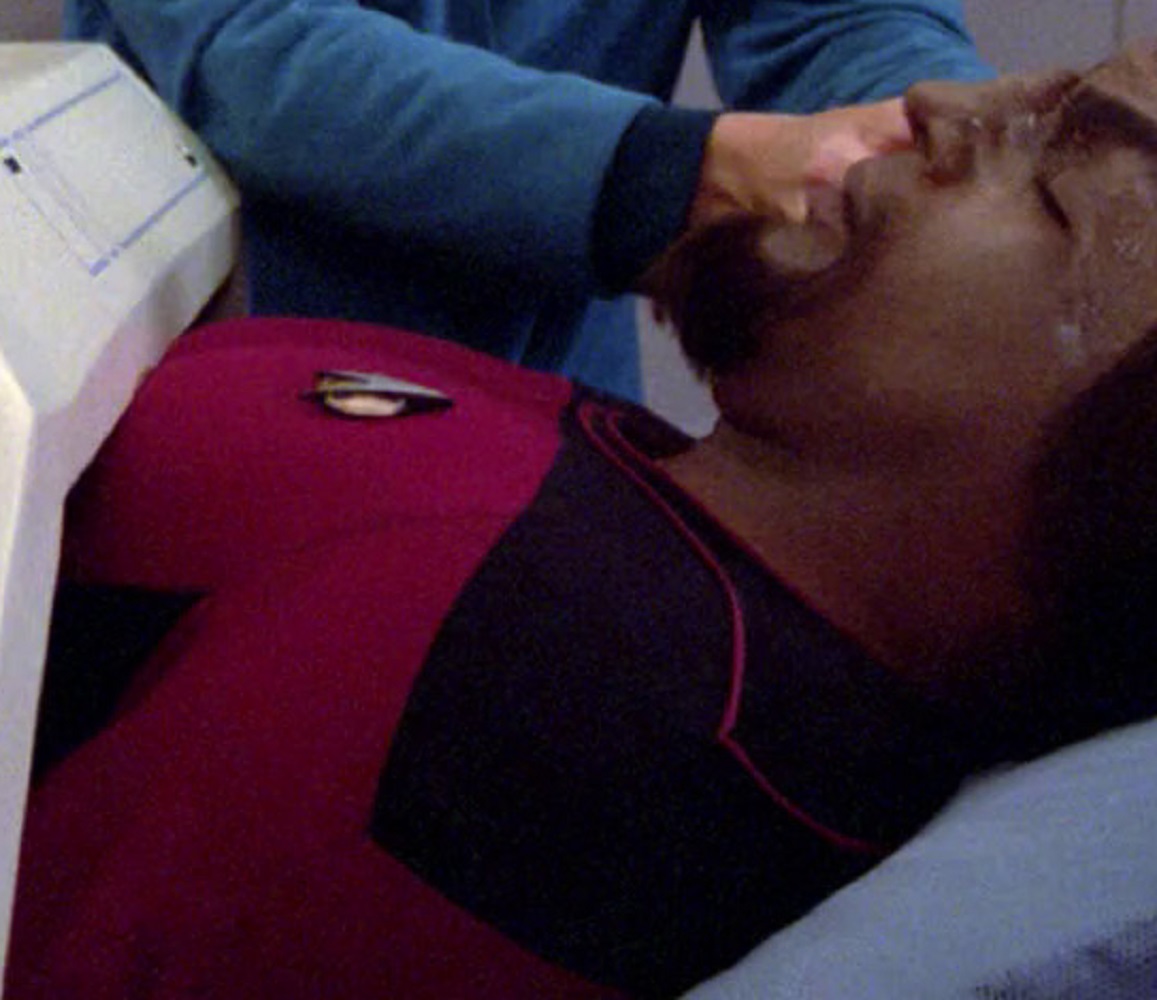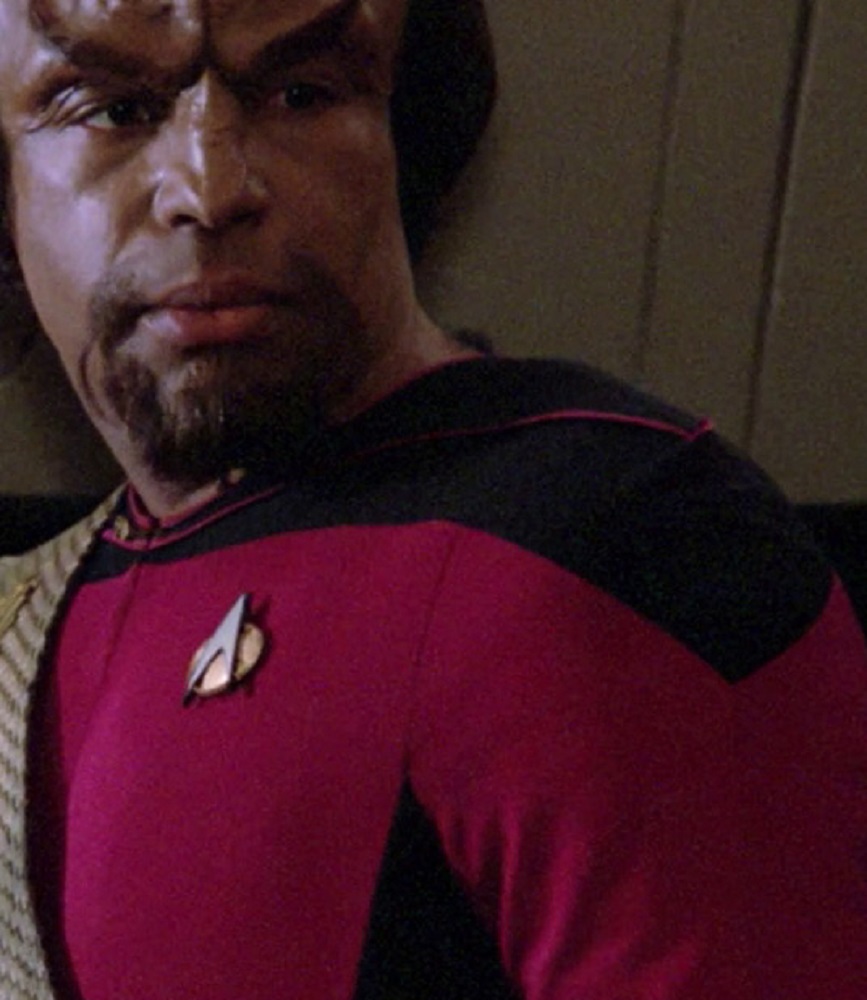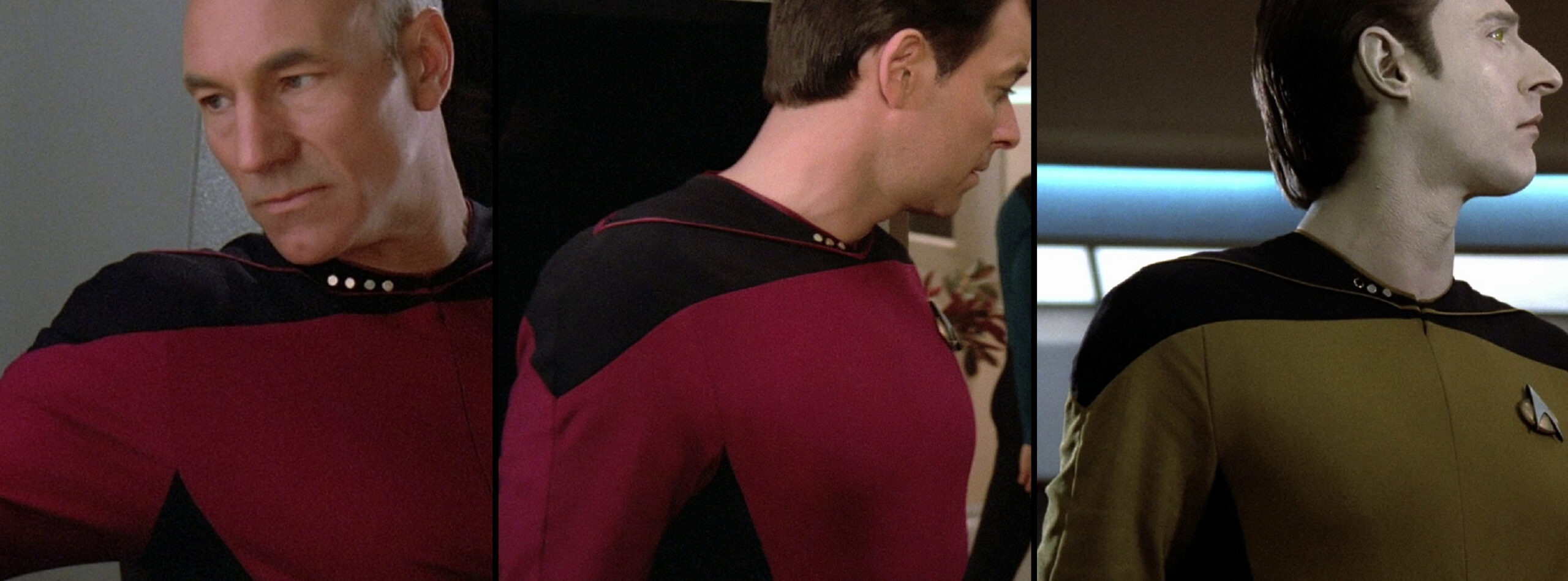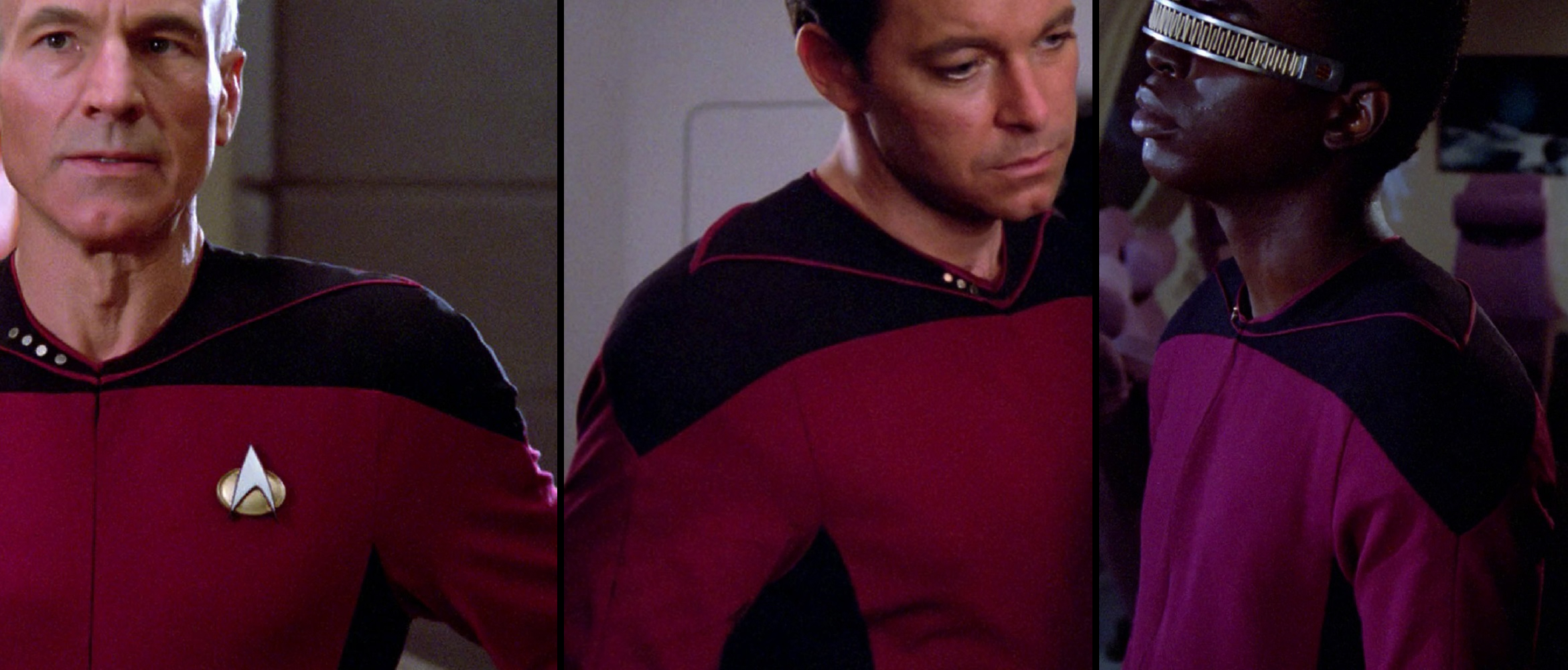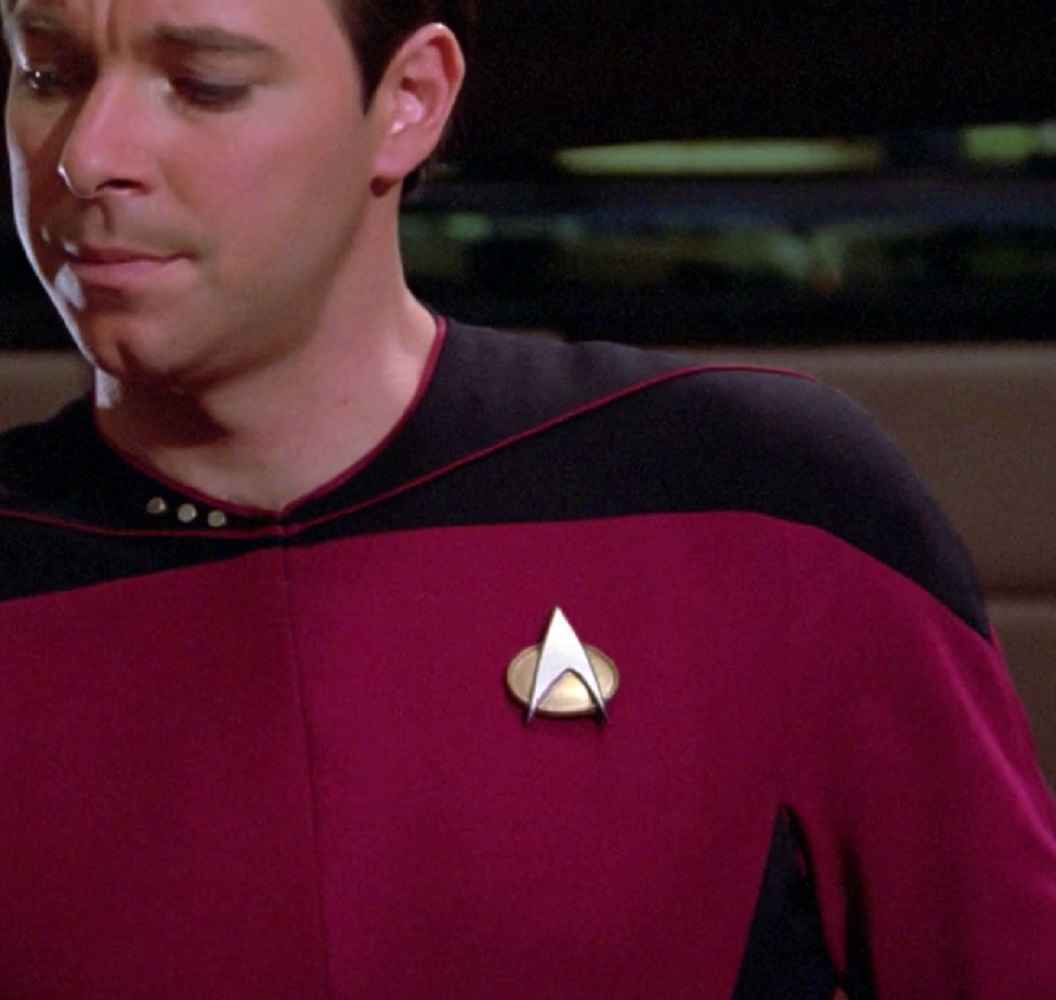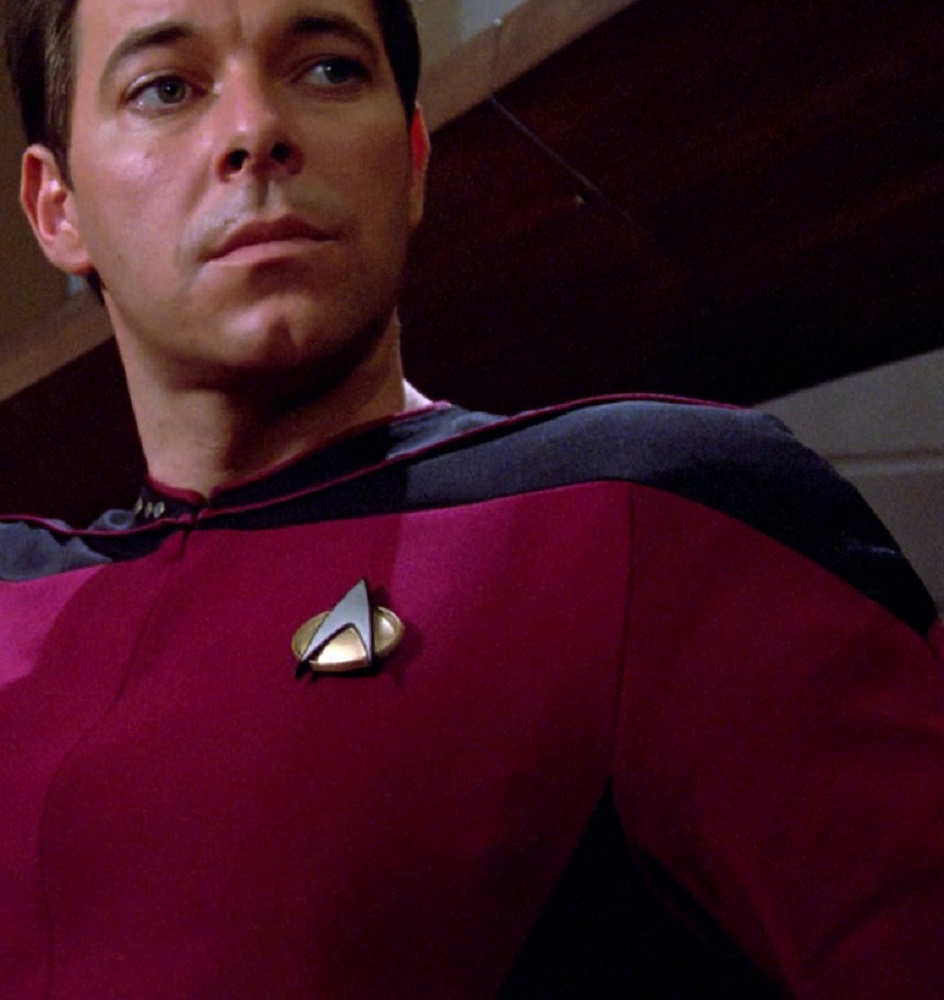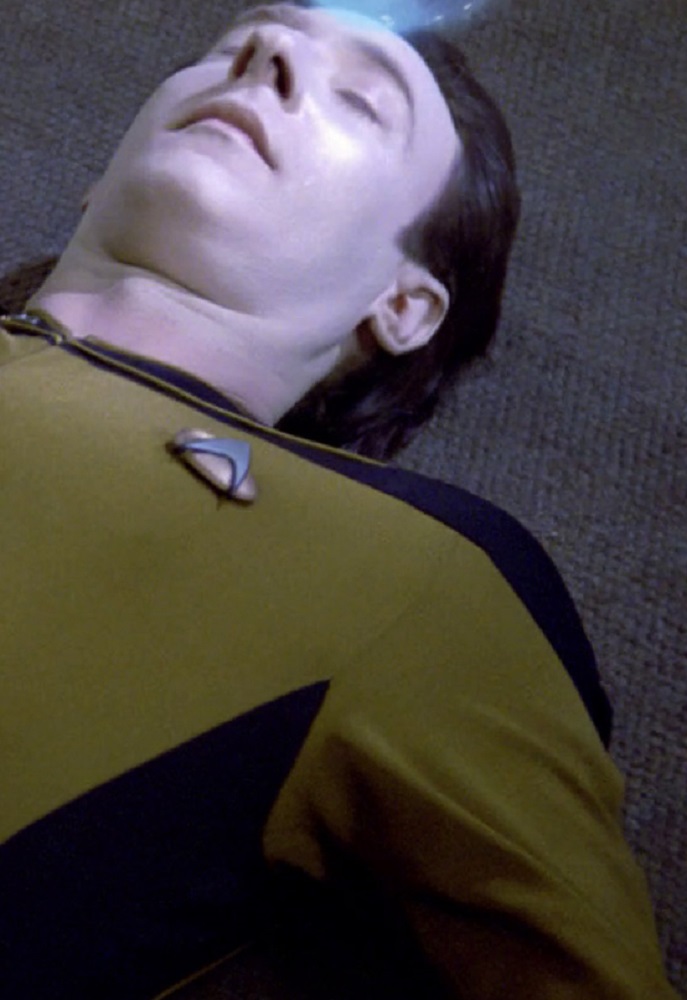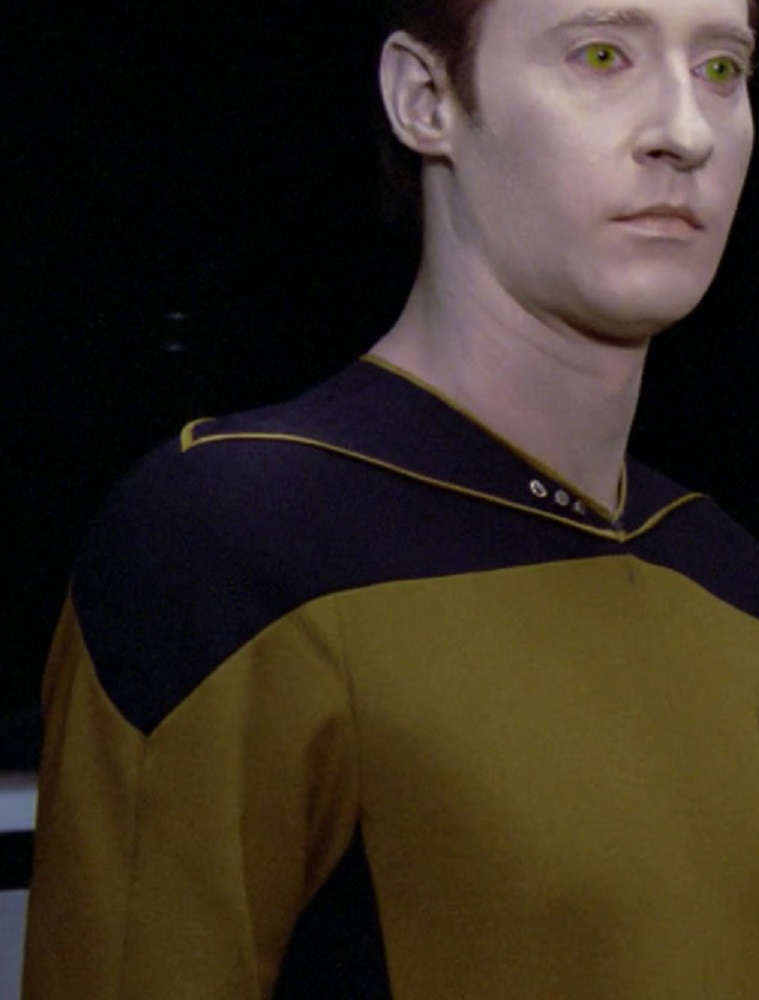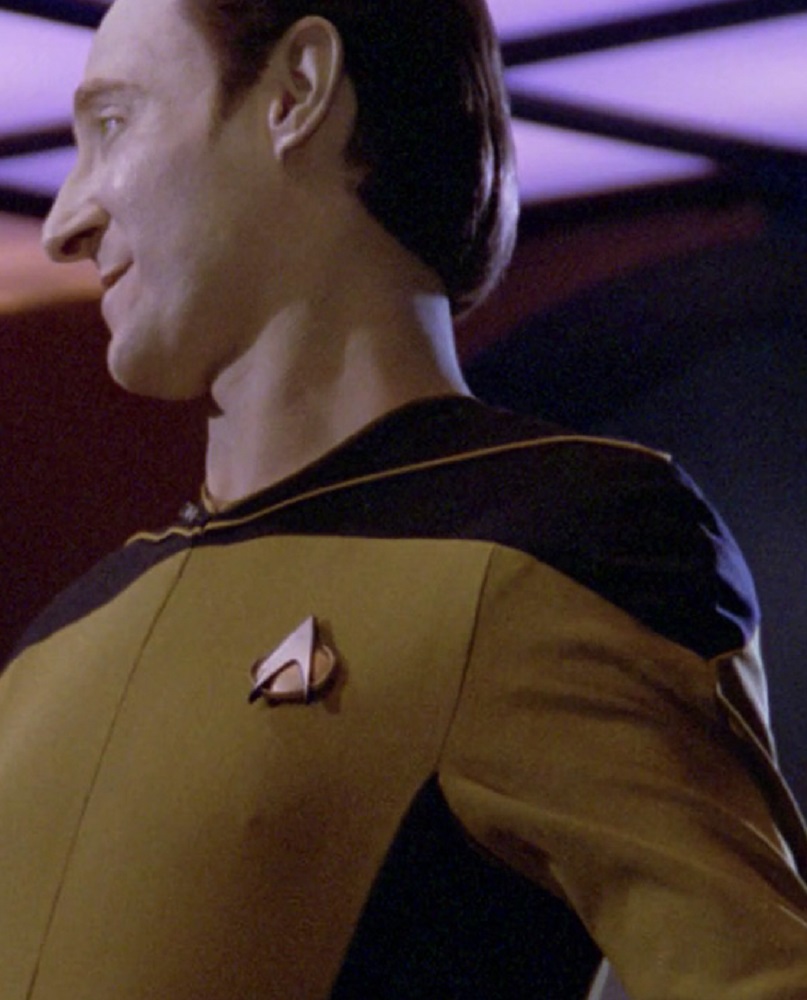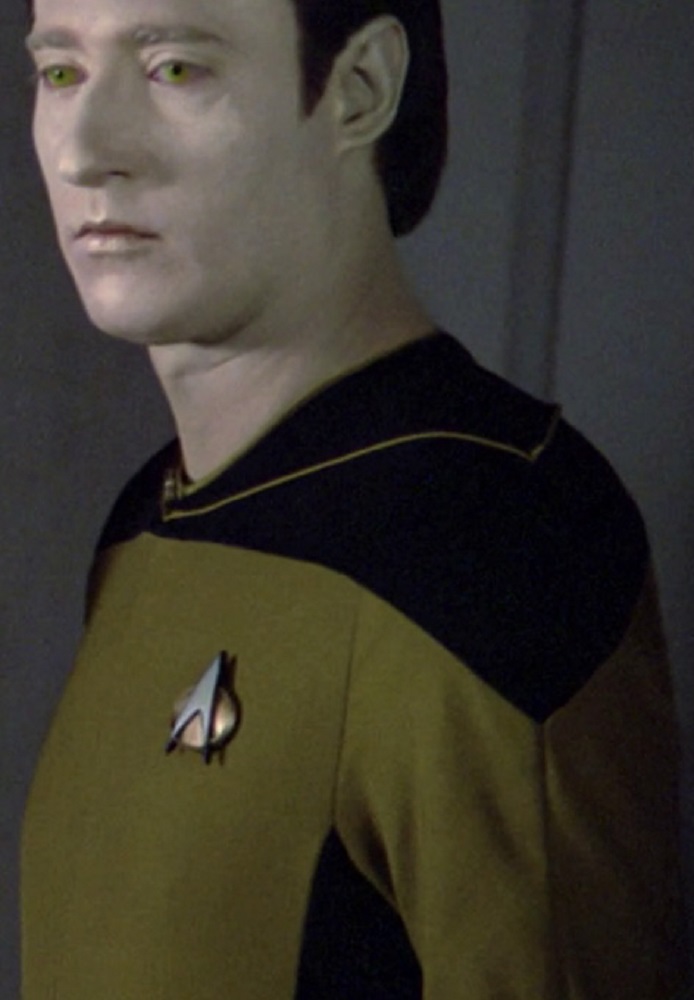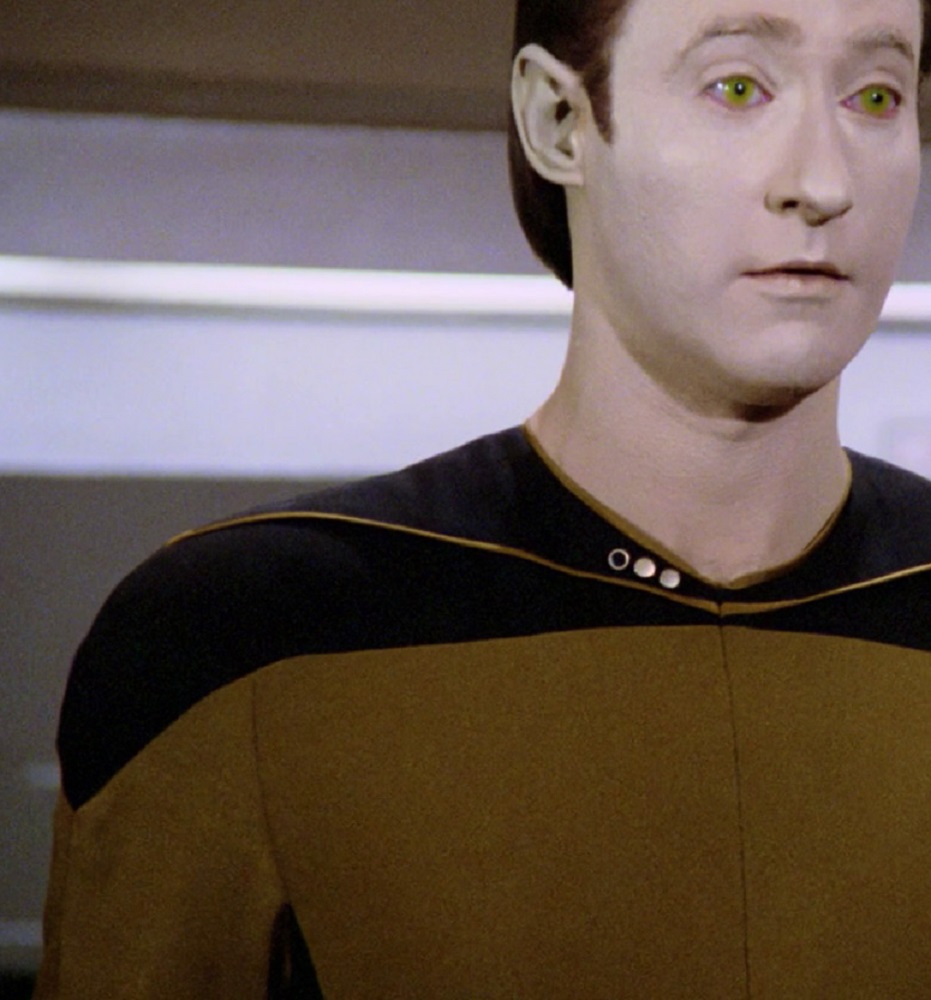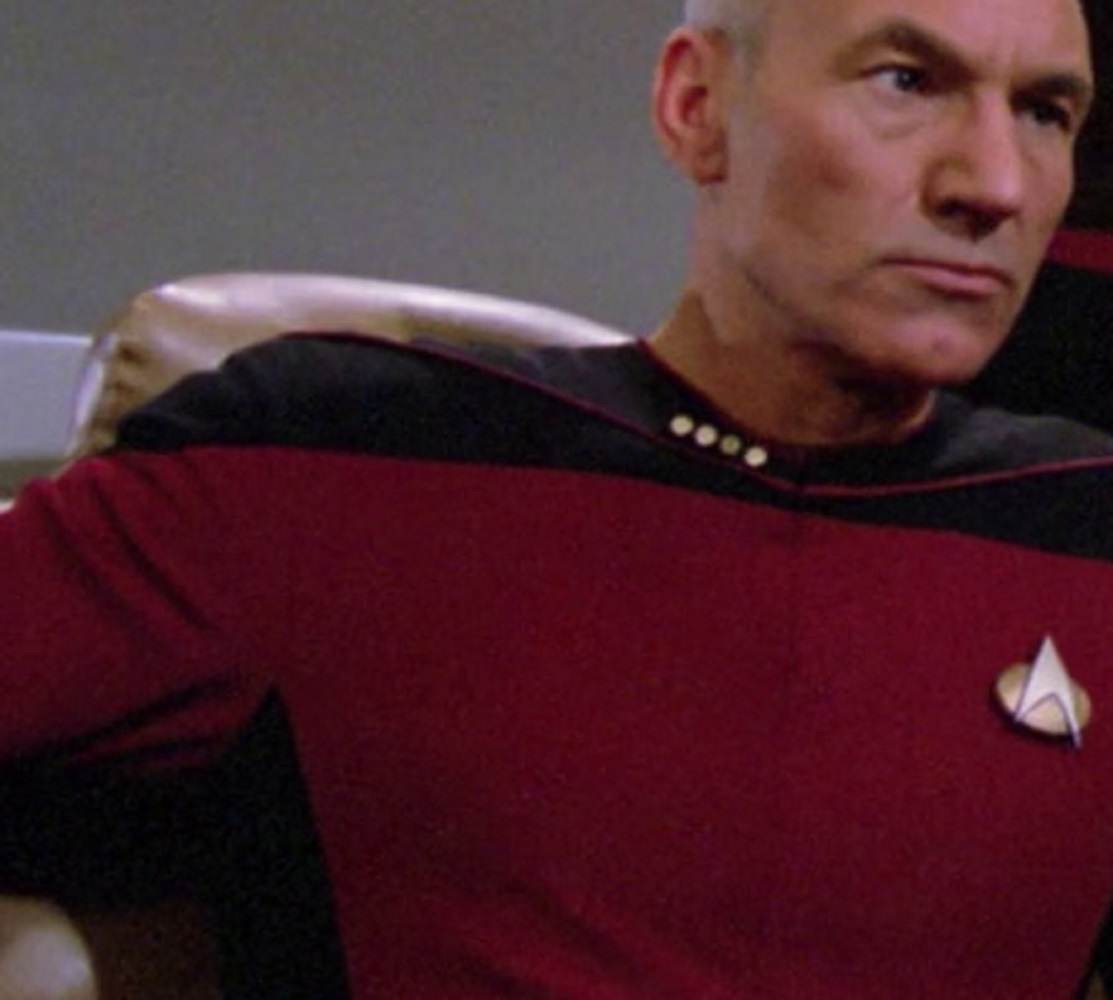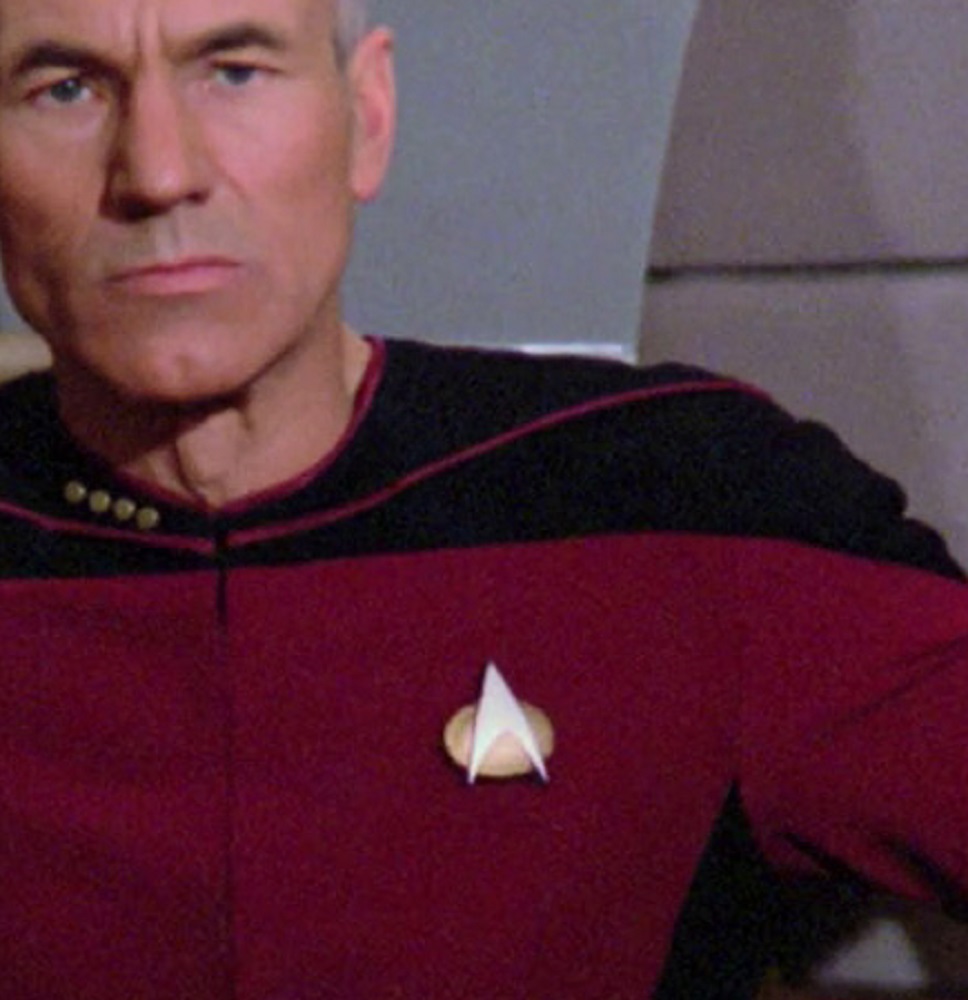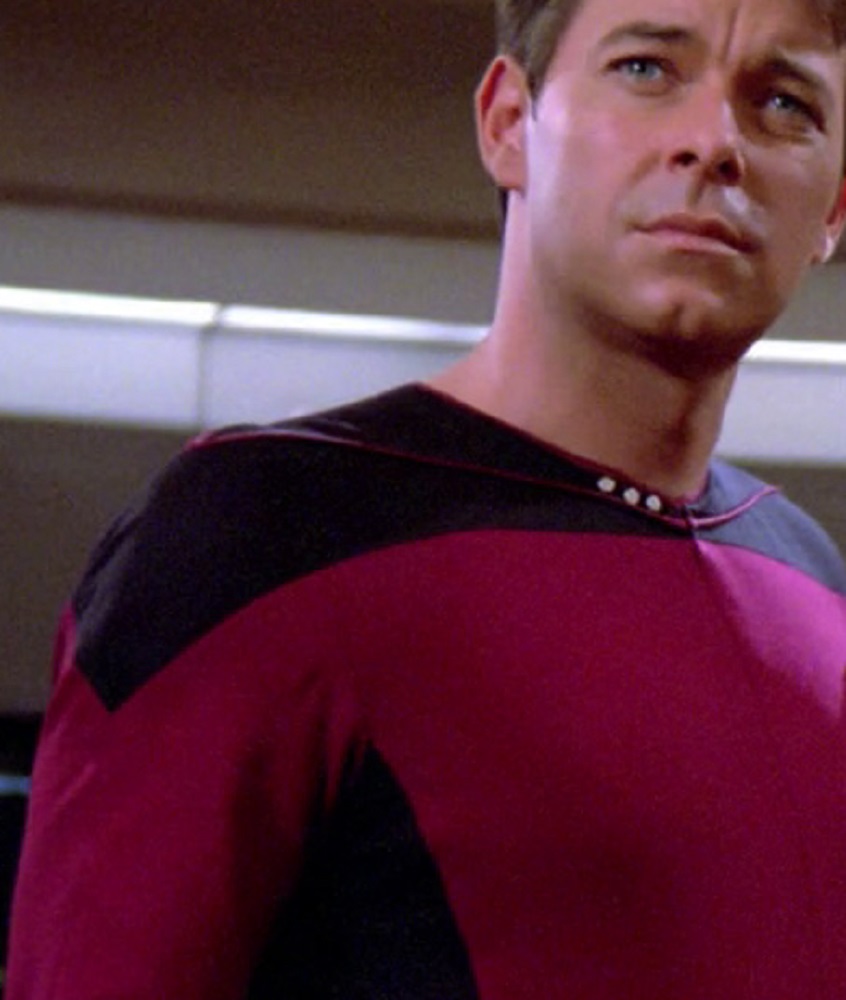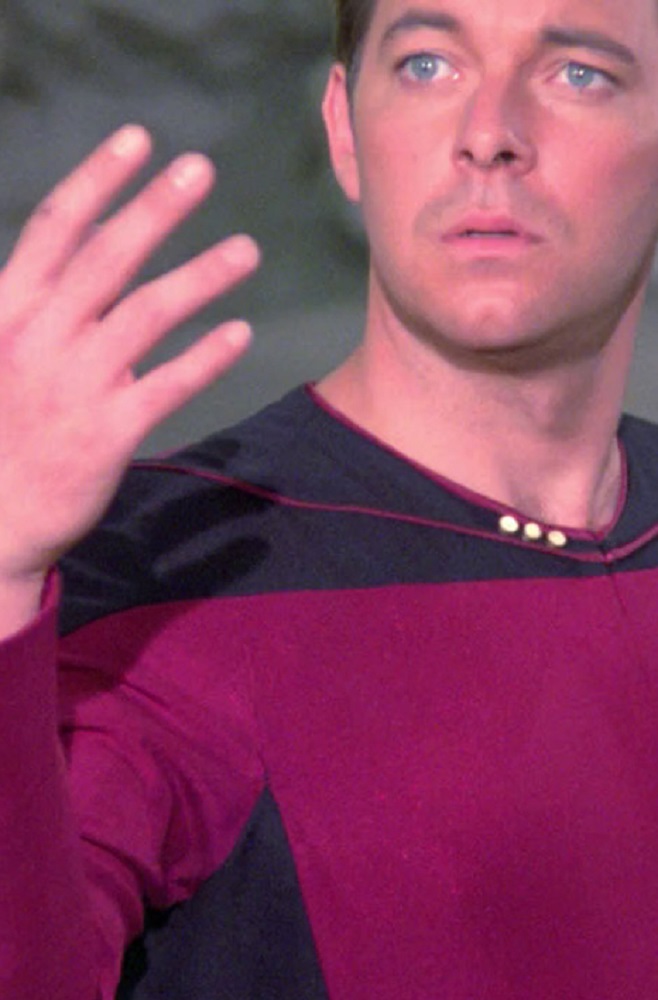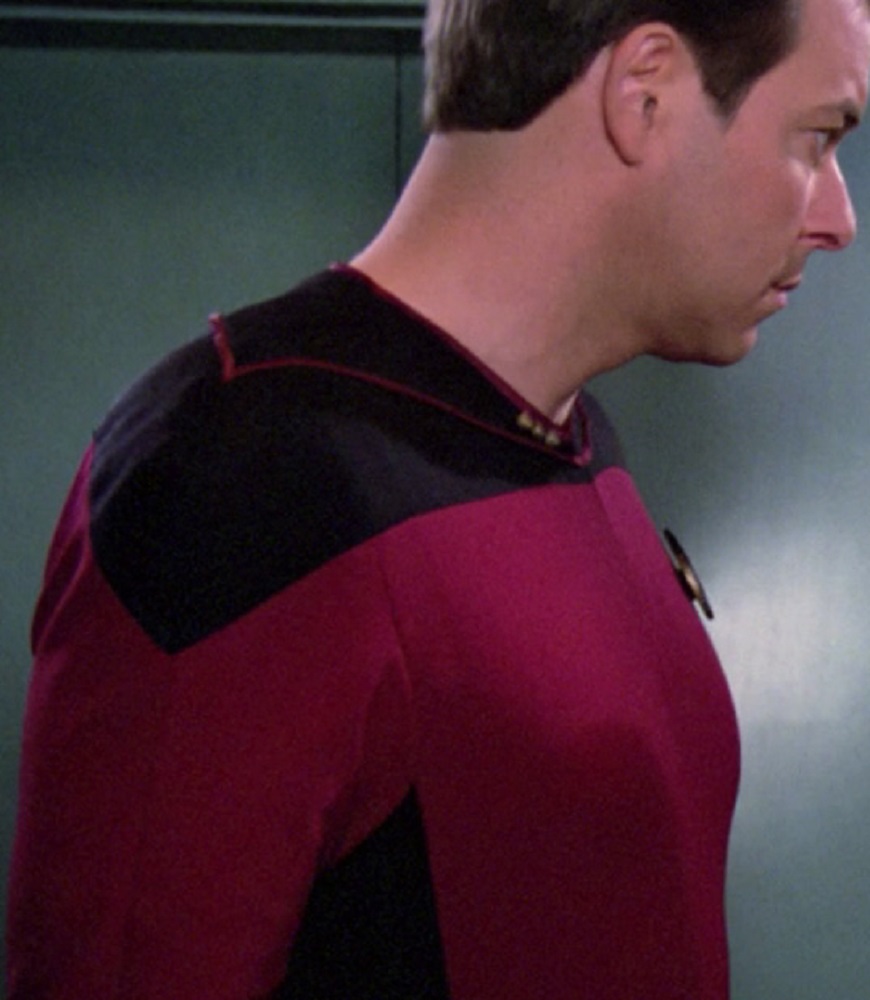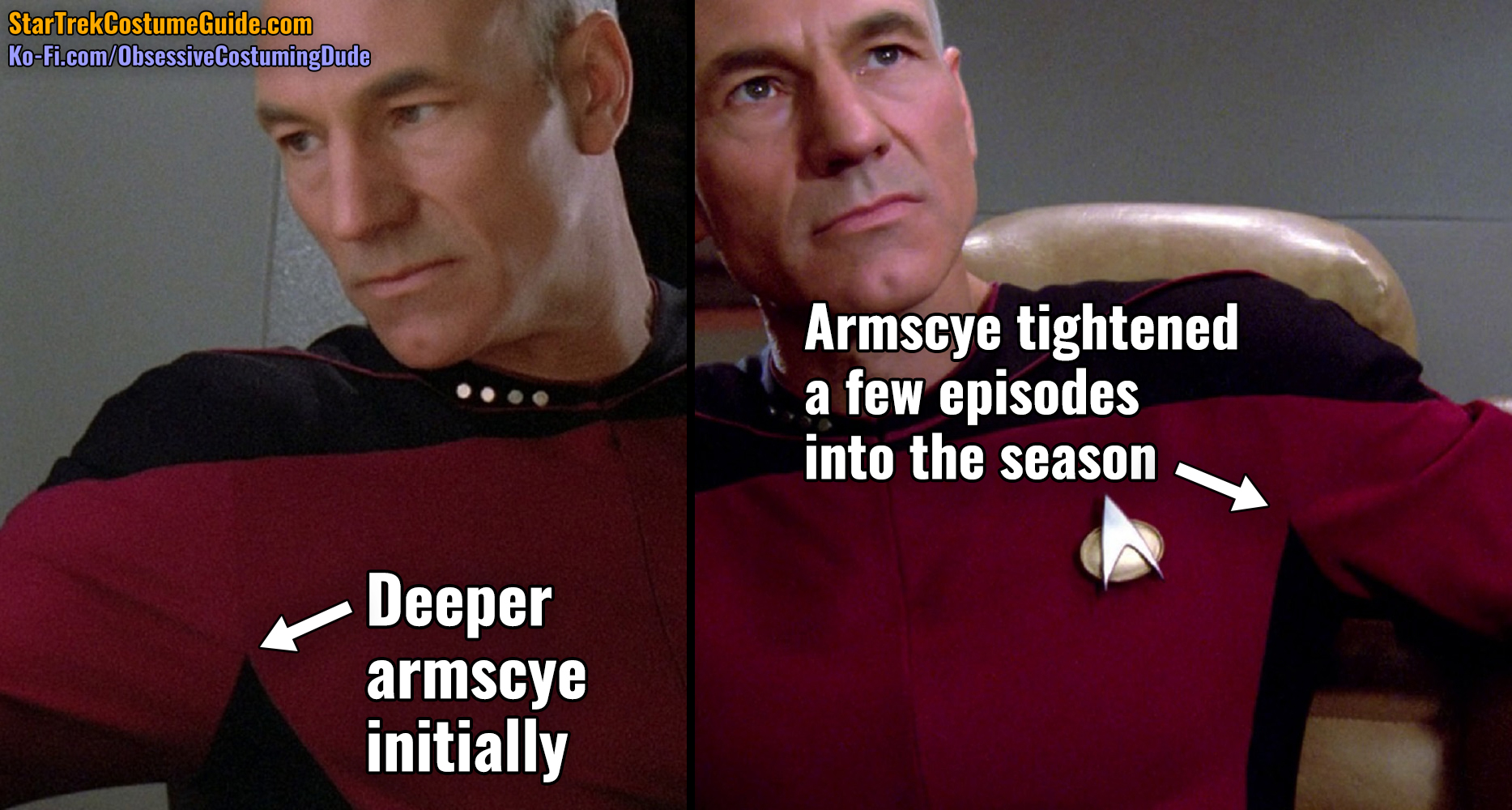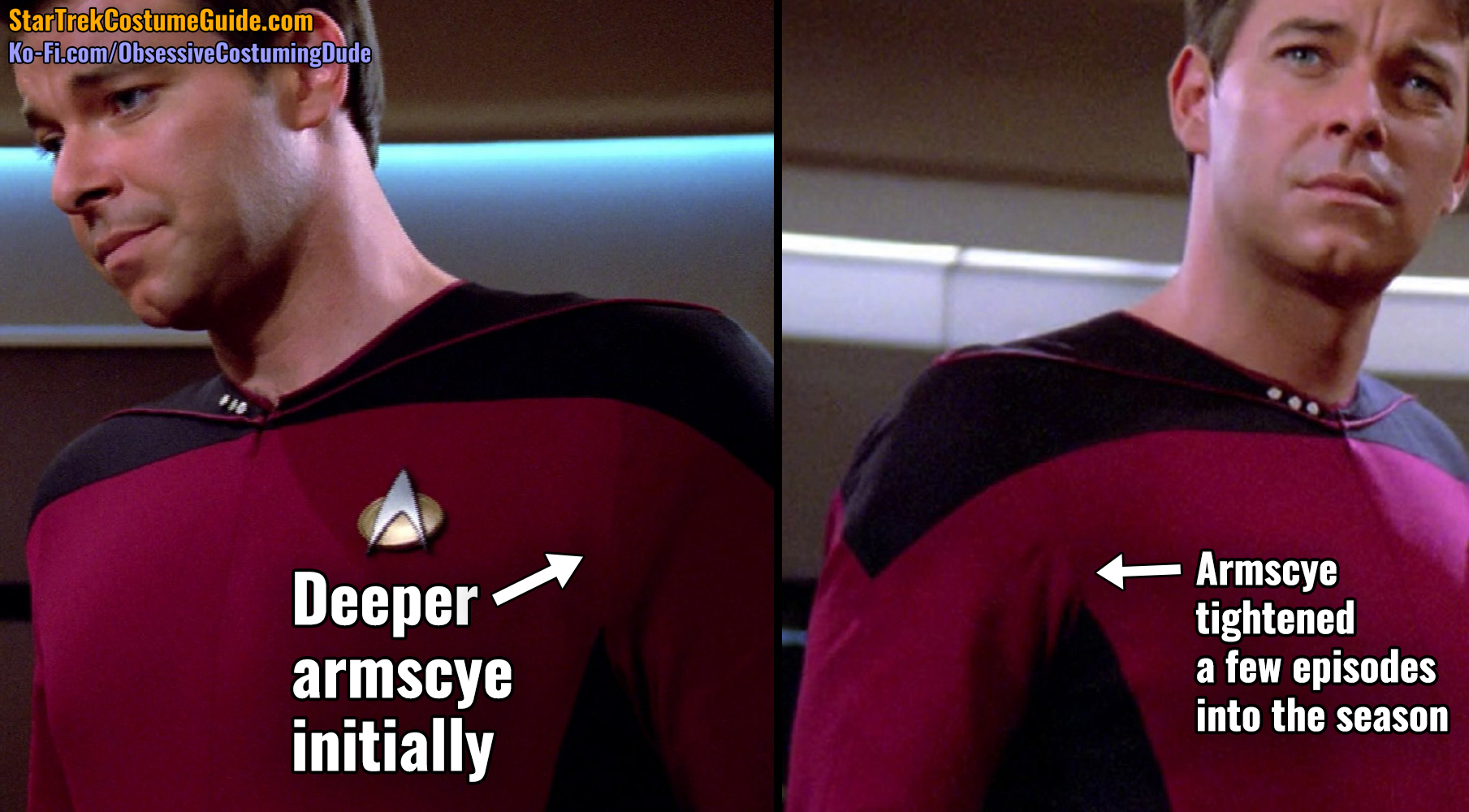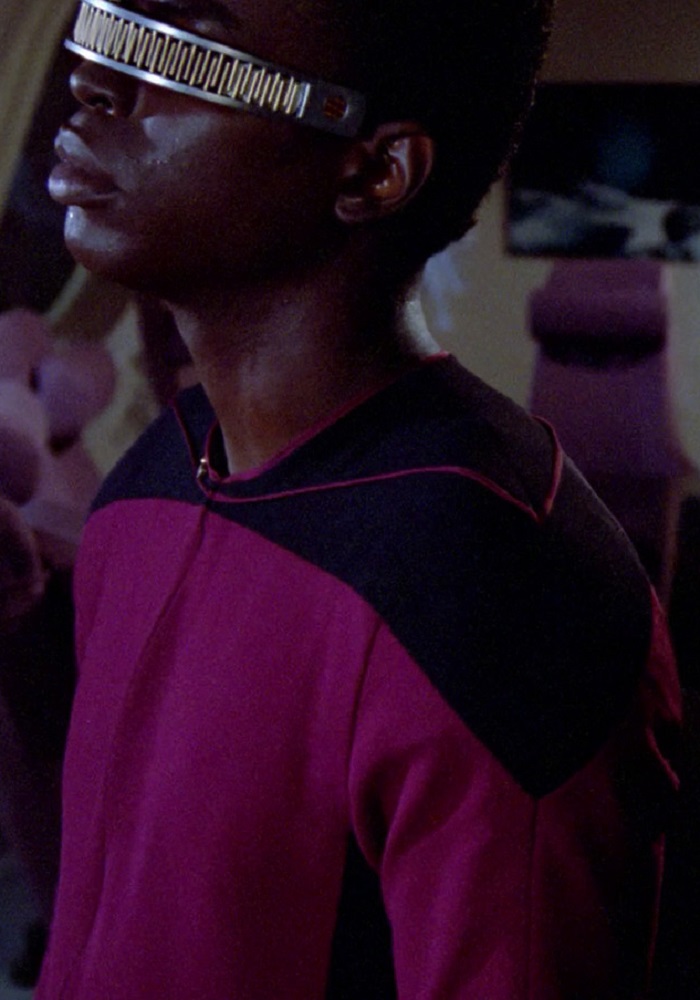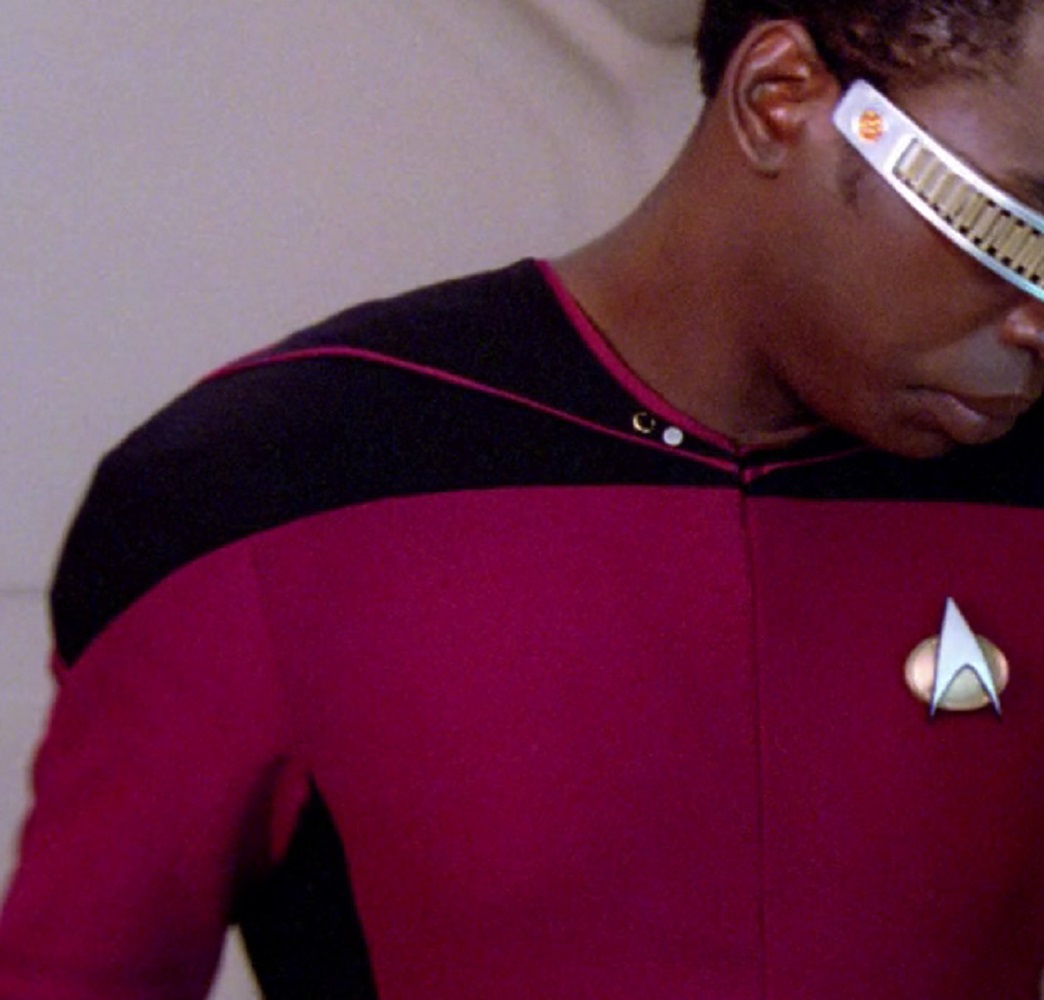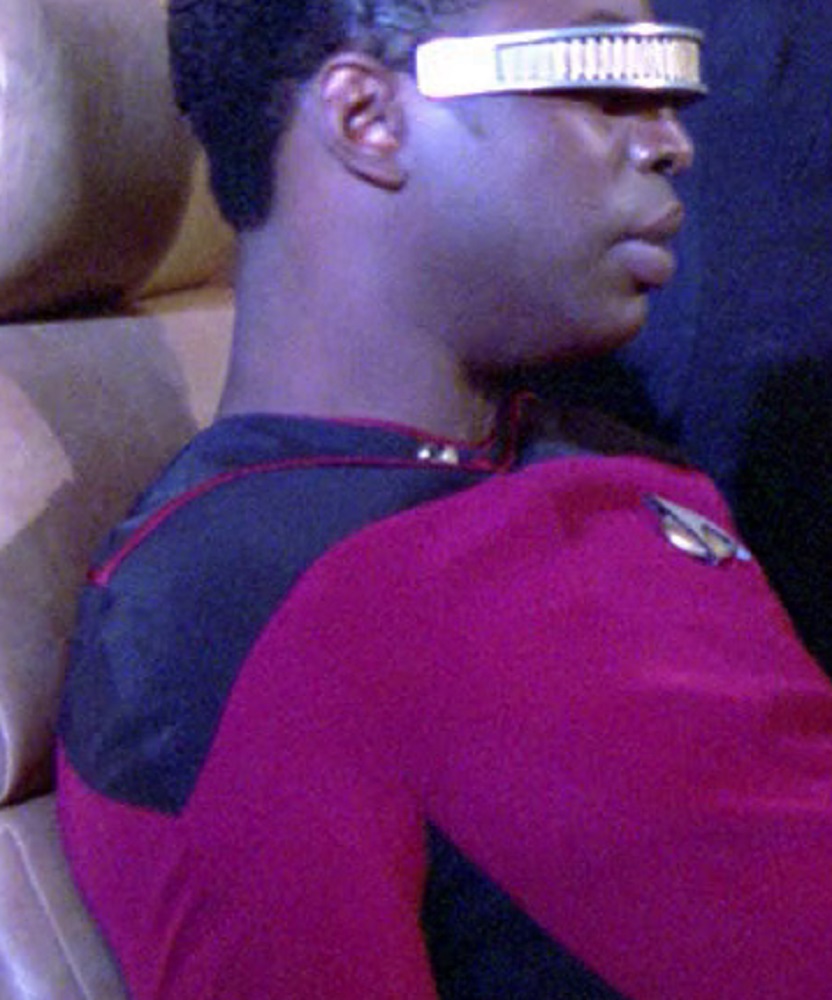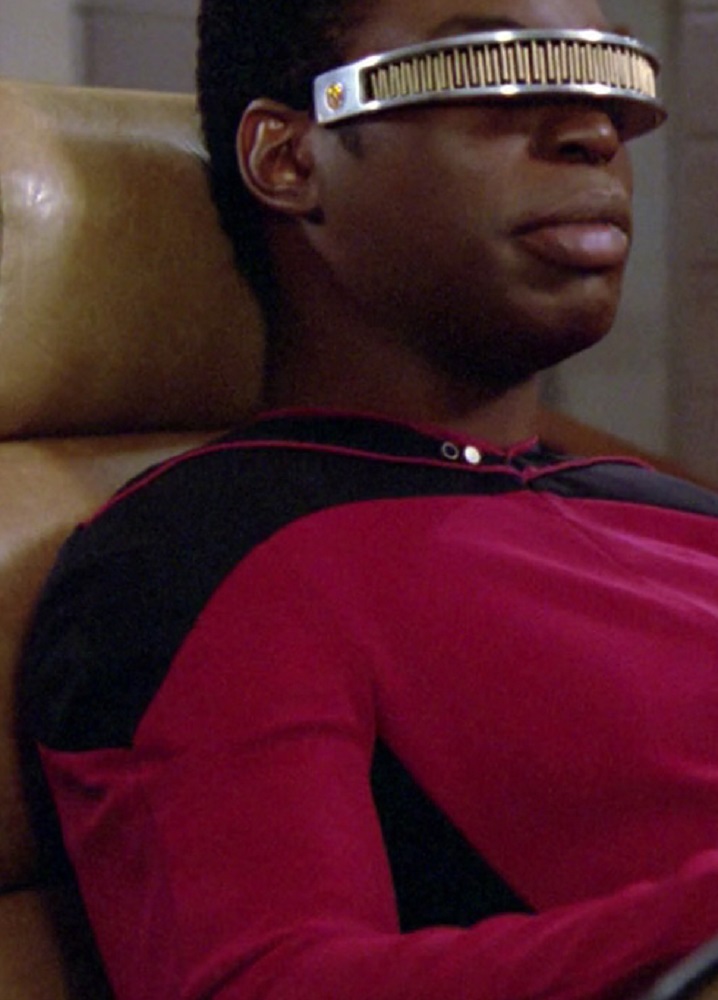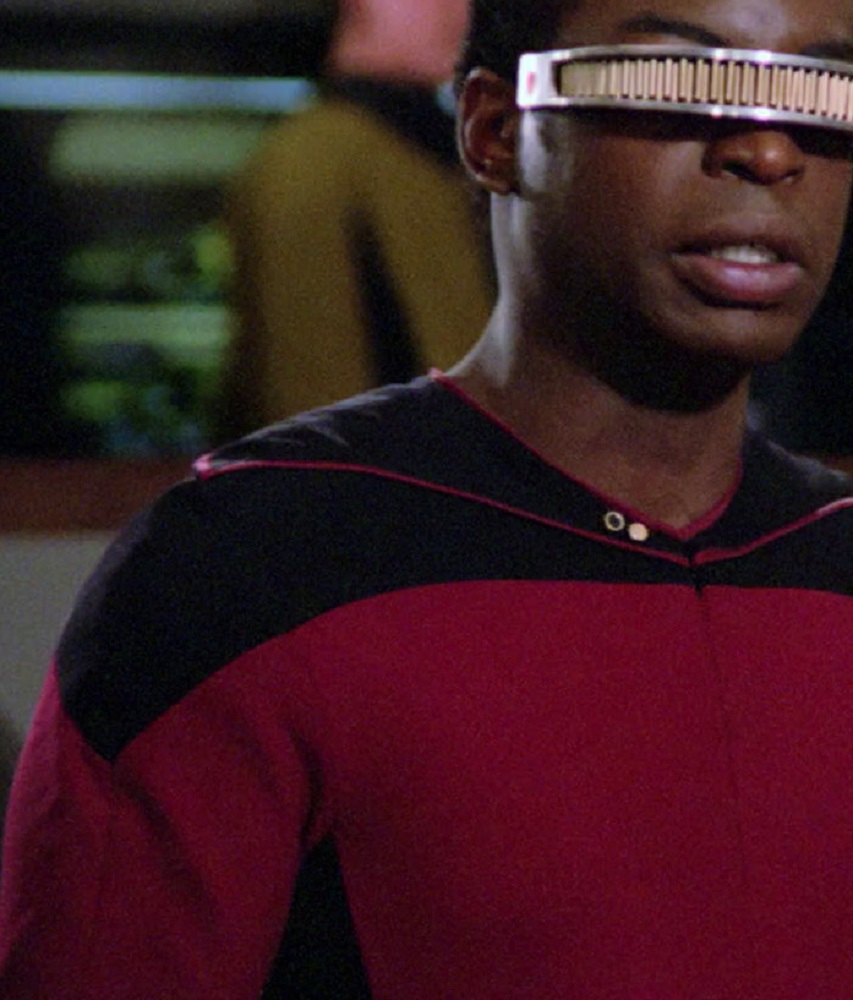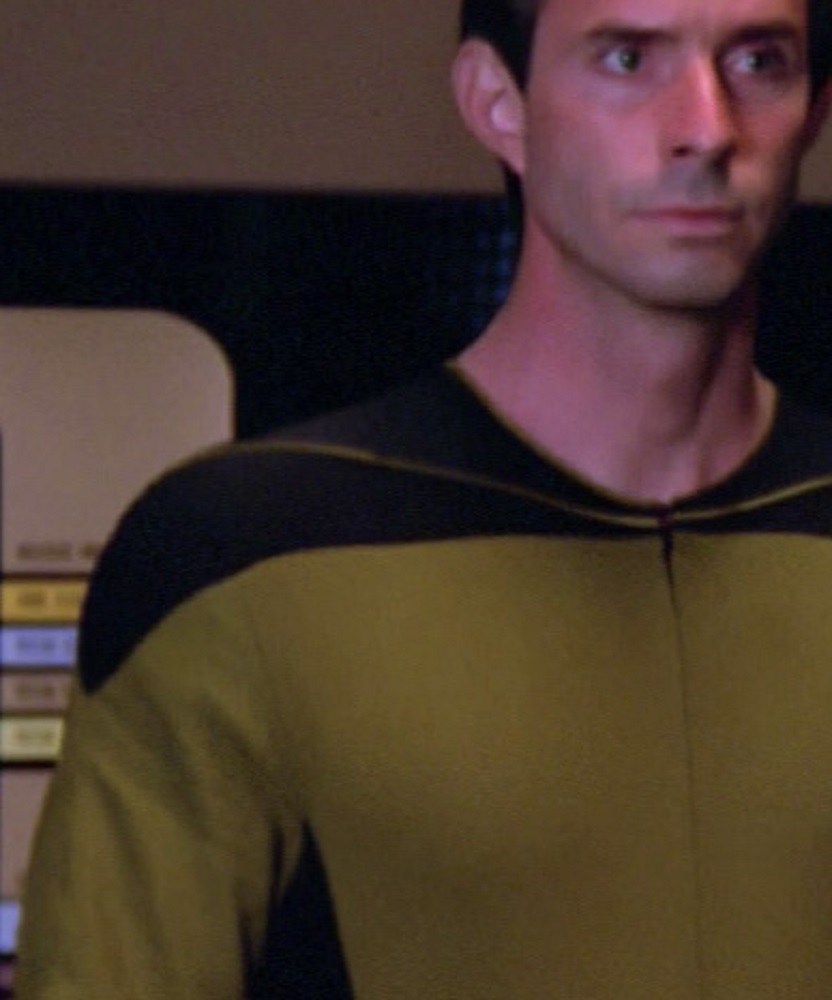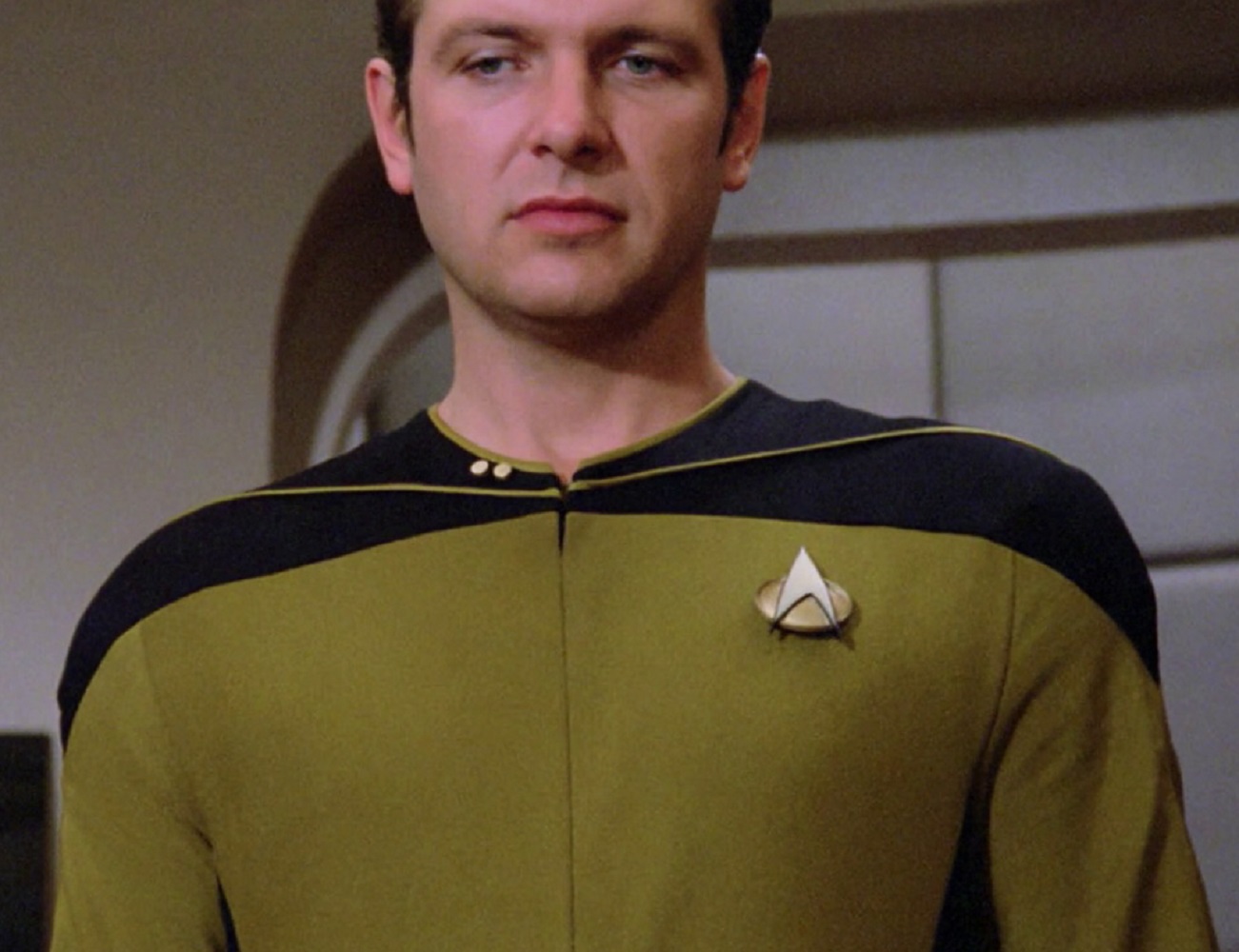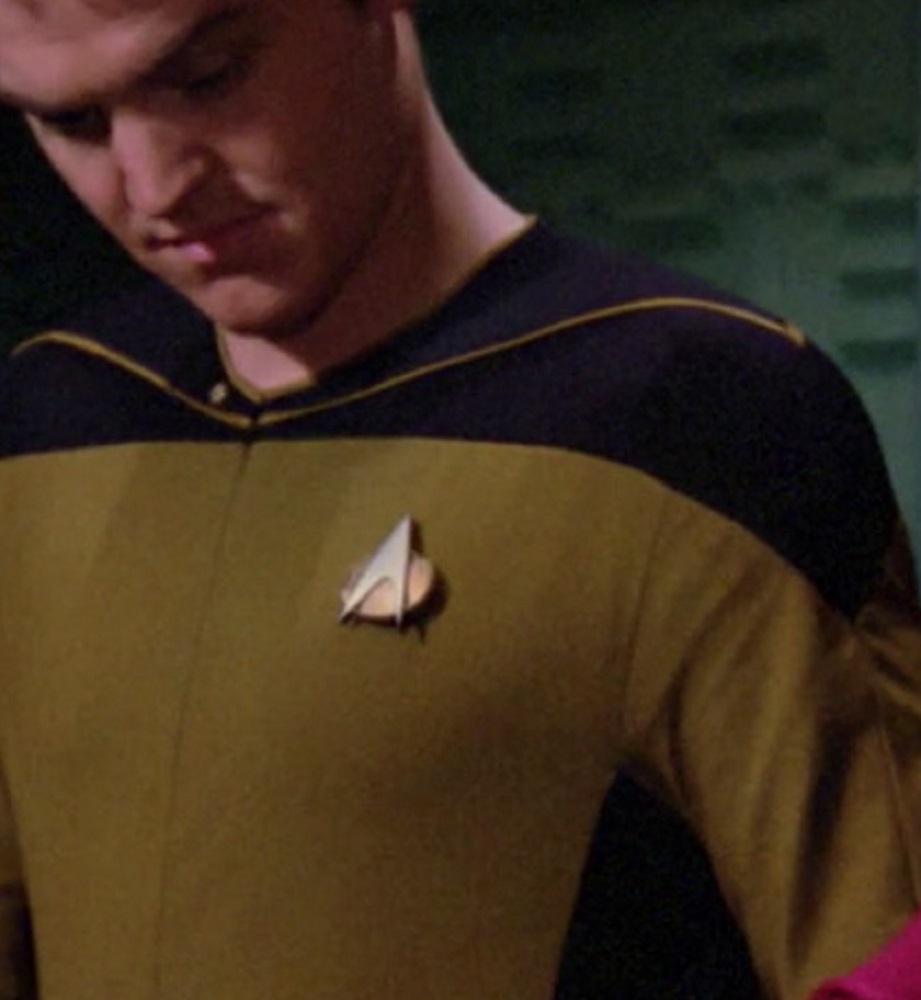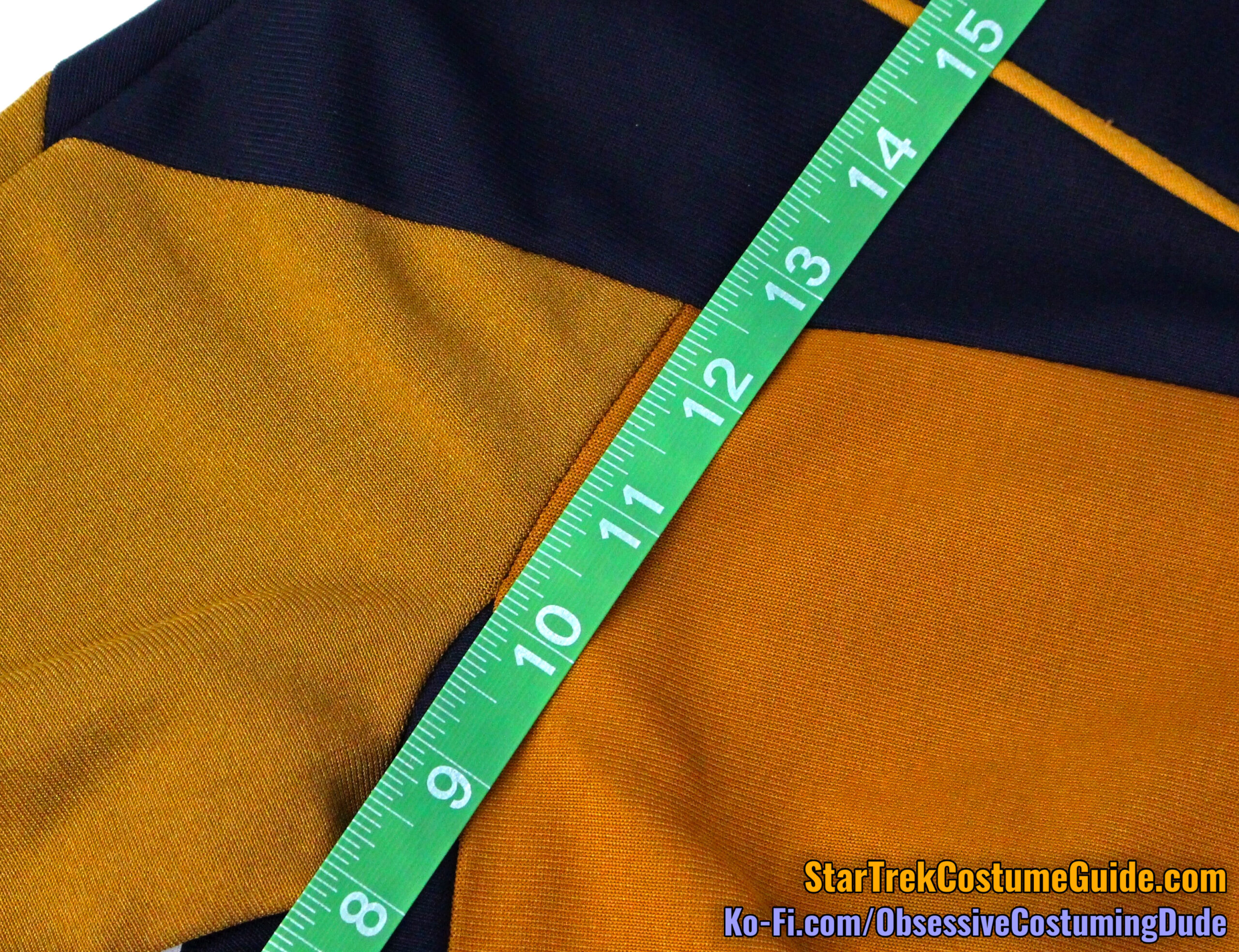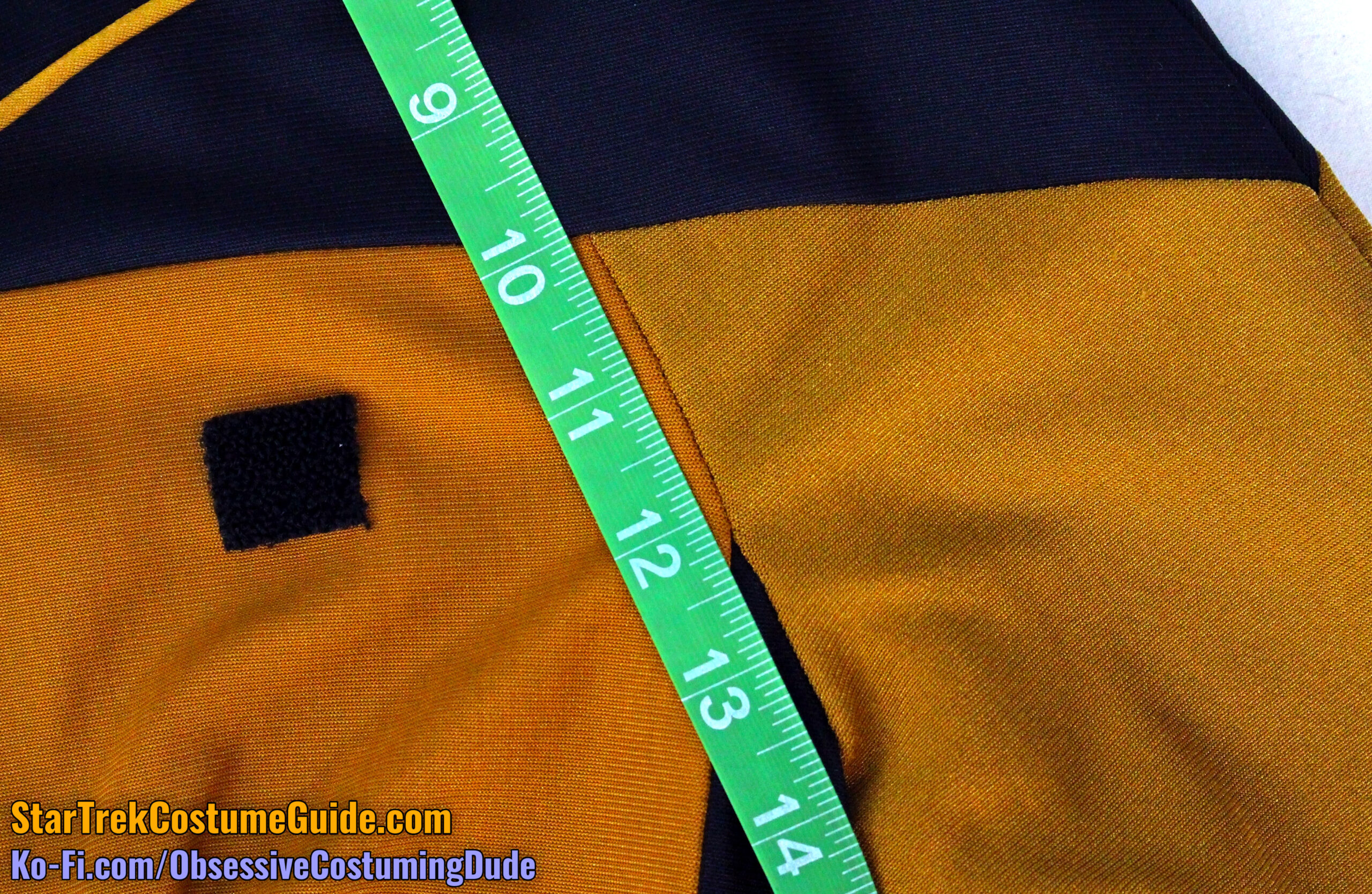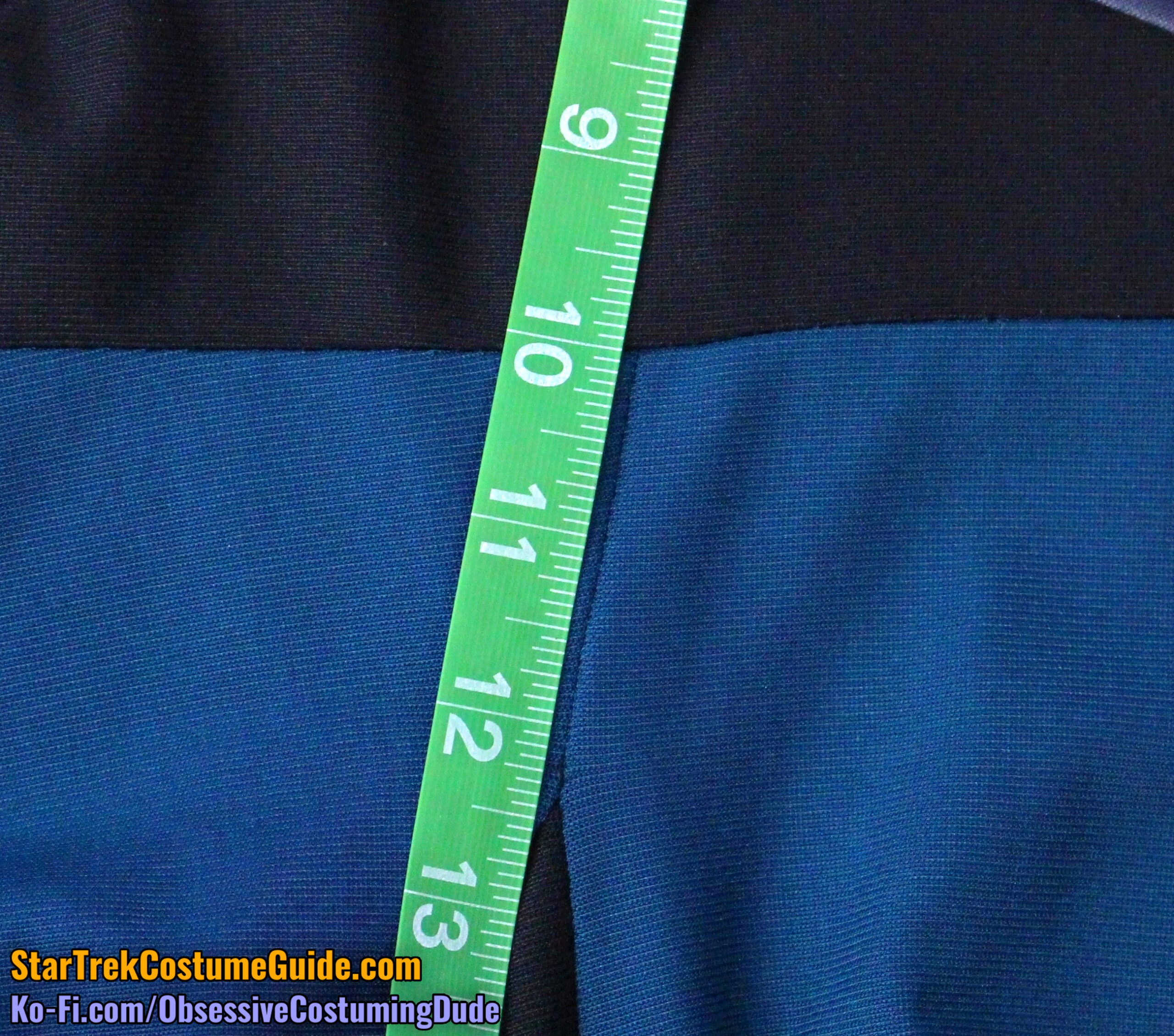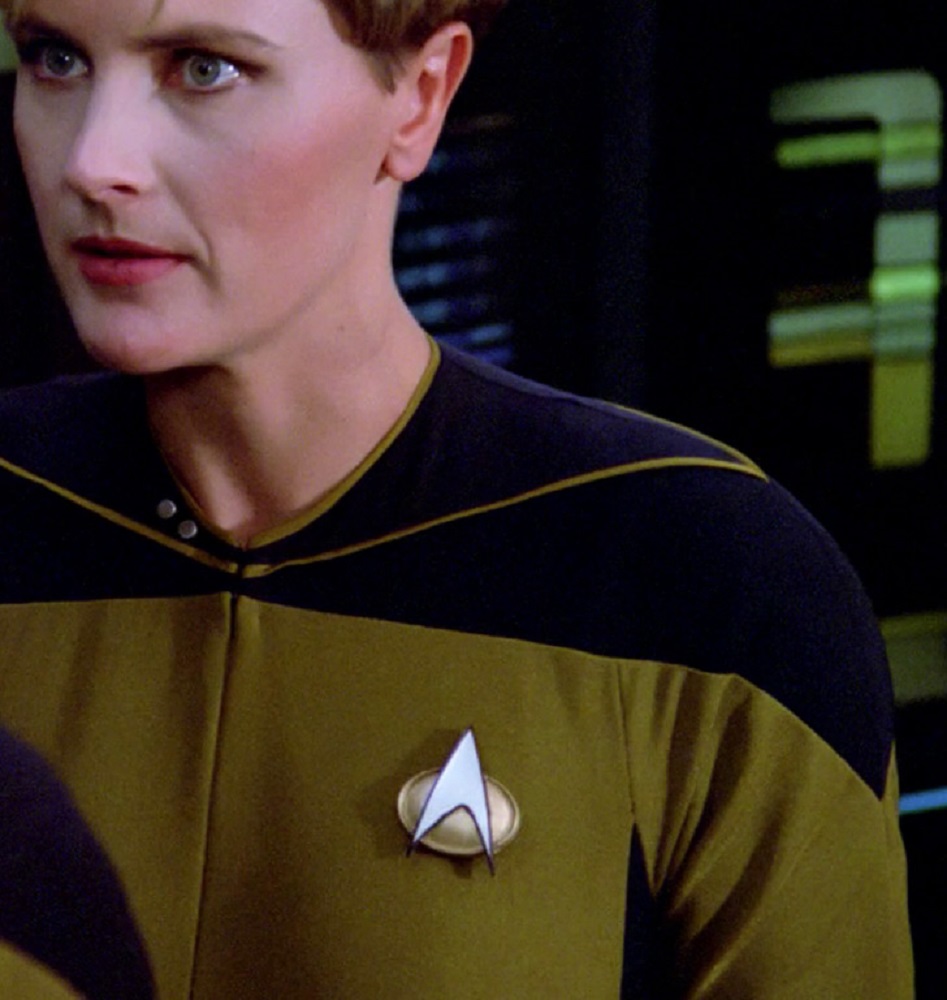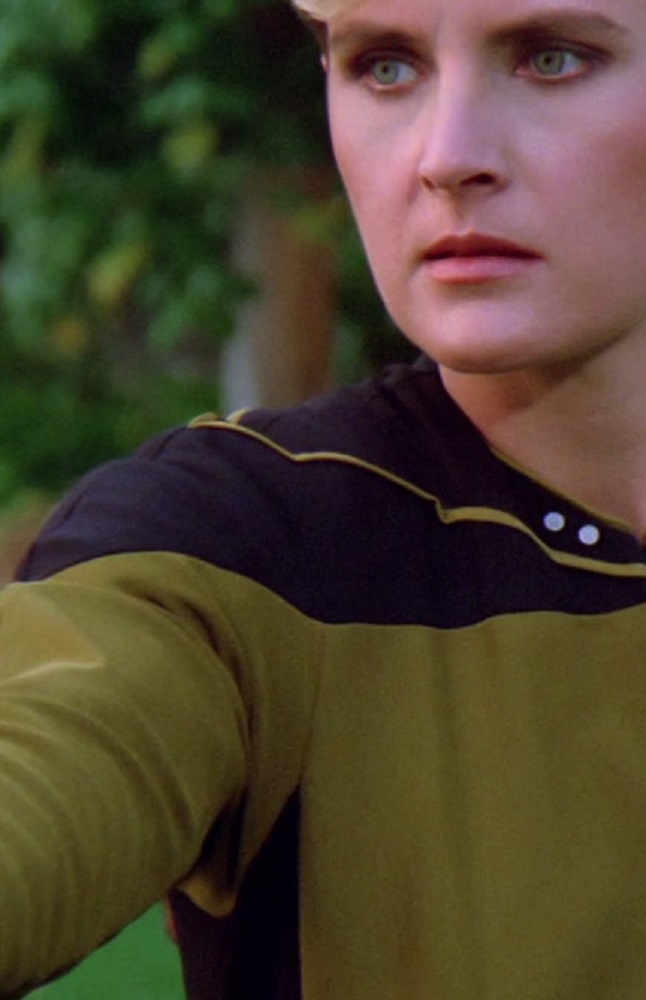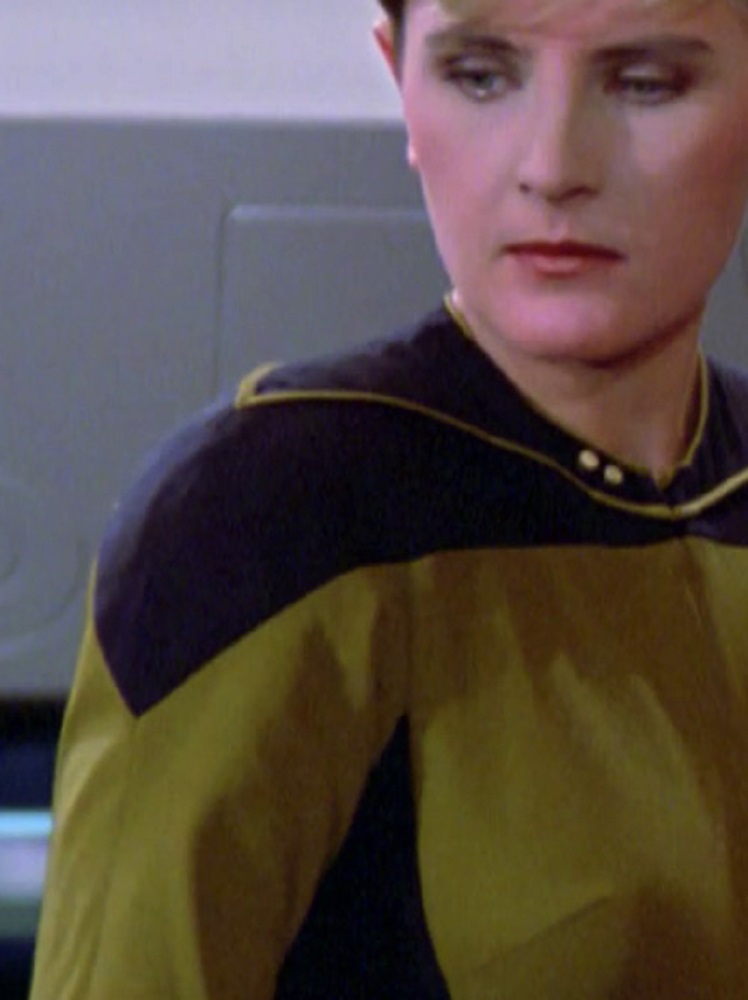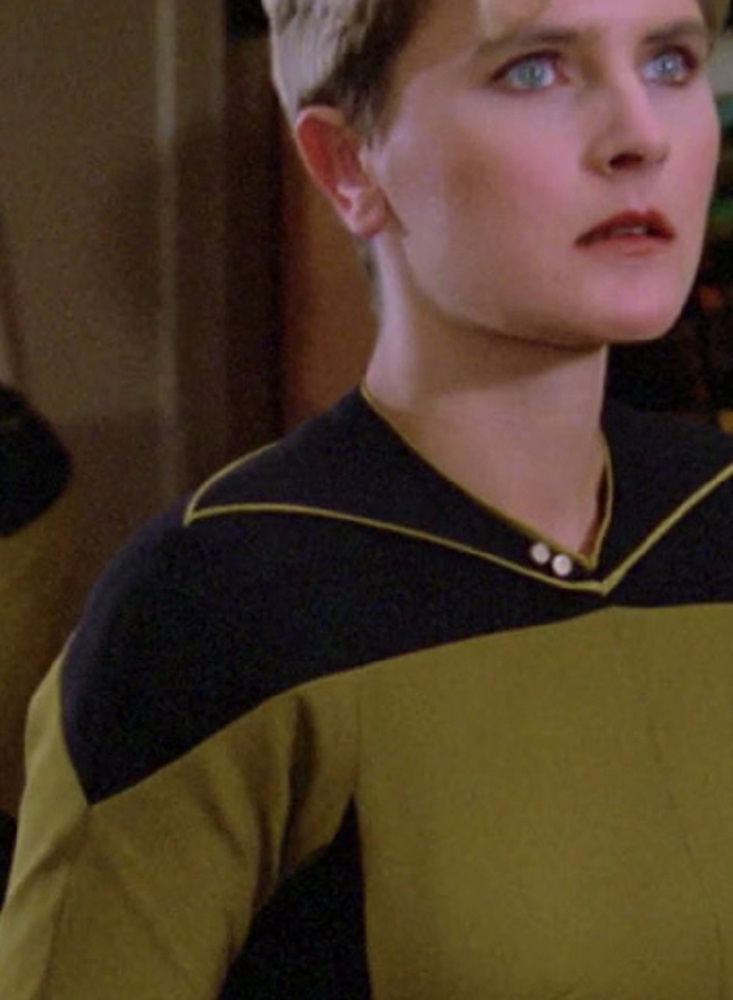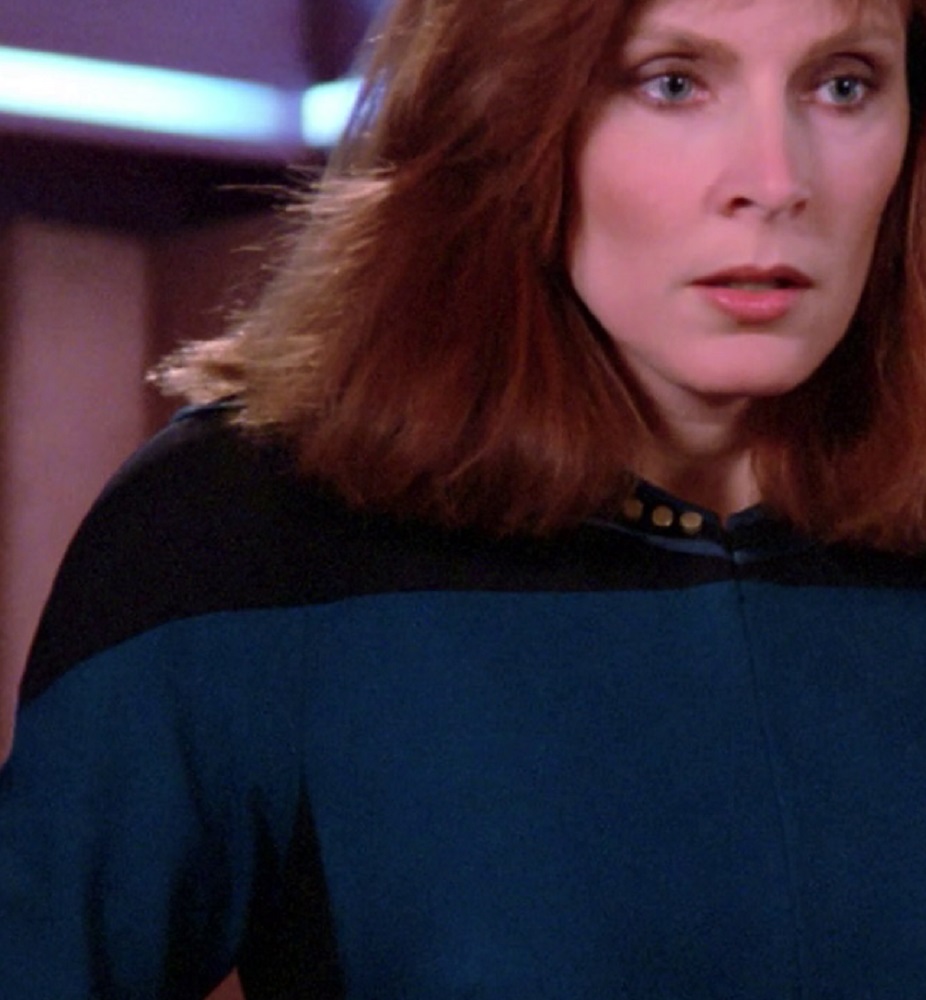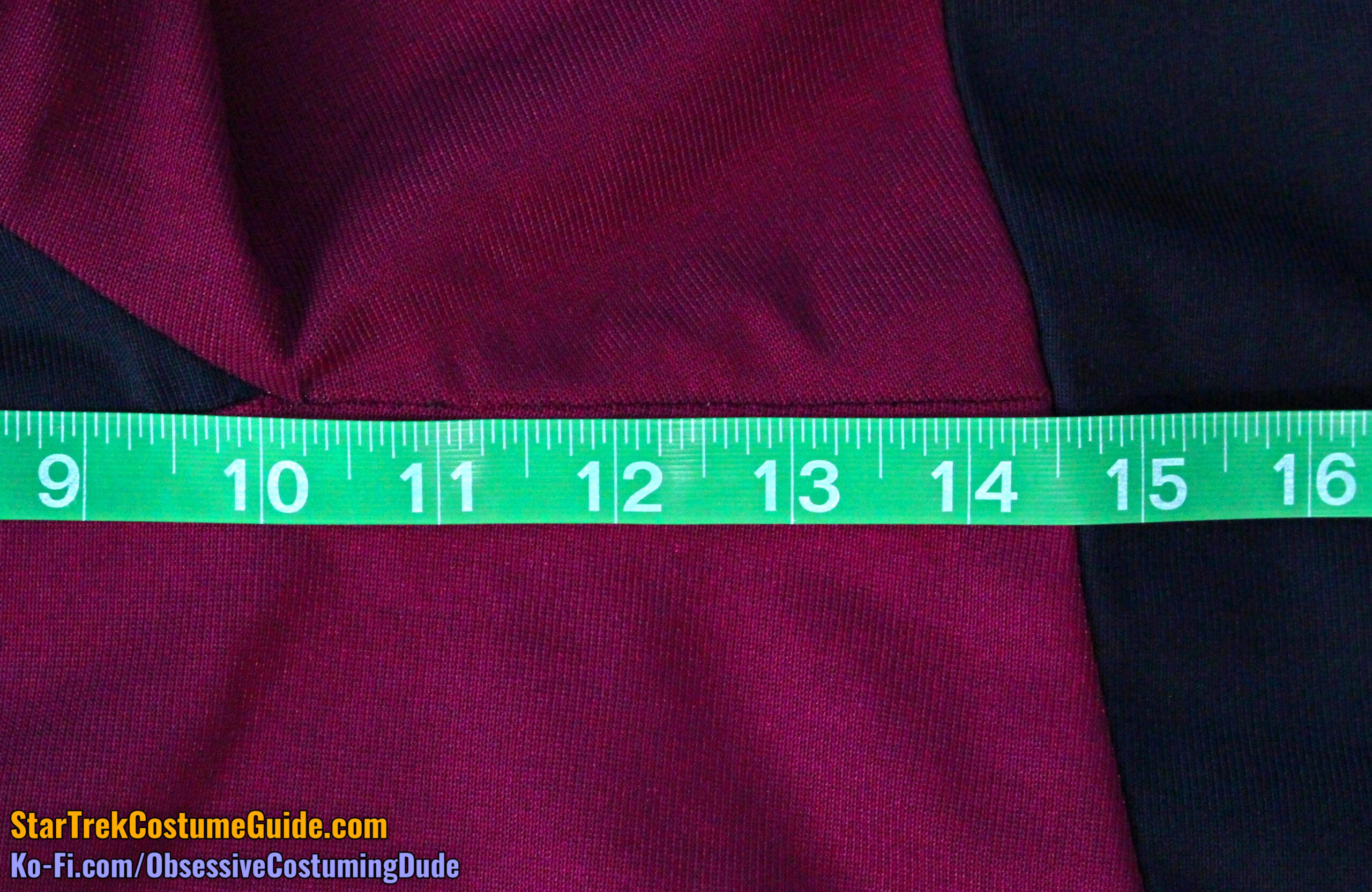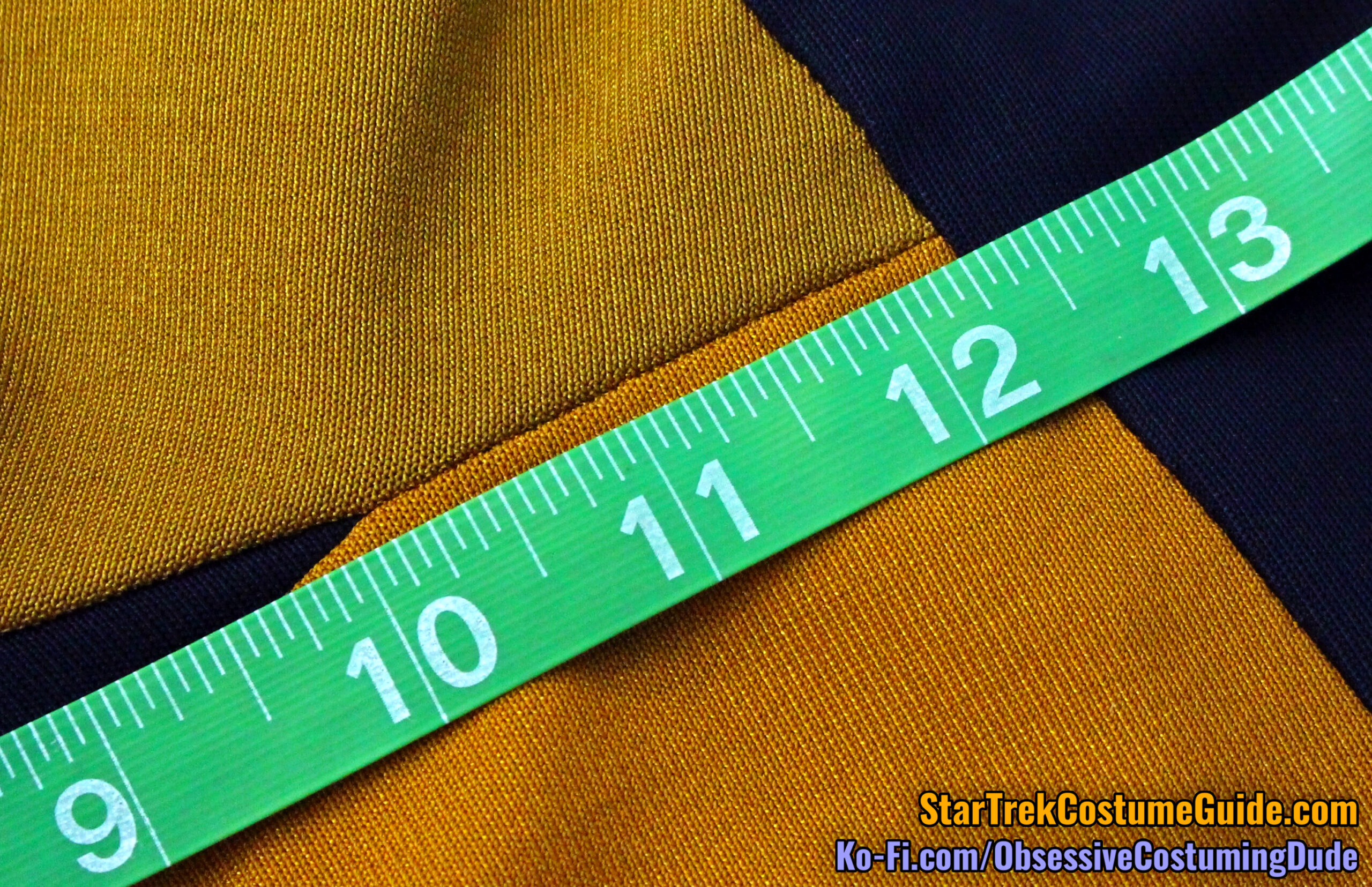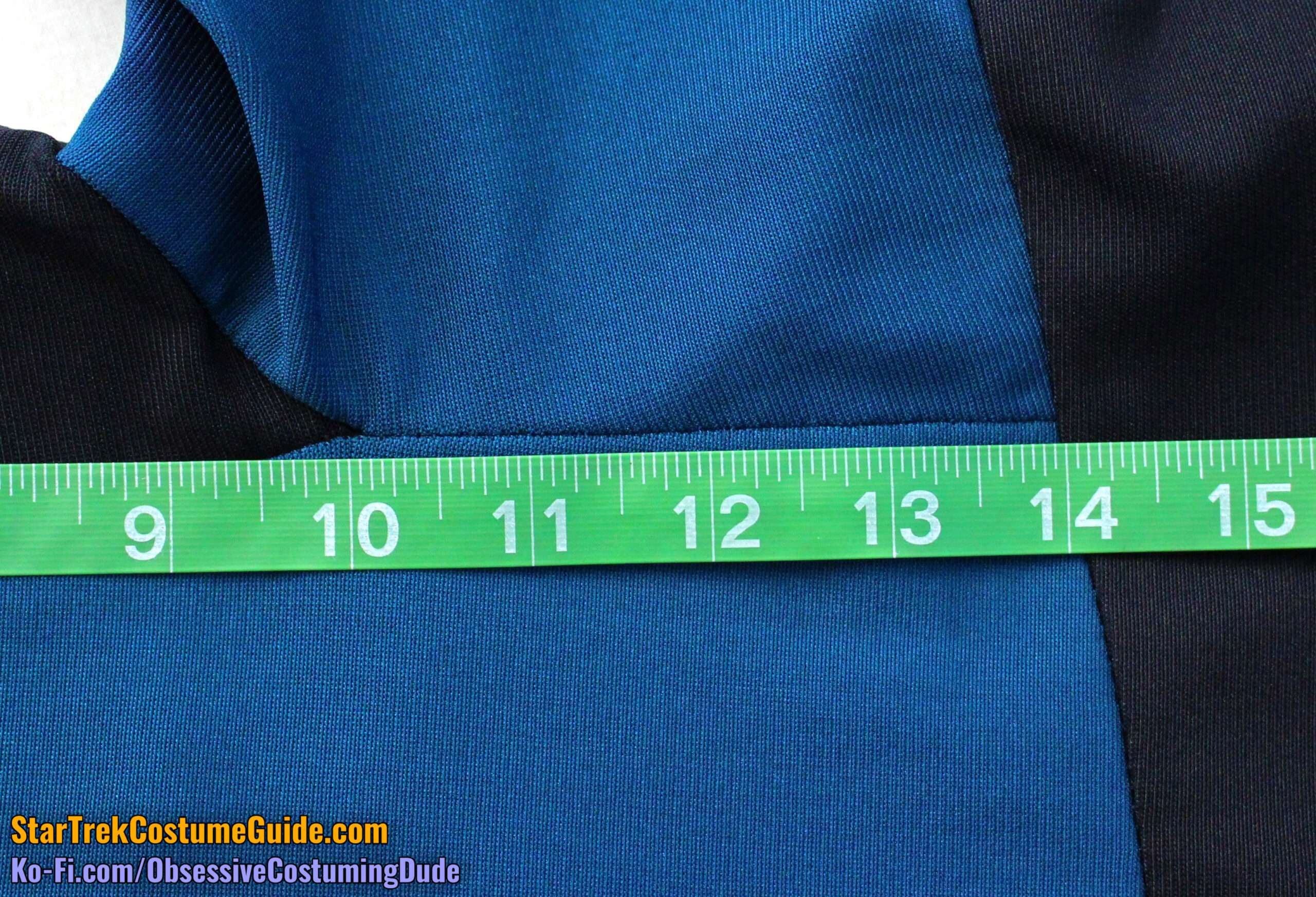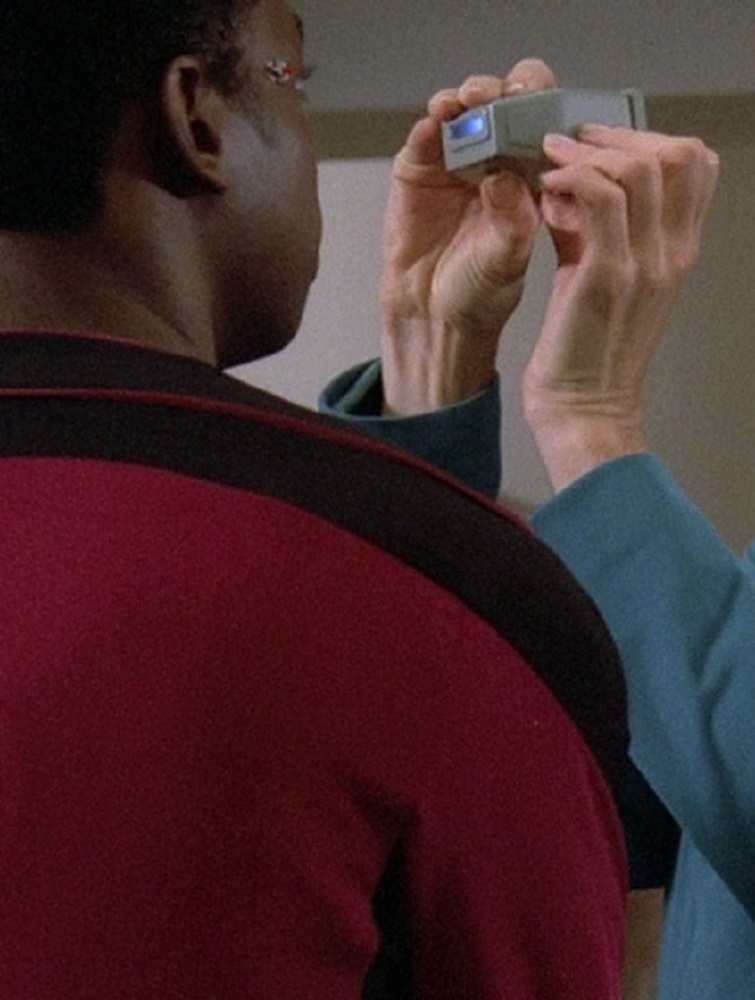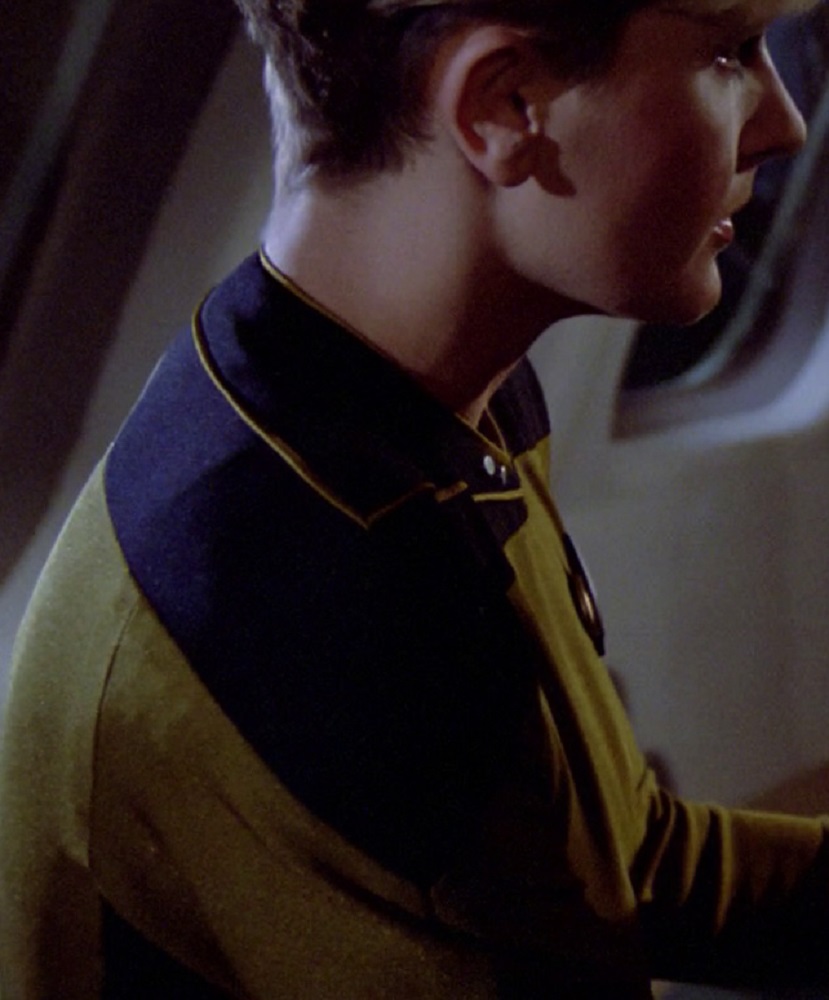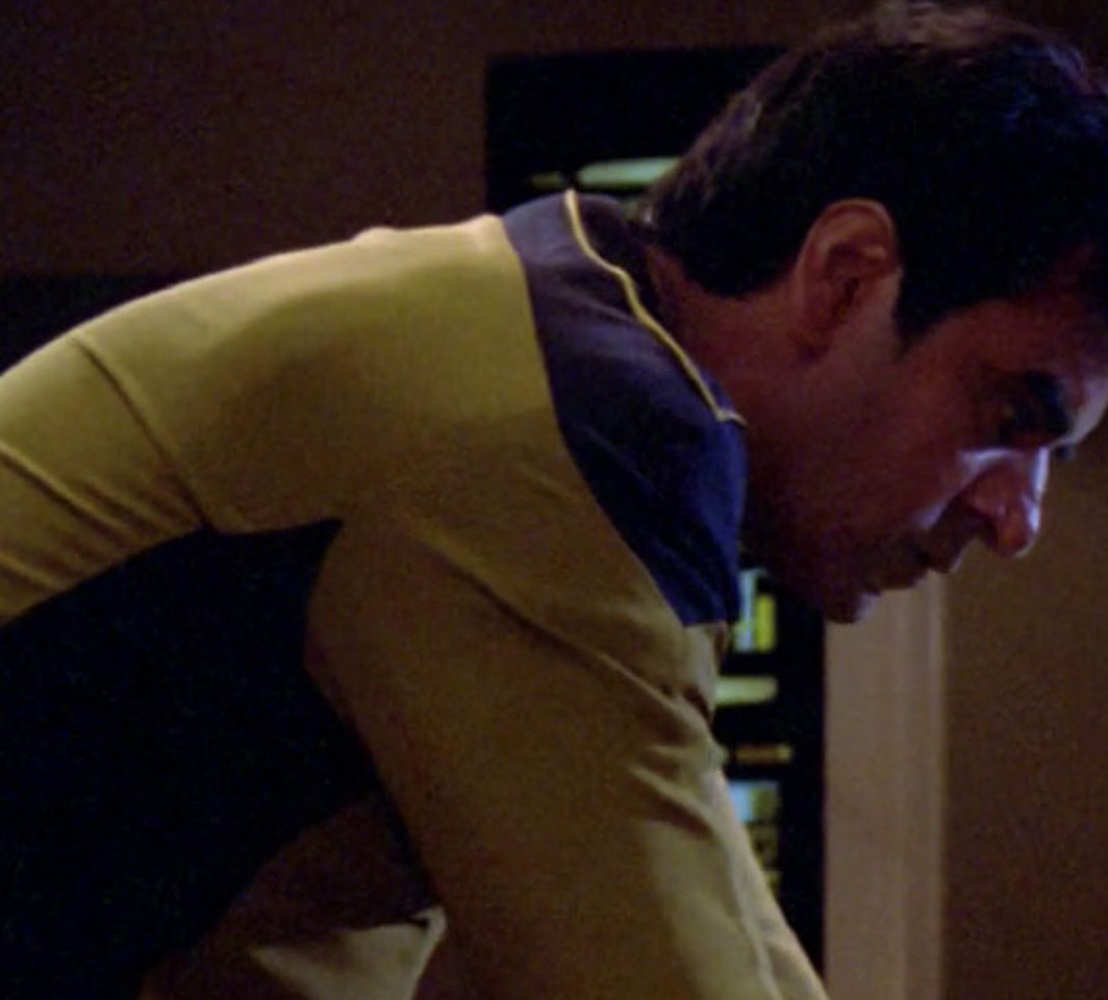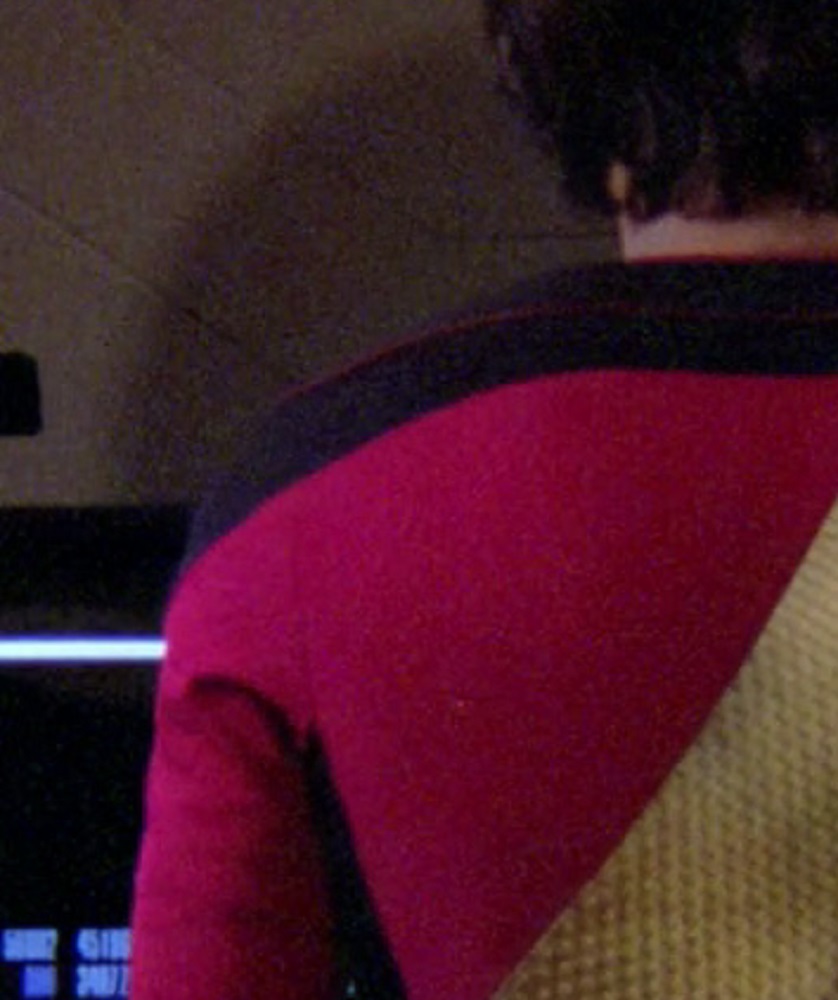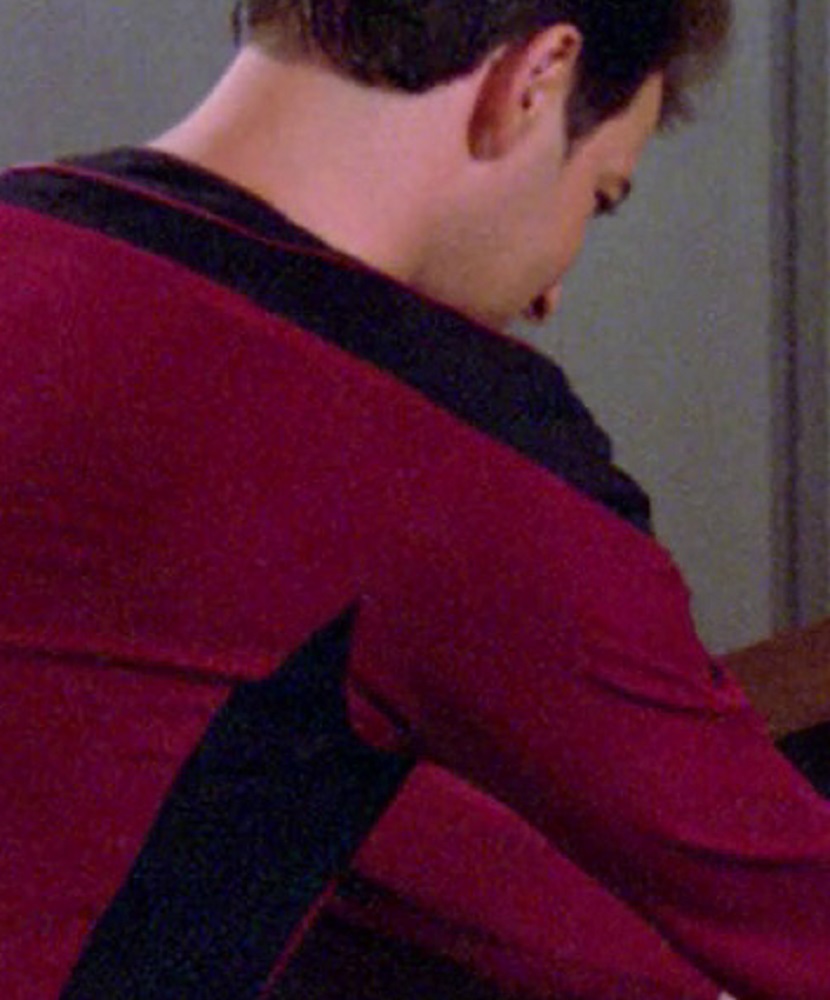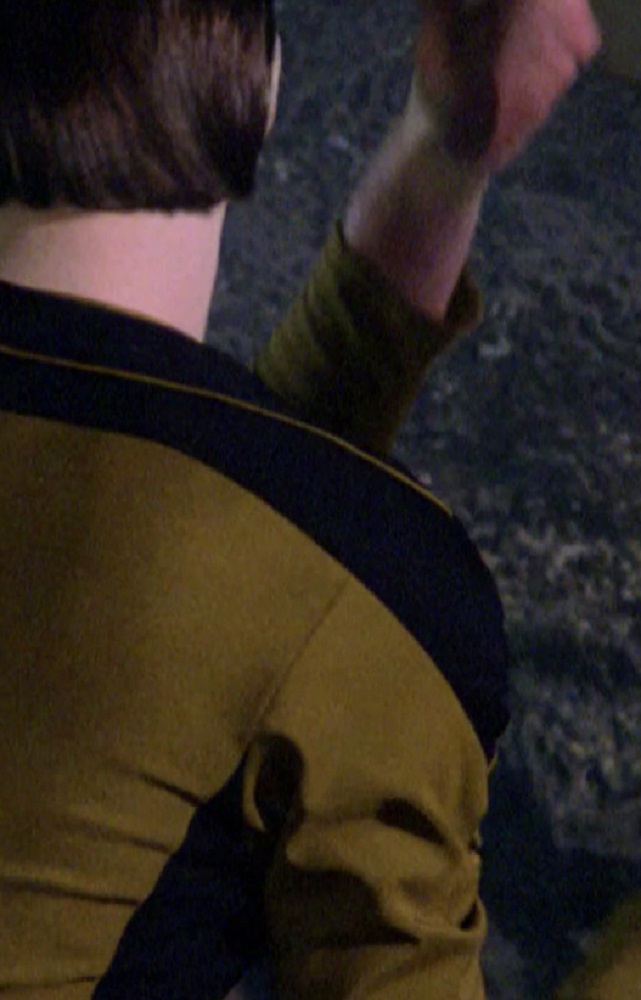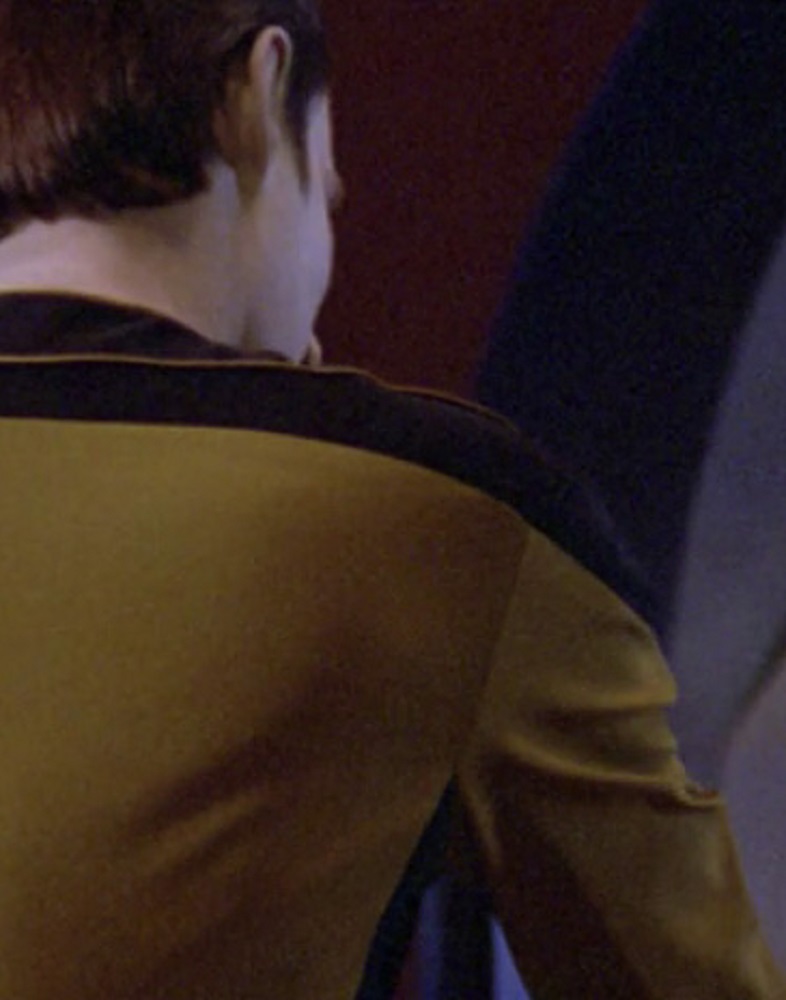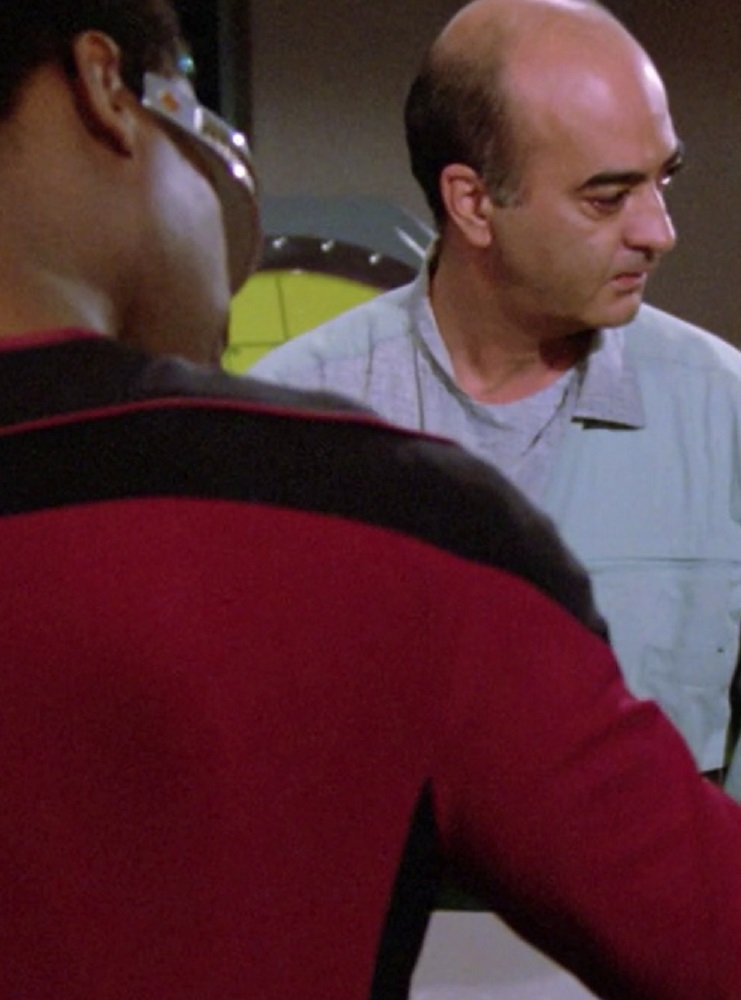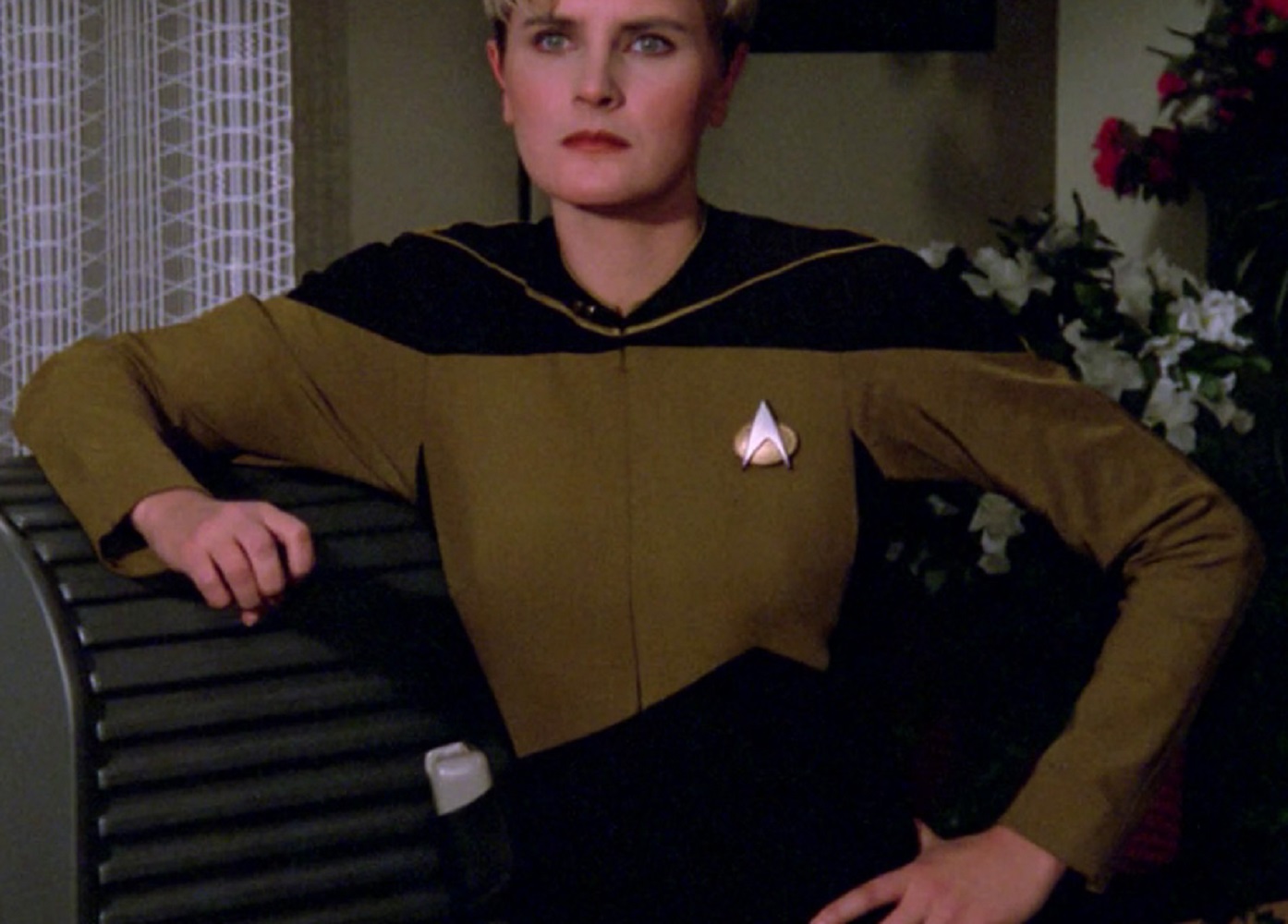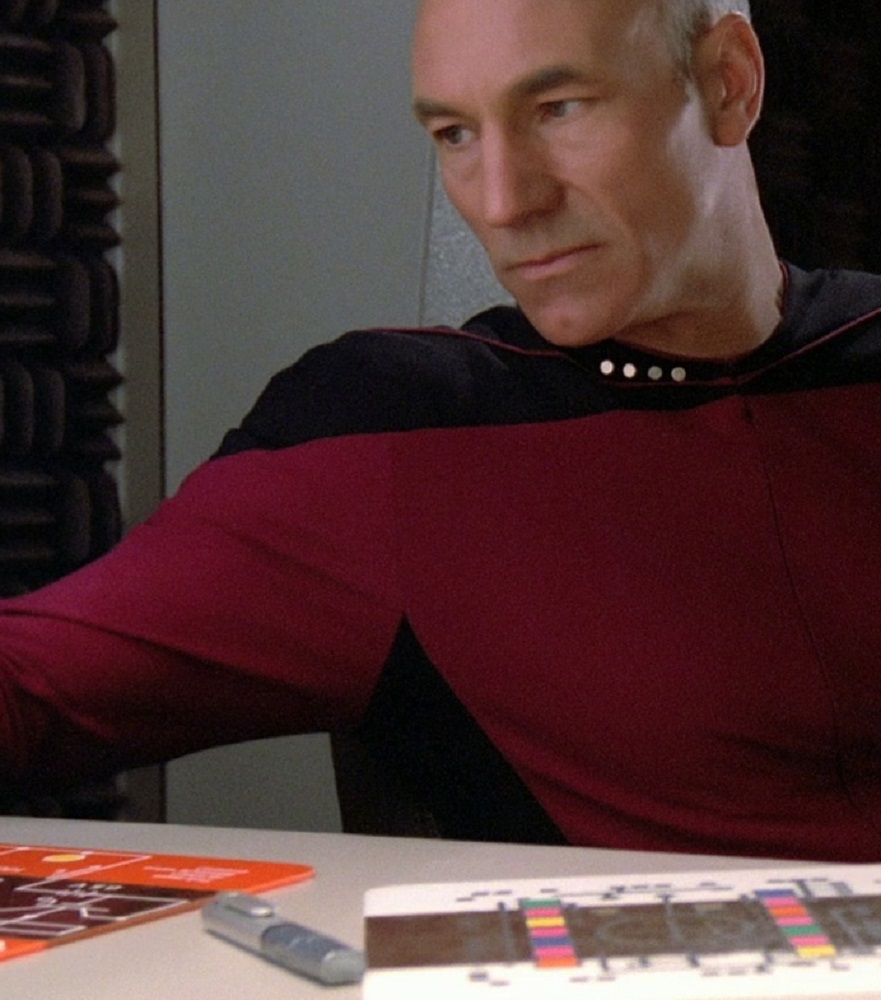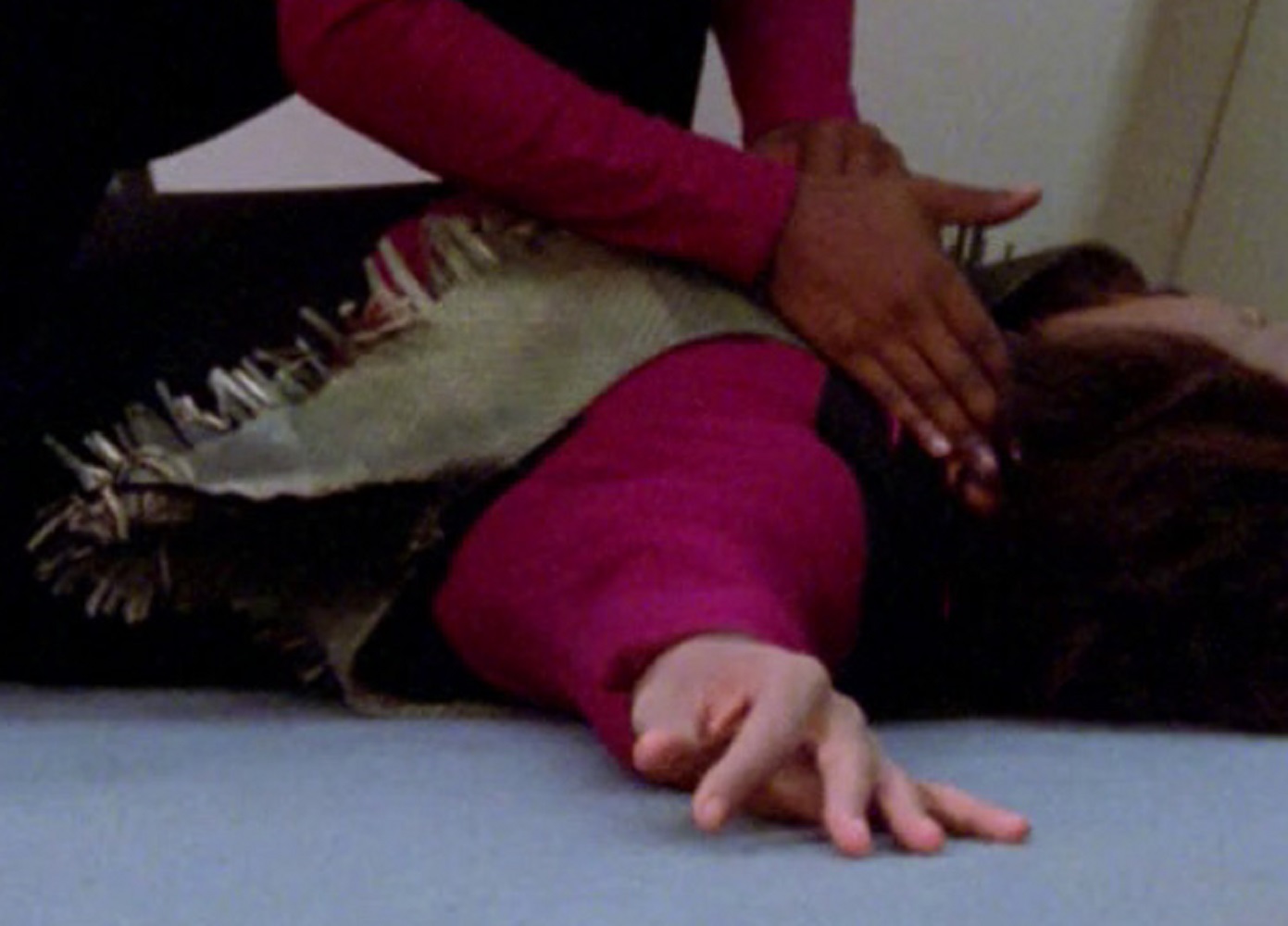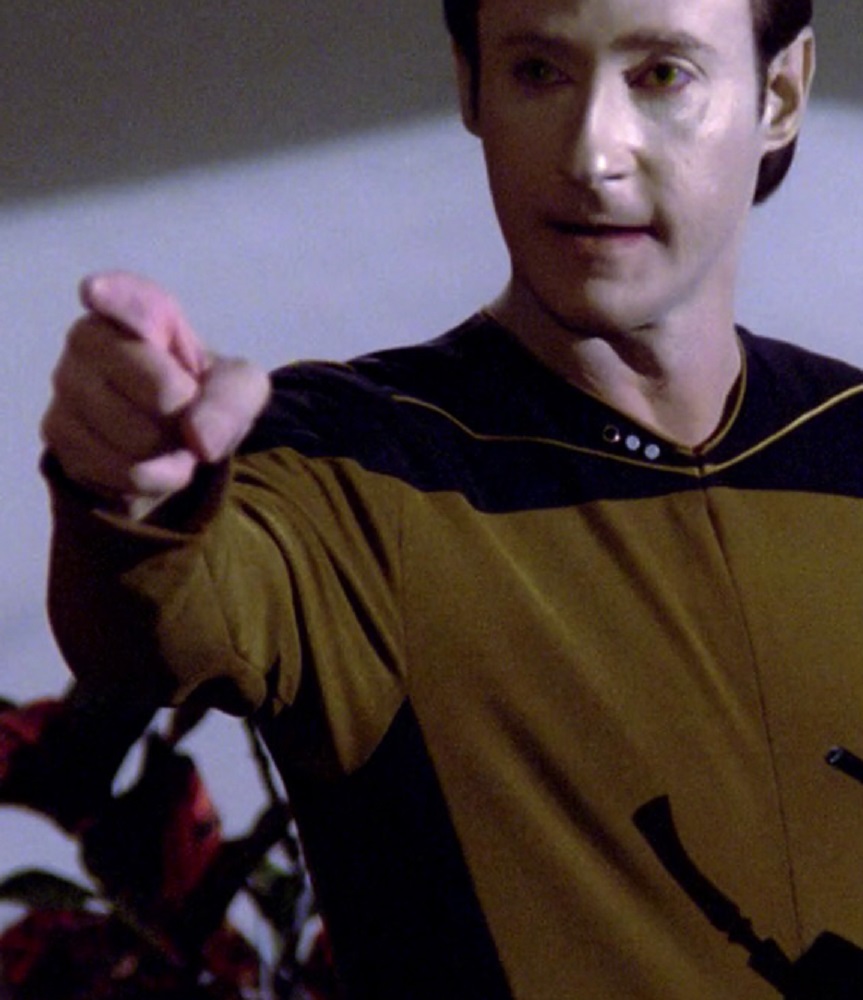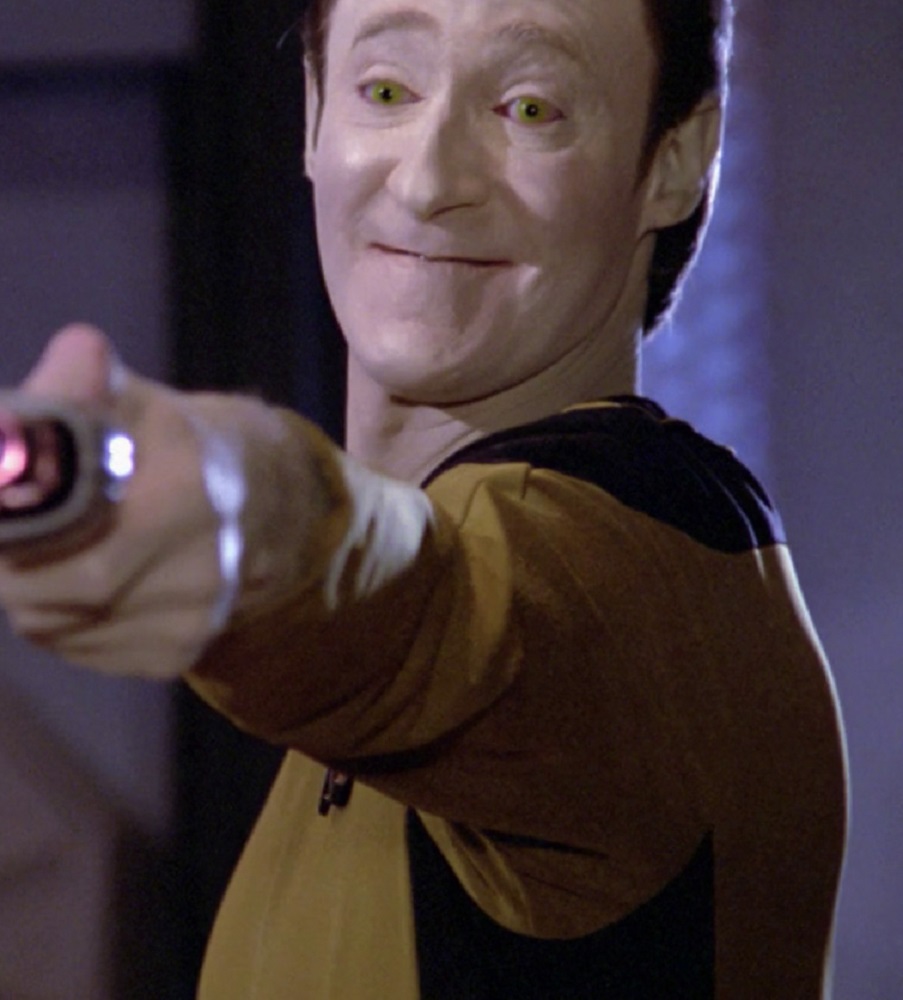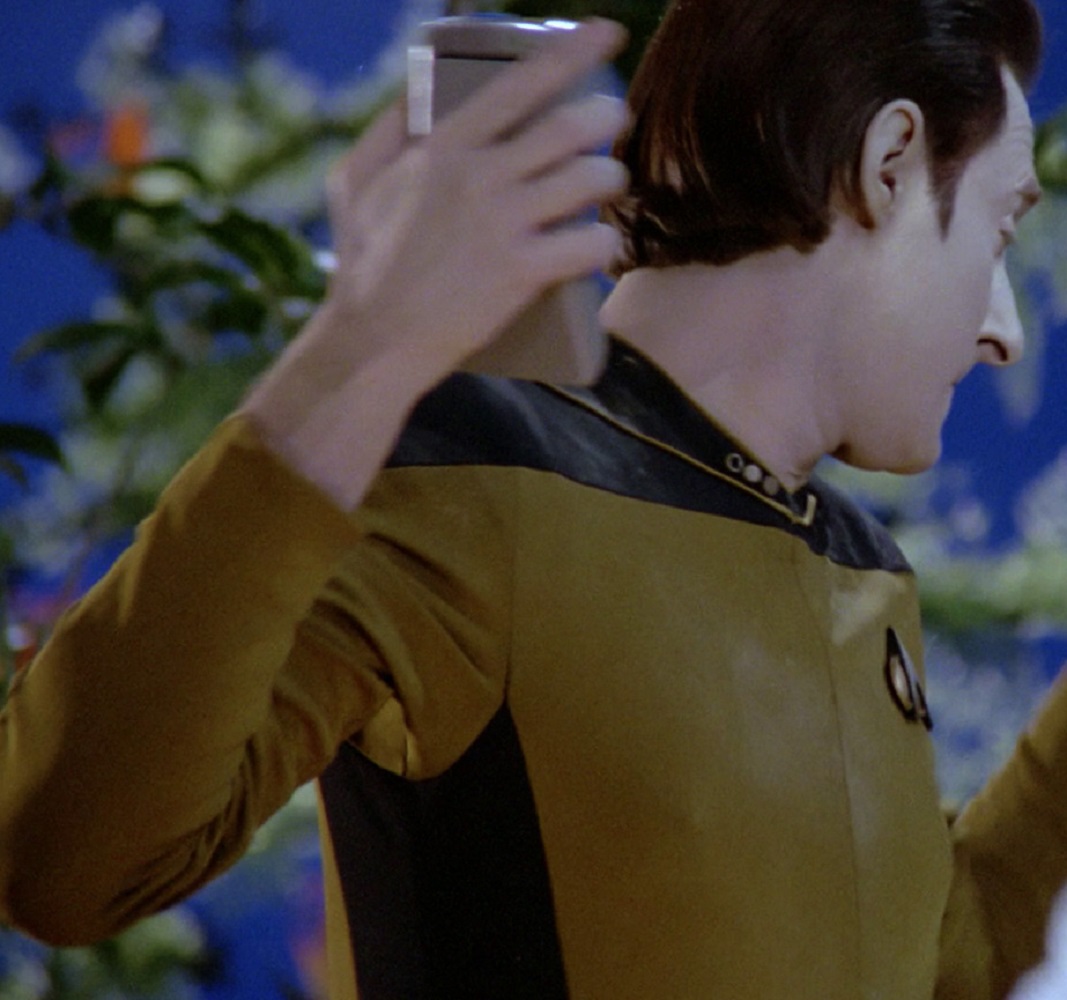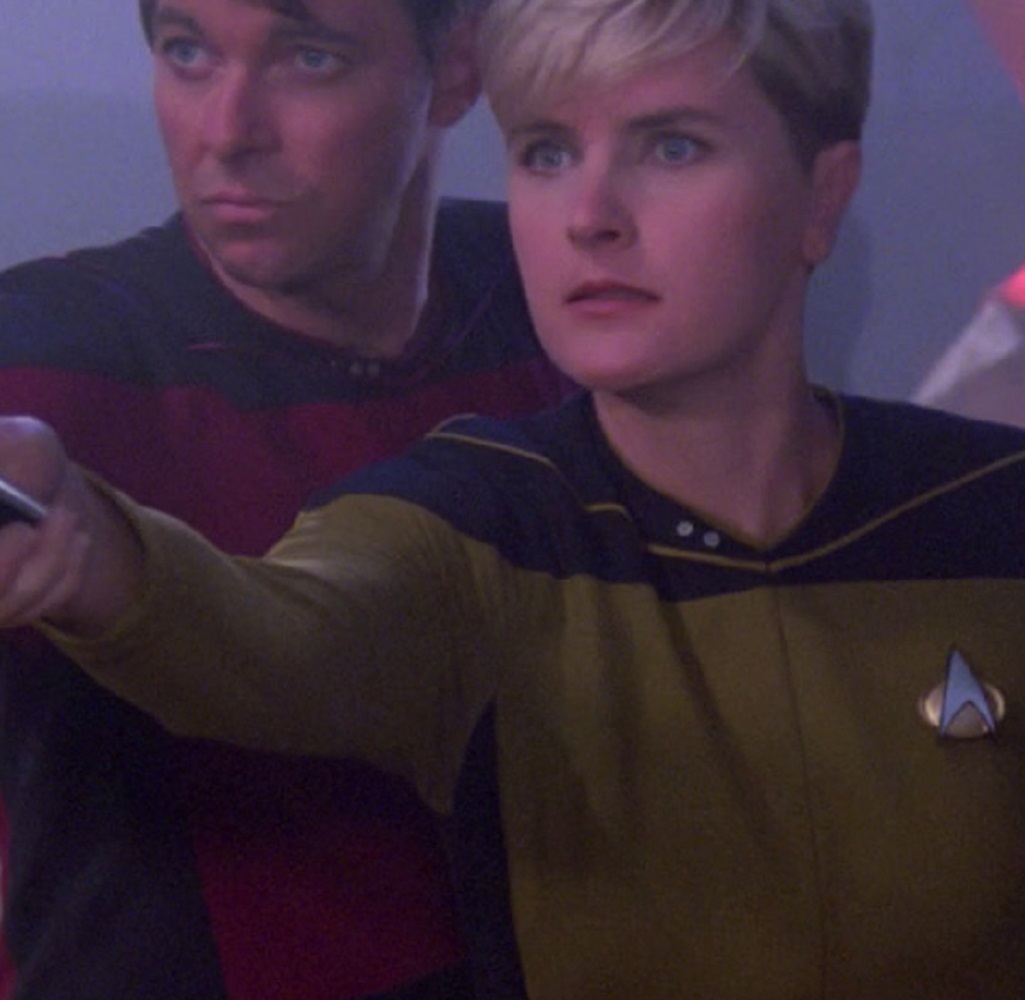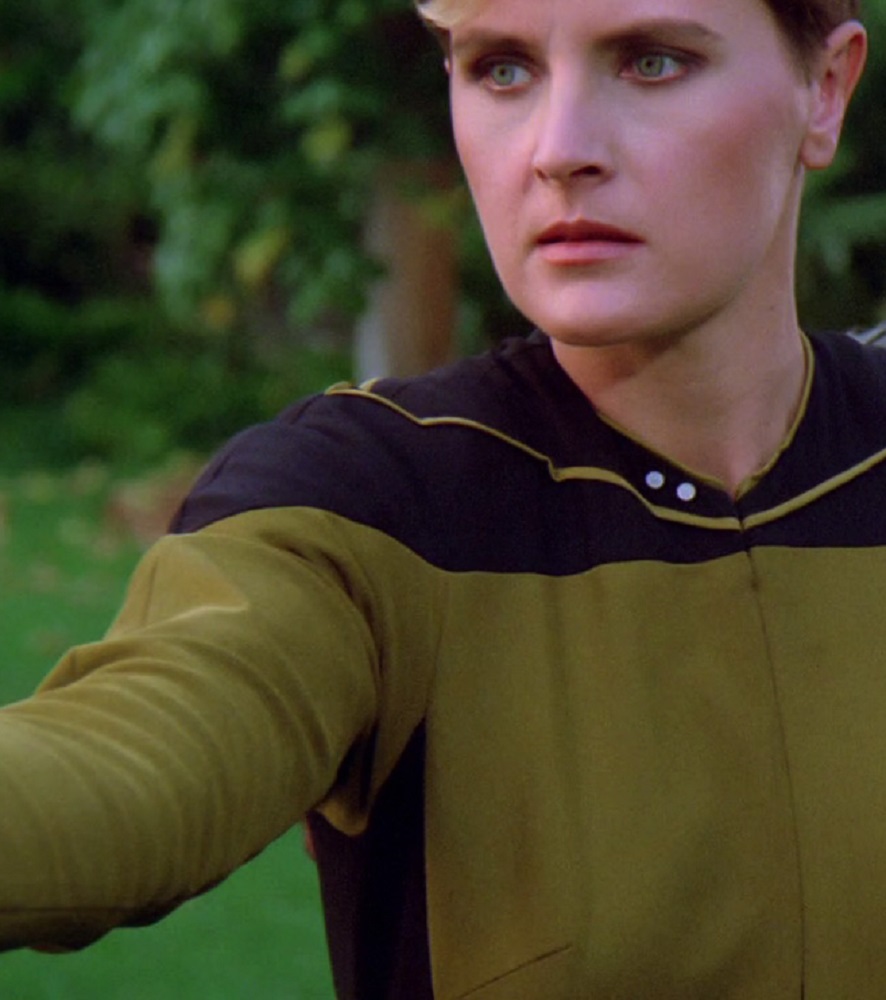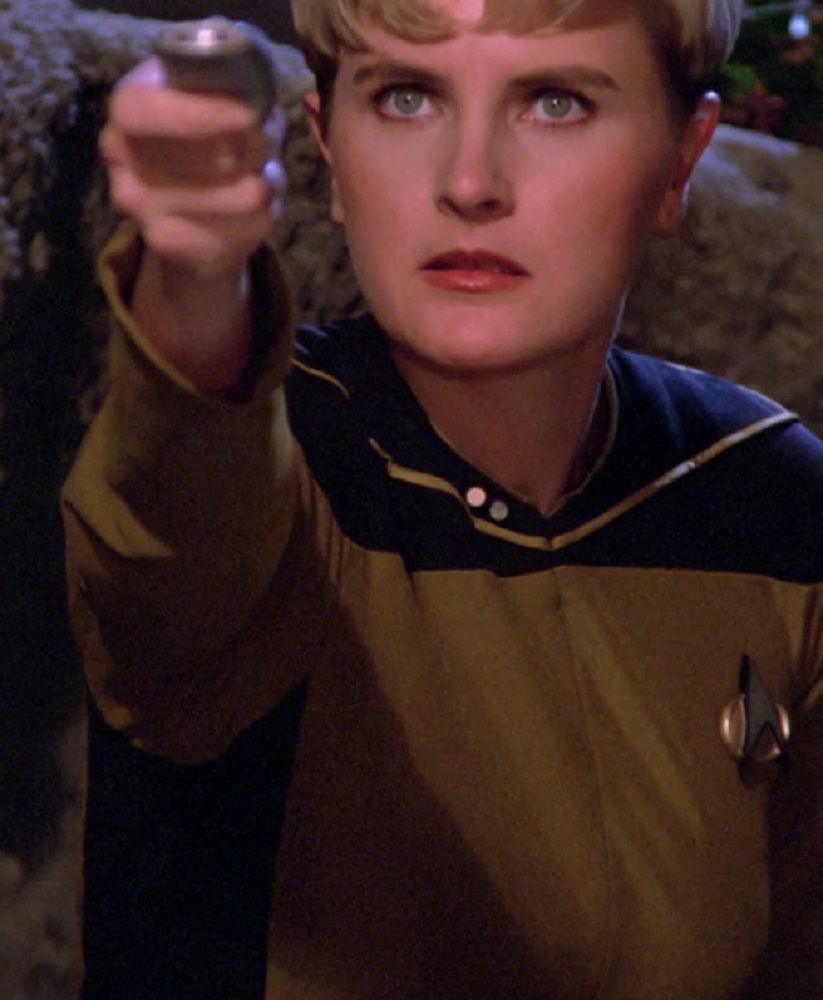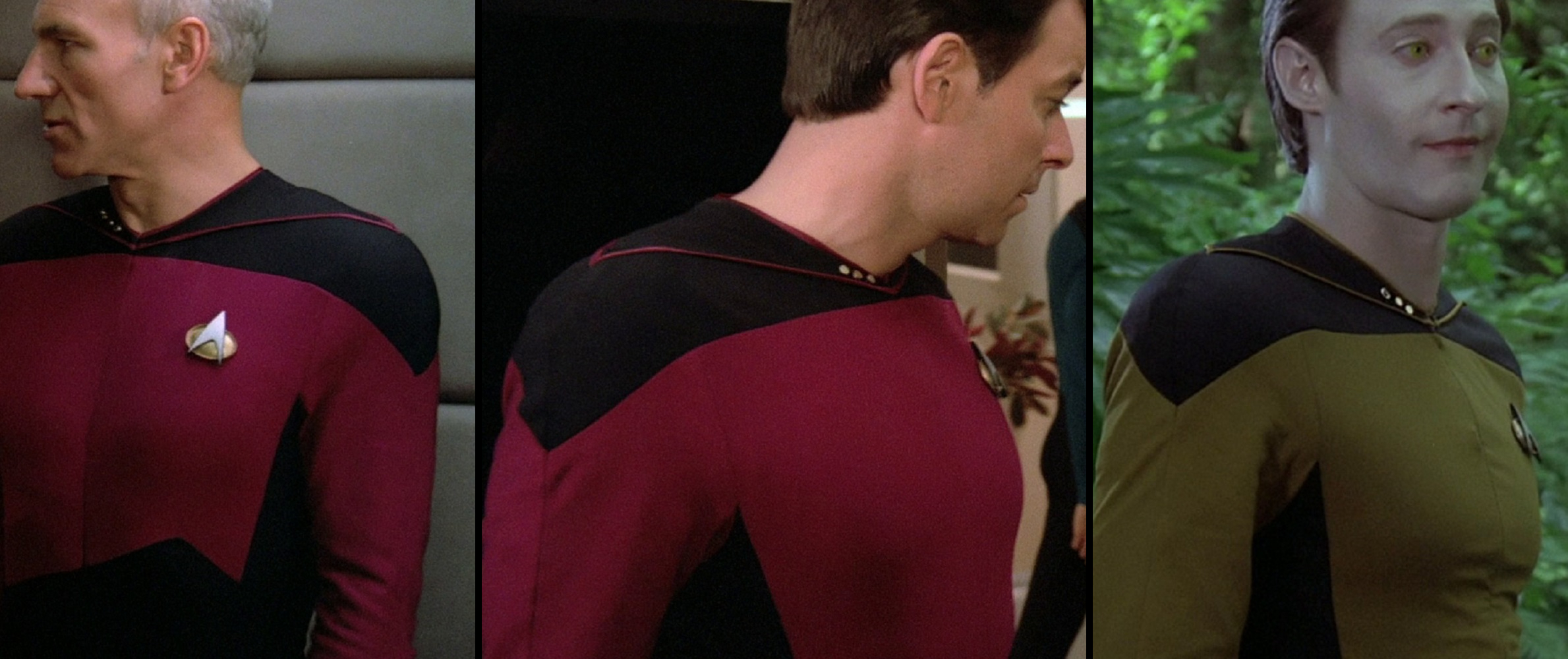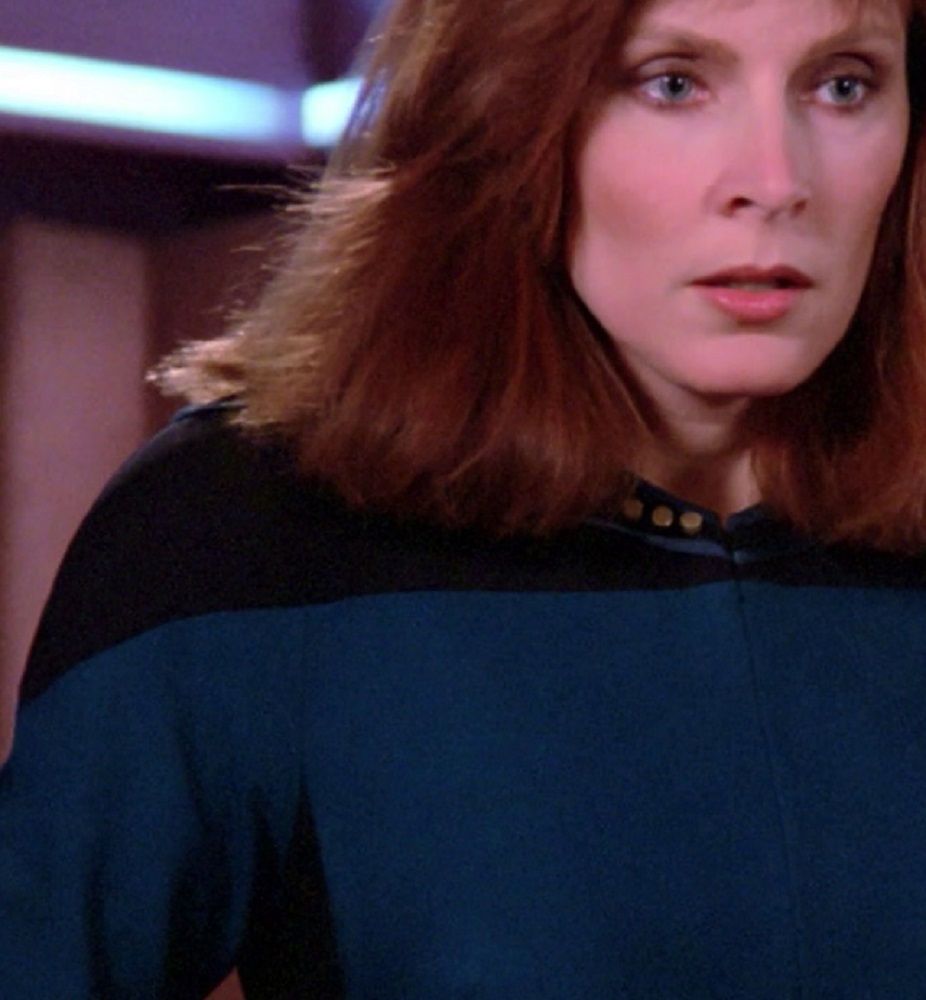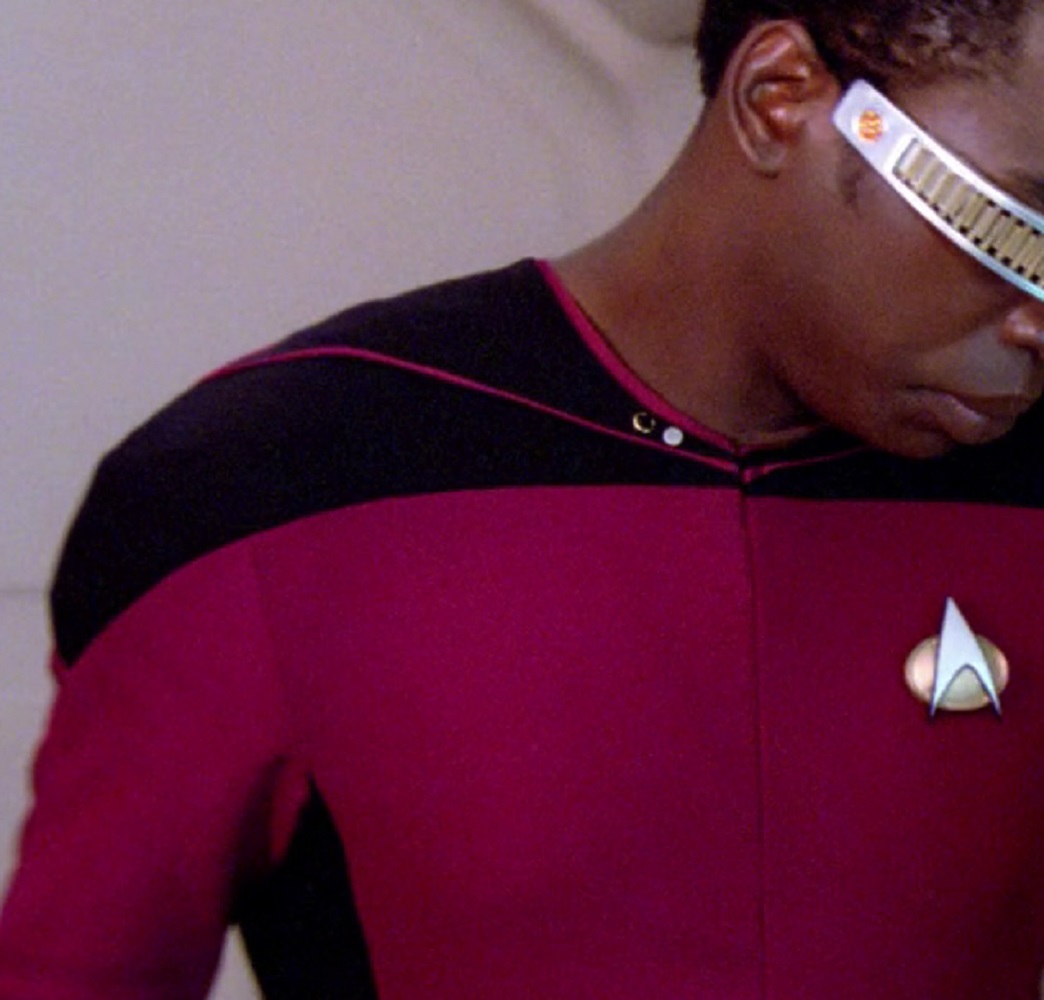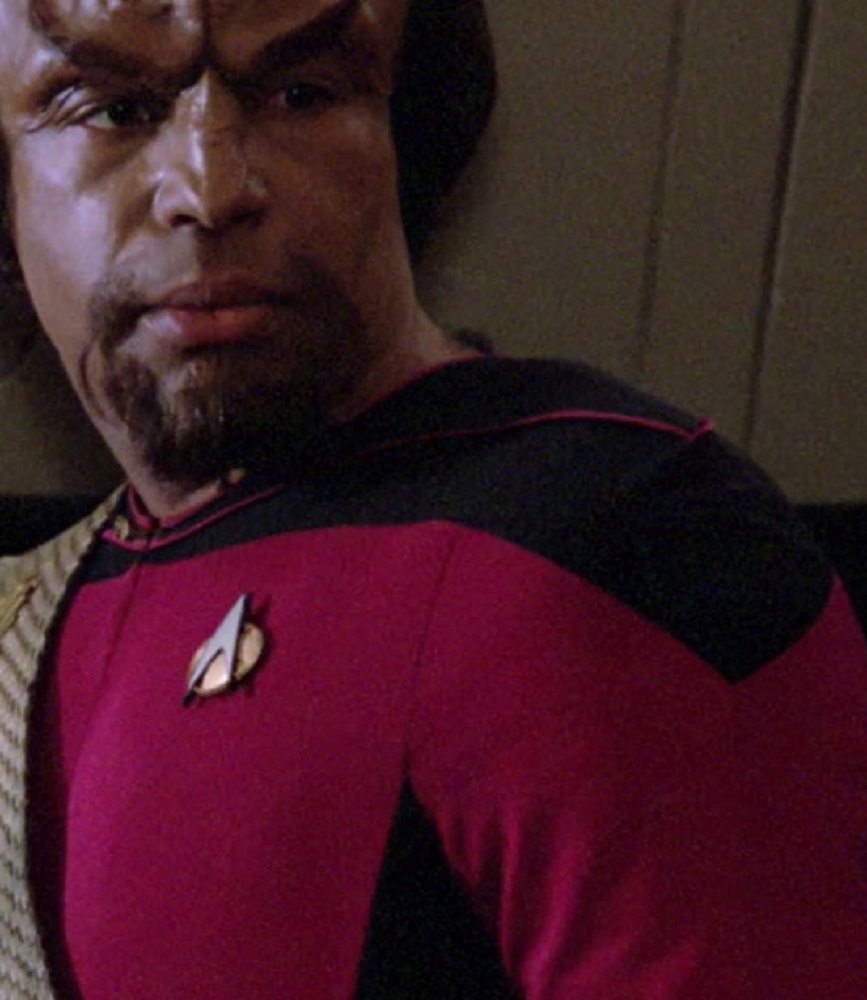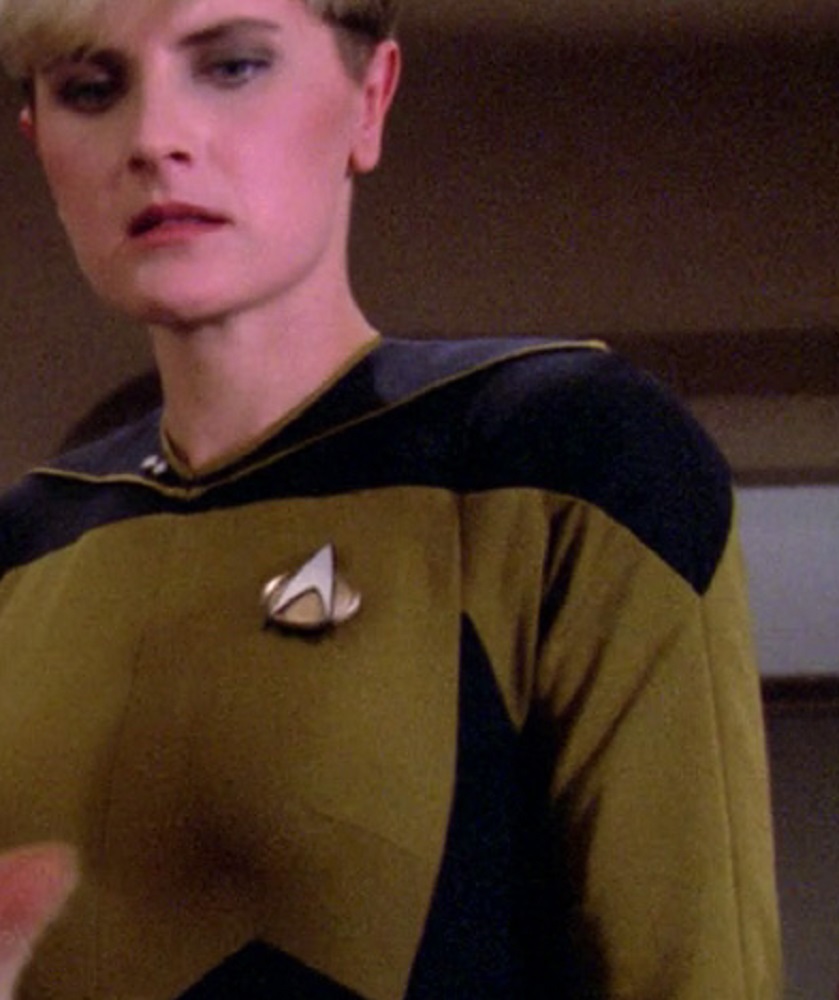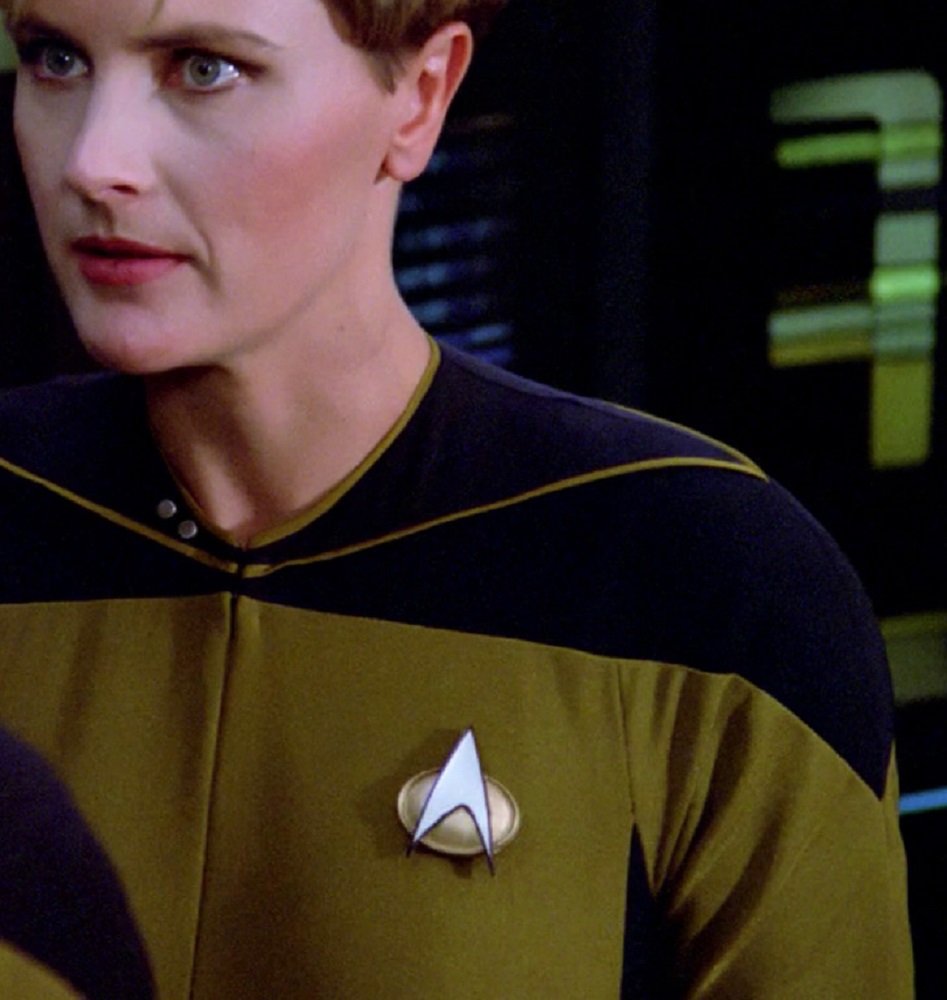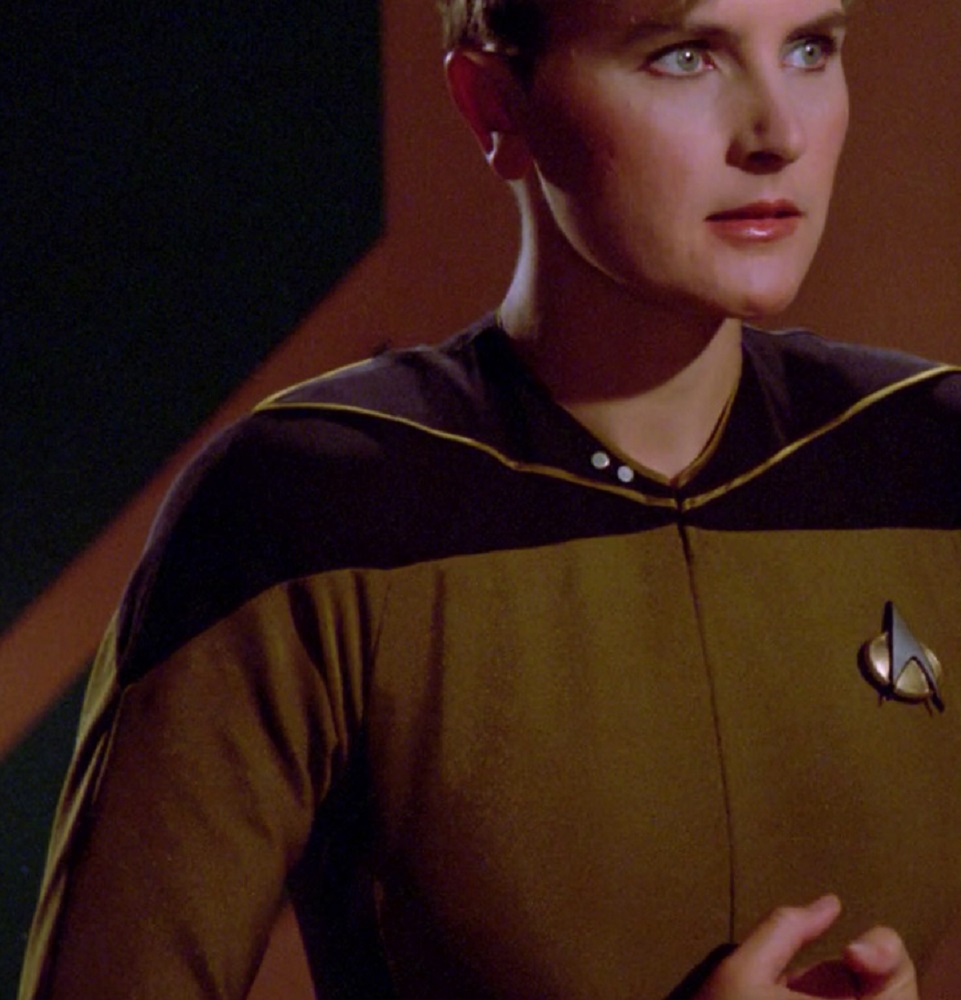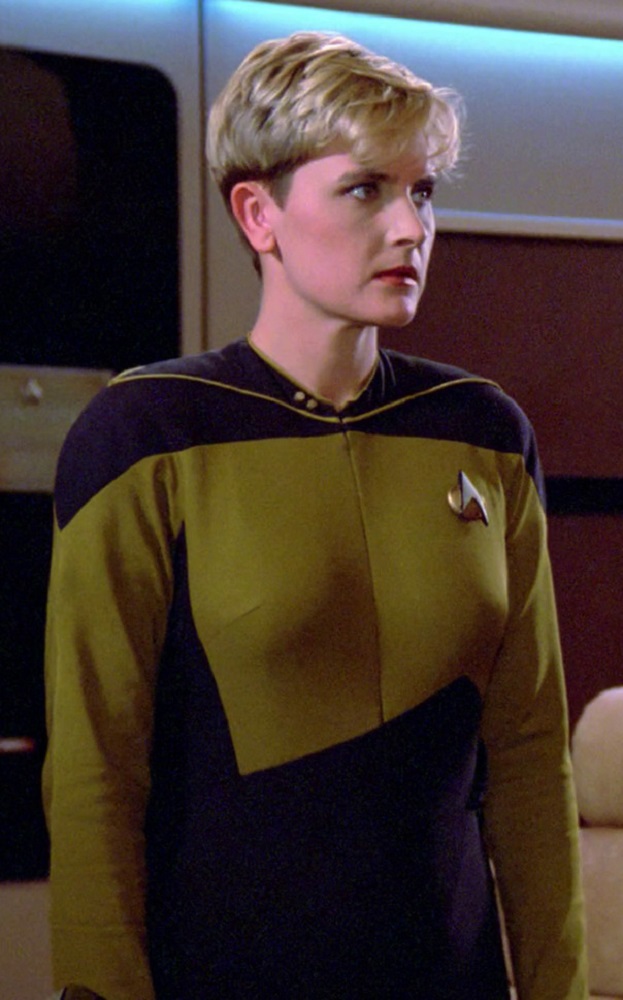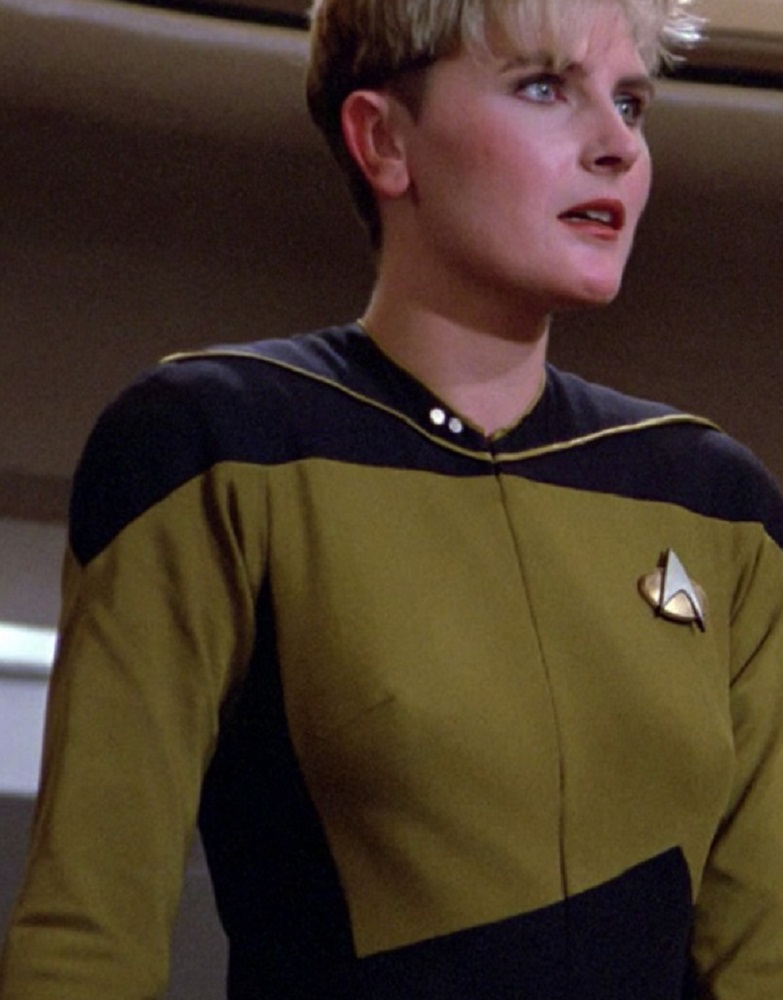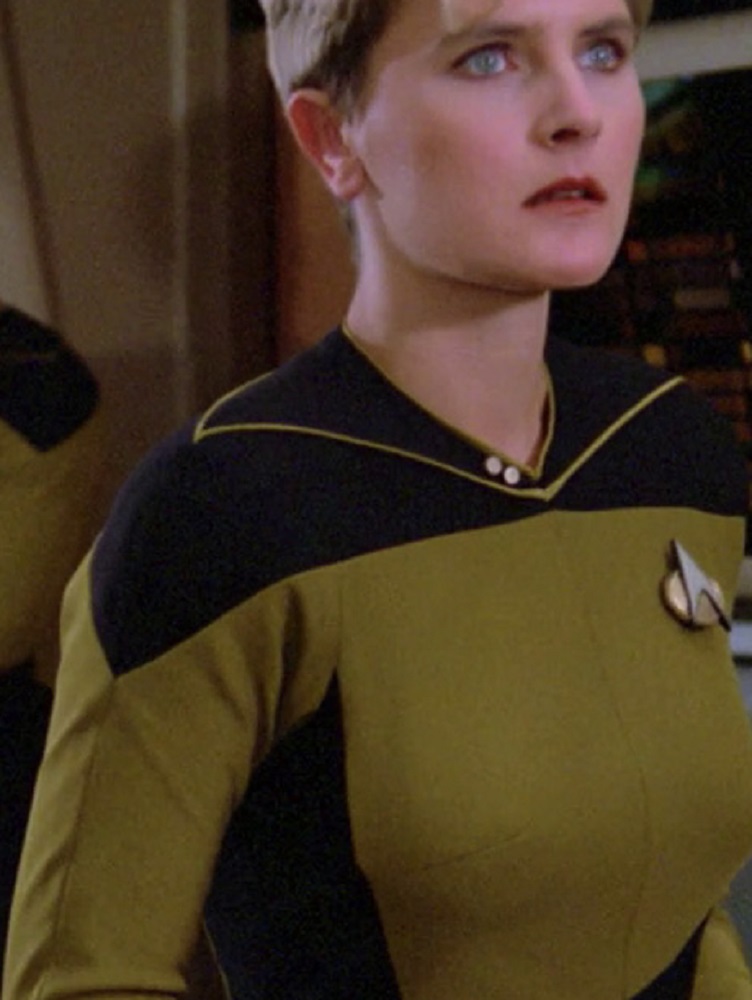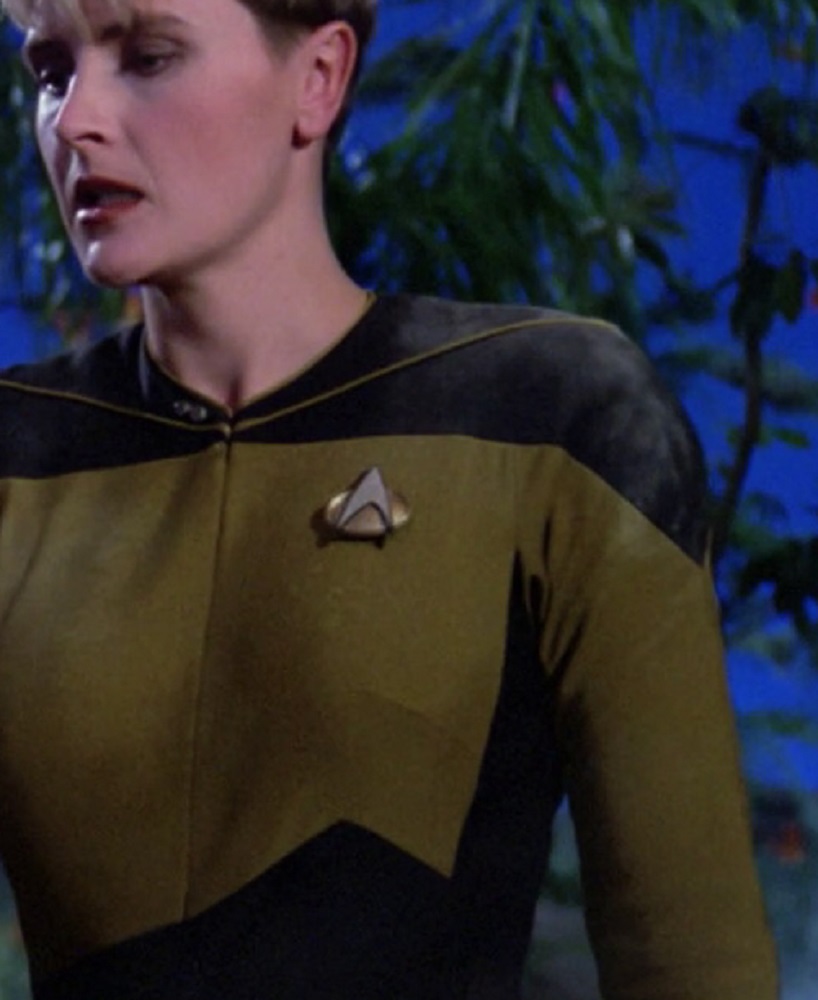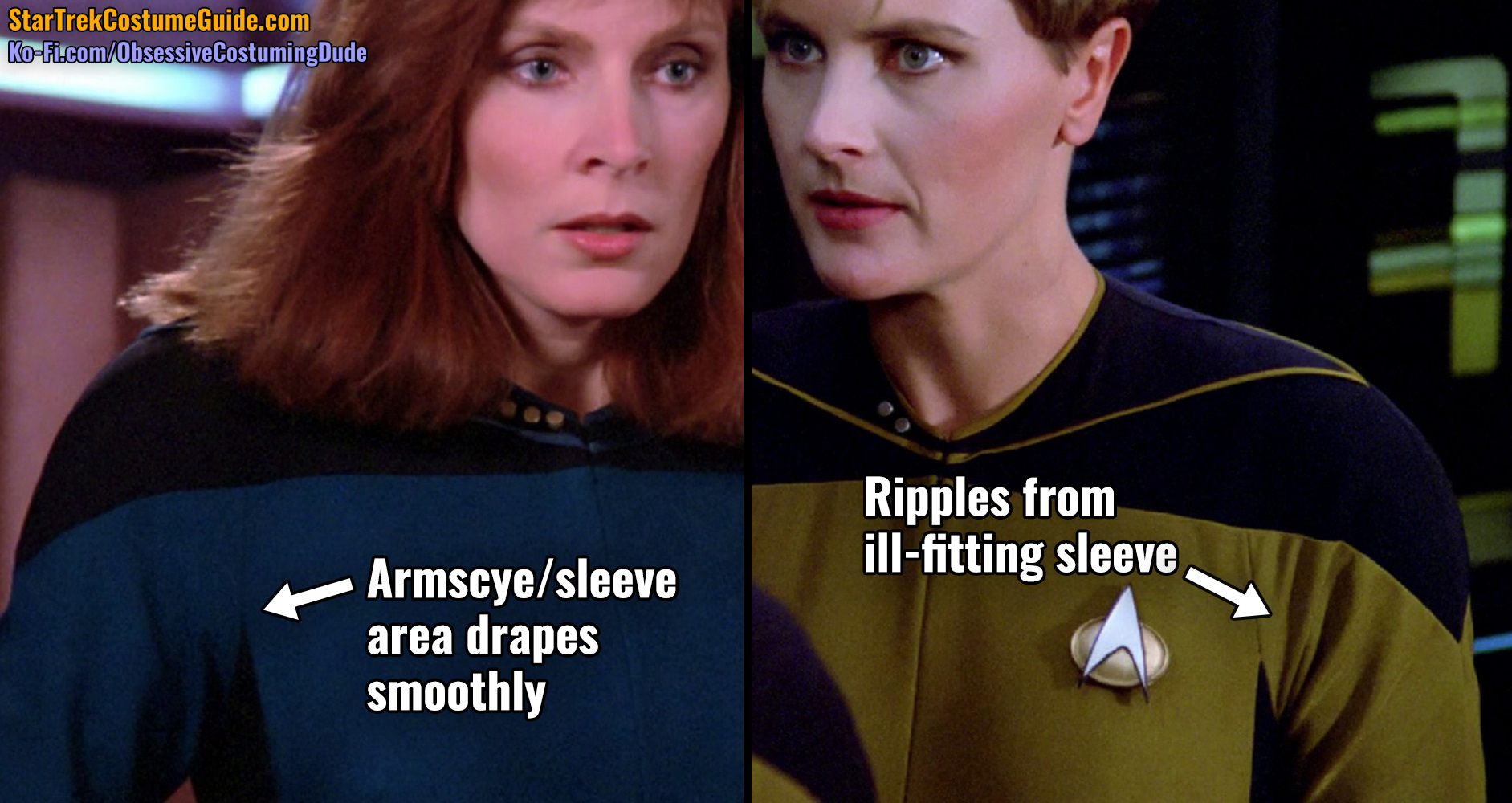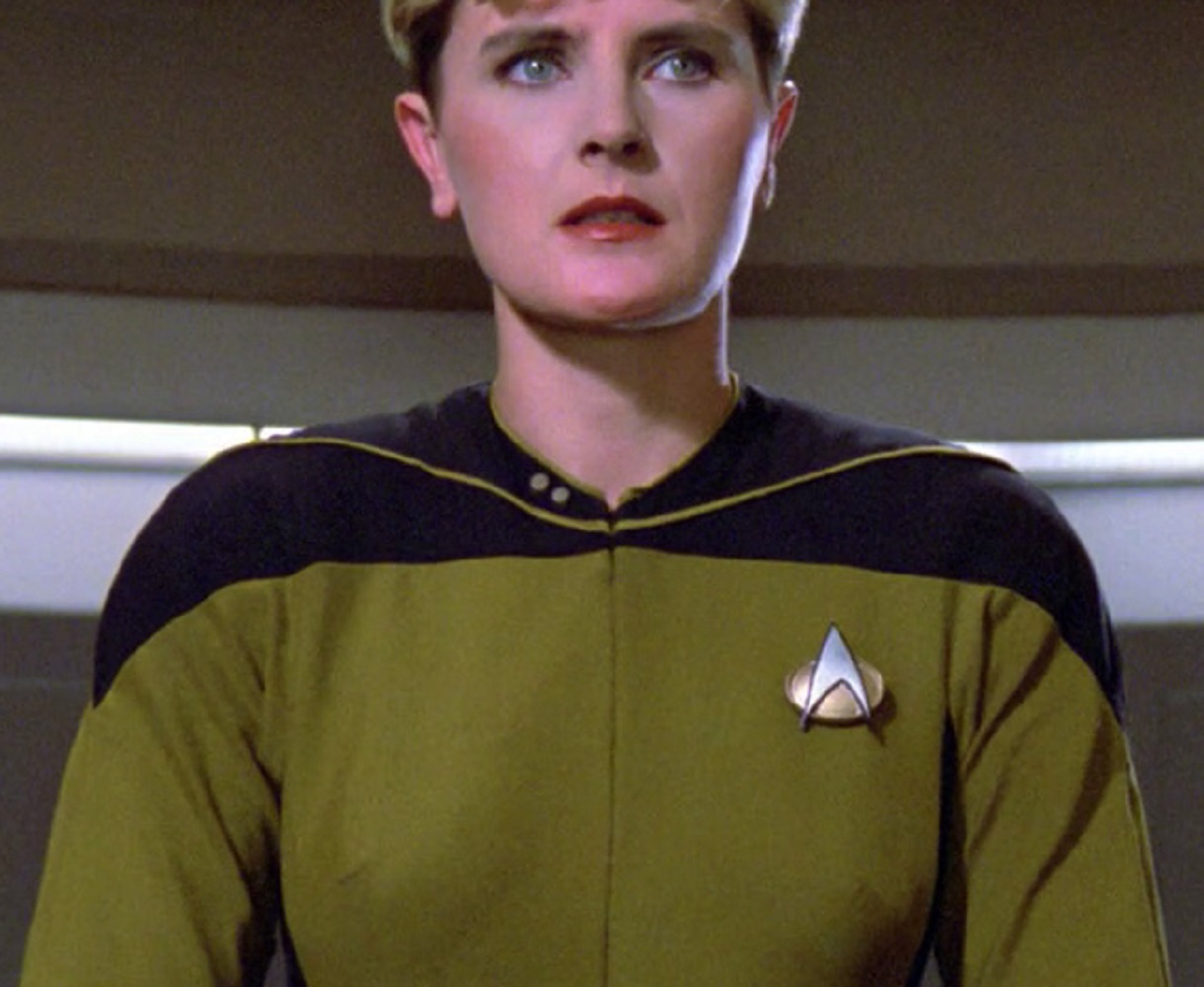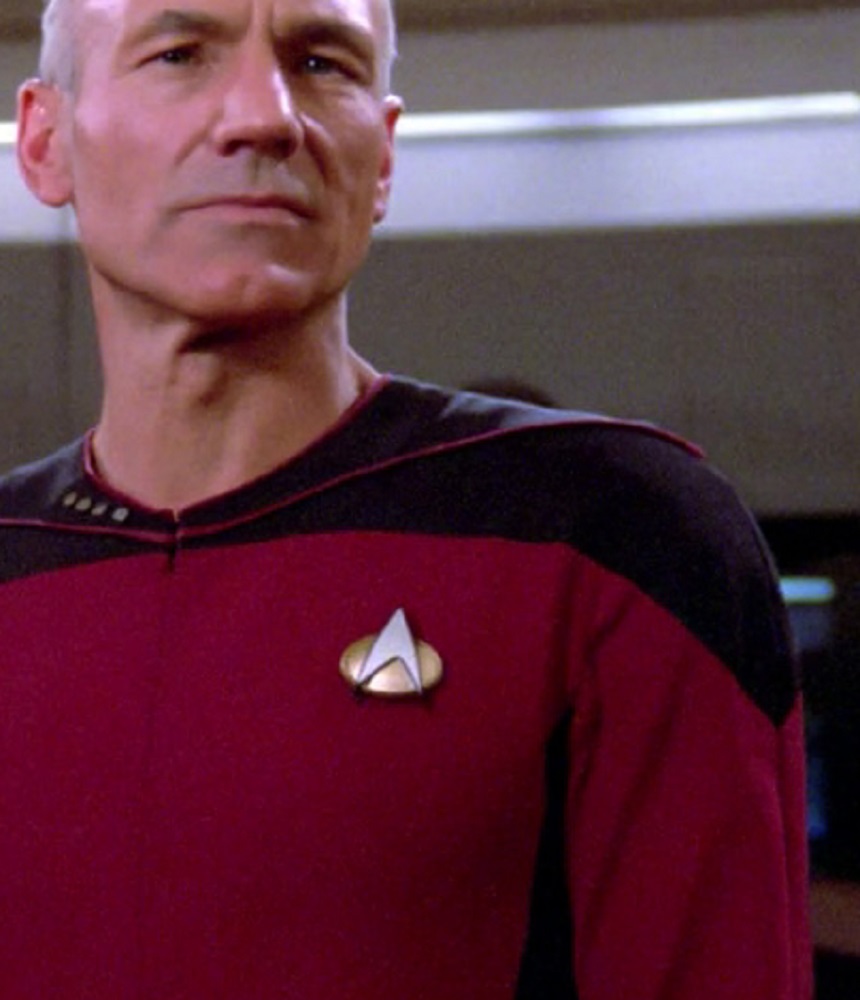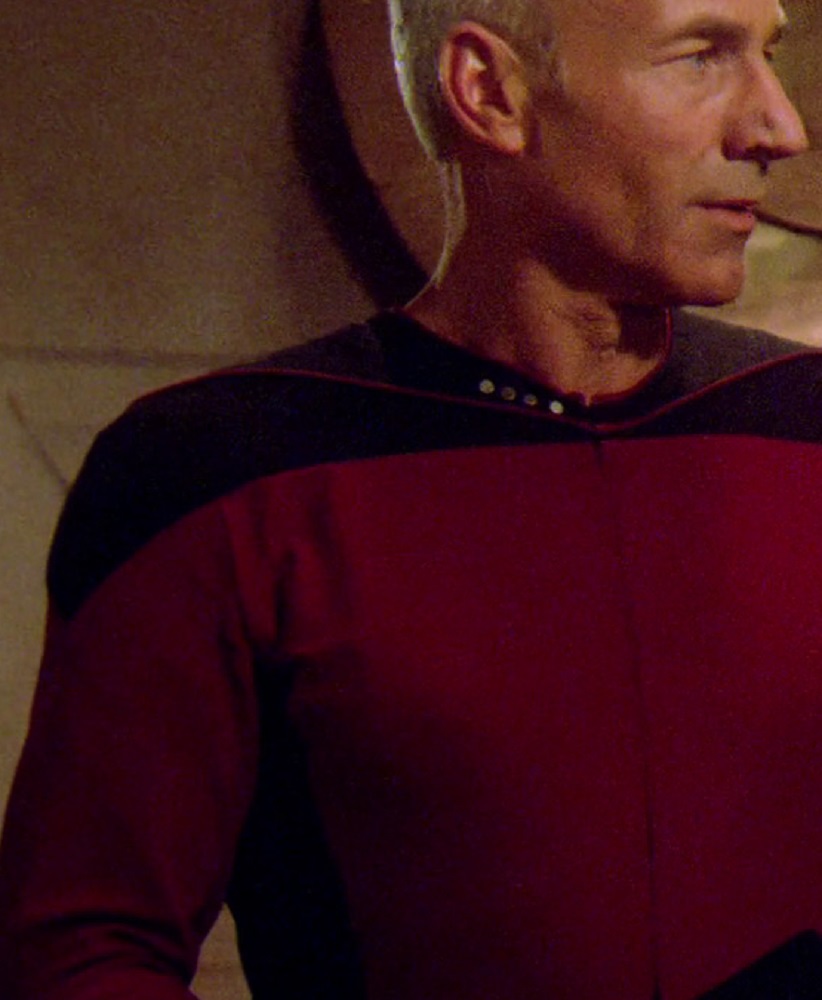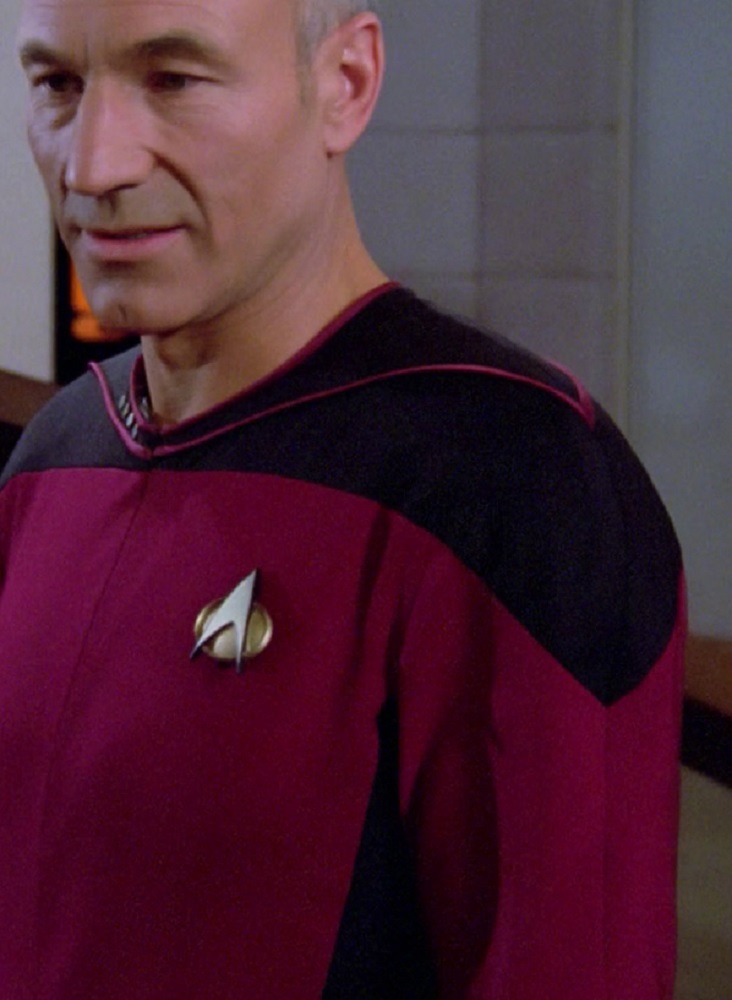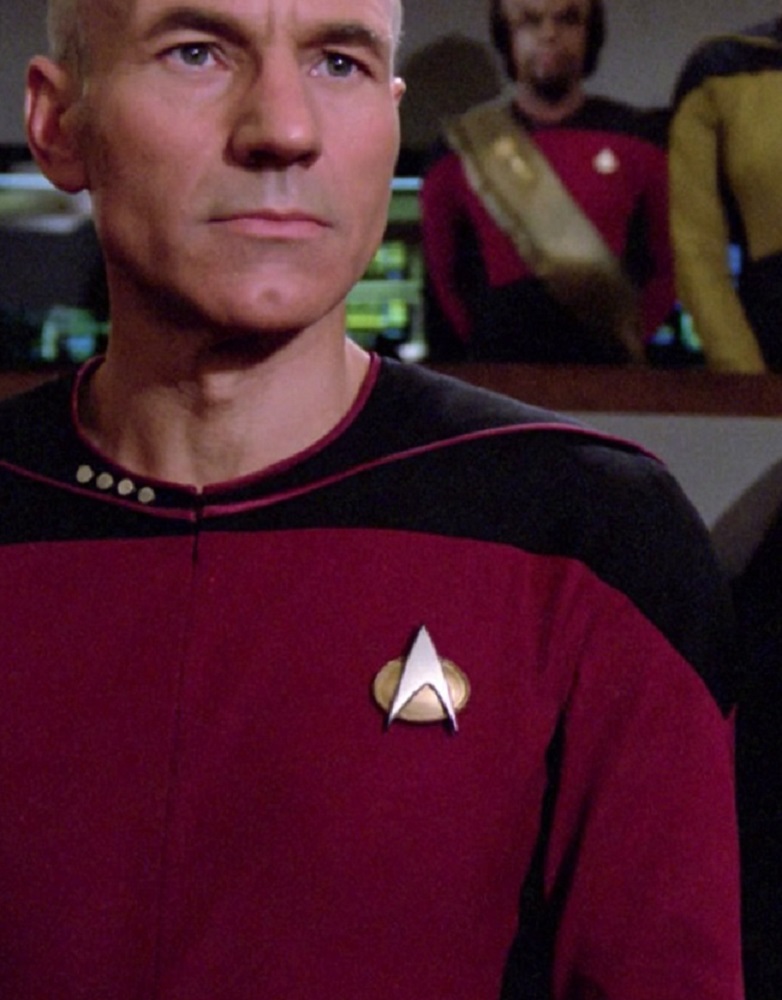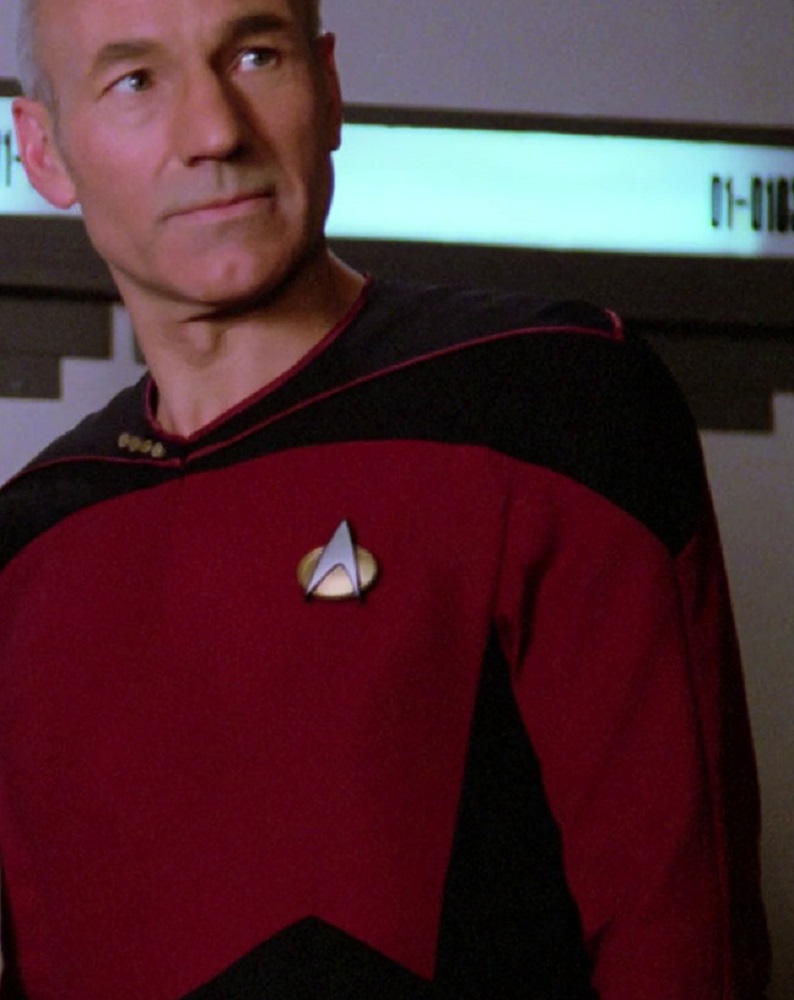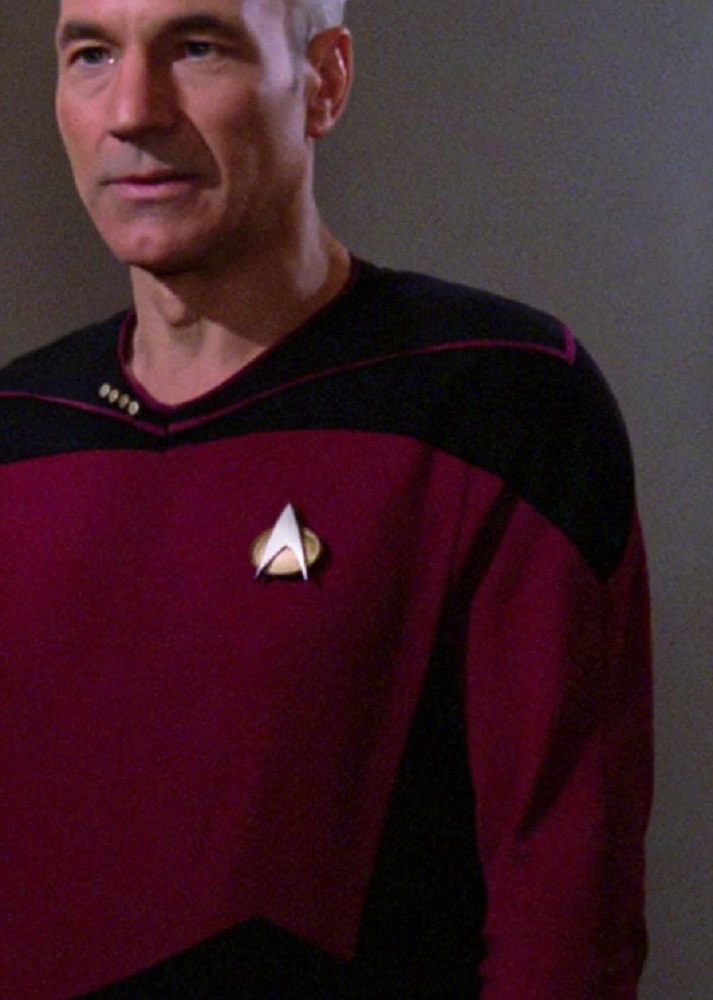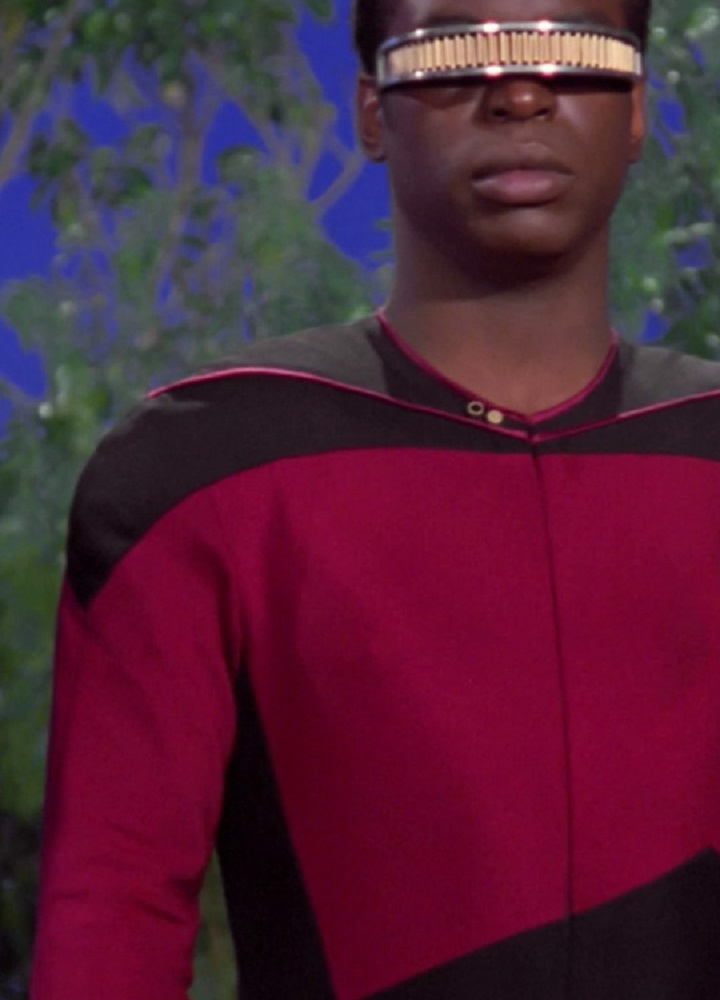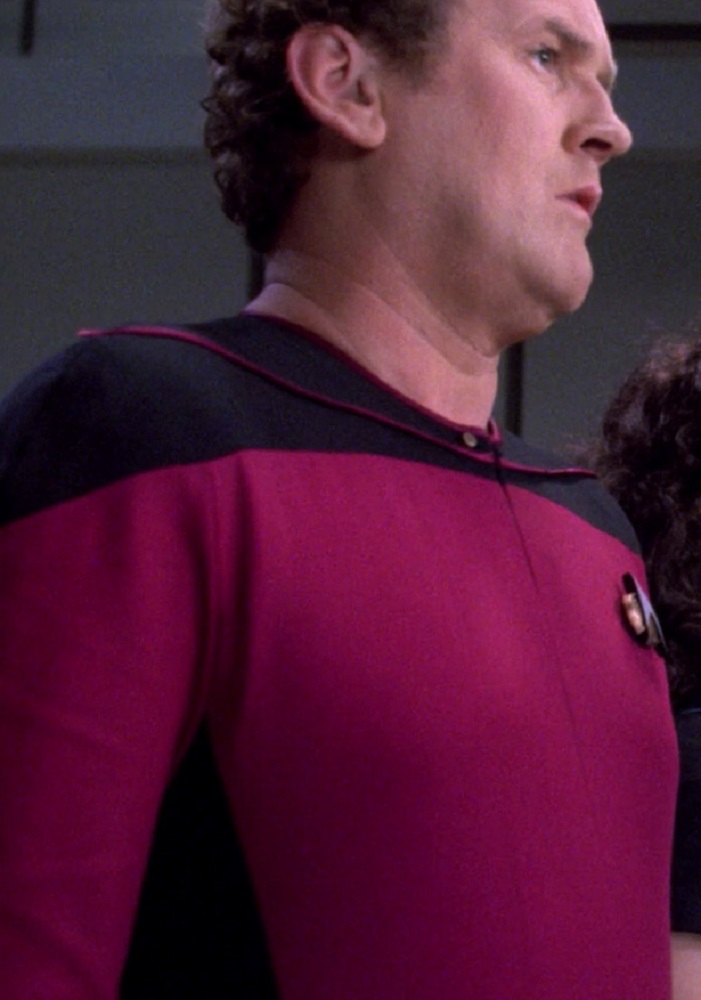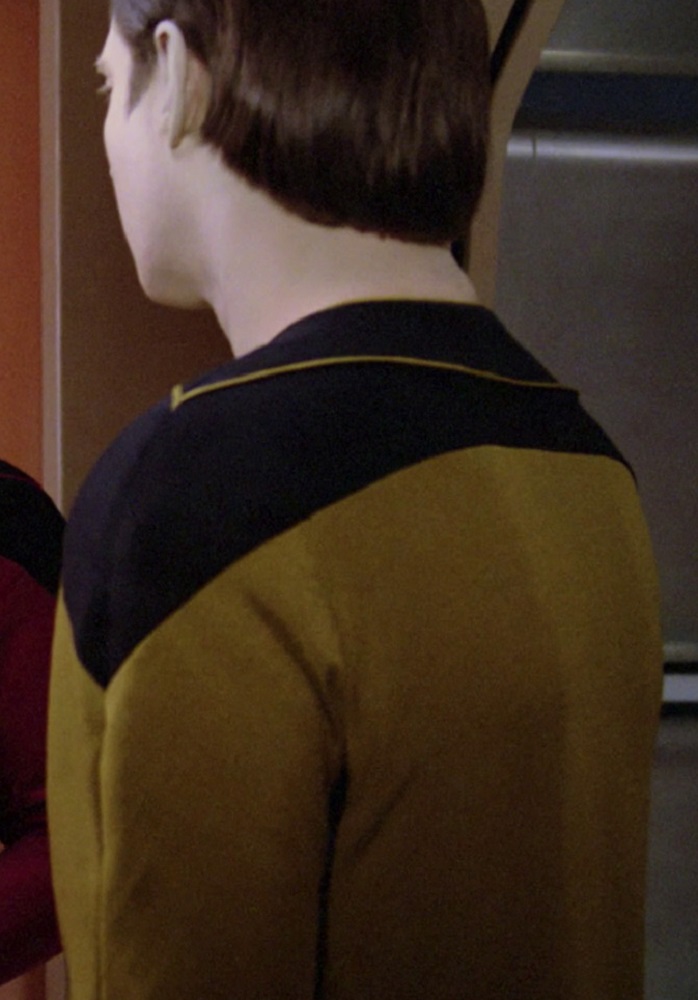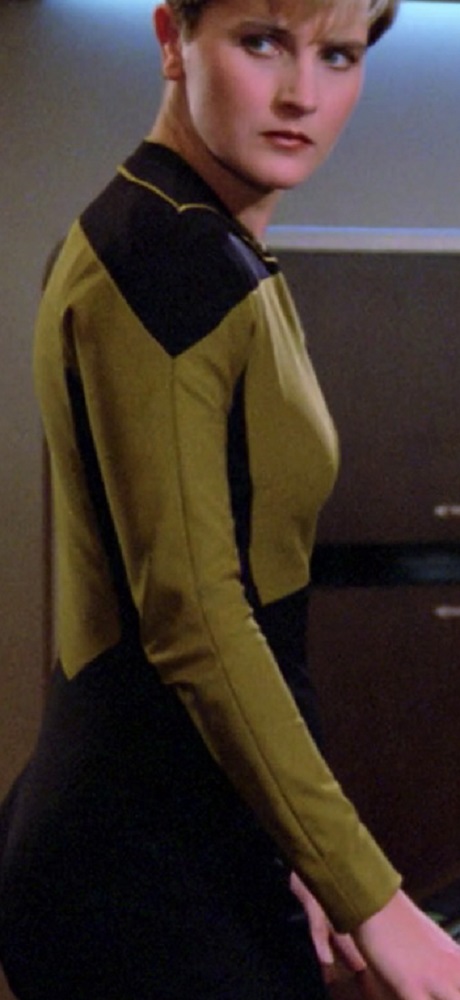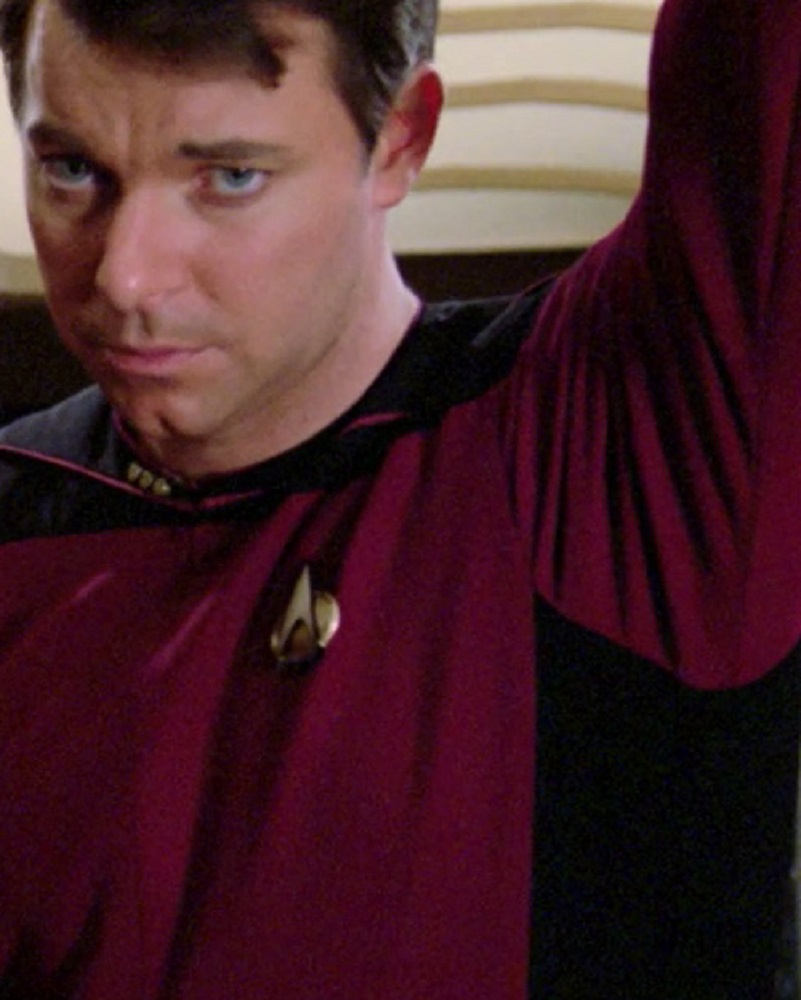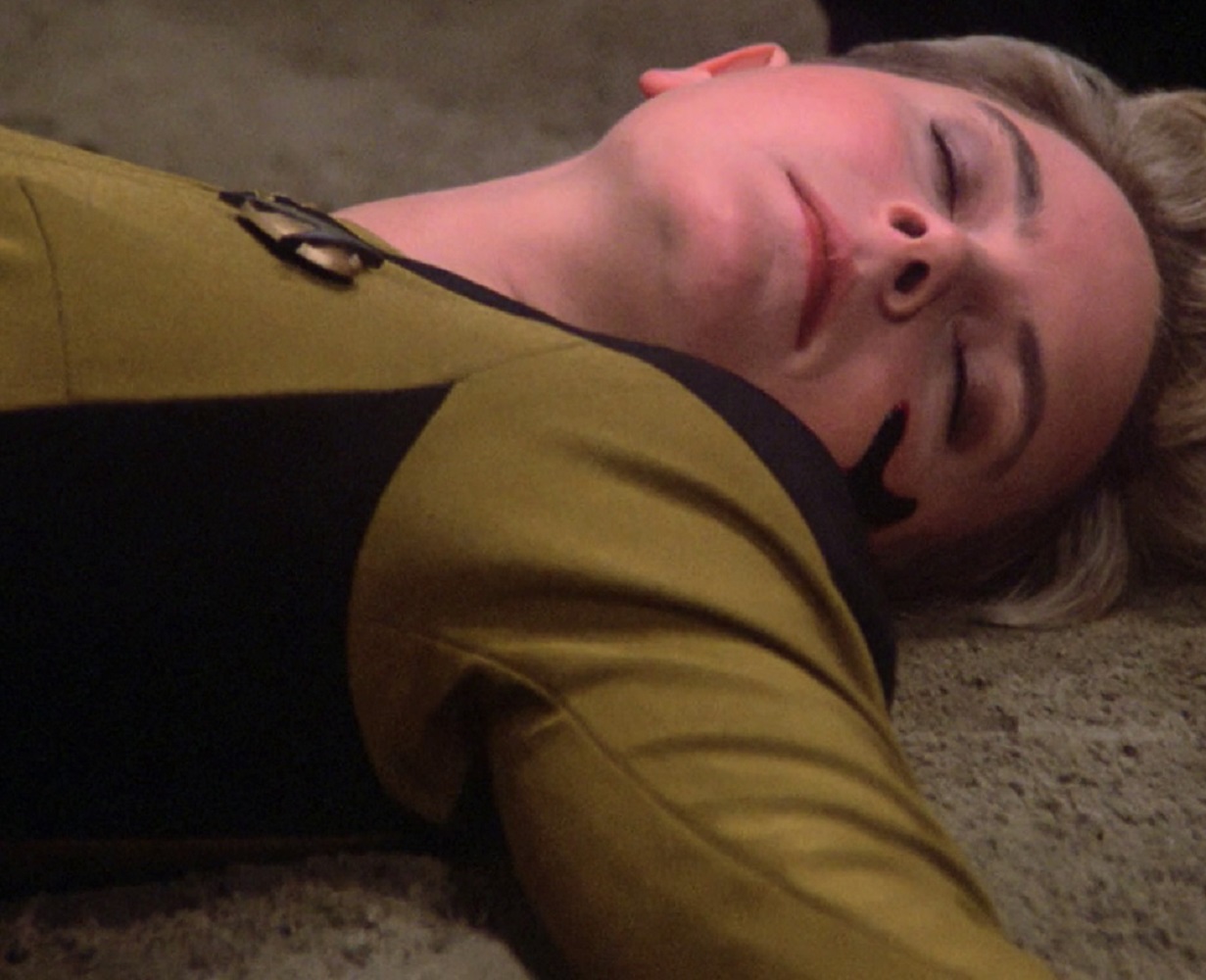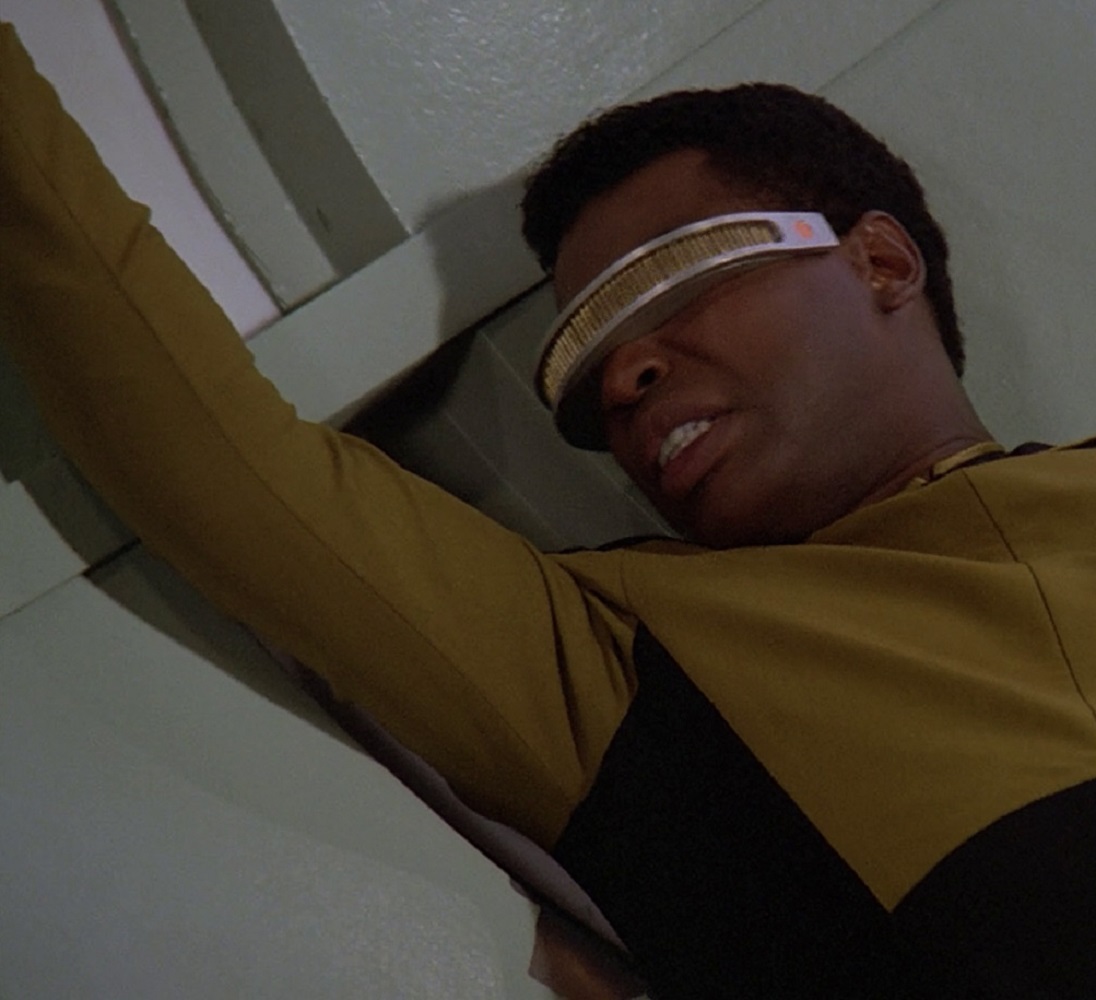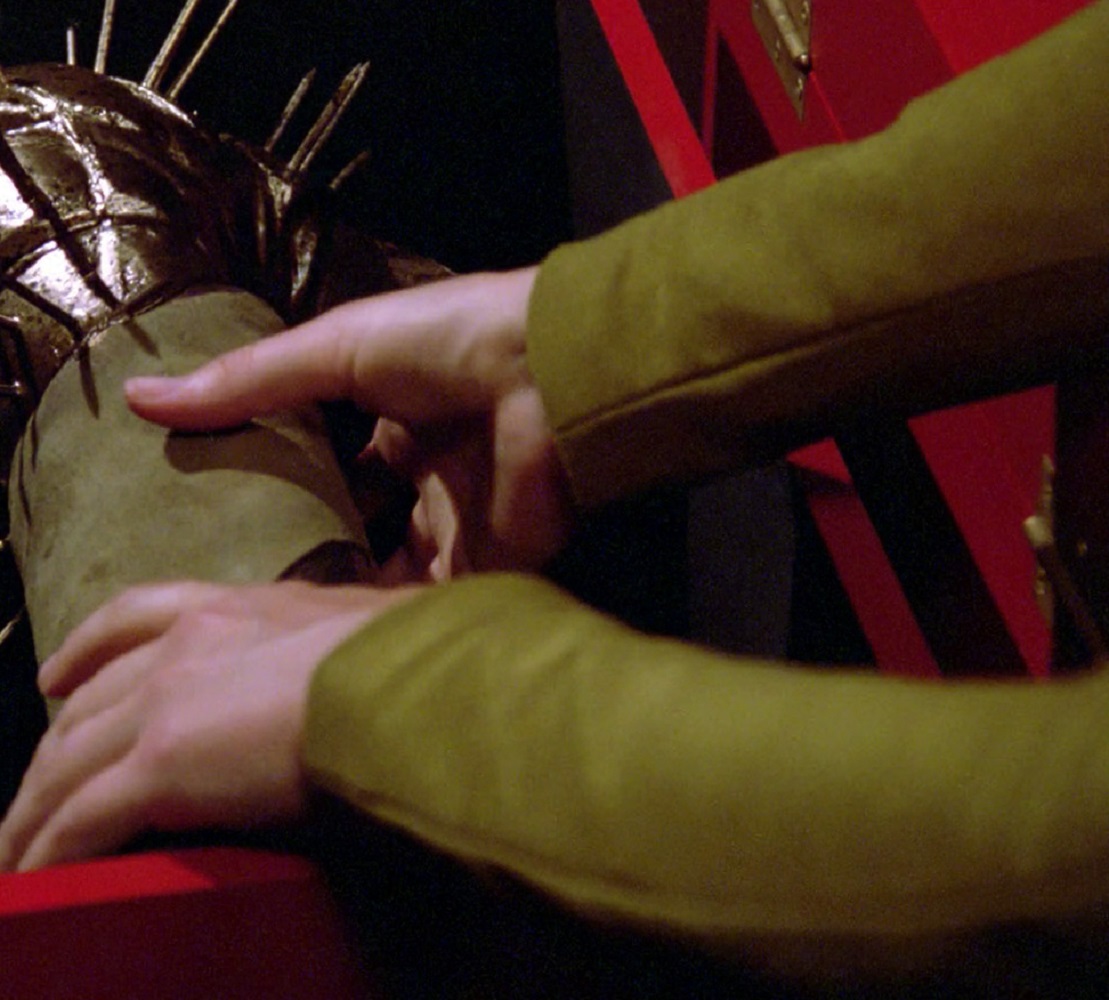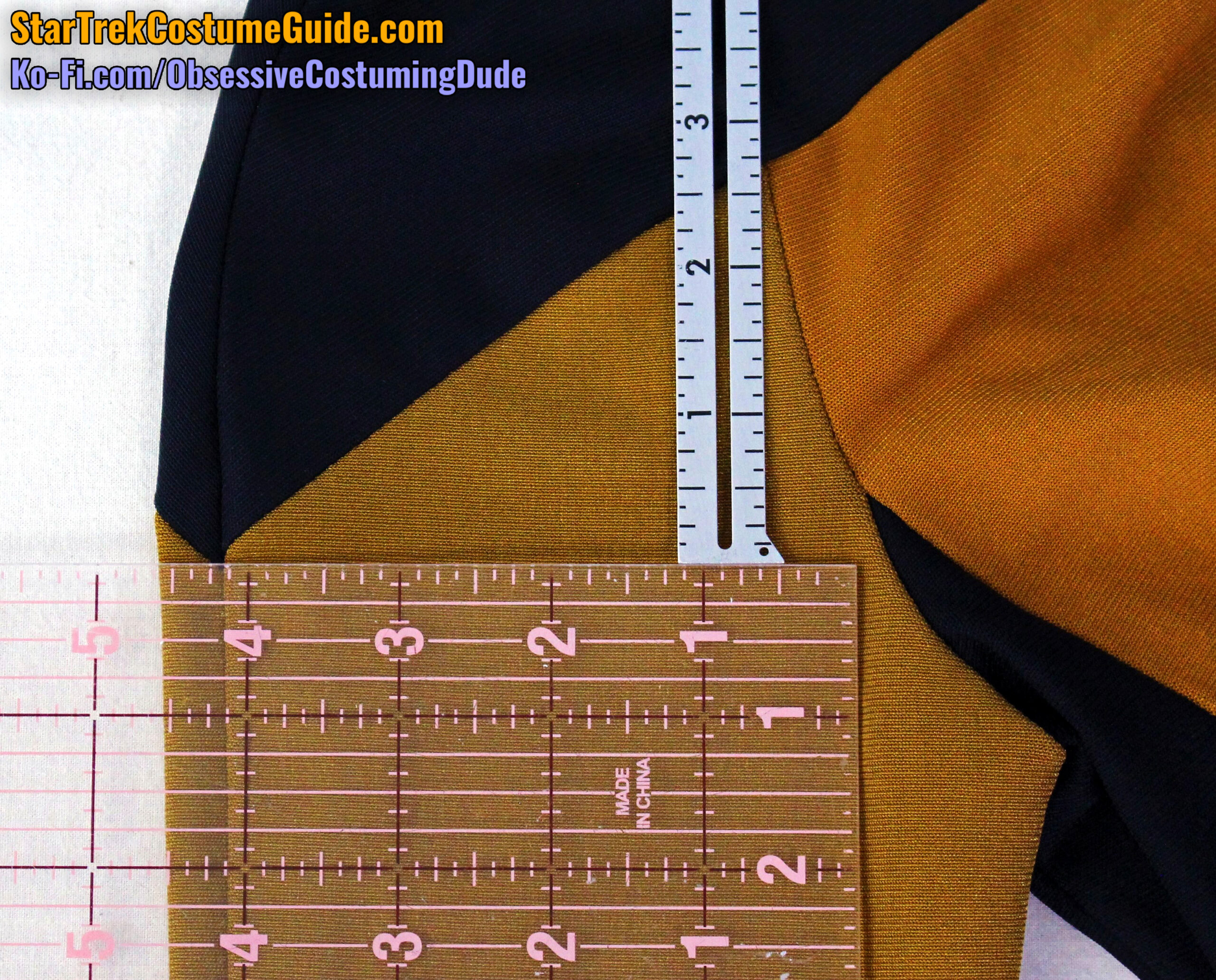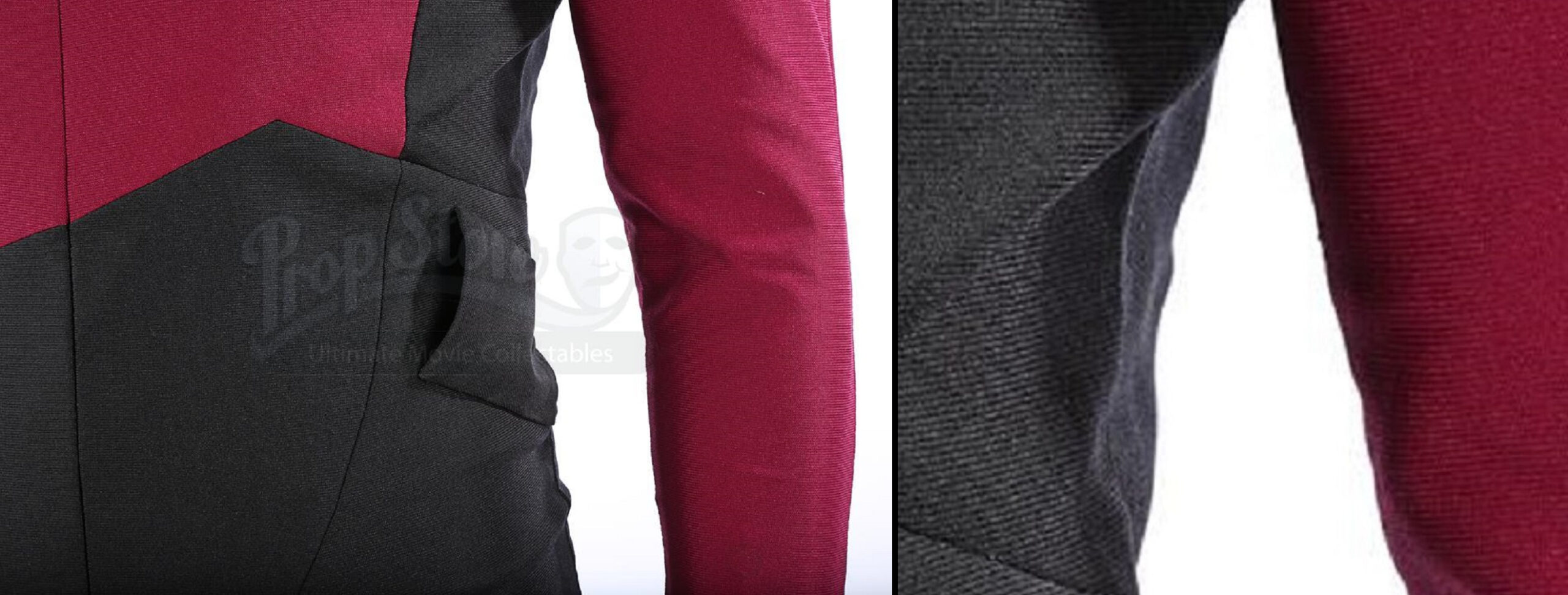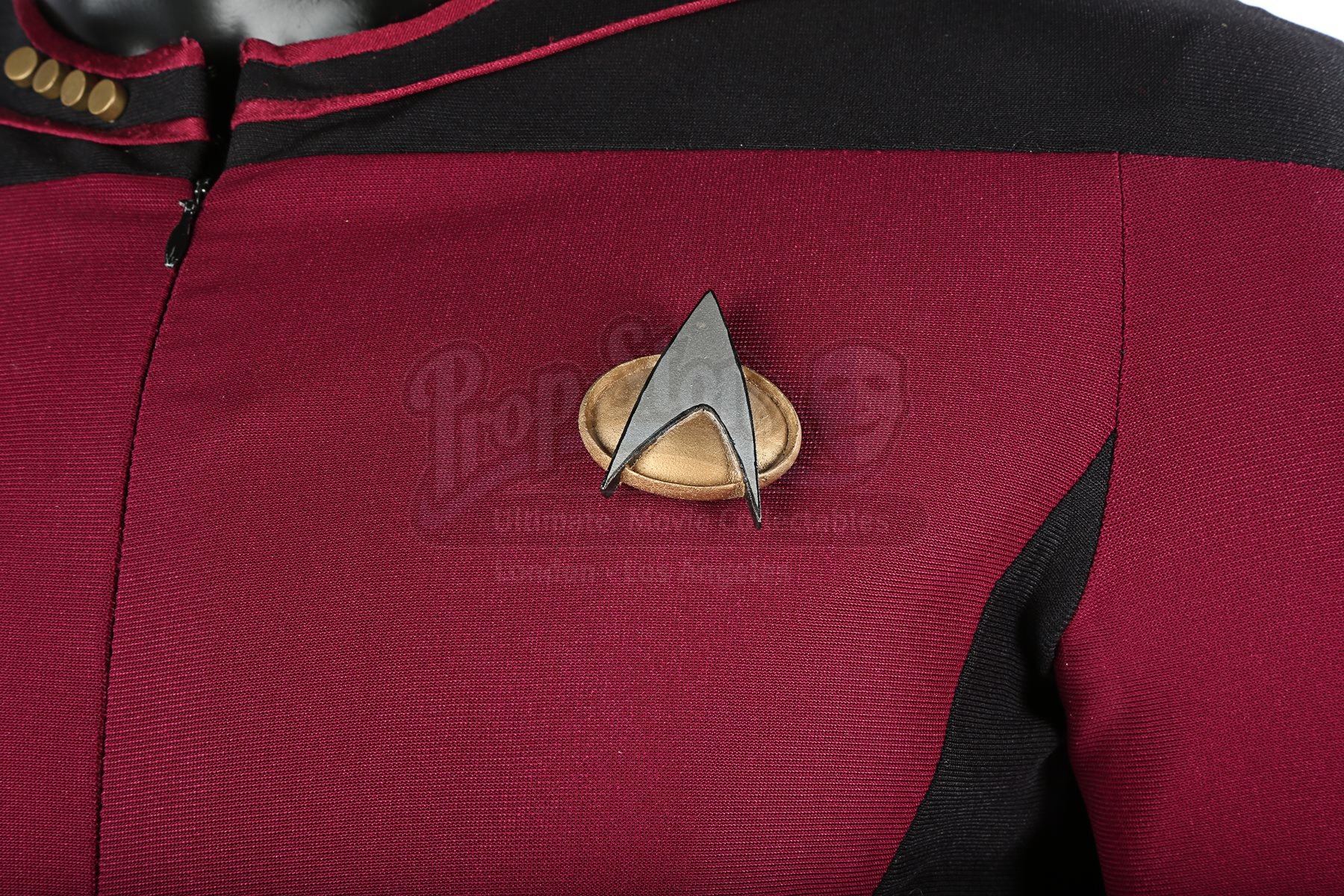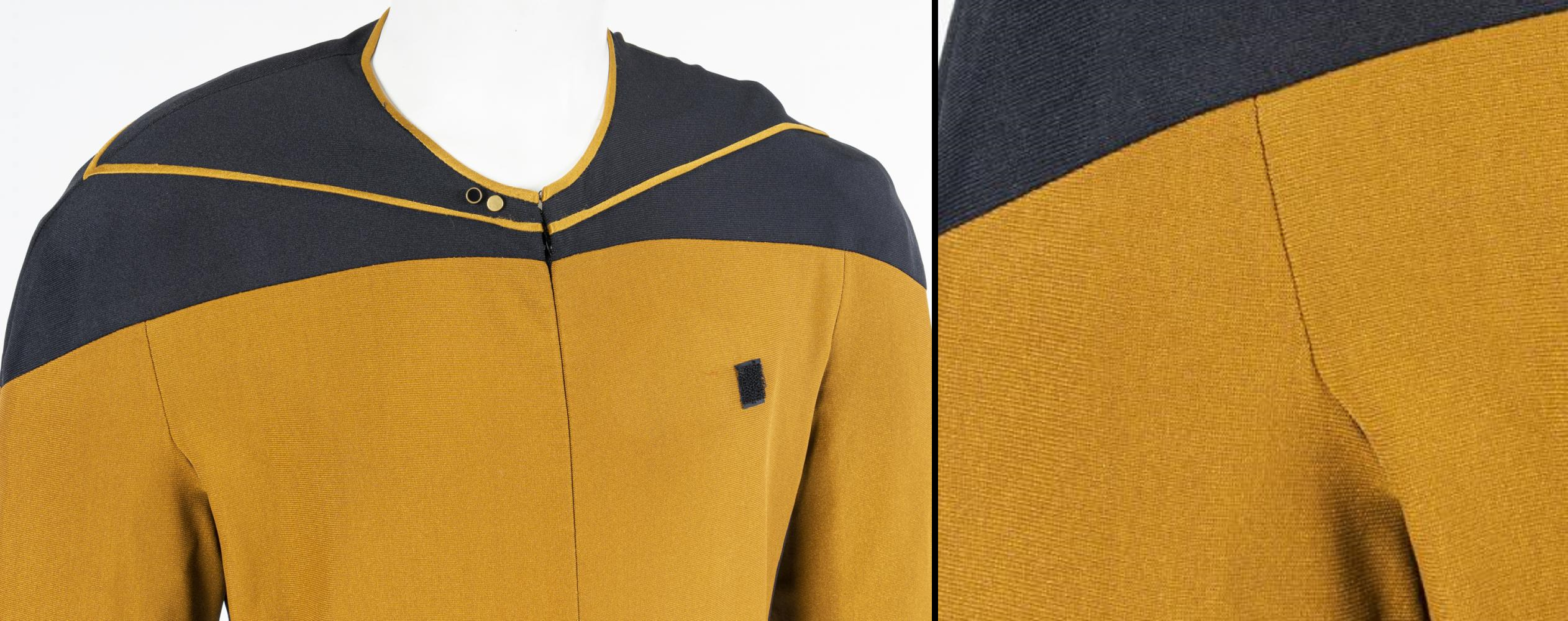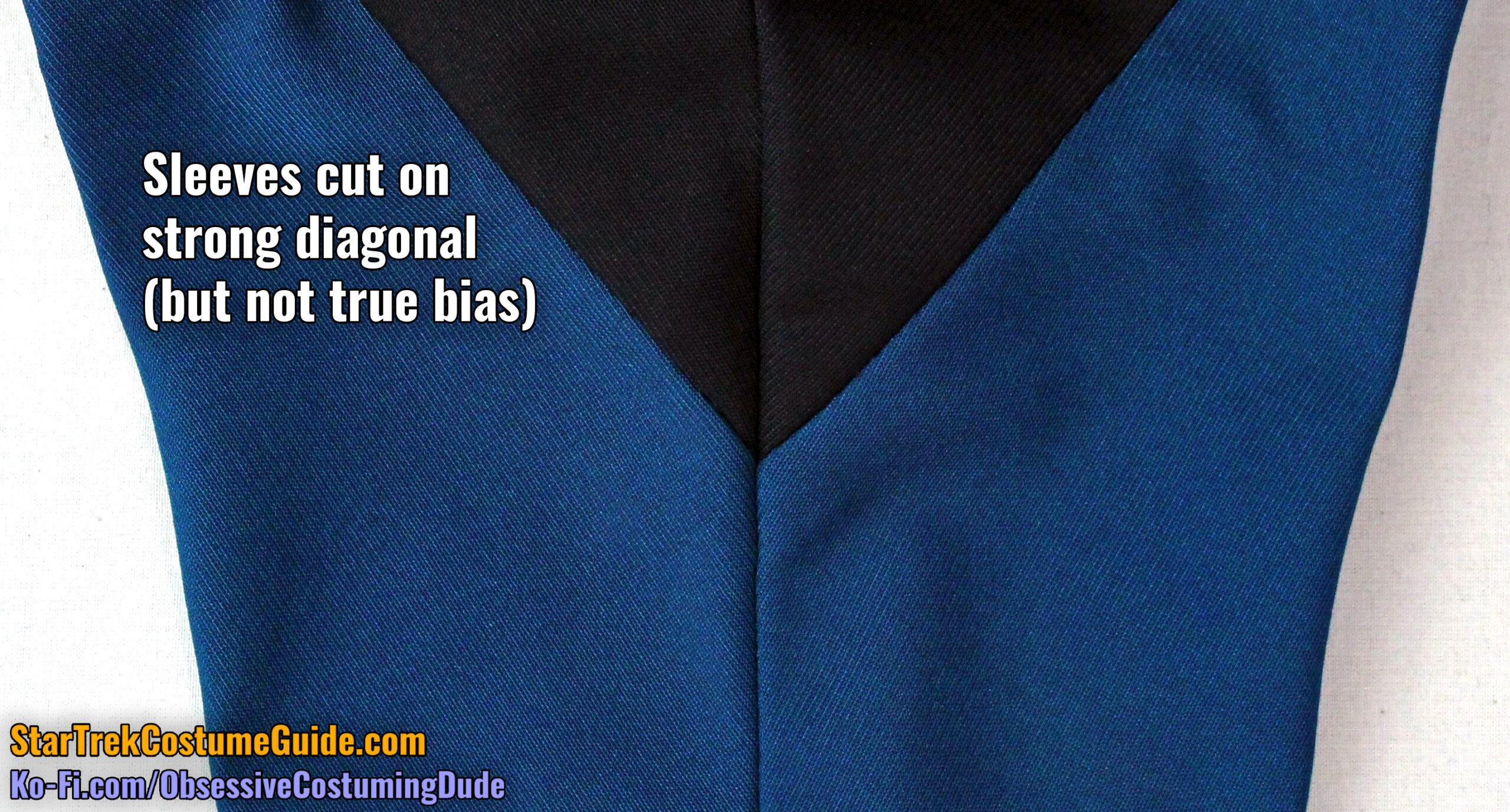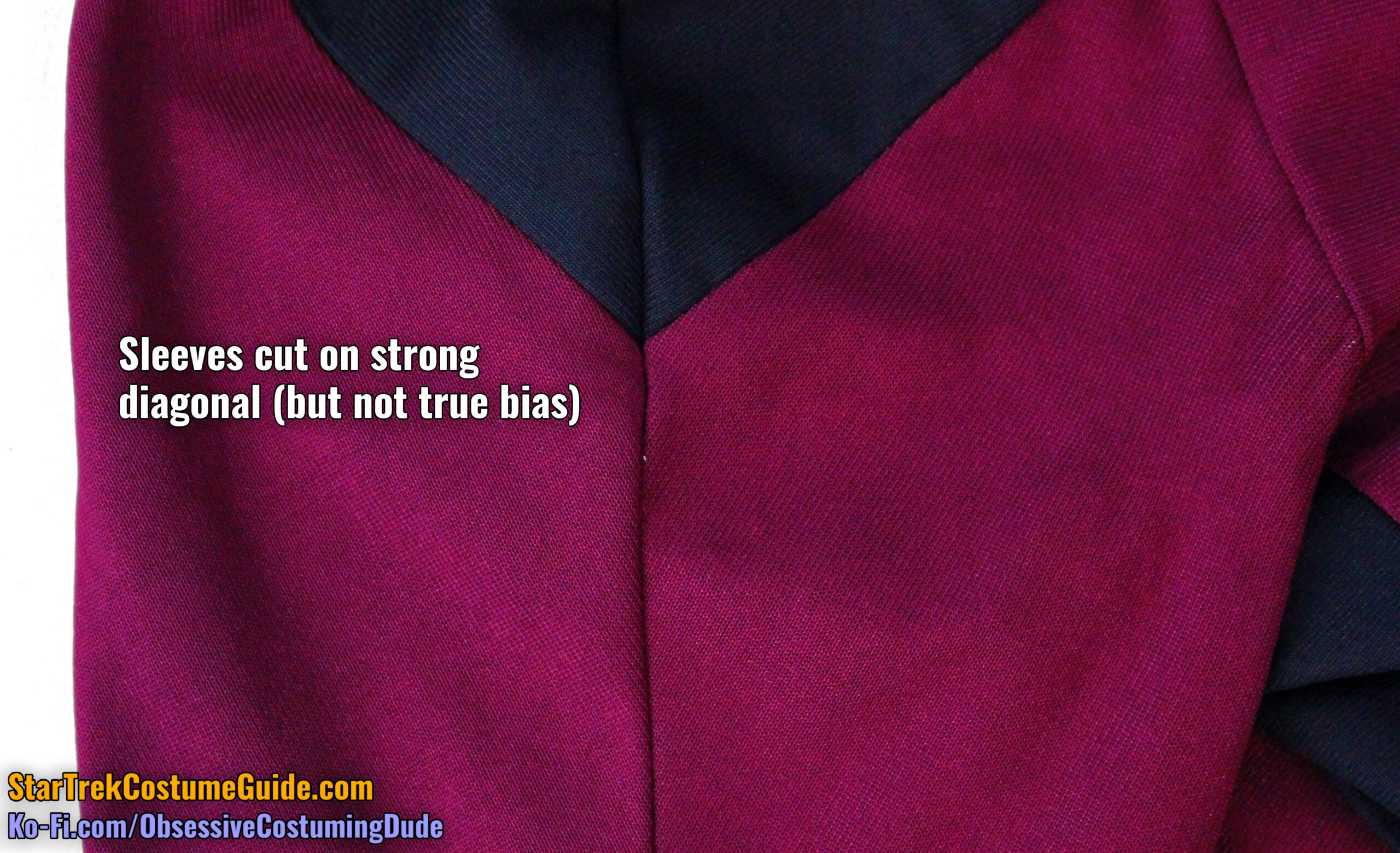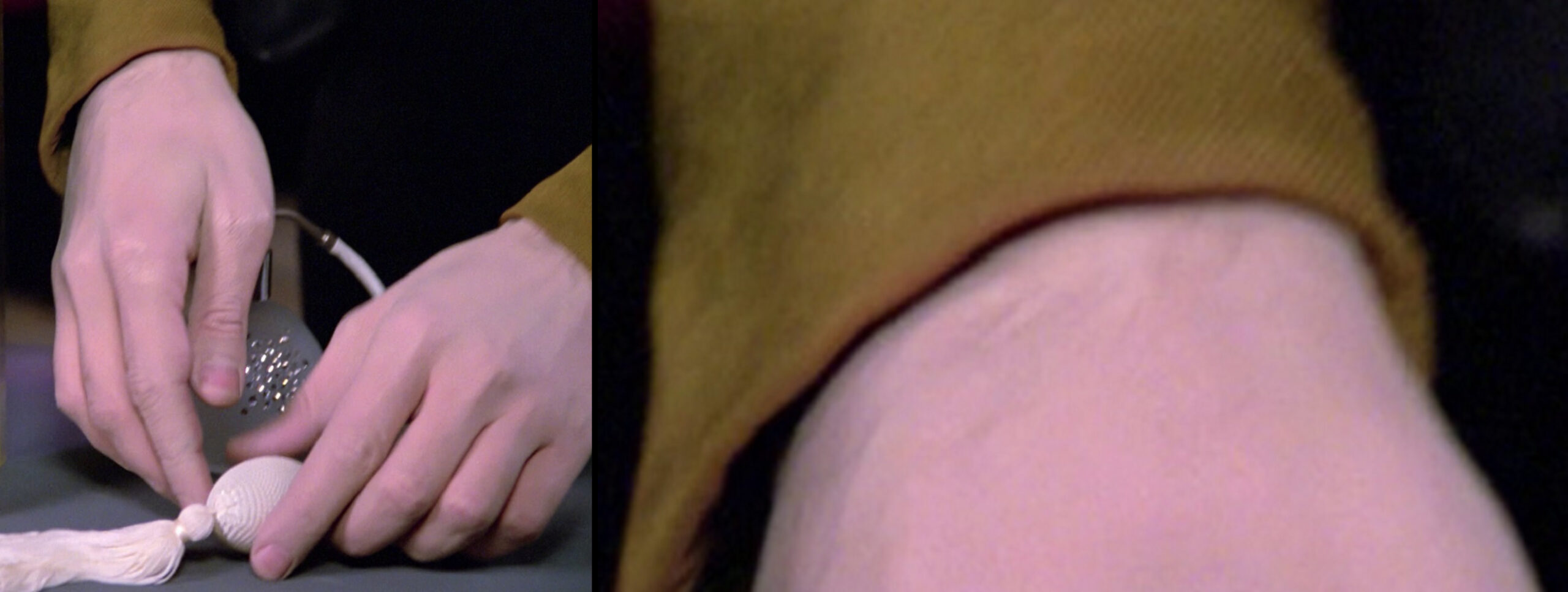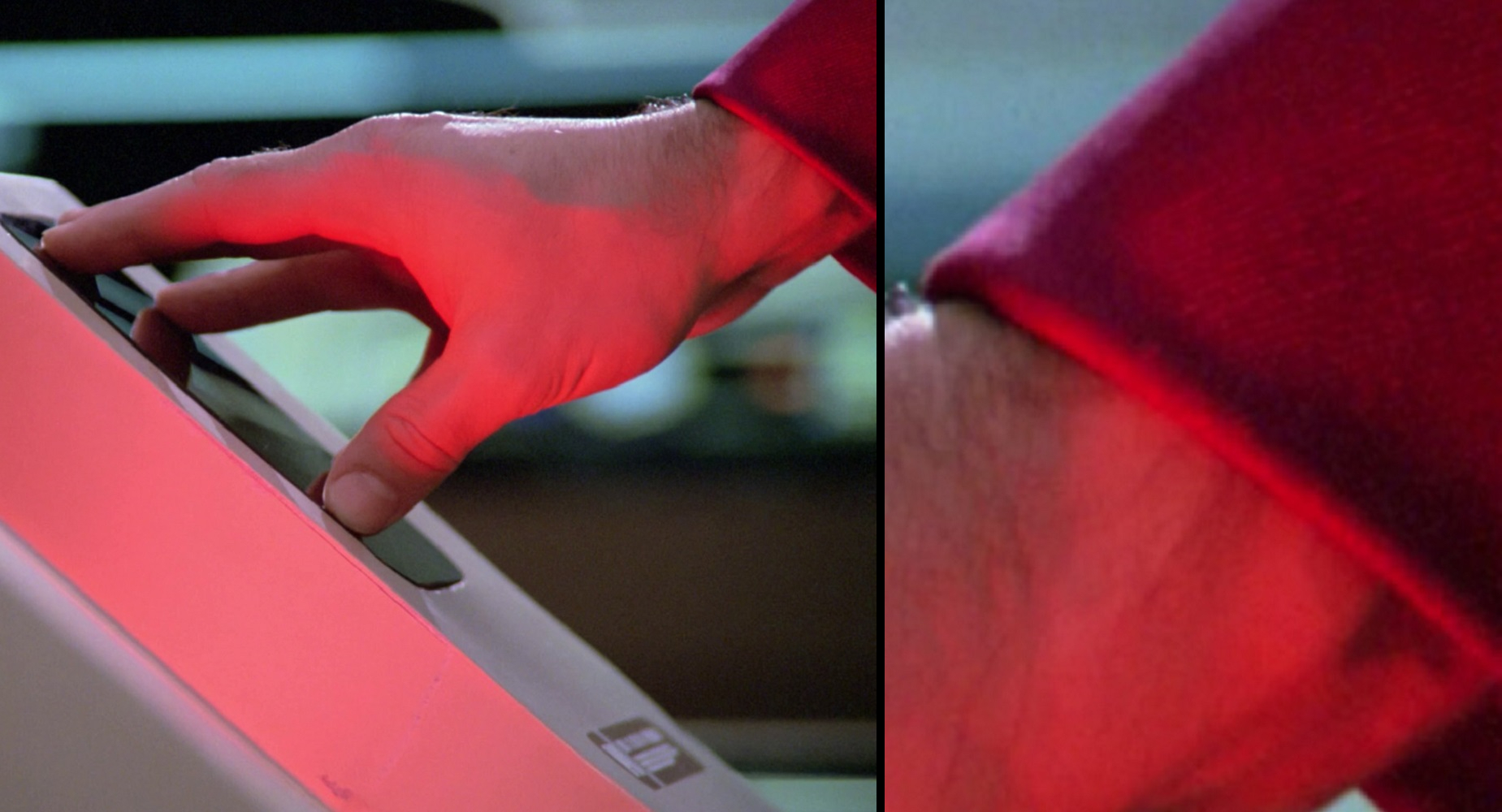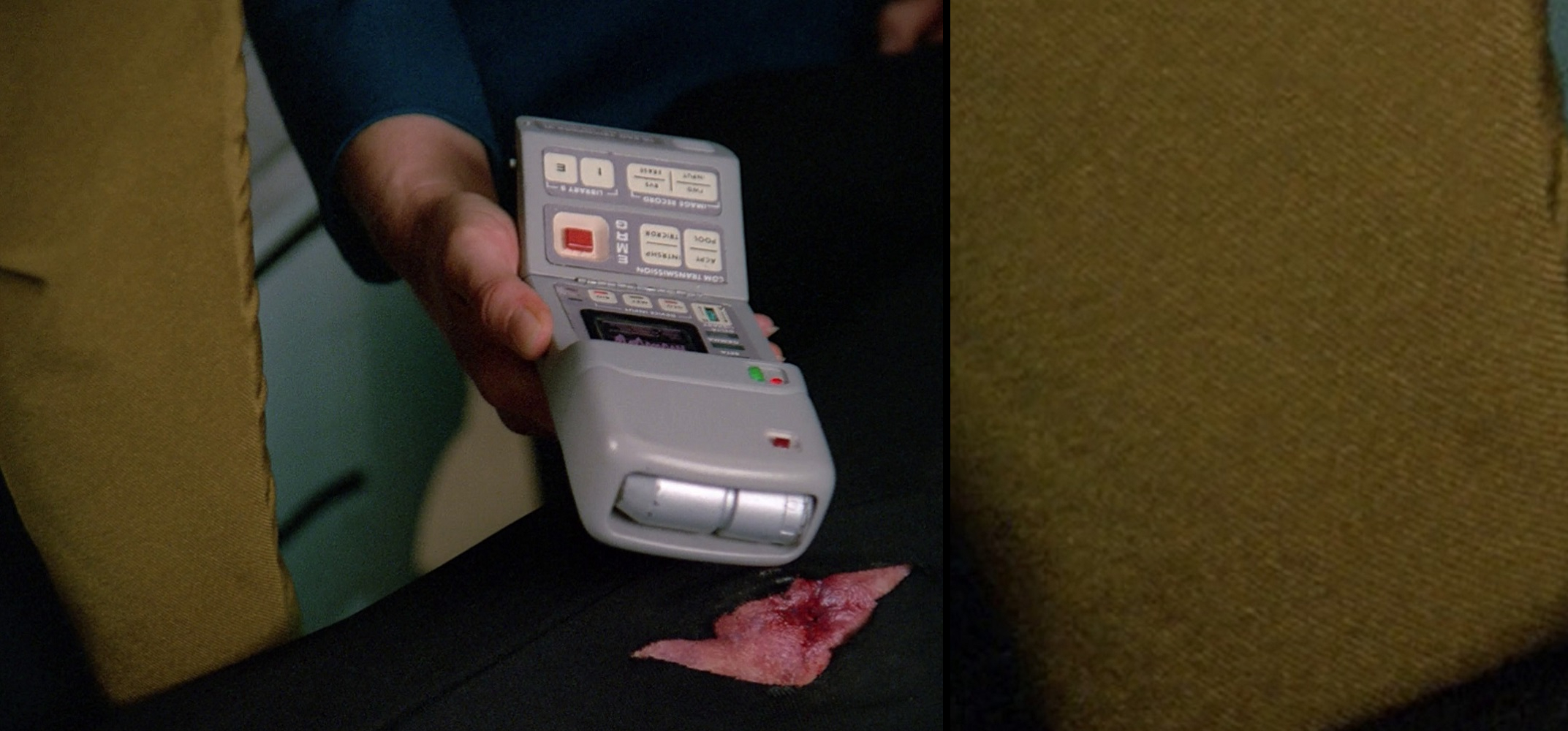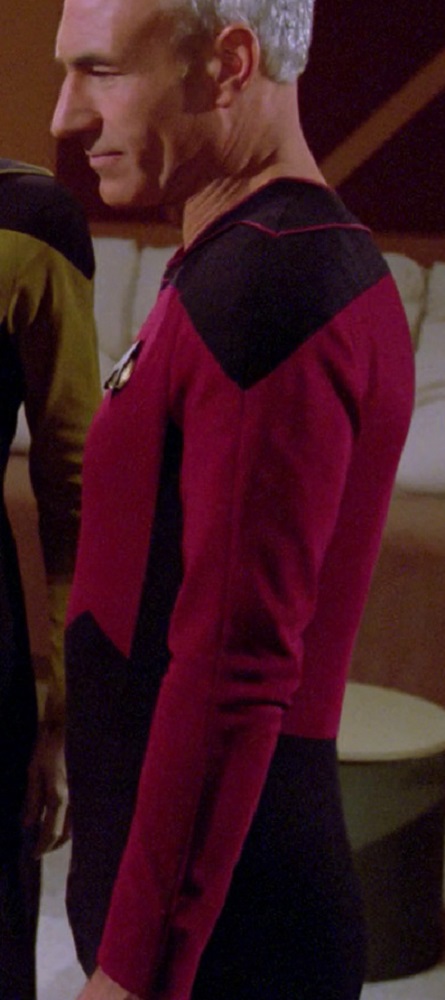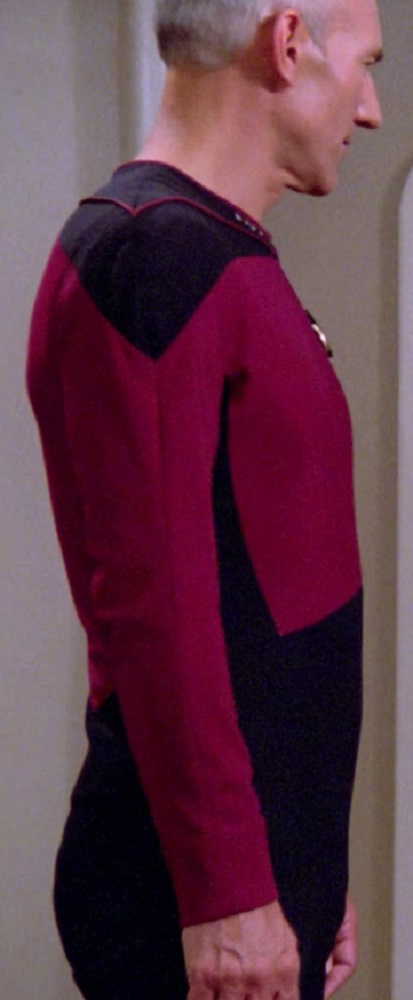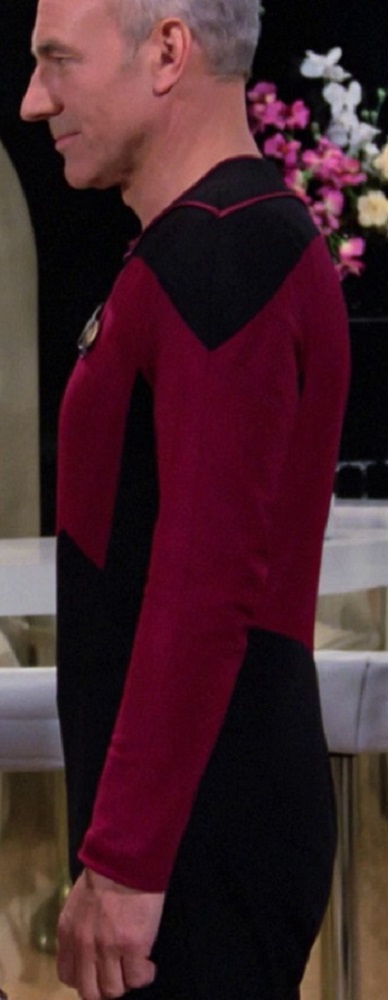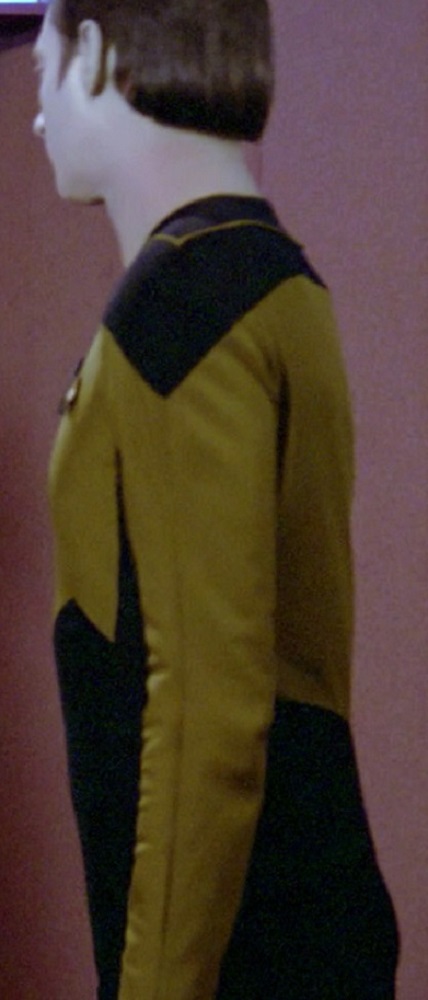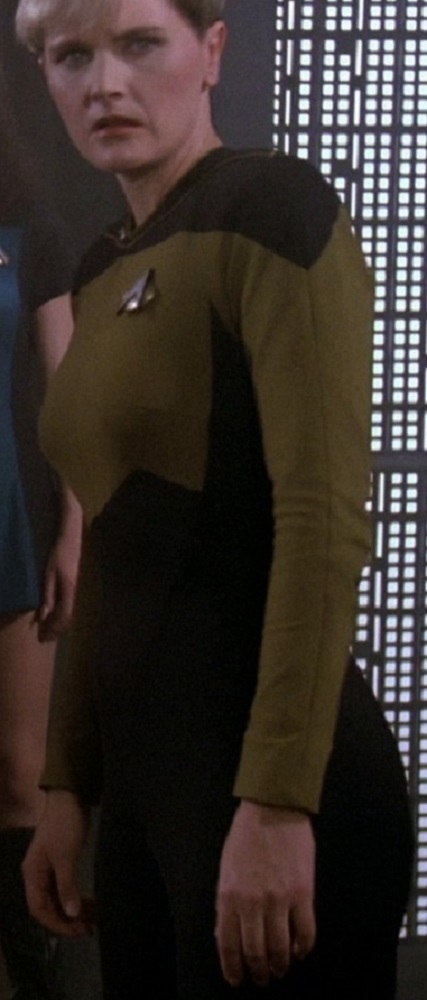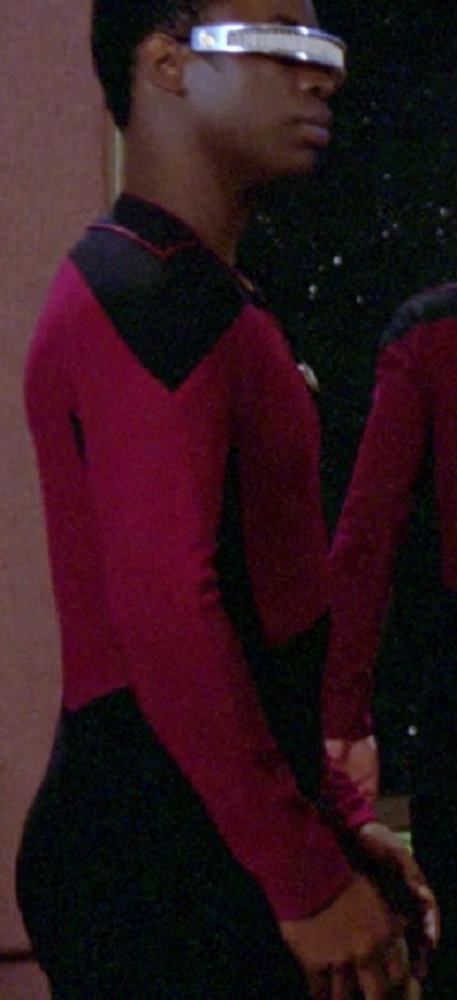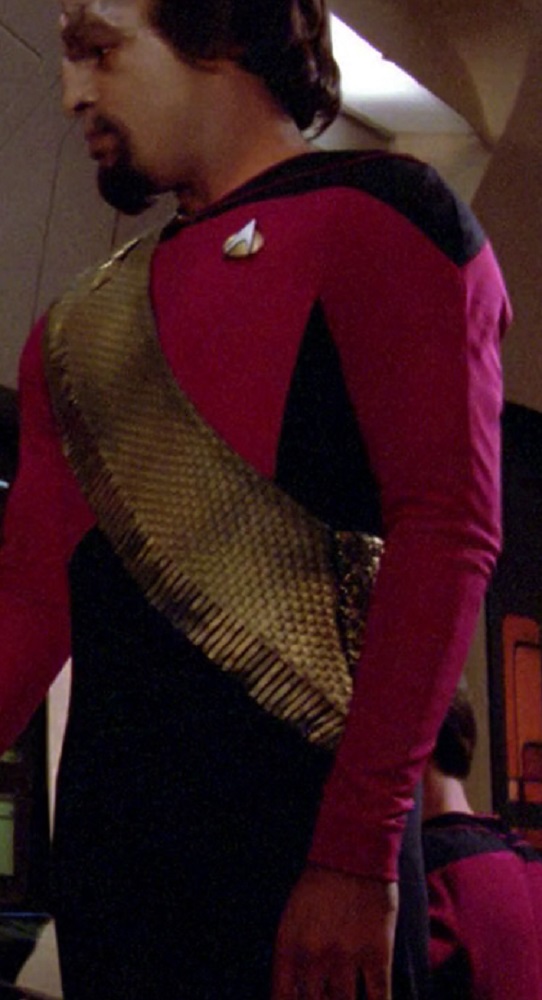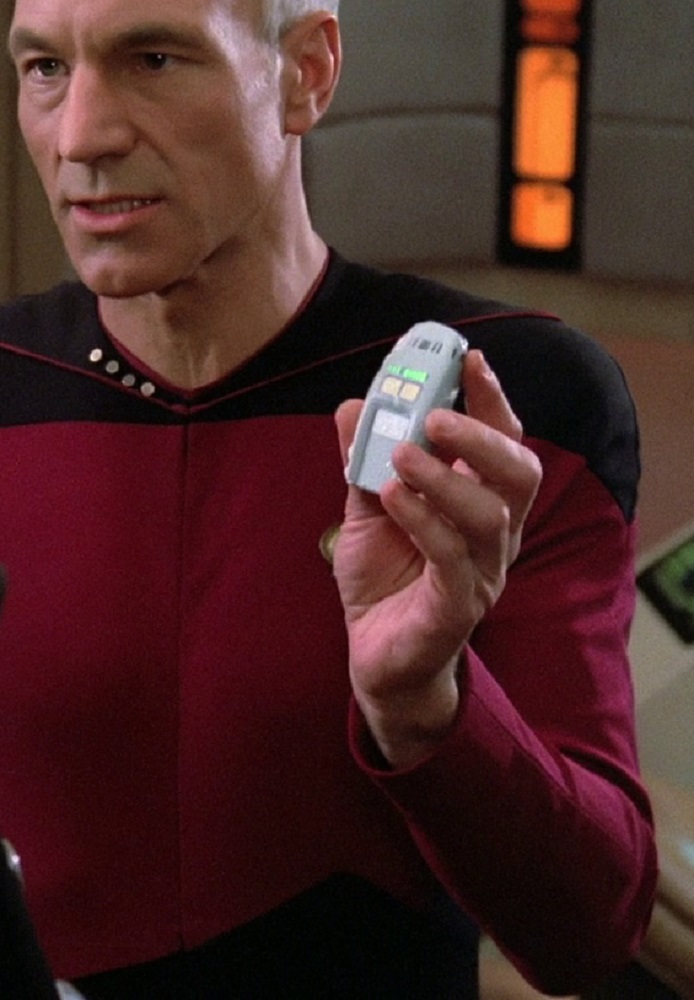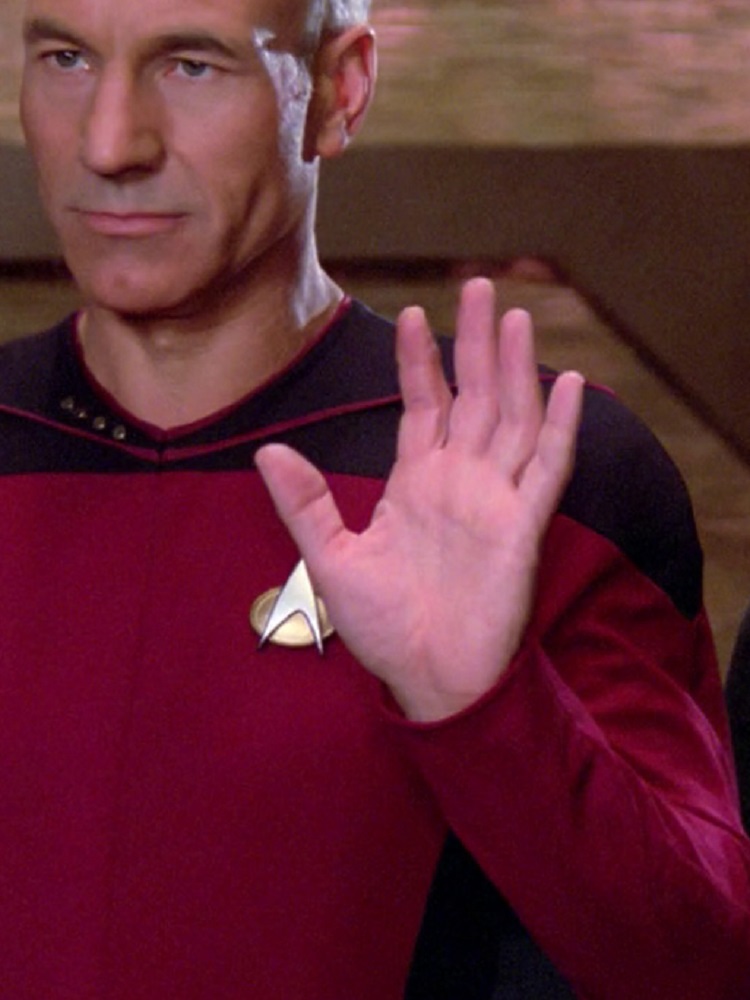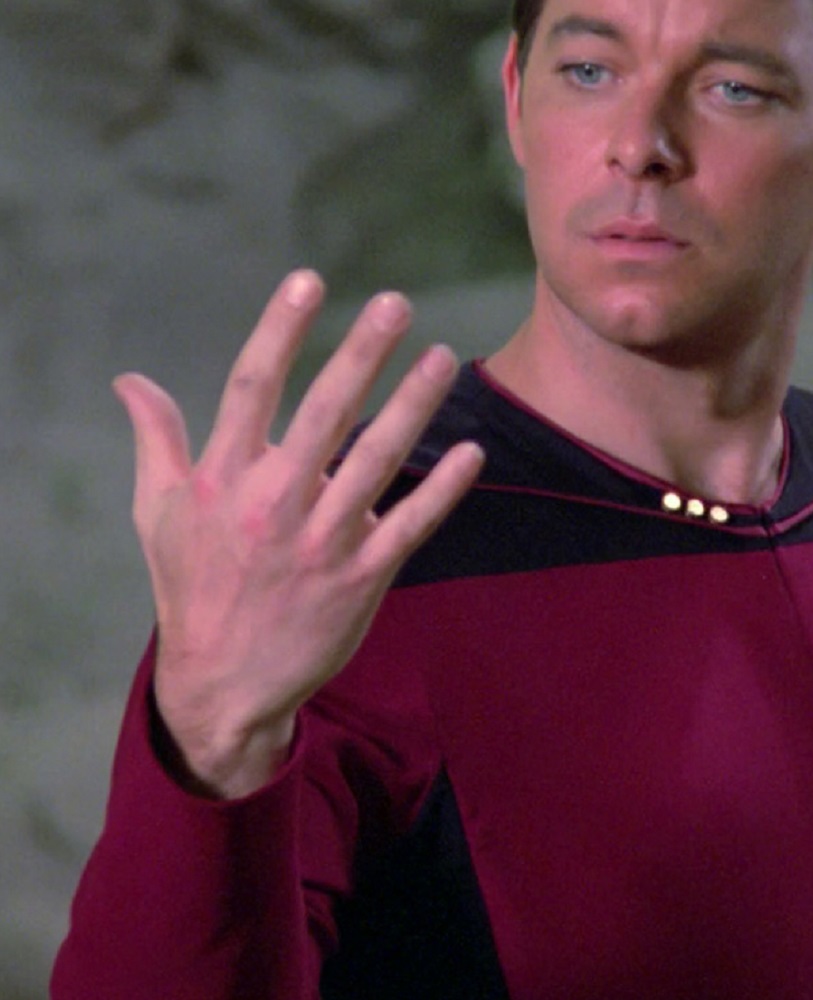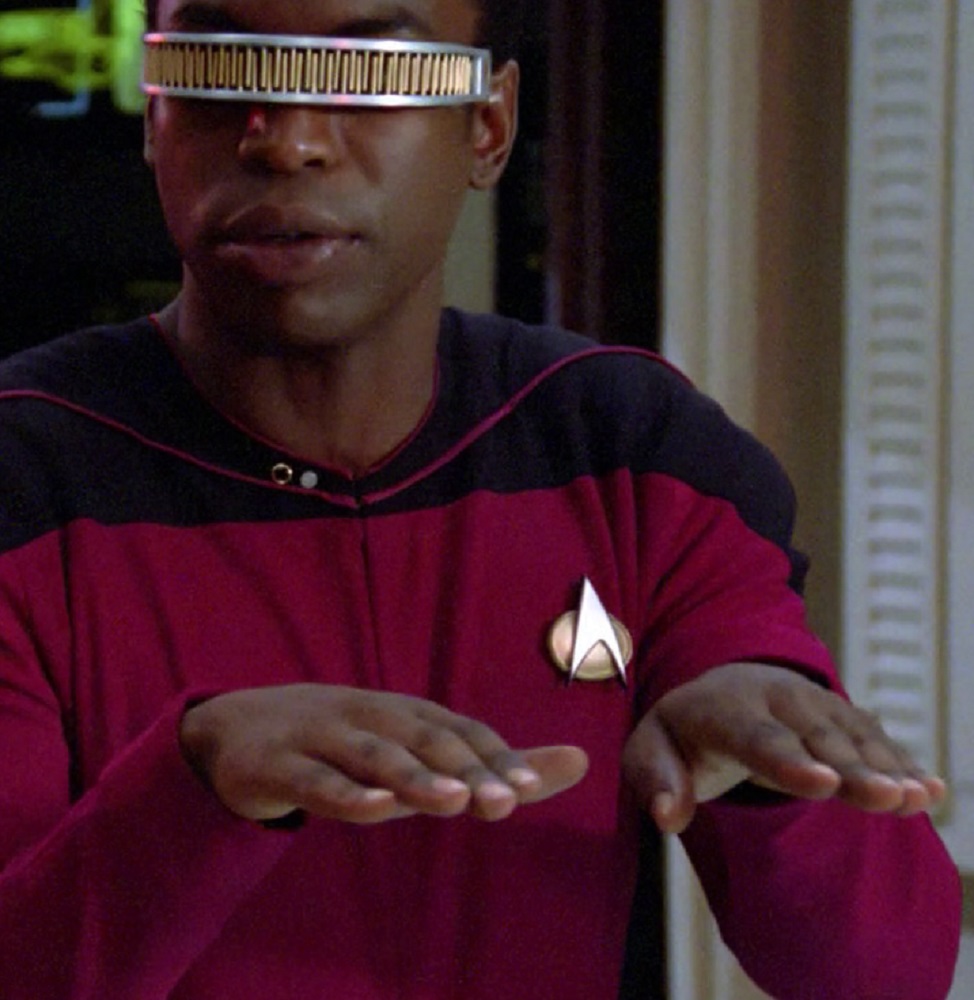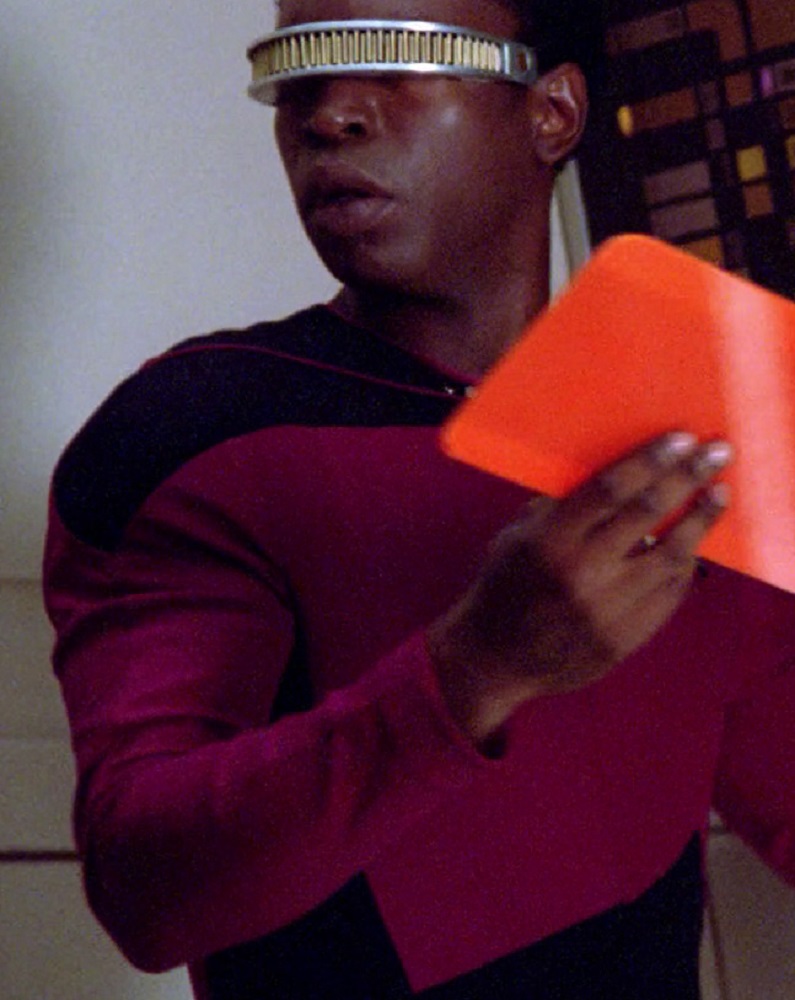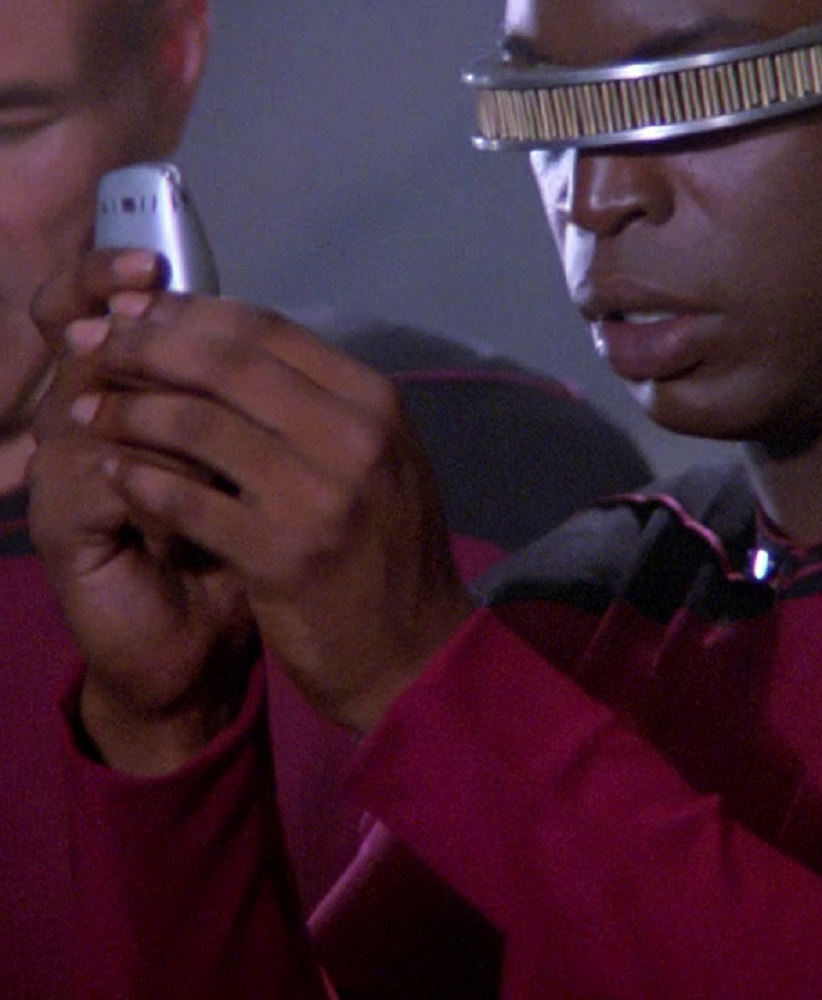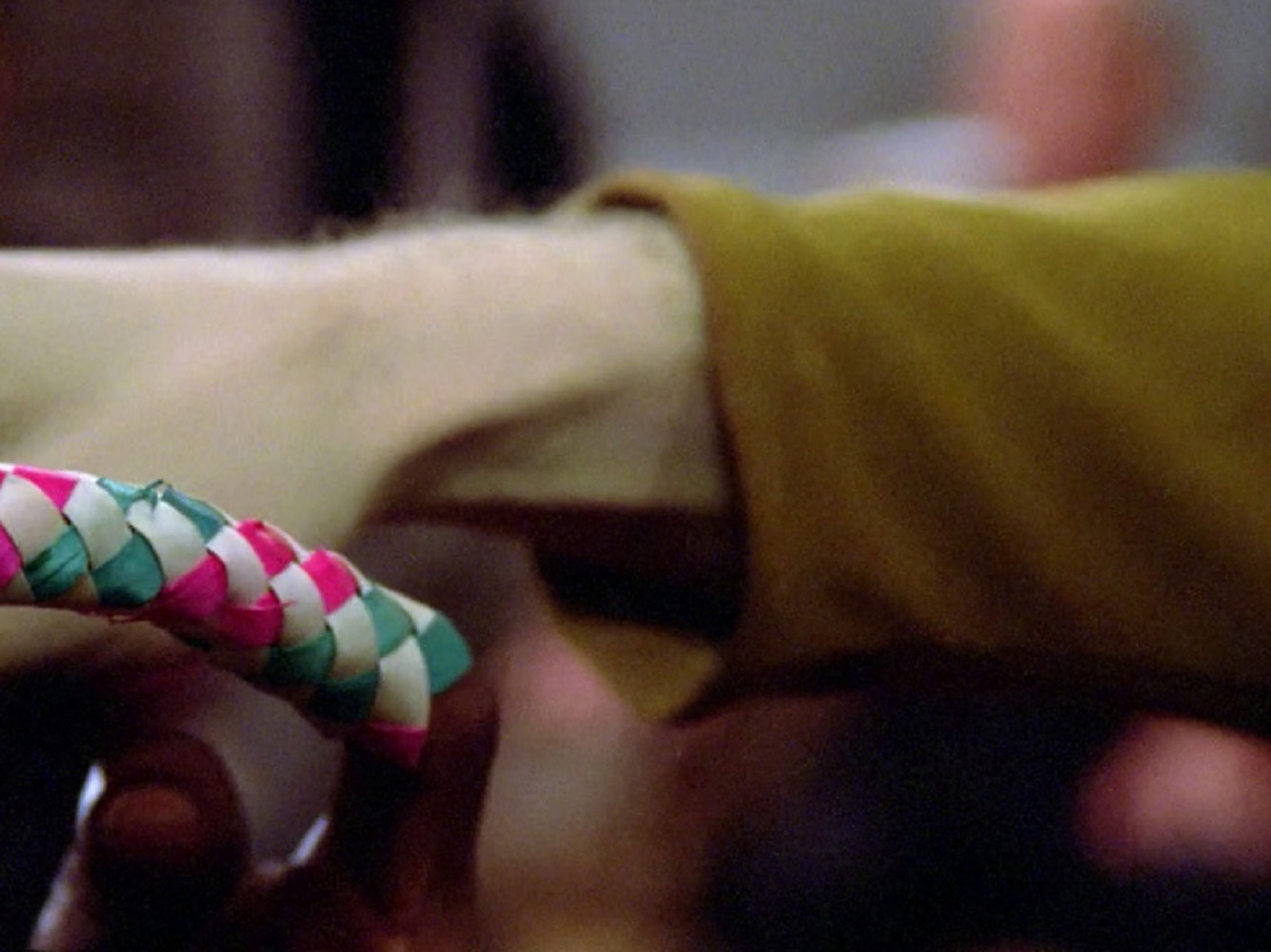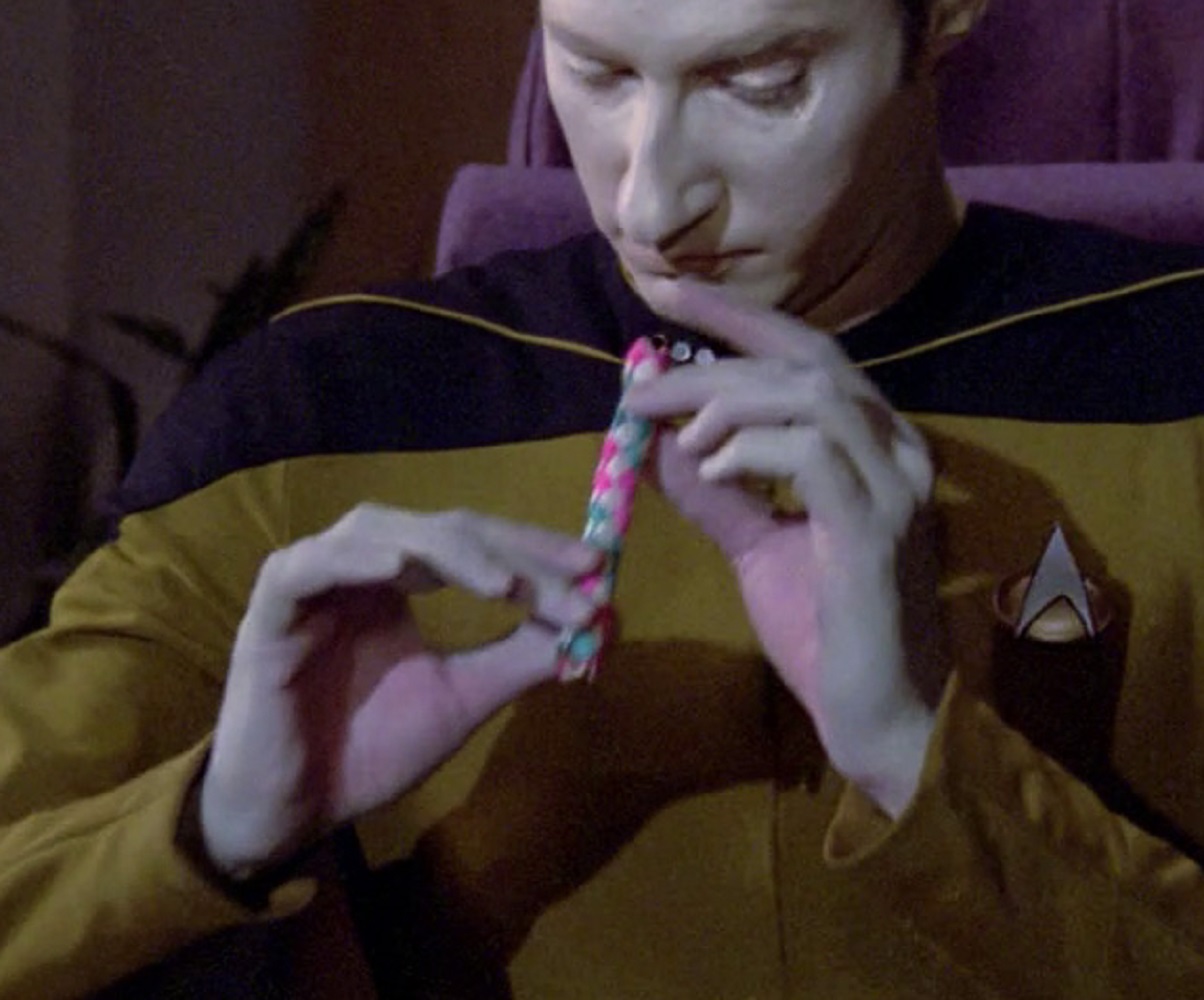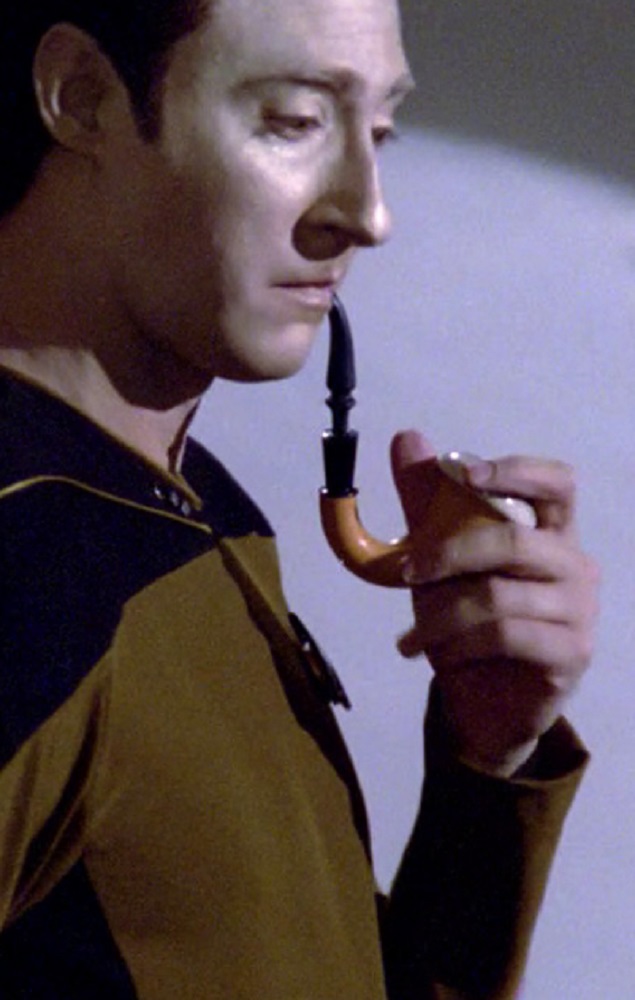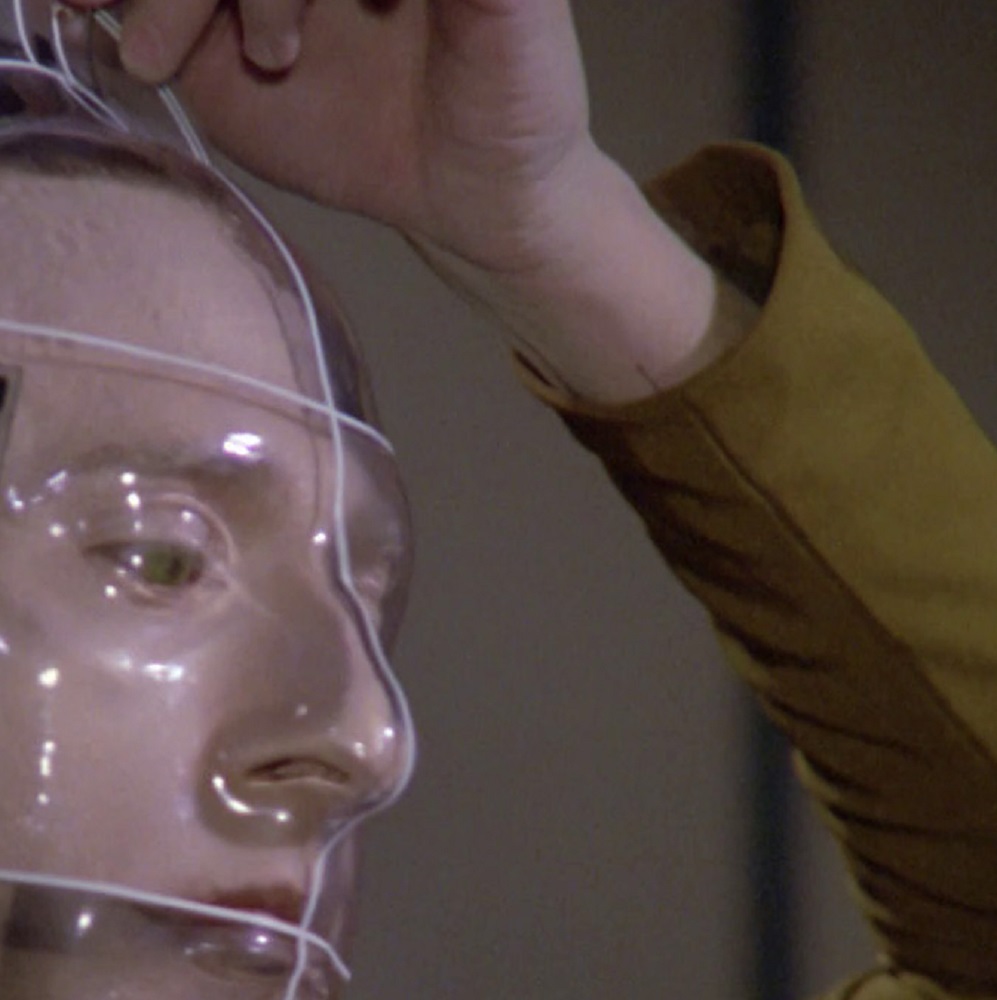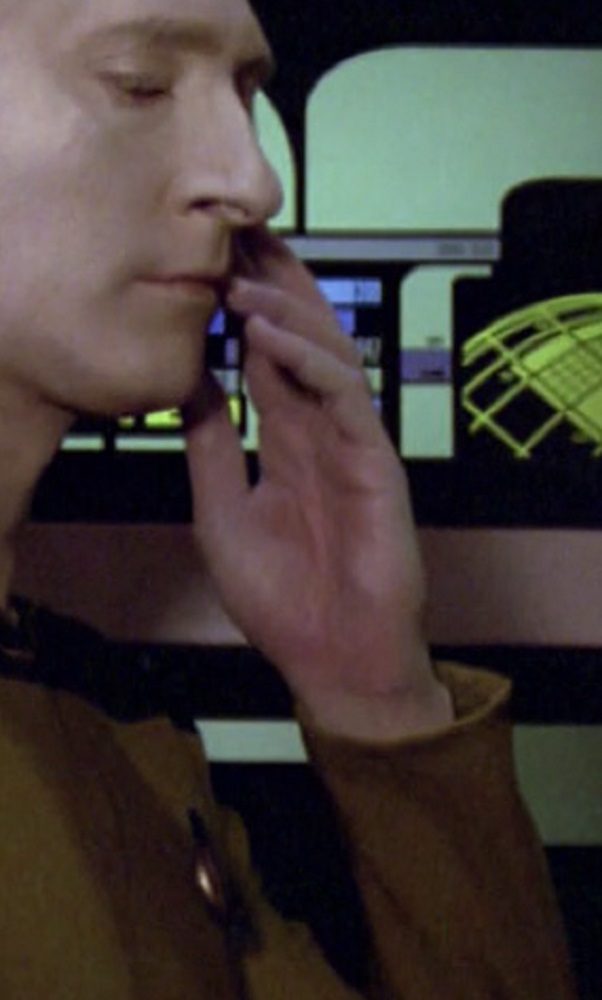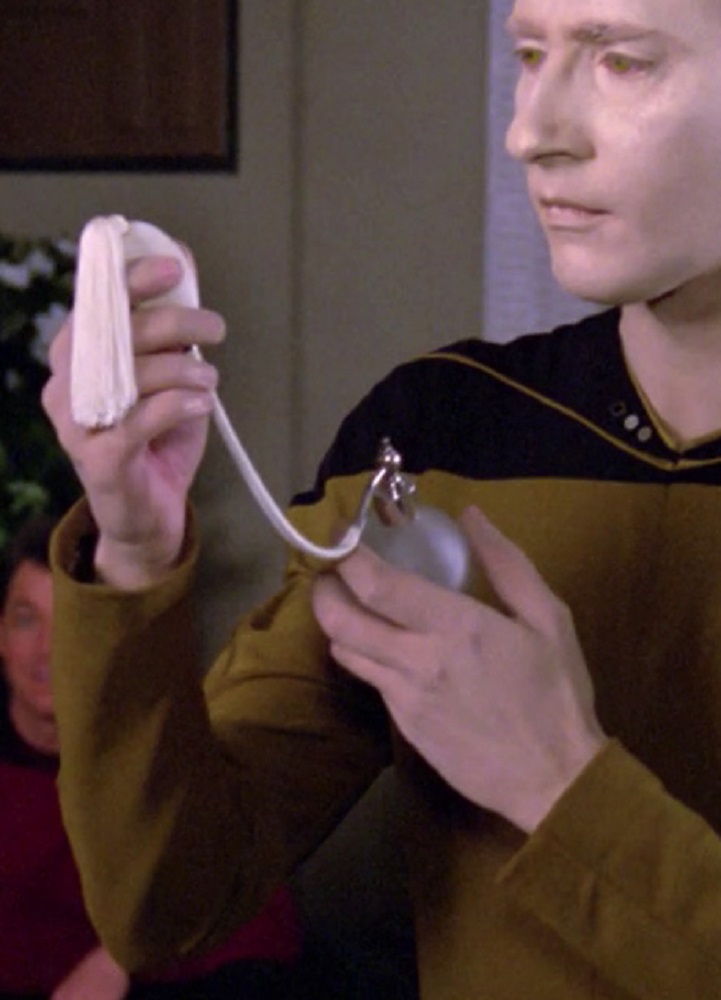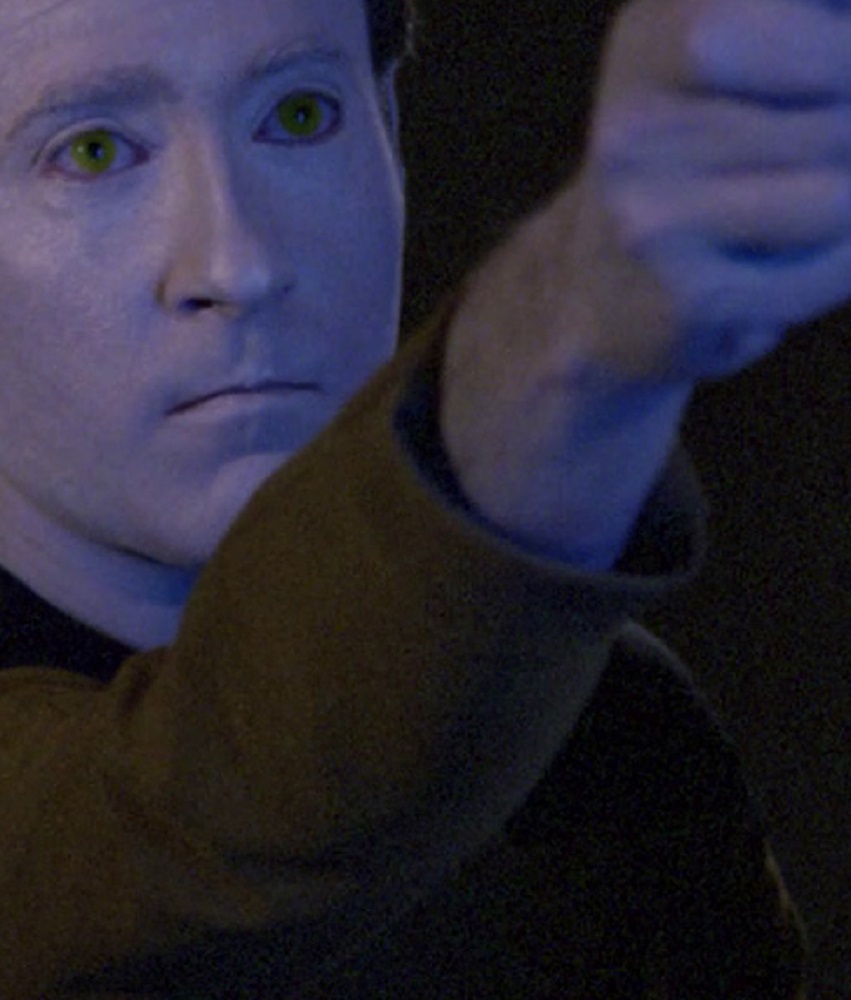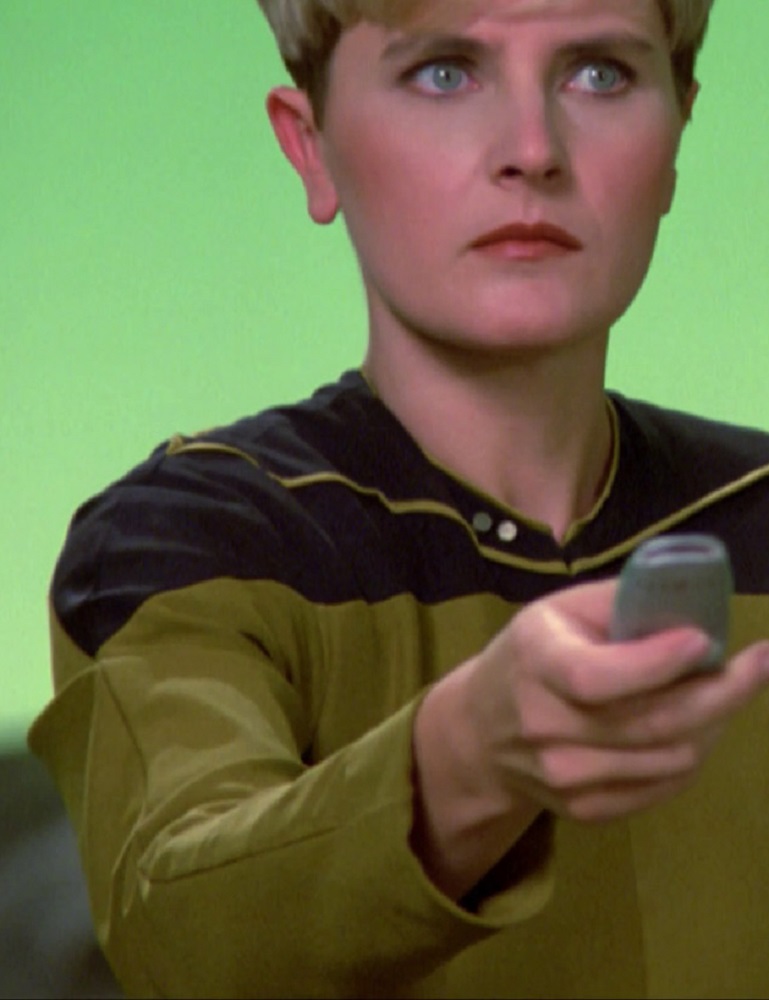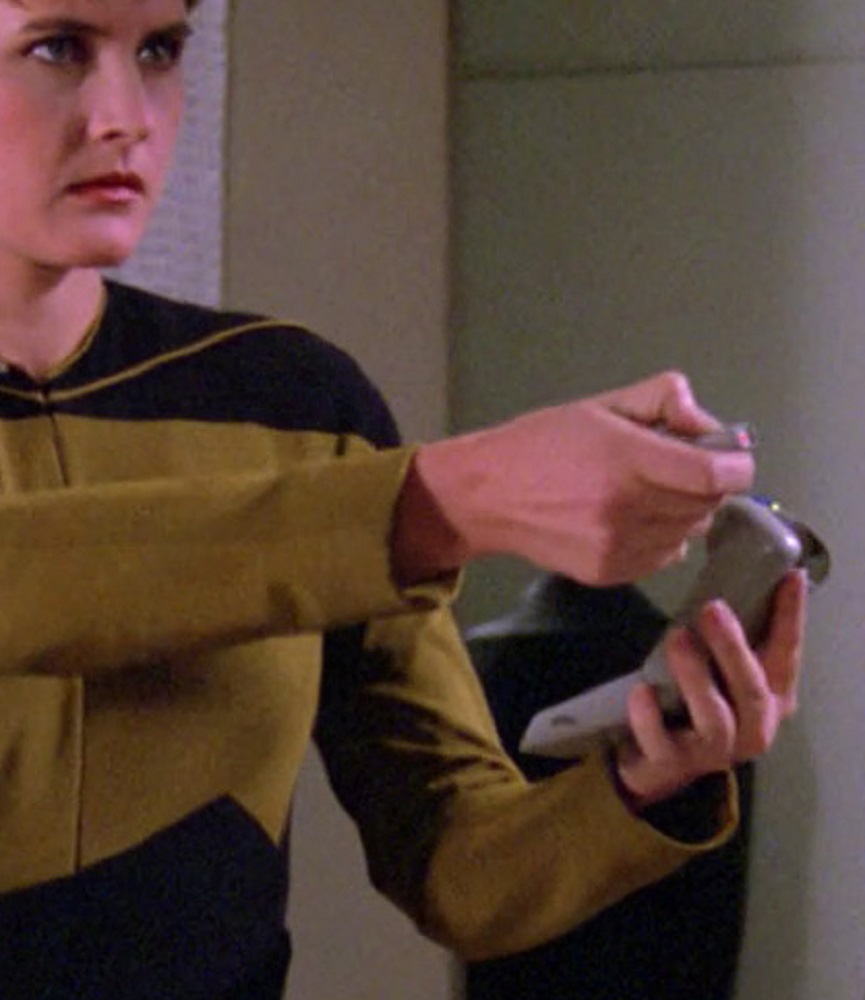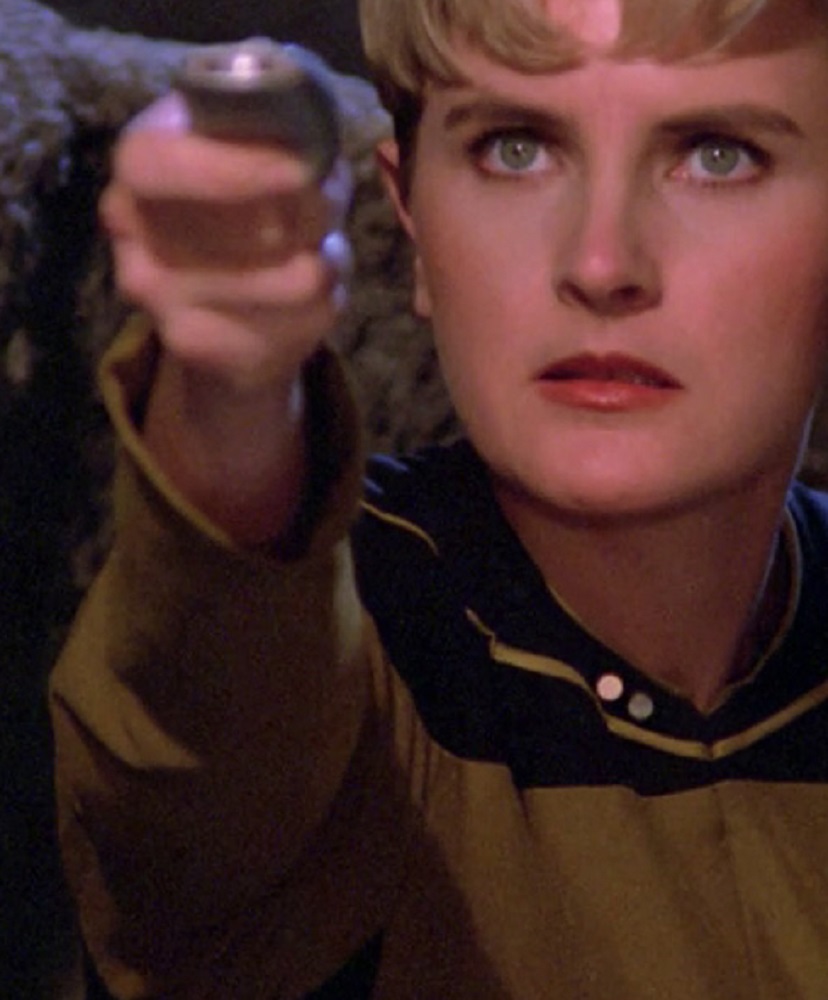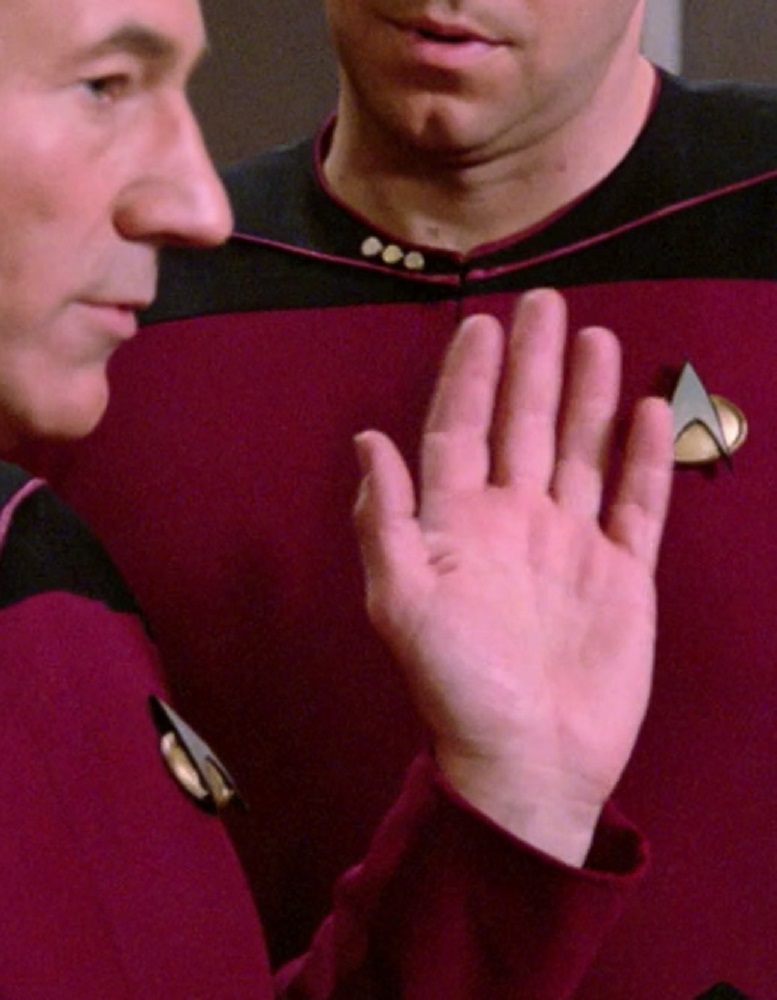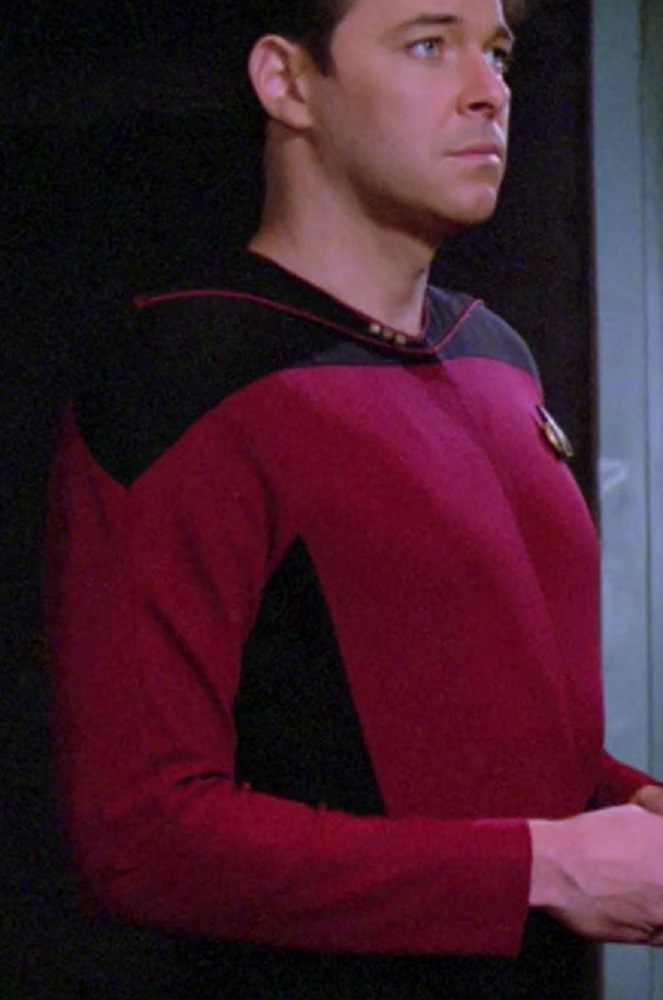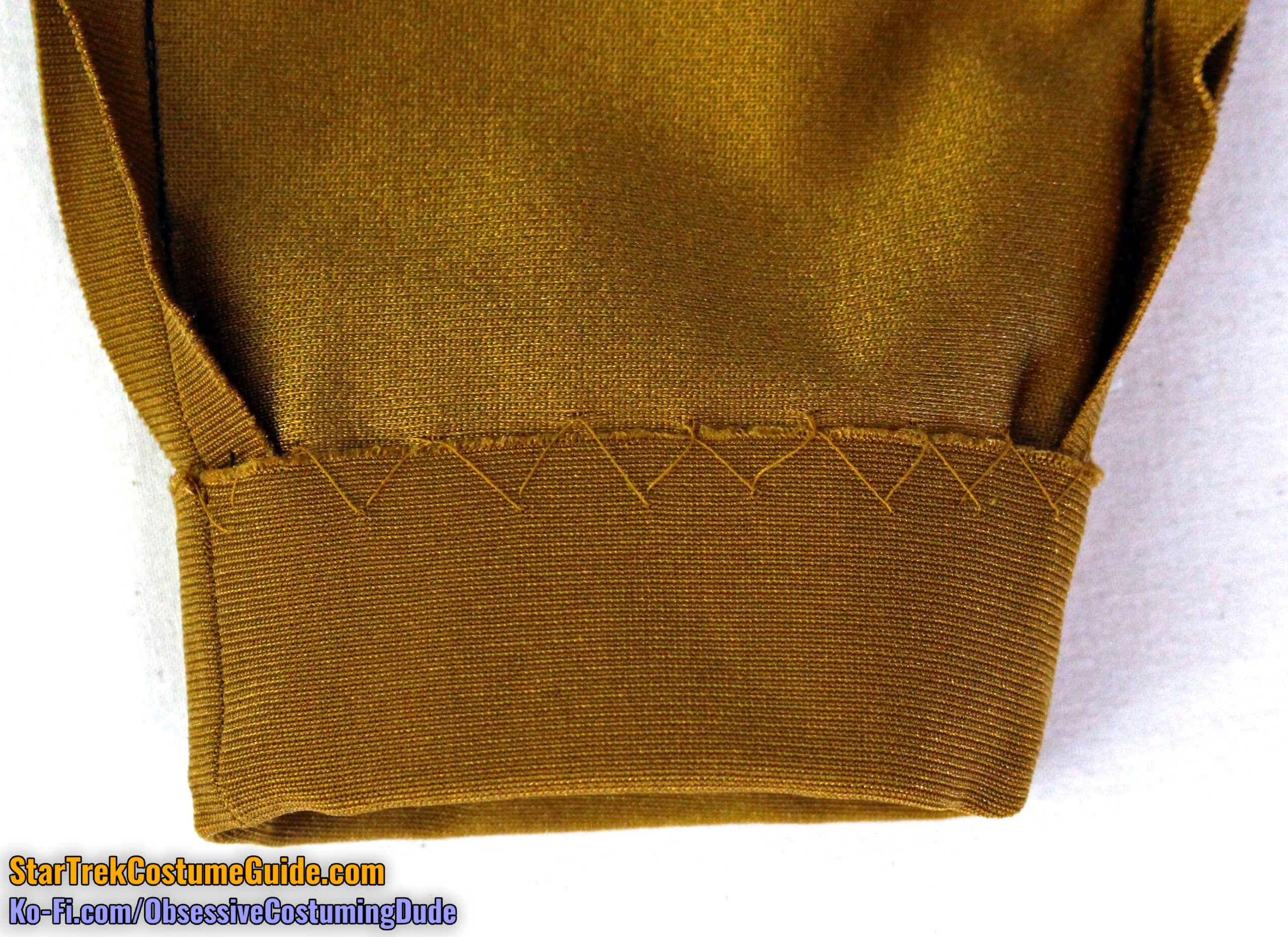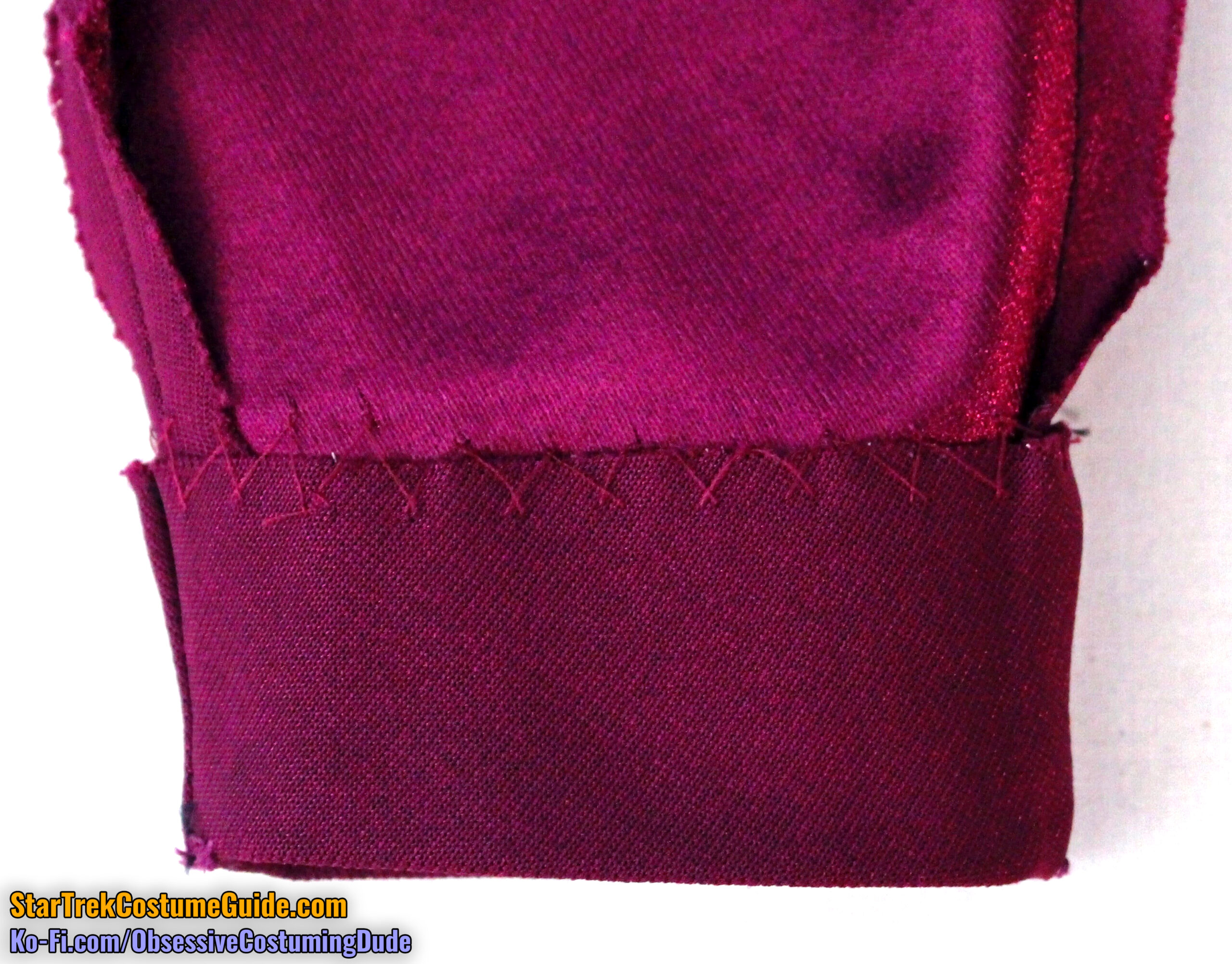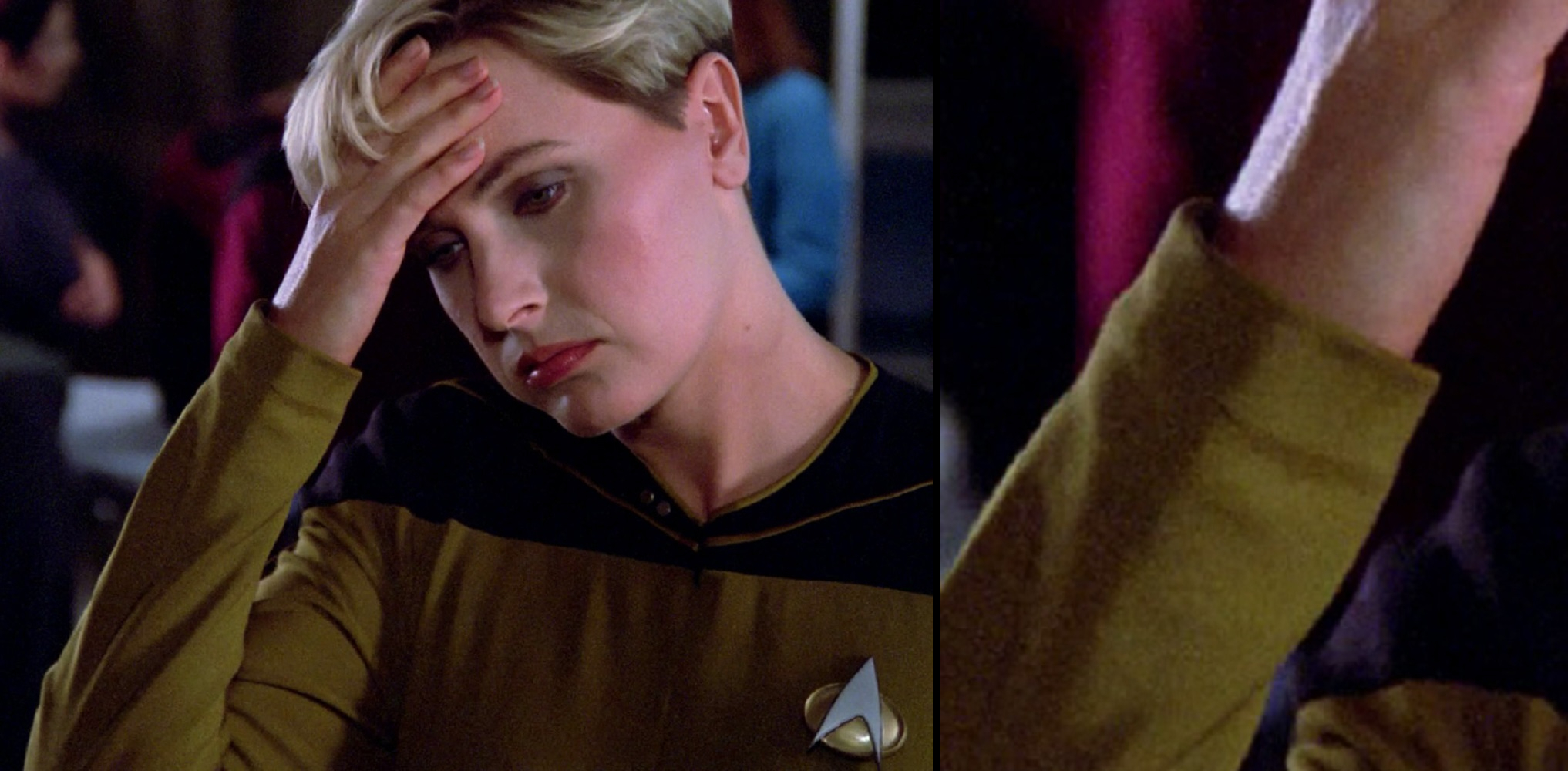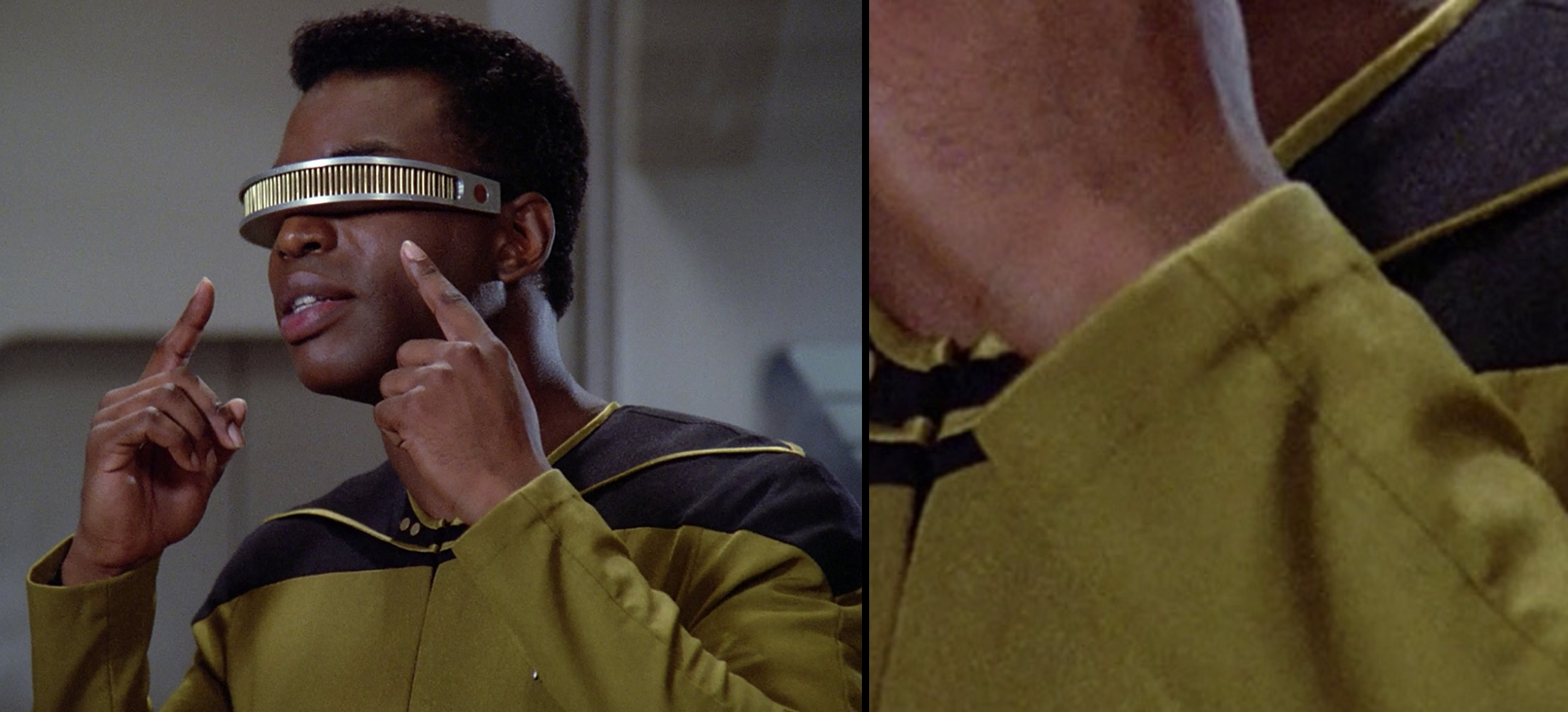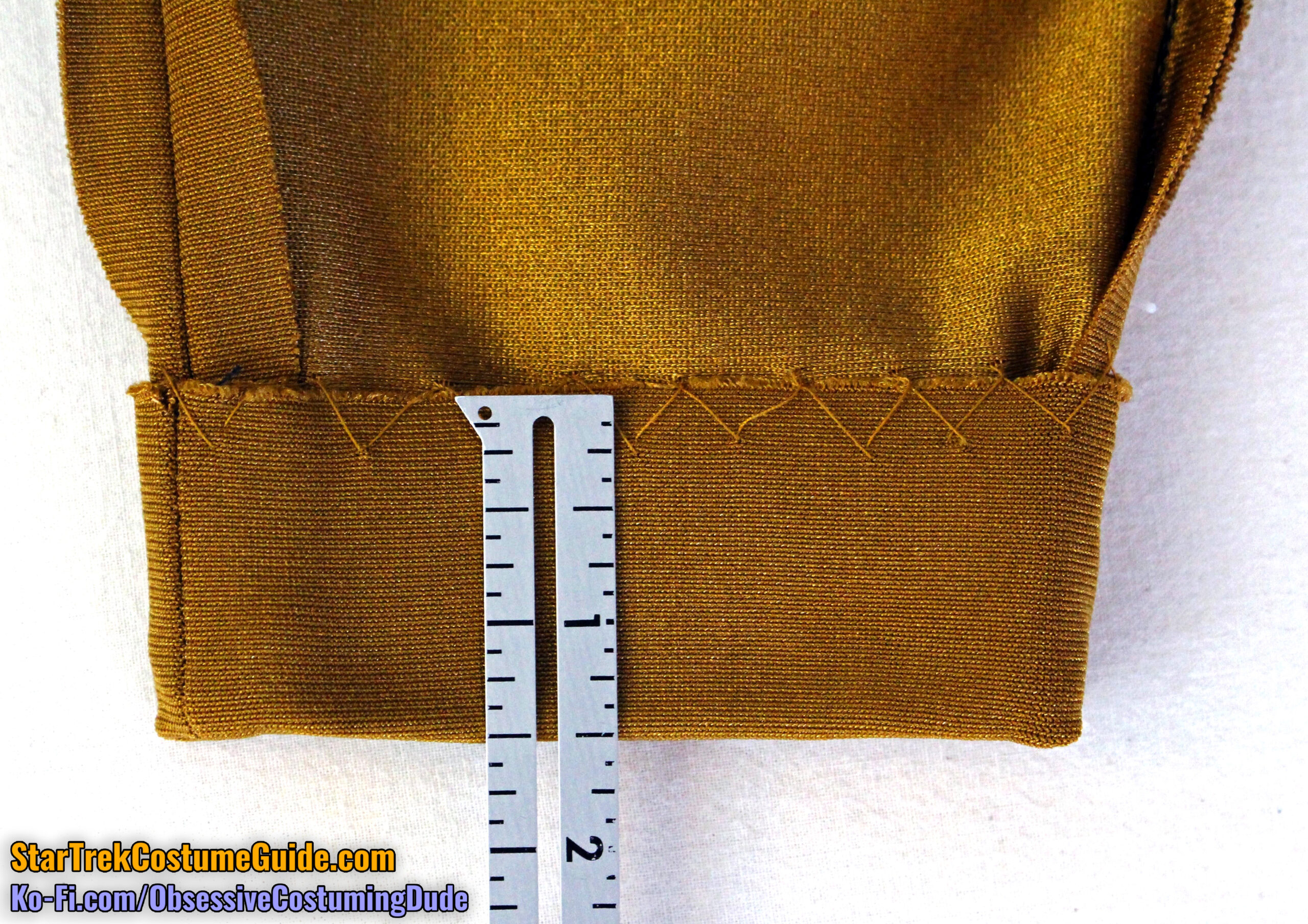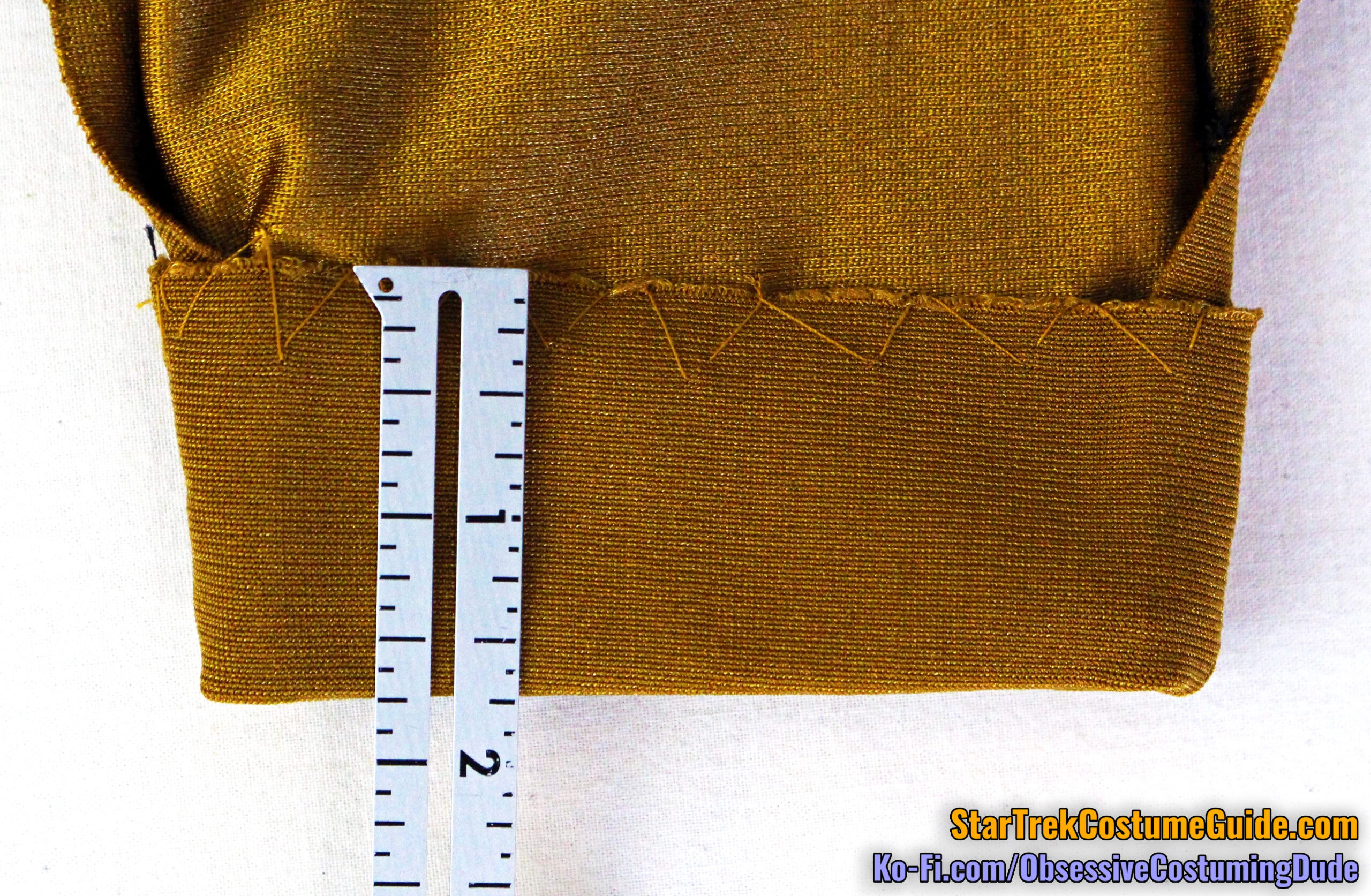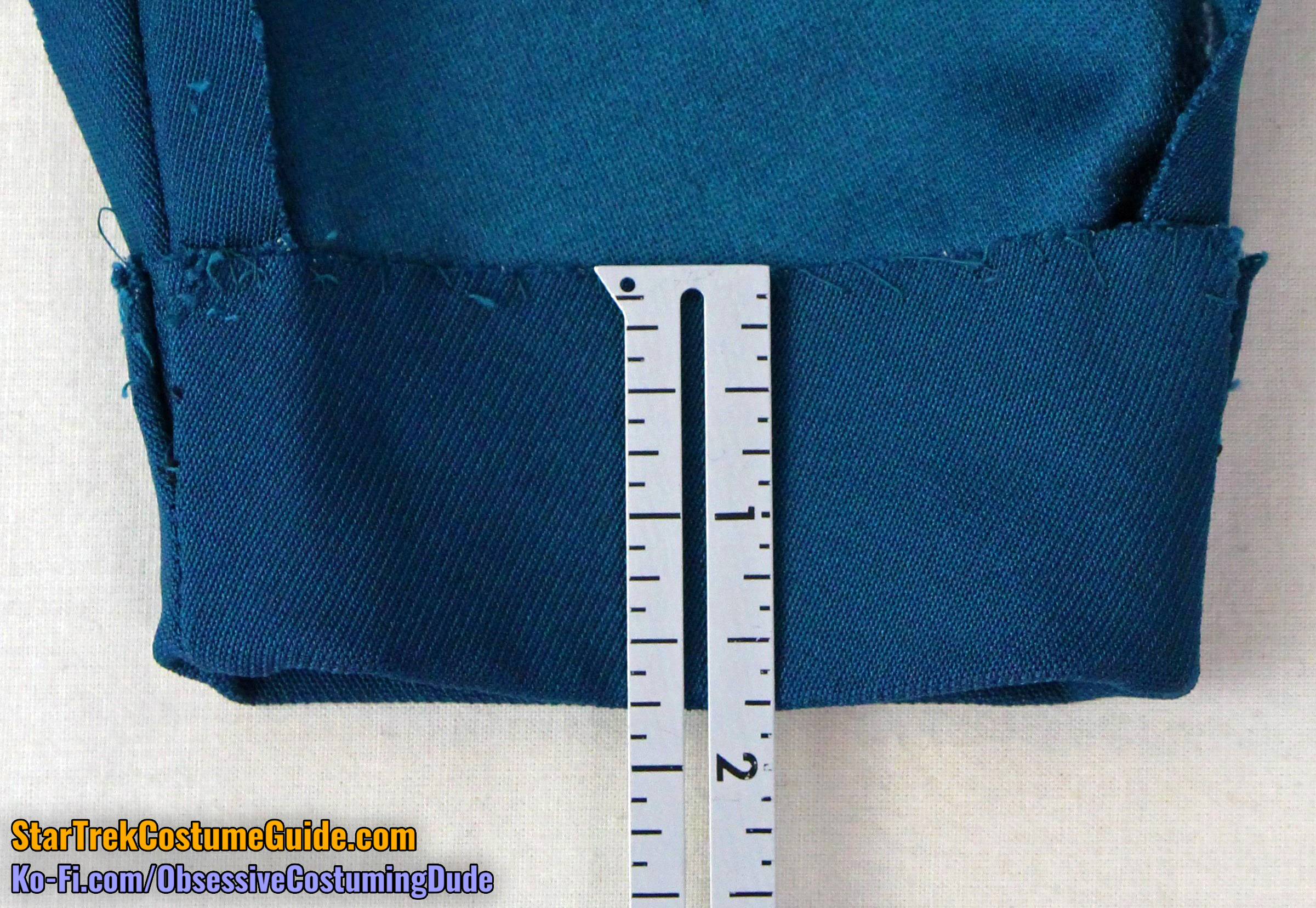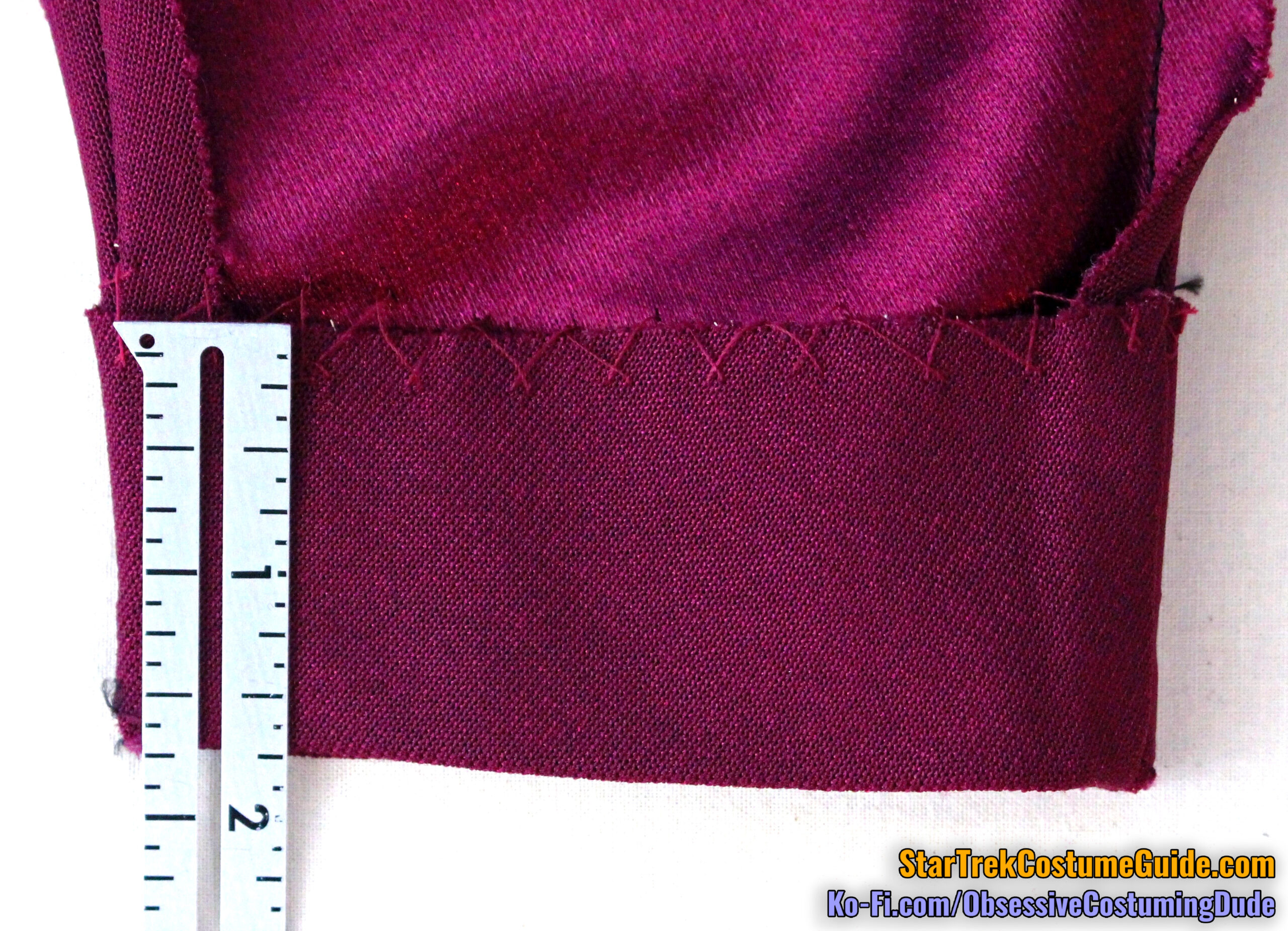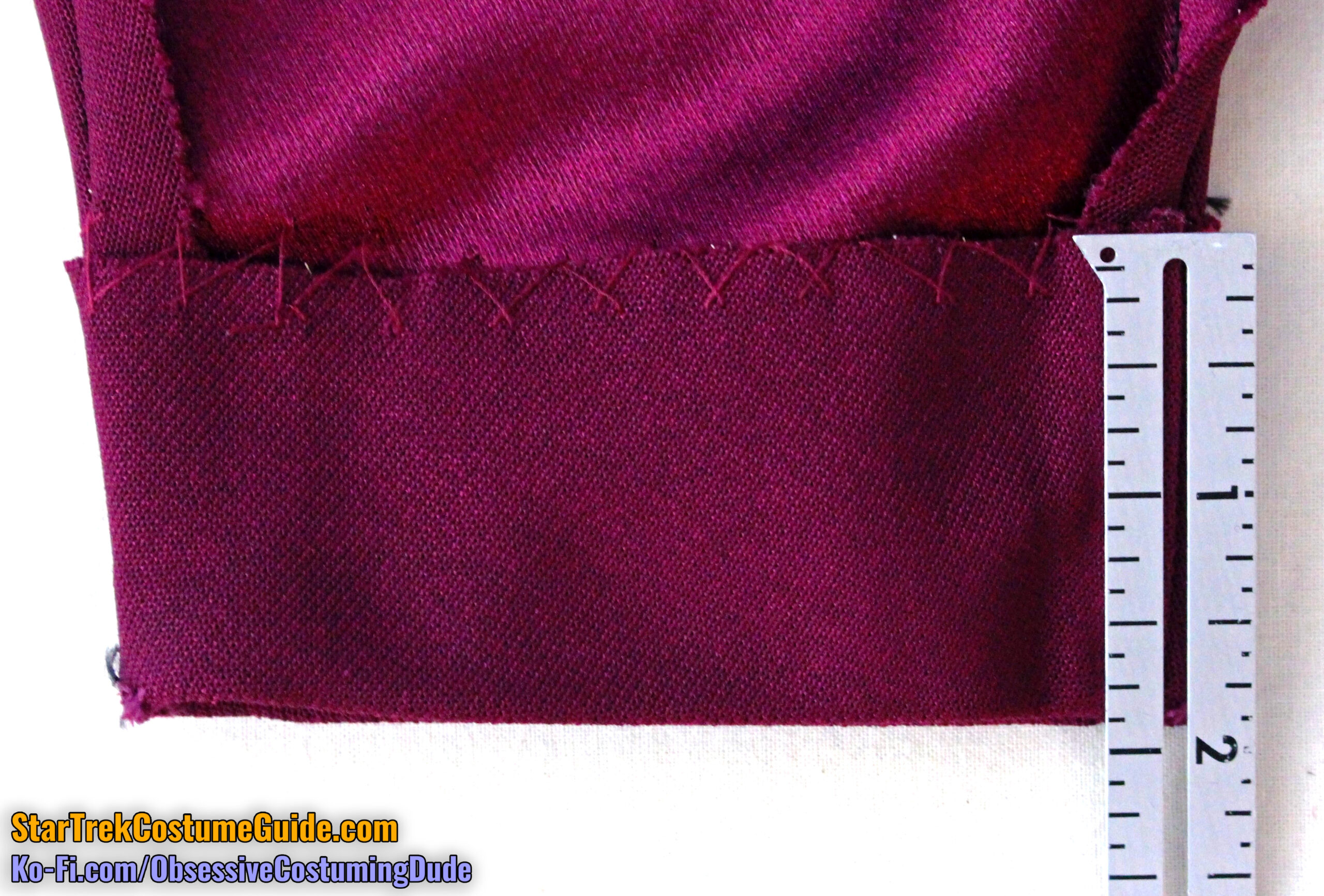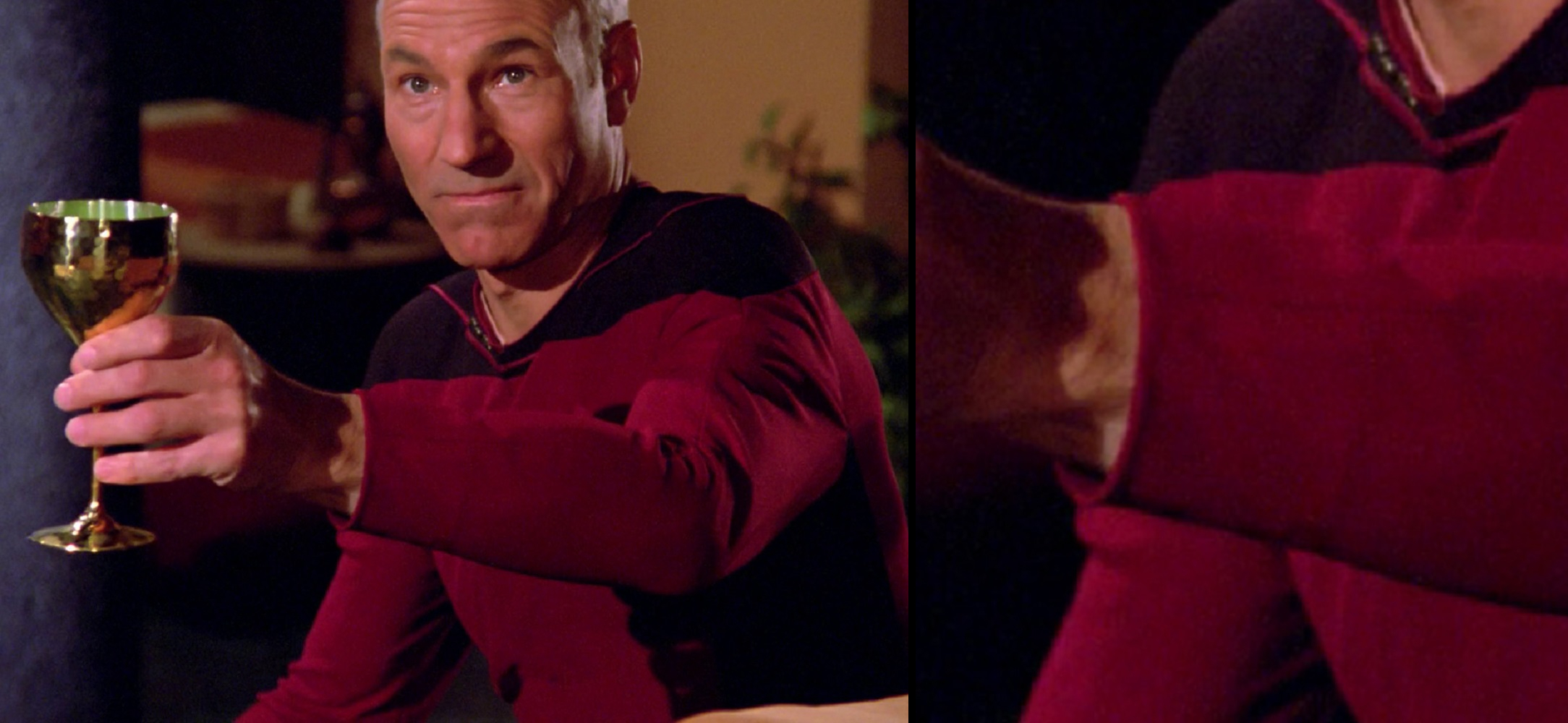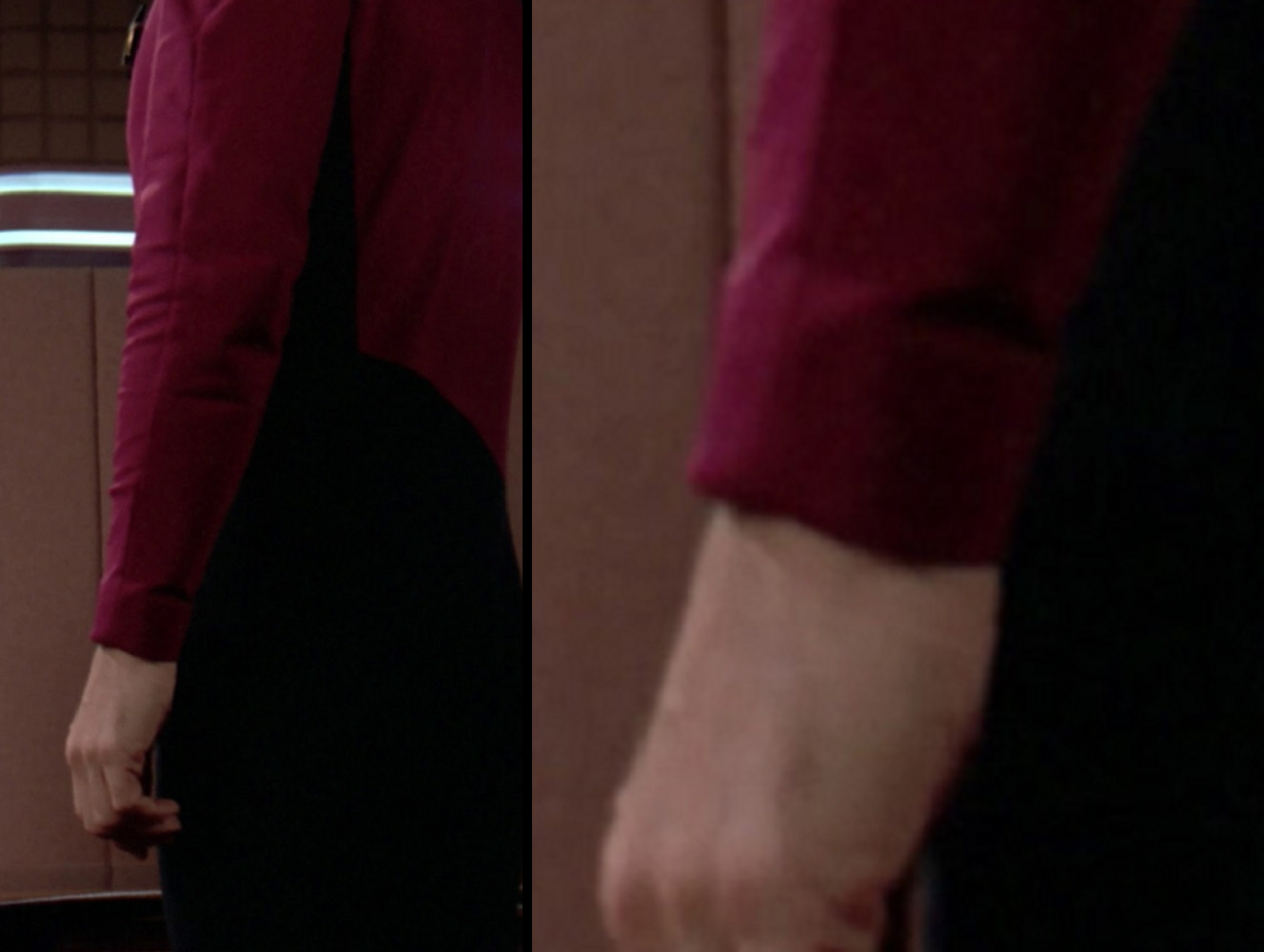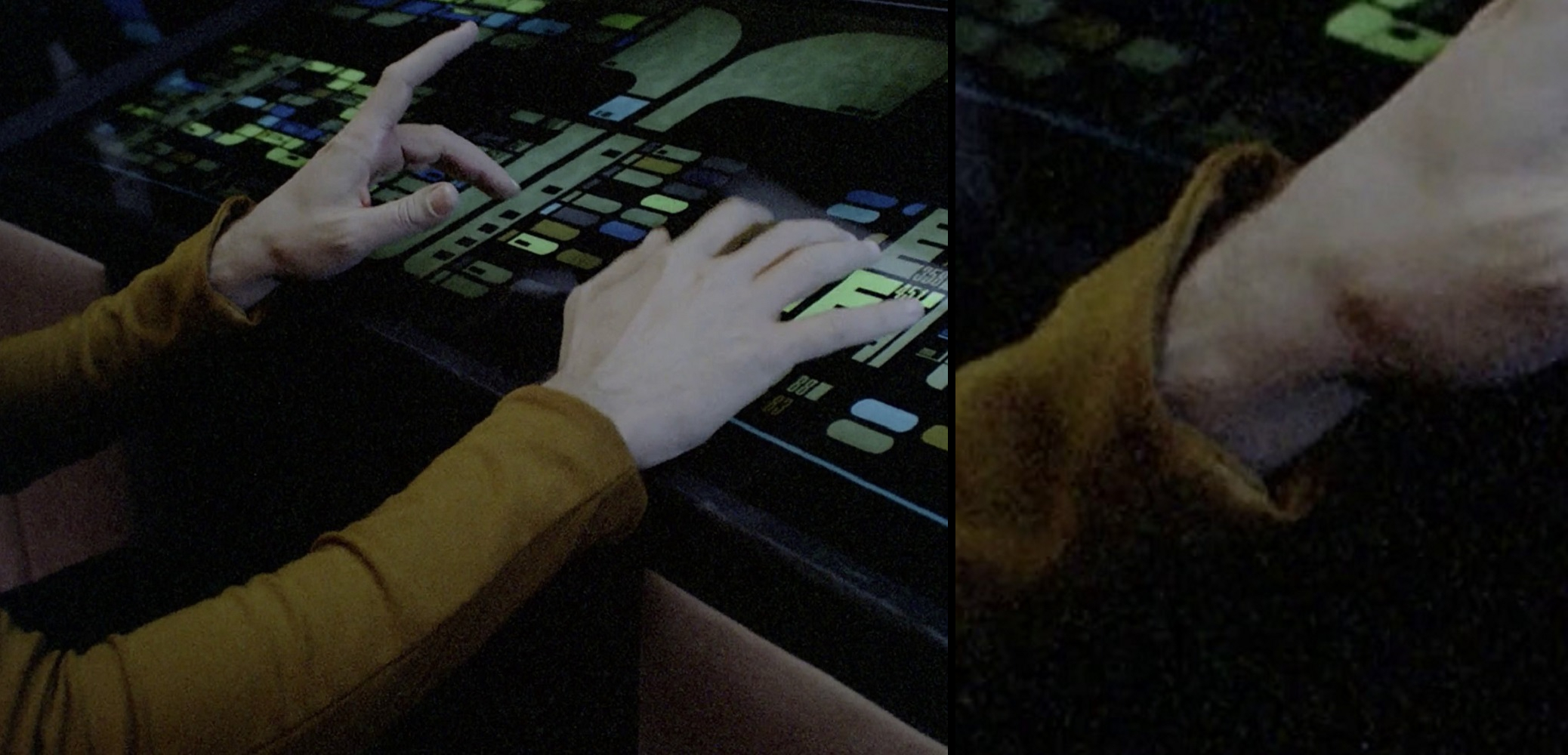Silhouette and Shoulder Padding
Although the TNG jumpsuits were otherwise unstructured, there were raglan-style shoulder pads to help smoother over the entire shoulder area.
In the TNG season 7 featurette, “Dressing the Future,” Marina Sirtis showed the audience a long (long) rack of Starfleet uniforms, with corresponding shoulder pads clipped to the sleeves.
Costume designer Robert Blackman also briefly discussed the early TNG jumpsuits, and in his example one can see the edge of the shoulder pad sticking out from underneath the neckline.
Although the screen-used TNG season 1 jumpsuits I examined didn’t include shoulder pads, each did have snaps sewn to the shoulder seam allowances – indicating removable shoulder pads.
I believe the season one shoulder pads to have been similar (perhaps identical) in construction to those on the screen-used TNG skant and screen-used season 1 admiral uniform I examined.
Of course, because humanoids come in all shapes and sizes, these shoulder pads probably varied in loft, determined by the wearer’s physique.
Some cast members (such as Brent Spiner) had particularly sloped shoulders, which would’ve required more padding to achieve a silhouette akin to the others’.
(And as you may recall, this also affected the slope of the lower yoke seams on his jumpsuits.)
Theiss his team did achieve a smooth yoke for Spiner/Data, but in my opinion Durinda Rice Wood improved on his overall silhouette in season two.
Other cast members had more “square” shoulders, which would’ve presumably needed less shoulder padding.
Geordi’s silhouette was particularly rounded, although I’m not sure how much of this was due to LeVar Burton’s physique, versus the cut/fit/padding of his uniforms.
Worf’s shoulders were the fullest and the most rounded that first season, though.
I’m not sure how much of that was due to Michael Dorn’s imposing build and how much was from his shoulder padding, but the combined result gave him a silhouette that makes me think of Samurai Jack.
As with so many other elements of these uniforms, the specific fit around the shoulders – and corresponding padding – evolved over the course of the season, particularly with Captain Picard’s uniforms.
Observe below how early in the season his jumpsuits were tight around the shoulders, but as the season progressed, his uniforms grew looser around the shoulders with more padding underneath to fill out the extra space.
However, as I learned while drafting my own TNG jumpsuit sewing patterns, this unusual yoke/sleeve paneling required precise patterning for the jumpsuit shoulders to drape smoothly. (I can personally attest to how challenging this can be to achieve.)
If the slopes of the shoulder seams are off even a little, the result is a “warbly” yoke that pinches and puckers over the shoulders – an unsightly effect unfortunately prevalent on some of Worf’s uniforms:
Several of Captain Picard’s uniforms were also somewhat poorly fit over the shoulders, although not to the extent Worf’s were.
Toward the end of the season, though, some of his jumpsuit yokes were noticeably more misshapen over the shoulders.
A couple of Commander Riker’s uniforms weren’t quite perfectly fitted, either.
Although to be fair, the dark black fabric usually helps hide minor draping imperfections, but when brightly lit from above, no yoke would look flawless …
A couple of Tasha’s early jumpsuits pulled a little around the neck – another unfortunate symptom of improperly-patterned shoulder seams.
Dr. Selar’s jumpsuit had some considerable pulling around the neck, although I believe this was because she may have been wearing a recycled Dr. Crusher uniform.
As I mentioned earlier, Gates McFadden had fairly broad shoulders, so with a wearer who didn’t fill those out, the jumpsuit shoulders simply yielded to gravity, pulling the fabric as it did so.
If the costume department had this much difficulty properly fitting the main cast, it should come as no surprise that Dr. Selar wasn’t the only guest character to wear a uniform with poorly-fitted shoulders.
Of course, even if the uniform was perfectly patterned and padded, the ideal effect of a perfect smooth yoke/shoulder area was immediately undone whenever the wearer reached, leaned, hunched, or really did anything with their arms other than stand in a relaxed position.
Upper Front Armscye
The black side panels didn’t extend all the way up the armscye to the yoke, on either the front or back of the jumpsuit; the upper corners of the side panels were separated from the bottom edges of the yoke by several inches of division-colored fabric across the armscye.
On the screen-used Worf TNG jumpsuit I examined, the upper front armscye seam measured about 4” on the left front, but it was closer to 4 ¼” on the right front.
This appears to be consistent with what we saw of his uniforms over season one.
As best I could tell, approximately 4” appeared to be standard for the male cast members – at least, at first.
As with other elements of these uniforms, this area began to inconsistently evolve after the first few episodes.
Data’s upper front armscye appears to have remained consistent over the rest of the season.
A few episodes into the show, Captain Picard’s upper front armscye seam tightened up a little; observe that the upper corner of the side panel and the bottom of the yoke were noticeably closer.
Both styles would be used throughout the remainder of the season, although this was at least partially due to some of the earlier uniforms seeming to rotate back into production use toward the last stretch of episodes.
Commander Riker’s uniforms followed a similar pattern and timeframe to Captain Picard’s, with his upper front armscye noticeably shortening around the same point:
But again, the earlier (deeper) upper front armscyes continued to be used as well, likely for the same reason.
Here are a couple side-by-side comparisons, to more easily show the difference:
Geordi’s seems to have consistently been the earlier, deeper style for most of the season.
Supporting characters’ and extras’ uniforms tended to have the earlier, deeper armscyes – although that may have simply been because they were recycled earlier uniforms.
On the screen-used Tasha Yar TNG jumpsuit I examined, the upper front armscye seam was just under 2 ½” on the right front, but it measured just under 2 ¼” on the left front.
On the screen-used Dr. Crusher TNG jumpsuit I examined, the upper front armscye seam was in the same range, about 2 ⅜” on both sides.
That 2 ¼” to 2 ½” range again appears consistent with the women’s uniforms we saw throughout season one.
Upper Back Armscye
The upper side back armscyes were even deeper than the front.
On screen-used Worf TNG jumpsuit I examined the upper back armscye measured about 4 ½”.
The women’s upper back armscyes were again a bit smaller – just under 2 ¼” on the screen-used Tasha Yar TNG jumpsuit I examined, but closer to 4” on the screen-used Dr. Crusher TNG jumpsuit.
This was consistent with the uniforms we saw in the show, although I was unable to determine if they likewise tightened over the course of the season.
Lower Armscye (Underarm)
Despite their otherwise-nearly-skintight fit, the early TNG jumpsuit armholes were quite deep – particularly noticeable when a character put their hands on their hips or leaned on something.
The deep armholes were particularly evident when a character raised their arm(s) and/or reached for something.
Armscye Fit
Personally, I find these deep armholes a curious choice for an otherwise “sprayed-on-clothing” aesthetic, but I think it’s safe to say these uniforms were (at least originally) intended to drape flat across the armscye/sleeve area.
Here’s a side-by-side comparison between a well-fitted sleeve/armscye, and an ill-fitting one:
Here’s a side-by-side comparison between a well-fitted sleeve/armscye, and an ill-fitting one:
Here’s a side-by-side comparison between a well-fitted sleeve/armscye, and an ill-fitting one:
My interpretation of this is that Theiss and his team were attempting to find a compromise between his ideal (skin-tight, smooth) aesthetic, balanced against wearability (e.g. the actors’ comfort) and functionality of the uniform.
A similar (albeit more subtle) effect could occasionally be observed on other cast members.
Sleeve Seams
The TNG jumpsuit sleeves were comprised of two pieces, although not the “traditional” two-piece sleeves commonly seen on suit jackets, blazers, etc.
Instead, the two seams were along the outermost and innermost sides of the sleeve, forming front and back sleeve panels.
The outer sleeve seam aligned with the yoke’s shoulder seam and extended all the way down to the hem.
This seam extended all the way down to the hem as well.
Sleeve Grain
At least some of the early TNG jumpsuit sleeves were cut on the same grain as the jumpsuit body; observe the horizontal jumbo spandex “weave” on the sleeves:
However, other early TNG jumpsuit sleeves were cut on a strong diagonal (but not the true bias), including two of the screen-used uniforms I examined.
The diagonal sleeve grain was sometimes observable in the actual show, too.
I don’t know how prevalent these diagonally-cut sleeves were, or which grain direction Theiss regarded as the “ideal.” If there was a determining factor, it doesn’t seem to have been gender, division color, size, or rank. (It’s also possible he changed his mind at some point.)
As to why some sleeves were cut on the diagonal, my only theory is that in lieu of four-way stretch spandex, the diagonally-cut sleeves had more “give” to them and provided the wearer with a wider range of movement.
(I don’t think it was to be more economical with the fabric yardage when cutting, because in my experience the diagonally-oriented sleeves actually require slightly more fabric yardage than vertically-cut ones.)
For what it’s worth, my TNG jumpsuit sewing patterns include grain lines for both orientations. 🙂
Sleeve Fit
The previous Tasha Yar examples notwithstanding, the TNG jumpsuit sleeves were usually fairly tight – including at least some of Tasha’s.
There was very little wearing ease at the bottom of the TNG jumpsuit sleeves – at least at first.
Observe how tight they usually were around the wrists.
Curiously, some of the women’s jumpsuit sleeves – or at least Tasha’s – seemed to be noticeably looser than the men’s around the wrists.
Toward the end of the season, though, it looks like some of the men’s sleeves had widened a bit around the wrists – although whether that was intentional or simply because they’d stretched out over the course of the season, I couldn’t say.
Sleeve Hem
Like the pant legs, the sleeve hem allowance was simply pressed upward and hand-sewn into place – although this hem was sewn with division-colored thread.
And again like the pant legs, the specific hem allowance varied among the cast.
Some jumpsuit sleeves appeared to have an inch or less of hem allowance.
On the screen-used Tasha Yar TNG jumpsuit I examined, the hem allowance was slightly uneven, ranging from about 1 ½” to 1 ¾”.
On the screen-used Dr. Crusher TNG jumpsuit I examined, the hem allowance was consistently 1 ¾”.
And like Tasha’s, the screen-used Worf TNG jumpsuit I examined, the sleeve hem was slightly uneven, ranging from about 1 ¾” to 1 ⅞”.
Other jumpsuit sleeves appeared to have hem allowance more in the 2” range.
At least one of Data’s jumpsuit sleeves had separate hem facings, although I believe this method to have only been used as a last resort when the cut sleeves weren’t long enough to properly hem.



